megacity
description: a very large city, typically with a population exceeding 10 million people.
303 results

The Human City: Urbanism for the Rest of Us
by
Joel Kotkin
Published 11 Apr 2016
Its rise has been so recent and quick that the Asia Society has labeled it “a city without a history.”20 India matches Japan with three megacities, all growing much faster than any city in the high-income world. The population of Delhi, the world’s third-largest city, expanded 40 percent over the past decade; Mumbai, almost 20 percent; and Kolkata (Calcutta) roughly 10 percent, a relatively low rate for a city in a developing country. And there are likely to be more megacities of this kind in the future.21 By 2025, the ranks of megacities in poor countries seem certain to expand. United Nations growth projections to 202522 suggest nine more megacities could emerge by 2030, including Chennai, Bangalore, Hyderabad, Ahmedabad (all in India), Ho Chi Minh City (Vietnam), Bogotá (Colombia), Johannesburg-East Rand (South Africa), Luanda (Angola), and Hangzhou (China).23 SIZE IS NOT ENOUGH Conventional wisdom suggests that these dense urban areas are the key to creating prosperity and a better life for the population of developing countries.
…
. ——— (2012, November 21). “What is a Half-Urban World”, New Geography, http://www.newgeography.com/content/003249-what-a-half-urban-world. ——— (2015, January 27). “World Megacities: Densities Fall as they become Larger,” New Geography, http://www.newgeography.com/content/004835-world-megacities-densities-fall-they-become-larger. ——— “World Megacities: Growing & Becoming Less Dense,” New Geography, http://www.newgeography.com/content/004823-megacities-growing-and-getting-less-dense. COX, Wendell and PAVLETICH, Hugh. (2014). “11th Annual Demographia International Housing Affordability Survey: 2015,” Demographia, http://www.demographia.com/dhi.pdf.
…
Together, these two regions, which are now rapidly urbanizing, will account for some 96 percent of the world’s population growth.3 According to UN projections, India’s urban population will increase by nearly 250 million in 20 years—an even greater increase than what is projected for rapidly urbanizing China.4 Driven by these demographic forces, the growth of megacities like Mumbai—urban regions with over 10 million residents5—poses new and often enormous challenges for the urban future. Even as they demonstrate the enormous appeal of city life, these new megacities also represent an enormous break in urban history in two critical ways: their unprecedented size and their relative lack of the kind of economic base that drove urban development in Europe, America, and more recently, eastern Asia. No city in the 19th or 20th century was nearly as large, or grew in countries as poor, as those we see today. Today’s megacities, first of all, reflect a profound shift in urban scale.

Numbers Don't Lie: 71 Stories to Help Us Understand the Modern World
by
Vaclav Smil
Published 4 May 2021
The growth of megacities offers a perfect illustration of receding Western influence and the rise of Asia. In 1900, 9 of the world’s 10 largest cities were in Europe and the United States. In 1950 New York and Tokyo were the only megacities, and the third, Mexico City, was added in 1975. But by the century’s end the list had grown to 18 megacities, and by 2020 it reached 35 with a total of more than half a billion inhabitants. Tokyo (with more people than Canada, and generating economic product equal to about half of the German total) remains at the top, and 20 out of the 35 megacities (nearly 60 percent) are in Asia.
…
Cities are places of countless synergies and investment opportunities, and they offer superior educations and rewarding careers. This is why many smaller cities—much like the surrounding countryside—are losing population, but megacities keep growing. Ranking them by size is not straightforward, because assorted administrative boundaries yield different numbers than when the megacities are considered as functional units. Tokyo, the world’s largest megacity, has eight different jurisdictional or statistical definitions, from the 23 wards of the old city, with fewer than 10 million people, to the National Capital Region area with nearly 45 million.
…
None of them ranks high on all major quality-of-life criteria: Tokyo is clean, its residential areas not far from the city center are remarkably quiet, public transportation is exemplary, and the crime rate is very low; but housing is cramped and daily commutes are long and taxing. Chinese megacities—all built by migrants from rural areas who (until recently) were denied the right to live there—have become displays of new architecture and shiny public projects, but they have poor air and water quality and their inhabitants are now incessantly monitored for the slightest social infractions. In contrast, few rules prevail in African megacities, and Lagos and Kinshasa are the very embodiments of disorganization, squalor, and environmental decay. But all that makes little difference; each megacity—no matter if it is Tokyo (with the largest number of starred restaurants), New York (with the highest share of population born abroad), or Rio de Janeiro (with a murder rate approaching 40 per 100,000)—continues to attract people.
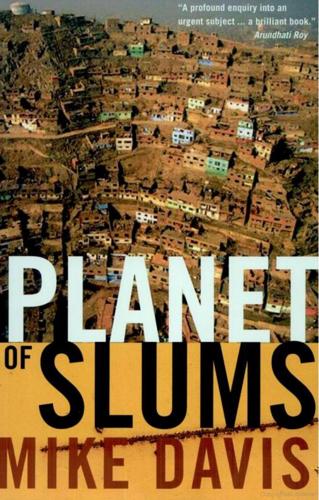
Planet of Slums
by
Mike Davis
Published 1 Mar 2006
A famous instance of such a "polarization reversal" is Mexico City, widely predicted to achieve a population of 25 million during the 1990s (the current population is between 19 and 22 million). See Yue-man Yeung, "Geography in an Age of Mega-Cities," International Social Sciences journal 151 (1997), p. 93. 7 Financial Times, 27 July 2004; David Drakakis-Smith, Third World Cities, 2nd ed., London 2000. SNOITIia R Figure 2 8 Third World Megacities (population in millions) 1950 ' 2004 Mexico City 2.9 22.1 Seoul-Injon 1.0 21.9 (New York 12.3 21.9) 19.9 Sao Paulo 2.4 Mumbai (Bombay) 2.9 19.1 Delhi 1.4 18.6 Jakarta 1.5 16.0 Dhaka 0.4 15.9 Kolkata (Calcutta) 4.4 15.1 Cairo 2.4 15.1 Manila 1.5 14.3 Karachi 1.0 13.5 Lagos 0.3 13.4 Shanghai 5.3 13.2 Buenos Aires 4.6 12.6 Rio de Janeiro 3.0 11.9 Tehran 1.0 11.5 Istanbul 1.1 11.1 Beijing 3.9 10.8 Krung Thep (Bangkok) 1.4 9.1 Gauteng (Witwatersrand) 1.2 9.0 Kinshasa/Brazzaville 0.2 8.9 Lima 0.6 8.2 Bogota 0.7 8.0 8 Composite of UN-HABITAT Urban Indicators Database (2002); Thomas Brinkhoff "The Principal Agglomerations of the World", www.citypopulation. de/World.html (May 2004).
…
In his study of the Mumbai region, Alain Jacquemin emphasizes the confiscation of local power by urban development authorities, whose role is to build modern infrastructures that allow the wealthier parts of poor cities to plug themselves — and themselves alone — into the world cybereconomy. These authorities, he writes, "have further undermined the 56 Oberai, Population Growth, Employment and Poverty in Third-World Mega-Cities, p. 169. 57 Nick Devas, "Can City Governments in the South Deliver for the Poor?," International Development and Planning Review 25:1 (2003), pp. 6—7. 58 Oberai, Population Growth, Employment and Poverty in Third-World Mega-C'ities, pp. 165, 171. tasks and functions of democratically elected municipal governments already weakened by the loss of sectoral responsibilities and financial and human resources to special ad hoc authorities.
…
Myriad old cars, beat-up buses, and superannuated trucks asphyxiate urban areas with their deadly exhaust, while the dirty two-stroke engines that power small vehicles emit ten times as much fine particulate matter as modern cars. According to a recent study, foul air is most deadly in the sprawling megacities of Mexico (300 bad ozone smog days per year), Sao Paulo, Delhi, and Beijing.41 Breathing Mumbai's air, meanwhile, is the 36 El Arabi, "Urban Growth and Environmental Degradation," pp. 392-94; and Oberai, Population Groivth, Employment and Poverty in Third World Mega-Cities, p. 16 (accident rate). 37 Glenn McKenzie, "Psychiatric Tests Required for Traffic Offenders," RedNova, 20 June 2003; and Pell, "Urban Housing and Services in Anglophone West Africa," p. 178. 38 Hindustan Times, 1 February 2004. 39 WHO, "Road Safety Is No Accident!"
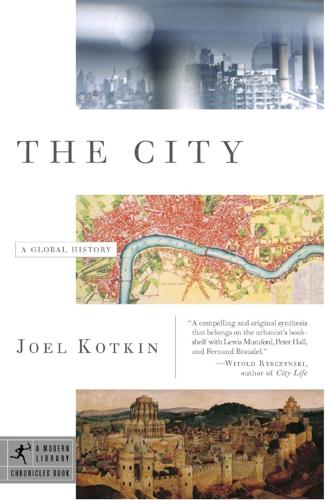
The City: A Global History
by
Joel Kotkin
Published 1 Jan 2005
These swelling ranks of city dwellers face a vastly changed environment in which even the most powerful urban area must compete not only with other large places, but with an ever wider array of smaller cities, suburbs, and towns.2 THE CRISIS OF THE MEGACITY These shifts will be felt most acutely among the sprawling megacities of the developing world. In the past, size allowed cities to dominate the economies of their hinterlands. Today, the very girth of the most populous megacities—Mexico City, Cairo, Lagos, Mumbai, Kolkata, São Paulo, Jakarta, Manila—is often more a burden than an advantage.3 In some places, these urban giants have been losing out to smaller, better-managed, and less socially beleaguered settlements.
…
Table of Contents Title Page Dedication Praise PREFACE Modern Library Chronicles CHRONOLOGY Acknowledgments INTRODUCTION: - PLACES SACRED, SAFE, AND BUSY PART ONE - ORIGINS: THE RISE OF CITIES IN A GLOBAL CONTEXT CHAPTER ONE - SACRED ORIGINS MESOPOTAMIA EGYPT INDIA AND CHINA THE AMERICAS CHAPTER TWO - PROJECTIONS OF POWER—THE RISE OF THE IMPERIAL CITY SARGON: THE CREATOR OF THE IMPERIAL CITY BABYLON: THE FIRST URBAN COLOSSUS SECURITY AND URBAN COLLAPSE CHINA: THE ENDURING URBAN ORDER CHAPTER THREE - THE FIRST COMMERCIAL CAPITALS THE RISE OF PHOENICIA “WHOSE MERCHANTS ARE PRINCES” THE ROOTS OF PHOENICIAN DECLINE PART TWO - CLASSICAL CITIES IN EUROPE CHAPTER FOUR - THE GREEK ACHIEVEMENT CRETE MYCENAE: GREEK PRECURSOR THE CLASSICAL POLIS THE GREEK DIASPORA THE TWILIGHT OF THE CITY-STATES ALEXANDER AND THE HELLENISTIC CITY ALEXANDRIA: THE FIRST GREAT COSMOPOLIS UNRAVELING OF ALEXANDER’S VISION CHAPTER FIVE - ROME—THE FIRST MEGACITY “THE VICTORIOUS ROMANS” THE MAKING OF THE IMPERIAL CITY ROME: THE ARCHETYPAL MEGACITY “A CONFEDERATION OF URBAN CELLS” CHAPTER SIX - THE ECLIPSE OF THE CLASSICAL CITY THE CITY OF MAN VERSUS THE CITY OF GOD “ALL IS NEGLECT” CONSTANTINOPLE: URBAN SURVIVOR PART THREE - THE ORIENTAL EPOCH CHAPTER SEVEN - THE ISLAMIC ARCHIPELAGO MUHAMMAD’S URBAN VISION THE NATURE OF THE ISLAMIC CITY DAMASCUS: PARADISE ON EARTH BAGHDAD: “CROSSROADS OF THE WORLD” CAIRO’S GOLDEN AGE FROM NORTH AFRICA TO THE BORDERS OF CHINA INDIA’S ISLAMIC REBIRTH CHAPTER EIGHT - CITIES OF THE MIDDLE KINGDOM URBAN TRADITION IN AN AGRICULTURAL SOCIETY “THE ASTRAL CENTER OF THE UNIVERSAL ORDER” “GREAT CLOUDS IN THE SKY” CHAPTER NINE - OPPORTUNITY LOST THE PROBLEM OF PROSPERITY THE LIMITS OF AUTOCRACY THE SUPPRESSION OF ENTREPRENEURS EUROPE’S REEMERGENCE PART FOUR - WESTERN CITIES REASSERT THEIR PRIMACY CHAPTER TEN - EUROPE’S URBAN RENAISSANCE THE SACRED ROOTS OF THE RENAISSANCE THE RETURN OF THE CITY-STATES VENICE: “JEWEL BOX OF THE WORLD” FLORENCE AND THE EMERGENCE OF MODERN URBAN POLITICS IMPERIAL CITIES OVERCOME THE CITY-STATES THE IBERIAN ASCENDANCY PARIS: THE ULTIMATE EUROPEAN CAPITAL CITY CHAPTER ELEVEN - CITIES OF MAMMON EUROPE’S EXPANDING URBAN ORDER THE FAILURE OF THE IBERIAN EMPIRES THE EMERGENCE OF THE NORTH AMSTERDAM: THE FIRST GREAT MODERN COMMERCIAL CITY LONDON THE WORLD CAPITALIST CAPITAL PART FIVE - THE INDUSTRIAL CITY CHAPTER TWELVE - THE ANGLO -AMERICAN URBAN REVOLUTION LANCASHIRE: ORIGINATOR OF THE REVOLUTION “WITH COGS TYRANNIC” “HERO OF THE AGE” URBANIZING THE “GARDEN OF THE WORLD” NEW YORK’S NINETEENTH-CENTURY INDUSTRIAL AGE EMERGENCE CITIES OF THE HEARTLAND THE CHALLENGE OF “PROGRESS” NEW YORK: THE ULTIMATE VERTICAL CITY “LIKE A WITCH AT THE GATE OF THE COUNTRY” AMERICA GOES HIGH-RISE CHAPTER THIRTEEN - INDUSTRIALISM AND ITS DISCONTENTS THE GLOBAL IMPLICATIONS OF INDUSTRIALISM JAPAN’S SUDDEN INDUSTRIALIZATION “THE IRON MONSTER” RECONSTRUCTING JAPANESE CITIES THE NAZI EXPERIMENT RUSSIA: THE THIRD ALTERNATIVE THE ROAD TO REVOLUTION THE SOVIET SYSTEM “SHARPENING OUR AXES” COMMUNISM’S URBAN LEGACY PART SIX - THE MODERN METROPOLIS CHAPTER FOURTEEN - THE SEARCH FOR A “BETTER CITY” THE PROMISE OF LOS ANGELES A SHORT HISTORY OF SUBURBIA “ONIONS FIFTY TO A ROPE” A NEW URBAN VISION “A SIX ROOM HOUSE WITH A BIG YARD” CHAPTER FIFTEEN - SUBURBIA TRIUMPHANT THE “SLEEP OF DEATH” SKYSCRAPERS AFLAME “GRAND ACHIEVEMENTS” AND THEIR LIMITATIONS THE FINAL AGONIES OF THE INDUSTRIAL CITY THE “UNIVERSAL ASPIRATION” ARGENTINA AND AUSTRALIA BRITAIN AND THE MODERN “GARDEN CITY” SUBURBANIZATION IN WESTERN EUROPE THE GHETTOIZATION OF EUROPEAN CITIES EVEN IN PARIS JAPANESE “GARDEN CITIES” CHAPTER SIXTEEN - THE POSTCOLONIAL DILEMMA THE COLONIAL LEGACY “THE URBANIZATION OF THE COUNTRYSIDE” “EUROPEAN MICROCOSMS” “THE HALCYON DAYS” A FATEFUL BREAK IN URBAN HISTORY THE RISE OF SQUATTER CITIES AFRICA’S URBAN TRAGEDY “SOCIAL TIME BOMBS” CHAPTER SEVENTEEN - “QUEENS OF THE FURTHER EAST” INDIA’S URBAN REVOLUTION EAST ASIA BREAKS THE MOLD SEOUL’S EMERGENCE BRITAIN’S SUCCESSFUL OFFSPRING SINGAPORE: ASIA’S MODEL CITY THE REVITALIZATION OF CONFUCIAN DISCOURSE CHINESE CITIES UNDER MAOISM THE FOUR MODERNIZATIONS AND THE REVIVAL OF CHINESE CITIES SHANGHAI’S RESURGENCE SUBURBIA COMES TO EAST ASIA CONCLUSION - THE URBAN FUTURE NOTES SUGGESTED READING THE MODERN LIBRARY EDITORIAL BOARD About the Author ALSO BY JOEL KOTKIN Copyright Page TO MY BROTHER, MARK Praise for THE CITY “Provocative . . .
…
Corruption and palace intrigue increasingly undercut economic progress and weakened the authority of the rulers. Less than two centuries after Alexander’s conquest, his Mesopotamian possessions fell to the Parthians. The Greek Indian colonies dropped even more quickly outside the orbit of the Hellenistic world.34 CHAPTER FIVE ROME—THE FIRST MEGACITY Titus Petronius, the son of wealthy Romans and courtier to Emperor Nero, spent his time carousing through the back alleys of the city’s streets, dallying with the prostitutes and loose aristocratic ladies with equal enthusiasm. Later forced to commit suicide because of his alleged complicity in a palace intrigue, Petronius left behind remarkable descriptions and insights into this city and the empire that it had created.1 By his time, Rome had grown to a scale not to be seen again till modern times—a massive, sprawling capital city, a warren of marketplaces, drinking places, temples, crowded tenements, and aristocratic villas.
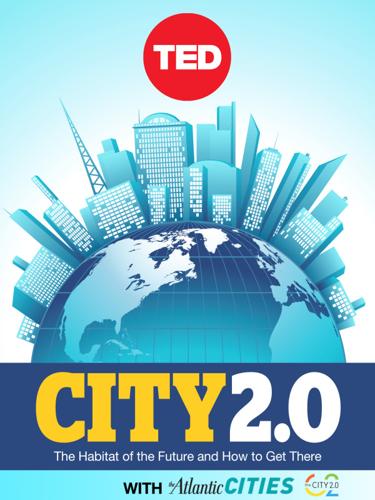
City 2.0: The Habitat of the Future and How to Get There
by
Ted Books
Published 20 Feb 2013
At a sister site at the California Institute of Technology (Caltech), researchers slice the clouds with a shimmering green laser, trap air samples in glass flasks, and stare at the sun with a massive mirrored contraption that looks like God’s own microscope. These folks are the foot soldiers in an ambitious, interagency initiative called the Megacities Carbon Project. They’ve been probing LA’s airspace for more than a year, with the help of big-name sponsors like the National Institute of Standards and Technology, the Keck Institute for Space Studies, and the California Air Resources Board. If all goes well, by 2015 the Megacities crew and colleagues working on smaller cities such as Indianapolis and Boston will have pinned down a slippery piece of climate science: an empirical measurement of a city’s carbon footprint.
…
Officials want to cut emissions 35 percent from 1990 levels by 2030, and to do that they’re going to need a good verification system. The Megacities project “will show that there is a significant impact in what we do,” says Romel Pascual, Los Angeles’ deputy mayor for the environment. “When we talk about LA being green, people roll their eyes. They won’t believe it, right? That’s because of the history of LA. But when you look at the numbers of us hitting major milestones, LA is near the top.” Target practice One morning in January 2013, I pile into a Toyota Prius with Duren and Megacities colleagues Stan Sander and Eric Kort and take a spin up the rock-strewn roads of Mount Wilson.
…
He expects the satellite to take some 3,000 samples over a city in just a few seconds. Polluter profiling With this bulging grab bag of equipment, the Megacities team hopes to sculpt a model of LA’s emissions so detailed that they’ll be able to pull out individual signatures, such as exactly what and how much is spewing from rush-hour traffic or the port system or large landfills. Once they get an emissions baseline for Los Angeles, they hope to assist other cities in starting their own climate-reading networks. Duren’s team is already coordinating with French scientists running a Megacities sister project in Paris. (Researchers had to move a Picarro on the Eiffel Tower because its readings were skewed by steamy tourist lung vapors.)
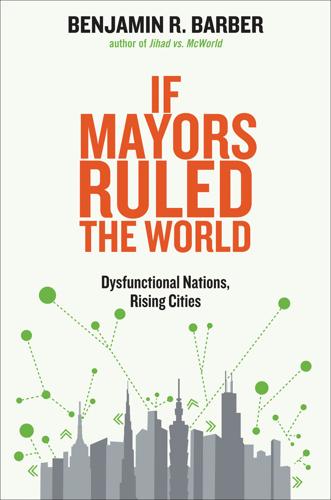
If Mayors Ruled the World: Dysfunctional Nations, Rising Cities
by
Benjamin R. Barber
Published 5 Nov 2013
Mayors Against Illegal Guns, the Megacities Foundation, CityNet, and City Protocol—among many others. These clumsily named and seemingly dull bureaucratic constructions are in fact birthing an exciting new cosmopolis whose activities and ambitions hold the secret to fashioning the global processes and institutions that states have failed to create. Many of these networks were created by or contributed to by a few global leaders such as Stuttgart’s Wolfgang Schuster, Barcelona’s Xavier Trias, and New York City’s hyperactive Michael Bloomberg. With or without authoritative underwriting, networked cities and megacities are likely to determine whether democracy—perhaps even civilization itself—survives in the coming decades, when the primary challenge will remain how to overcome the violent conflict within and between states, and how to address the cataclysmic economic and ecological anarchy and the inequalities and injustices that the absence of democratic global governance occasions.
…
In the half century since the eminent sociologist wrote, the city has taken still another leap forward: capital cities underwritten by megarhetoric have been morphing into networked megacities of tens of millions, intersecting with other cities to comprise today’s burgeoning megalopolises and megaregions in which an increasing majority of the earth’s population now dwells. Tribes still dominate certain cultures, but even in Africa megacity conurbations have emerged, representing territorially immense urban juggernauts that encompass populations of twenty million or more. Typical is Africa’s Lagos-Ibadan-Cotonou region, where Lagos alone is projected to reach twenty-five million by 2025, making it the world’s third-largest city after Mumbai and Tokyo, in a Nigeria that has six cities over a million and another dozen with 500,000 to a million—all of them growing rapidly.18 Then there is Kinshasa-Brazzaville, two interconnected cities separated by a river in rival “Congo” states.
…
Cities are in any case undergoing constant change, as Daniel Brook’s fascinating “history of future cities” makes evident.5 Smaller “middleweight” cities are today outperforming many megacities in terms of overall household growth (see Table 2). According to McKinsey, Jakarta does better in this department than London, Jinan better than New York, and Taipei better than Los Angeles. Lagos actually outperforms twenty considerably larger megacities. Table 2: Top Cities in Terms of Absolute Household Growth, 2011–2025 (projected in terms of million households) Historically, too, the only constant has been change.

Connectography: Mapping the Future of Global Civilization
by
Parag Khanna
Published 18 Apr 2016
Cities are the truly timeless global form. Cities in the twenty-first century are mankind’s most profound infrastructure; they are the human technology most visible from space, growing from villages to towns to counties to megacities to super-corridors stretching hundreds of kilometers. In 1950, the world had only two megacities of populations larger than 10 million: Tokyo and New York City. By 2025, there will be at least forty such megacities. The population of the greater Mexico City region is larger than that of Australia, as is that of Chongqing, a collection of connected urban enclaves spanning an area the size of Austria. Cities that were once hundreds of kilometers apart have now effectively fused into massive urban archipelagoes, the largest of which is Japan’s Taiheiyo Belt that encompasses two-thirds of Japan’s population in the Tokyo-Nagoya-Osaka megalopolis.
…
The London-based property developer Stanhope recently contracted with China’s Minsheng Investment and Advanced Business Park to overhaul East London’s Royal Albert Dock near the City Airport as a tax-free bridgehead for Chinese and Asian businesses. Beyond wealthy countries, far more countries have megacities that need Chinese-style thinking. Population growth and urbanization have taken cities to a scale never imagined. The largest cities of the West—New York, London, Moscow—have less than half the population of the developing world’s megacities such as Mumbai and Jakarta. And with the exception of Mexico City and São Paulo in Latin America and Lagos and Cairo in Africa, all of the world’s most populous metropolises are in Asia. Megacities are metabolic ecosystems constantly circulating demographic flows; daytime populations can be millions more than in the evenings.
…
Cities that were once hundreds of kilometers apart have now effectively fused into massive urban archipelagoes, the largest of which is Japan’s Taiheiyo Belt that encompasses two-thirds of Japan’s population in the Tokyo-Nagoya-Osaka megalopolis. China’s Pearl River delta, Greater São Paulo, and Mumbai-Pune are also becoming more integrated through infrastructure. At least a dozen such megacity corridors have emerged already. China is in the process of reorganizing itself around two dozen giant megacity clusters of up to 100 million citizens each.*3 And yet by 2030, the second-largest city in the world behind Tokyo is expected not to be in China but to be Manila. America’s rising multi-city clusters are as significant as any of these, even if their populations are smaller.

Grand Transitions: How the Modern World Was Made
by
Vaclav Smil
Published 2 Mar 2021
As with all large cities, there has been a strong eastward shift in their global distribution: New York, the largest Western city, is now only in tenth place; Moscow, the largest European city, ranks 22nd; and by 2050 there will be no Western city among the top 20, as urbanization will be an overwhelmingly Asian phenomenon with an increasing share of megacities in sub-Saharan Africa, the region whose population will increase faster than anywhere else. The potential for substantial additions to this list is best indicated by the fact that in 2016 the world also had 45 cities with populations between five and ten million people. All megacities—be they such old metropolitan areas as London or Tokyo or such new agglomerations as Karachi or Lagos—share all the usual urban challenges but on more daunting scales. This scale also means that megacities face megarisks when the cities are subject to such natural hazards as earthquakes, hurricanes (typhoons), floods, tsunami, and volcanic eruption or to terrorist attacks, and that insurers would face unprecedented payouts in the aftermath of such catastrophes (Allianz 2015).
…
This scale also means that megacities face megarisks when the cities are subject to such natural hazards as earthquakes, hurricanes (typhoons), floods, tsunami, and volcanic eruption or to terrorist attacks, and that insurers would face unprecedented payouts in the aftermath of such catastrophes (Allianz 2015). A leading reinsurance company concluded that many megacities are “virtually predestined to suffer major natural disasters” (Munich Re 2004). In addition, there are emerging concerns about protracted heat waves and about fires in skyscrapers. Moreover, natural catastrophes that would severely affect or temporarily disable those megacities that have critical roles in the integrated global economy would have worldwide consequences for economic growth, as would the necessity of cutting off some megacities from mass-scale air travel in order to minimize the risks of spreading a new potentially pandemic infection.
…
Beijing is extraordinarily polluted, and the entire city has been sinking because of its overuse of ground water drawn from deep aquifers. And no large city has come up with a satisfactory solution for the growing challenge of solid waste disposal. All of these problems reach their most intractable impacts in megacities. Megacities These exceptionally large agglomerations are defined as cities with more than 10 million people, but their actual areas and population totals vary widely, depending on which criteria are used. New York City ranges from 8.5 million in five boroughs to about 20 million in the New York Metropolitan Statistical Area to nearly 25 million in the Combined Statistical Area.
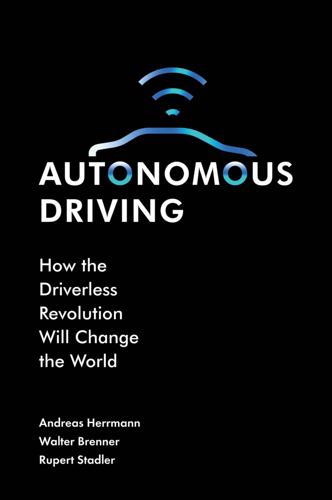
Autonomous Driving: How the Driverless Revolution Will Change the World
by
Andreas Herrmann
,
Walter Brenner
and
Rupert Stadler
Published 25 Mar 2018
There are many dramatic traffic conditions with miles of traffic jams and poor air quality, especially in the megacities of Southeast Asia and Latin America. Rapidly implementing autonomous and electric cars in emerging countries could improve road safety and protect the environment. People in these markets are very open to new technologies. China and India now have a higher market penetration of smartphones than western Europe. In and around the megacities, roads and telecommunication networks are often newer and better than in developed countries. A service network also has to be created, however, which is a particular challenge in emerging countries. CHAPTER 37 URBAN DEVELOPMENT MEGACITIES The year 2007 served as a historic marker in the history of human settlement.
…
What impact will it have on companies in the automotive and technology industry? Can environmental protection be improved? What will the economic consequences of Autonomous Driving 20 this technology be? How will legal and regulatory conditions have to be changed? How can traffic be organised with this technology, especially in megacities? Can autonomous driving improve a nation’s prosperity and competitiveness? These questions and others have to be answered so that autonomous mobility can be used for the benefit of people, companies, nations, cities and the environment. But before that, we need to look at some interesting facts about human driving, so that the significance of autonomous mobility and its social and economic consequences can be assessed.
…
The diversity on offer is enormous, which is why many manufacturers would have to produce millions of cars before any two are identical in every detail. Driving a car can also be tedious and boring, when one considers the frequency and duration of traffic jams that occur every day, especially in megacities such as São Paulo, Cairo, Delhi, Beijing or Mumbai. People have had to adapt their lives to the traffic situation and many hundreds of kilometres of traffic jams every day. In Mexico City for example, the average commuter spends 220 hours in traffic jams each year, and there is no improvement in sight; on the contrary, the traffic situation is worsening permanently.

City: A Guidebook for the Urban Age
by
P. D. Smith
Published 19 Jun 2012
Downtown Seoul, South Korea. The district of Iztapalapa to the east of Mexico City. Afterword In the middle of the twentieth century, New York became the world’s first megacity, a metropolitan area with ten million or more inhabitants. By 2007, according to the UN, there were nineteen megacities, a figure that is expected to rise to at least twenty-six by 2025. Today’s cities and megacities are spreading out to form even larger urban systems. The term ‘Megalopolis’ was first used in 1961 to describe the sprawling city region that comprises Boston, New York, Philadelphia and Washington–Baltimore.
…
On the other are the slum cities of the poor, the ragpickers and the recyclers. Urbanisation may have reduced absolute poverty, but the urban poor are increasing steadily. There are well over a billion slum dwellers in the world today – nearly one in six of the population.69 The age of the megacities is also that of the megaslum. Out of the top twenty megacities, fifteen are in developing countries. Today, one in three city dwellers is living in a slum.70 Of course, there have always been slums in cities. The Romans complained about the ramshackle shacks that appeared on the outskirts of their cities and which were rebuilt almost as quickly as they were demolished.
…
Indeed, in the developed world four out of ten cities actually experienced a decline in population during the 1990s. In Europe and North America, where more than 70 per cent of people already live in cities, the growth in urban population is expected to be modest in the coming years and almost entirely due to migration from poorer countries. Europe is the only region without a megacity. There are now some twenty-two megacities – those with populations of more than ten million people. These unprecedented concentrations of humanity are home to 5 per cent of the world’s population. Considerably more people live in metropolitan Mumbai than in Norway and Sweden combined. With a population of some twenty million people, greater São Paulo has just one million people less than the whole of Australia.

Growth: From Microorganisms to Megacities
by
Vaclav Smil
Published 23 Sep 2019
The growth of Lagos exemplifies a key trend within the urbanization trend, as an ever-higher share of the urban population lives in cities that do not seem to end, encompassing areas equivalent to, or larger than, many small countries and with populations larger than those of most EU countries. These aggregations of humanity are known as megacities, while the extended urban area whose growth has eventually resulted in several merging cities is best described as an agglomeration or, pace Geddes (1915), as a conurbation. The Boston-Washington corridor in the northeastern US was the first, and is still perhaps the most famous, example of a megalopolis (Gottmann 1961). Megacities The usual dividing line between a large city and a megacity is put at 10 million inhabitants. But wherever that divide might be, megacities must be studied as functional units, not according to any official administrative delimitations.
…
But, fortunately, Tokyo is exceptional in that it has avoided or solved other problems common in megacities, some in truly exceptional ways: its criminal rate is lower than in any other megacity, its air (significantly polluted until the late 1970s) is relatively clean thanks to highly efficient vehicles, imports of LNG and generation of nuclear electricity, and the density, frequency, and reliability of its subway system and of its rail links with other cities is outstanding. In the global ranking, the city is followed by New Delhi, Shanghai, Mumbai, São Paulo, Beijing, and Mexico City. In 2015, 24 of the 31 megacities were in low-income countries (the global “South,” as the UN calls it), with Asia having 18, China six, and India five.
…
Given their size, it is not at all surprising that the annual growth of most megacities was slower than that of the whole urban population, which slowed down to about 2% between 2010 and 2015 (from more than 3% in the early 1950s) and ranged from just 0.76% in affluent countries to almost 4% in the poorest nations. Karachi, New Delhi, Dhaka, Guangzhou, and Lagos have been the fastest growing megacities since the 1990s, all in excess of 3%/year, followed by Mumbai, Istanbul, Beijing, and Manila (Canton 2011). The UN expects 10 additional megacities by 2030, six in Asia (including Pakistani Lahore, and Hyderabad and Ahmedabad in India), three in Africa (Johannesburg, Dar es Salaam, Luanda), and Colombia’s Bogotá.
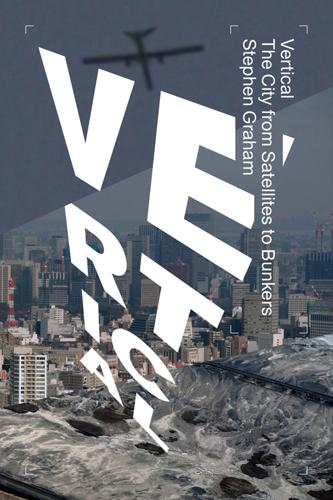
Vertical: The City From Satellites to Bunkers
by
Stephen Graham
Published 8 Nov 2016
In building up a cultural obsession with ‘austerity chic’ and firing up demand among an affluent, design-conscious clientele for the tower’s now-private apartments, the image is used to sell off a great achievement of the socially universal welfare state. It therefore presides over what architecture critic Owen Hatherley calls ‘the literal destruction of the thing it claims to love.’82 Global South Megacities: ‘Heavenly Enclaves Surrounded by Slums’ Further startling examples of the elite domination of contemporary high-rise housing can be drawn from megacities in the Global South. The marketing of such towers is especially striking in Mumbai. ‘Reach for it!’ shouts the real estate billboard surrounding the new Indiabulls Sky Tower complex being built at the end of the new Bandra–Worli Sea Link sky bridge express way as it enters the city core.
…
In the second example, at least 74 people were killed when construction waste accumulated over two years on a hillside slipped after heavy rain to bury thirty-three buildings in the sprawling megacity of Shenzen, China. One of the first such examples recorded by landslide experts, the Shenzen case demonstrates the risks involved in vertically shifting vast chunks of geology in the often corrupt construction of urban megaprojects. Officials responsible for the waste pile were quickly arrested. Landfill to Landfill The relationship between skyscraper and pit has taken on new implications. – Lucy Lippard Disasters like landfill slides involving the movement of waste ground in and around the world’s megacities are obscured by an almost complete absence of media coverage; by contrast other movements of waste and rubble spark long periods of total media saturation.
…
Prosaic lines of parked cars took the place earmarked for ranks of futuristic helicopters. Kinetic Elites Take to the Skies Such controversies failed to kill off helicopter urbanism completely, however. Instead, urban helicopter mobility and ‘direct arrival’ were progressively reinvented as privileges of hyper-individualised super-elites within sprawling megacities. Indeed, elite helicopter travel has emerged to be perhaps the ultimate symbol of the secession of the tiny numbers of überwealthy from the constraints, limits and struggles that surround urban life on the earth’s surface. Through it, the ‘upper’ classes assert monopolistic access to the third dimension: the ‘Z-access’ of verticality, a domain denied to all but the select few.

The Rise of the Network Society
by
Manuel Castells
Published 31 Aug 1996
There follows the separation between symbolic meaning, location of functions, and the social appropriation of space in the metropolitan area. This is the trend underlying the most important transformation of urban forms worldwide, with particular force in the newly industrializing areas: the rise of mega-cities. Third millennium urbanization: mega-cities The new global economy and the emerging informational society have indeed a new spatial form, which develops in a variety of social and geographical contexts: mega-cities.70 Mega-cities are, certainly, very large agglomerations of human beings, all of them (13 in the United Nations classification) with over 10 million people in 1992 (see figure 6.4), and four of them projected to be well over 20 million in 2010.
…
The ecological dream of small, quasi-rural communes will be pushed away to countercultural marginality by the historical tide of mega-city development. This is because mega-cities are: centers of economic, technological, and social dynamism, in their countries and on a global scale; they are the actual development engines; their countries’ economic fate, be it the United States or China, depends on mega-cities’ performance, in spite of the small-town ideology still pervasive in both countries; centers of cultural and political innovation; connecting points to the global networks of every kind; the Internet cannot bypass mega-cities: it depends on the telecommunications and on the “telecommunicators” located in those centers.
…
They also function as magnets for their hinterlands; that is, the whole country or regional area where they are located. Mega-cities cannot be seen only in terms of their size, but as a function of their gravitational power toward major regions of the world. Thus, Hong Kong is not just its six million people, and Guangzhou is not just its six and a half million people: what is emerging is a mega-city of 40–50 million people, connecting Hong Kong, Shenzhen, Guangzhou, Zhuhai, Macau, and small towns in the Pearl River Delta, as I shall develop below. Mega-cities articulate the global economy, link up the informational networks, and concentrate the world’s power.

Cities Are Good for You: The Genius of the Metropolis
by
Leo Hollis
Published 31 Mar 2013
It is the abundance of these weak ties that brings people to the city, for it is the intensity of these informal relationships that makes the city so special – and it is these weak ties that will hold the mega-city together. In his book Loneliness, evolutionary psychologist John Cacioppo proposes that we are hard-wired to be together and that a sense of loneliness is a warning sign, telling us to make more connections for improved chances of survival rather than an existential condition. As the mega-city grows around us we are going to have to adapt our connections and relationships accordingly, finding new ways of living together that benefit us all.
…
It is not only cities getting larger, but where they are, that will define their future shape. In 1950 there were only eighty-three cities that had a population exceeding 1 million; today there are over 460. Sixty years ago, there was only one mega-city, defined as an urban area containing more than 10 million people. In those days New York had a total population of 12 million, London just under 9 million and Tokyo, the third-largest city, accounted for 7 million. The development of new mega-cities was a sharp, millennial shift: in 1985, there were nine in all; this rose to nineteen in 2004, and today is estimated at twenty-five. By 2025 the number will have climbed to thirty-six.
…
India, a nation that its liberating founder Mahatma Gandhi claimed had its soul in the village, will, by 2030, be a country of sixty-eight cities of over 1 million, thirteen cities with over 4 million and six mega-cities with a population each of over 10 million, with the capital at New Delhi reaching 46 million, twice as large as the total population of Australia. What will these mega-cities feel like? In many ways, they have already arrived and one only needs to visit Mexico City or Nairobi to experience the impact of so many bodies crammed into one place together. Getting around Mumbai was a constant battle.
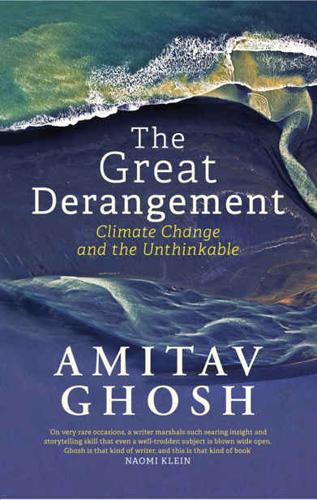
The Great Derangement: Climate Change and the Unthinkable
by
Amitav Ghosh
Published 16 Jan 2018
The Maharashtra government is also opening many unbuilt sea-facing areas, like the city’s old salt pans, to construction (see The Hindu’s Business Line of 22 August 2015: http://m.thehindubusinessline.com/news/national/salt-pan-lands-in-mumbai-to-be-used-for-development-projects/article7569641.ece). 66 corrugated iron: Carsten Butsch et al., ‘Risk Governance in the Megacity Mumbai/India’, 5. 66 Arabian Sea: Cf. C. W. B. Normand, Storm Tracks in the Arabian Sea, India Meteorological Department, 1926. I am grateful to Adam Sobel for this reference. 68 city as well: During the 2005 deluge, ‘The waterlogging lasted for over seven days in parts of the suburbs and the flood water level had risen by some feet in many built-up areas.’ B. Arunachalam, ‘Drainage Problems of Brihan Mumbai’, 3909. 68 illness and disease: See Carsten Butsch et al., ‘Risk Governance in the Megacity Mumbai/India’, 4. 68 40,000 beds: Cf. Municipal Corporation of Greater Mumbai’s City Development Plan, section on ‘Health’ (9.1; available here: http://www.mcgm.gov.in/irj/go/km/docs/documents/MCGM%20Department%20List/City%20Engineer/Deputy%20City%20Engineer%20(Planning%20and%20Design)/City%20Development%20Plan/Health.pdf). 69 urban limits: Aromar Revi, ‘Lessons from the Deluge’, 3912. 69 rising seas: Natalie Kopytko, ‘Uncertain Seas, Uncertain Future for Nuclear Power’, Bulletin of the Atomic Scientists 71, no. 2 (2015): 29–38. 69 ‘safety risks’: Ibid., 30–31. 70 models predict: ‘All the models are indicating an increase in mean annual rainfall as compared to the observed reference mean of 1936 mm, and the average of all the models in 2350 mm [by 2071–2099].’
…
The key concern here is that developers’ interests do not overpower “public interest”, that the rights of the poor are upheld; else displacement from one location will force them to relocate to another, often more risk-prone location’ (‘Lessons from the Deluge’, 3914). 71 threatened neighbourhoods: Climate Risks and Adaptation in Asian Coastal Megacities: A Synthesis Report, World Bank, 2010 (available at file:///C:/Users/chres/Desktop/Current/research/coastal_megacities_fullreport.pdf). The report includes a ward-by-ward listing of the areas of Kolkata that are most vulnerable to climate change (88). 74 ‘below this point’: http://www.nytimes.com/2011/04/21/world/asia/21stones.html. 75 with the ‘sublime’: Cf.
…
Whether such evacuations could be organized at all is an open question. Mumbai has been lucky not to have been hit by a major storm in more than a century; perhaps for that reason the possibility appears not to have been taken adequately into account in planning for disasters. Moreover, here, ‘as in most megacities, disaster management is focused on post-disaster response’. In Mumbai, disaster planning seems to have been guided largely by concerns about events that occur with little or no warning, like earthquakes and deluges: evacuations usually follow rather than precede disasters of this kind. With a cyclone, given a lead-up period of several days, it would not be logistically impossible to evacuate large parts of the city before the storm’s arrival: its rail and port facilities would certainly be able to move millions of people to safe locations on the mainland.

Cities Under Siege: The New Military Urbanism
by
Stephen Graham
Published 30 Oct 2009
The overwhelming majority of these will be in the burgeoning cities and megacities of Asia, Africa and Latin America. To be sure, many cities in developed nations will still be growing, but their growth will be dwarfed by urban explosion in the global South. As demographic, political, economic and perhaps technological centres of gravity emerge in the South, massive demographic and economic shifts will inexorably continue. As recently as 1980, thirteen of the world’s thirty biggest cities were in the ‘developed world’; by 2010, this number will have dwindled to eight. By 2050, it is likely that only a few of the top thirty megacities will be located in the erstwhile ‘developed’ nations (Figure 1.2). 1.2 World’s largest thirty cities in 1980, 1990, 2000 and (projected) 2010.
…
The simulations projected sites of massive urban wars involving US forces in 2015, complete with a range of imagined new US sensors, surveillance systems, and weapons geared specifically towards the kind of warfare that could unveil the ‘fog of war’ in a megacity. Opposition forces, programmed to fight autonomously within the virtualized megacity, were equipped with technologies projected to be available on the open market in 2015 – including their own robotic vehicles. As part of its mandate to ‘replicate real-world geography, structures and culturally relevant population behaviors’,56 Urban Resolve even simulated the daily rhythms of the virtualized Jakarta and Baghdad: At night the roads were quiet; during the weekday rush hours, traffic clogged the roads.
…
Examples here range from US Christian fundamentalists, through the British National Party to Austria’s Freedom Party, the French National Front and Italy’s Forza Italia. The fast-growing and sprawling cosmopolitan neighbourhoods of the West’s cities, meanwhile, are often cast by such groups in the same Orientalist terms as the mega-cities of the Global South, as places radically external to the vulnerable nation – territories every bit as foreign as Baghdad or Gaza. Paradoxically, however, the geographical imagination which underpins the new military urbanism tends to treat colonial frontiers and Western ‘homelands’ as fundamentally separate domains – two sides in a clash of civilizations, in Samuel Huntington’s incendiary and highly controversial hypothesis.10 This imaginative separation coexists uneasily with the ways in which the security, military and intelligence doctrines addressing both increasingly fuse together into a seamless whole.
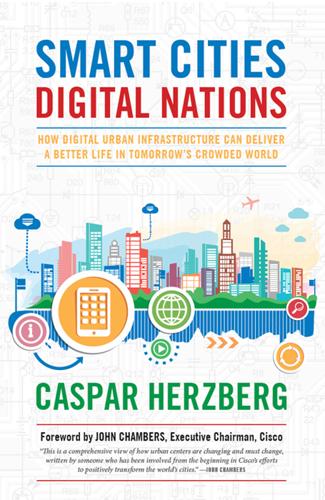
Smart Cities, Digital Nations
by
Caspar Herzberg
Published 13 Apr 2017
But it is important to note that the future likely does not belong primarily to the megacities (generally defined as cities with populations in excess of ten million). The McKinsey Global Institute notes that while we may expect six hundred cities to generate 60 percent of the global GDP into the foreseeable future, much of the growth will occur in cities that are quickly developing after years of backwater existence. These urban centers, with populations between 150,000 and one million, are forecast to generate economic activity at the expense of established megacities over the next decade. Some will become megacities in their own right, but many more will be characterized by less sprawl, poverty, and slum conditions.
…
So how can the smart city concept and the technology master planning approach described and tested in the previous chapters be used to tackle the ultimate brownfield challenge: centuries-old megacities like Cairo, Mexico City, and many more that have tens of millions of inhabitants and are indispensable to their nation’s economic growth and social peace. Smart city technology is not just a trillion-dollar industry; it is the key to tackle some of the most pressing challenges of the twenty-first century. Cairo is the epicenter of a nation that has been counted on as a pillar of relative stability in a volatile region. Among the top-tier crowded megacities, few can match this complex, fascinating place for sheer unpredictability.
…
The worst slums created in Western nations during the Industrial Revolution have been eradicated, but those oppressive conditions have been duplicated and extended in many developing nations. Meanwhile, developed cities are faced with the challenges of modernization as they attempt to combat congestion, develop better services for residents and businesses, conserve resources, and remain economically vital. There are more cities and megacities than at any point in history, and many more will rise in the coming decades. The world is faced with a choice. City development can progress in a manner that makes the most of new technologies and commits resources to upgrading old and obsolete features, or it can adopt technology in a haphazard, insecure manner that does little to com bat the grave population and environmental problems we face.

No Ordinary Disruption: The Four Global Forces Breaking All the Trends
by
Richard Dobbs
and
James Manyika
Published 12 May 2015
Focus on Cities and Urban Clusters, Not Regions or Countries Global consumption is experiencing an unprecedented shift in power toward emerging-market cities. The continued rise of megacities—familiar entities with populations of ten million or more, such as Shanghai, São Paulo, and Moscow—is driving this trend. But the truly dramatic consumption growth will come from middleweight cities such as Luanda, Harbin, Puebla, and Kumasi, four hundred or so of which will generate the GDP equivalent to the entire US economy by 2025.30 In China, the shift in the weight of consuming households from the megacities on the east coast to interior middleweight cities (populations of between two hundred thousand and ten million people) is already visible.
…
The sweeping industrialization of emerging economies has shifted the center of gravity of the world economy east and south. Internal migration in those countries, from the farm and village to the city, is fueling astonishing growth. And it has happened at a speed never before seen in history. These developments are powering an explosive growth in demand, which compels us to reset our intuition. The megacities of these emerging economies—such as Shanghai, São Paulo, and Mumbai—are already on the radar of global companies. But the truly dramatic consumption growth will be in cities that most would find hard to locate on a map today, like Kumasi. SHIFTING ECONOMIC CENTER OF GRAVITY From the year 1 to 1500, the world’s center of economic gravity*—a measure of economic power by geography—straddled the border between China and India, the countries with the globe’s largest populations.
…
There’s a big difference between the way resources and talent are mobilized to take advantage of an opportunity and protecting against risk. It’s the difference between playing offense and defense. Get to Know the Newcomers In the past, many large companies have done well by focusing on developed economies combined with the megacities of emerging economies. Today, that combination will gain them exposure to markets with 70 percent of the world’s GDP. But by 2025, this combination will generate only about one-third of global growth, which will not be sufficient for large companies trying to position themselves for growth.26 In contrast, between 2010 and 2025, 440 cities in developing nations will generate nearly half of global GDP growth.27 But only about 20 or so of these emerging-market dynamos are likely to be familiar names, such as Shanghai, Mumbai, Jakarta, São Paulo, or Lagos.

On the Future: Prospects for Humanity
by
Martin J. Rees
Published 14 Oct 2018
The largest current growth is in East Asia, where the world’s human and financial resources will become concentrated—ending four centuries of North Atlantic hegemony. Demographers predict continuing urbanisation, with 70 percent of people living in cities by 2050. Even by 2030, Lagos, São Paulo, and Delhi will have populations greater than thirty million. Preventing megacities from becoming turbulent dystopias will be a major challenge to governance. Population growth is currently underdiscussed. This may be partly because doom-laden forecasts of mass starvation—in, for instance, Paul Ehrlich’s 1968 book The Population Bomb and the pronouncements of the Club of Rome—have proved off the mark.
…
The relevant actions aren’t necessarily best taken at the nation-state level. Some of course require multinational cooperation, but many effective reforms need implementation more locally. There are huge opportunities for enlightened cities to become pathfinders, spearheading the high-tech innovation that will be needed in the megacities of the developing world where the challenges are especially daunting. Short-termism isn’t just a feature of electoral politics. Private investors don’t have a long enough horizon either. Property developers won’t put up a new office building unless they get payback within (say) thirty years. Indeed, most high-rise buildings in cities have a ‘designed lifetime’ of only fifty years (a consolation for those of us who deplore their dominance of the skyline).
…
In contrast, the feeling of entitlement is so strong in today’s wealthier countries that there would be a breakdown in the social order as soon as hospitals overflowed, key workers stayed at home, and health services were overwhelmed. This could occur when those infected were still a fraction of 1 percent. The fatality rate would, however, probably be highest in the megacities of the developing world. Pandemics are an ever-present natural threat, but is it just scaremongering to raise concerns about human-induced risks from bio error or bio terror? Sadly, I don’t think it is. We know all too well that technical expertise doesn’t guarantee balanced rationality. The global village will have its village idiots and they’ll have global range.
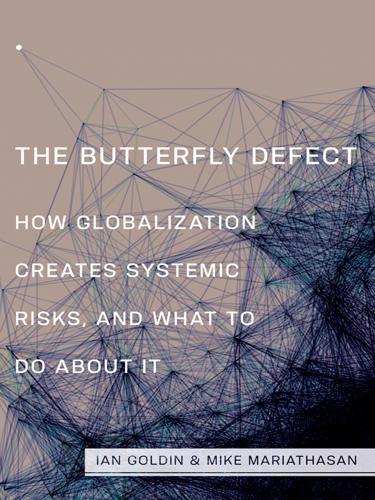
The Butterfly Defect: How Globalization Creates Systemic Risks, and What to Do About It
by
Ian Goldin
and
Mike Mariathasan
Published 15 Mar 2014
Concentration By 2025 the fraction of the world’s population living in cities is expected to rise to 70 percent.14 With Tokyo’s population density as high as 5,847 persons per square kilometer and with 1 in 25 people already living in a megacity, it is inevitable that “new approaches for surveillance, preparedness, and response will be needed [to deal with pandemics].”15 This is important everywhere but especially in overcrowded or unhygienic conditions, where people live close to animals, and where water is easily contaminated. These incubators for the development and spread of infectious diseases are expected to grow particularly rapidly, because virtually all the growth in megacities will be occurring in developing countries over the coming decades and because many of them have shantytowns and other communities in which people are living in poor conditions.
…
The equivalent of special weapons and tactics (SWAT) teams with the medical and other capacity to mobilize rapidly (without lengthy authorization procedures) and engage anywhere in the world is vital. Such capacity is required for pandemics nationally and globally. Once a pathogen has skipped from the countryside to a megacity or from a megacity to a major airport, there is no bringing it back. Although the immediate response should be medical, the broader implications also need thinking through. For example, if the emergency requires the culling of all the poultry or pigs on which people depend for their livelihoods and nutrition, alternative mechanisms to support the population need to be put in place immediately, with the costs of this response to a potential global emergency underwritten by WHO or another global institution.
…
One noteworthy study estimates that the breakdown of biogeographic barriers and the introduction of invasive species cost the world in excess of $120 billion annually.51 This cost includes that of the rise of pathogens that directly affect the health of humans, livestock, and animals. The same study shows how the effects of globalization have enabled West Nile virus to flourish in regions that were previously immune due to their climates or remoteness. Yet it is essential to note that it is this same proximity that has led to the success of megacities like London, New York, Mumbai, and Shanghai. The challenge, which we explore in this book, is to ensure that proximity and connectivity can be sources of strength while we manage growing vulnerability due to the complexity and density of our connections. The second geographical risk, density risk, relates to the growing concentration of activities in solitary or a small number of world epicenters.

Aerotropolis
by
John D. Kasarda
and
Greg Lindsay
Published 2 Jan 2009
Nearly a third of all the magnetic recording heads at the heart of your hard drive and a sixth of all keyboards are made in the city of Dongguan, just up the road from Shenzhen. Twenty years ago, it was another fishing village; today it’s larger than Chicago. These instant megacities were inevitable. They didn’t have to happen here—they did because Deng and his successors willed them to—but they would have sprouted somewhere. The economics make too much sense. Research by the World Bank suggests the reason China’s megacities have grown so big, so fast is that the returns to scale have grown so massive. What has made this growth possible, the bank argued, is cheap transportation. The catalyst is the jet engine, “perhaps the most significant innovation in long-distance transport ever,” in the bank’s estimation.
…
Castells identifies a “new spatial form” emerging: the megacity. His textbook example is the Delta, which he tellingly diagrams with Hong Kong on the edge and Guangzhou at its core. The most striking thing about such cities is that they are “globally connected and locally disconnected.” The Delta may be the world’s factory, but nothing it makes is within reach of the peasants past its fringes, who are uprooting seventy generations of history to find their fortunes here. An estimated 140 million farmers have already left their homes, and the gap between rich and poor, urban and rural, is widening. China’s solution is to build megacities in its interior, like Chongqing, which is officially three times the size of New Jersey and equally dense.
…
Such massive inequality is the primary source of China’s unrest—an estimated eighty thousand protests each year in rural towns and villages, suppressed and kept (mostly) out of sight. Despite the size of its coastal megacities, China is less urbanized than its peers. Barely half its citizens live in one, far below the developed world’s 80 to 90 percent. The State Council expects another four hundred million peasants—the second wave in the largest migration in history—to move to cities in the next twenty years. In obeisance to Jiang’s edict to “Go West,” they are being herded away from the coast toward new megacities rising inland. The fear of this influx and the slums it might create underlies China’s resolve to export its way out of poverty.

Confessions of an Eco-Sinner: Tracking Down the Sources of My Stuff
by
Fred Pearce
Published 30 Sep 2009
Singh put it to me as we toured the farms of northern Nigeria, ‘There is no reason why even Africa cannot feed itself.’ 33 Beyond the Clockwork Orange: Why We Can Green Our Cities A HUNDRED YEARS ago, the largest city in the world was London, with a population of 6.5 million. When I was born in 1951, the top dog was the world’s first mega-city, New York, which had just topped 10 million people. Today there are at least twenty cities above that figure, including three each in India and China. Each of these mega-cities contains more people than the entire population of the planet at the end of the last ice age. The new world urban leader, Tokyo, has mushroomed to 34 million people. From mid-2007, for the first time in history, most people will live in cities.
…
London has spread to create an urban region across south-east England that stretches west towards Reading and Oxford, north towards Cambridge, and now east along the Thames estuary. São Paulo is embracing a ‘golden urban triangle’ that includes Rio de Janeiro and Belo Horizonte. The people of Mexico City have fled their congested and polluted mega-city to surrounding cities like Toluca and Cuernavaca. Kolkata has dispersed across west Bengal. Tokyo is extending out to Japan’s second mega-city, Osaka, creating a megalopolis of 70 million people, linked by bullet train. Shanghai is joining hands with Suzhou, Nanjing and Hangzhou, which will soon be just twenty-seven minutes away on a new maglev train with a top speed of more than 400 kilometres an hour.
…
Later, Europeans colonized the New World for gold, and spent decades searching for Eldorado. The gold rushes of California and Australia and South Africa and the Klondike globalized the world’s economy in the nineteenth century. Gold smuggling, more than oil, made the fabulous wealth behind the modern mega-city of Dubai. The Gold Standard was for a long time the guarantor of the world’s currencies; and every national treasury still keeps a store. A third of all the world’s gold is locked up in the vaults of various banks and private investment houses. There is Fort Knox, of course. And vaults beneath the Bank of England in the City of London store the bullion reserves of more than seventy countries – hundreds of times more gold than is contained in the Crown Jewels, on display close by in the Tower of London.
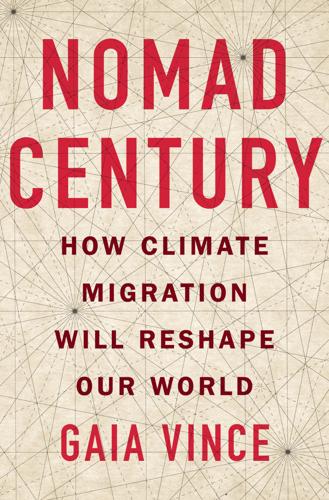
Nomad Century: How Climate Migration Will Reshape Our World
by
Gaia Vince
Published 22 Aug 2022
Exposure to deadly urban heat has tripled since the 1980s, with a fifth of the world’s population already affected.13 In the next three decades, we’ll see the band of subtropical climate expanding into higher latitudes by about 1,000 kilometres. London will start to feel like Barcelona, Moscow like Sofia and Tokyo like Changsha. To a Londoner, this sounds quite pleasant, but globally, it means that over 40 per cent of the world’s forty-four largest megacities will see dangerously high heat conditions each year at just 1.5°C of warming, whereas at 2°C, 1 billion people would be exposed to extreme heat, rising to 3.5 billion people at 4°C, according to a 2021 UK Met Office analysis – and that doesn’t even account for rising population levels. At 1.5°C, EU member states alone will be experiencing 30,000 heat-related deaths per year by the 2030s.
…
Even if global temperatures rise no more than 1.5°C, hundreds of millions of people will be affected. There are a significant number of countries where at least 50 million people live on land exposed to sea-level rise – these include China, Indonesia, Japan, the Philippines and the United States. Once global temperatures rise by 2°C, flooding will affect at least 136 megacities, with damage costs totalling $1.4 trillion per year by the end of the century. The cost of holding back the rising ocean, through sea walls and other defences, is already prohibitive – consider that the US alone estimates spending more than $400 billion in coastal defence costs over the next twenty years, with longer-term costs for those living in smaller communities as high as $1 million per person.
…
Most urbanization in the coming decades will consist of poor people in Africa and Asia migrating from rural areas for paid work. Almost all of them will live in slums at densities as great as 2,500 people per hectare, sharing just two or three toilets (the same number as the average US family home). There are around thirty megacities today, and by 2050 they are expected to merge into dozens of mega-regions, like Hong Kong–Shenzhen–Guangzhou in China, where more than 100 million people will live in a seemingly endless city. Such mega-regions will probably become more influential than nation states. We already see more power being devolved to cities, which now have considerable agency over issues from migration to climate action.

Instant City: Life and Death in Karachi
by
Steve Inskeep
Published 12 Oct 2011
(Metropolitan New York fell behind despite growing to nineteen million.) Tokyo is part of a complex of manufacturing and financial centers along the Pacific Rim—Los Angeles, San Jose, Seattle, Seoul, Shanghai, and Hong Kong, among others. Some are megacities, commonly described as urban areas of ten million or more. Lagos, São Paulo, and Mexico City are also megacities, and vast as they are, such giants do not encompass most of the world’s urban growth. Small cities and even small towns have exploded in size—half a million here, three million there. These smaller cities will encompass most of the world’s urban growth between now and the year 2030.
…
Numerous newspapers were for sale on the streets, and while the journalists made a pittance—the publisher of one notable paper, the Daily Times, went at least half a year without paying many reporters at all—they maintained a loud public debate. A few miles away, one of Karachi’s great philanthropists had even opened a horseracing track, with regular Sunday events and all betting creatively reconfigured so that it did not run afoul of Islam’s ban on gambling. Karachi was nothing like Tehran, another Muslim megacity, where many of the richest parts of the culture were samizdat—banned books smuggled in suitcases from outside, banned movies screened secretly in people’s apartments, banned messages shouted from rooftops under the protection of the dark. Much more of Karachi’s culture was still in the open. A few dozen cinemas remained in business.
…
Officials in Mumbai planned to demolish one of the city’s famous slums to make room for upscale towers. They were actually building an entire satellite city of the metropolis, called Navi Mumbai, or New Mumbai, which quickly grew to a population of two million. At Inchon, South Korea, the port for the megacity of Seoul, developers were planning a new city on a man-made island; an American firm was leading the project. Chinese officials brought in a Chilean planner attached to a London firm to help design a satellite city outside the absurdly growing metropolis of Shanghai. However, the global financial crisis was complicating or choking off such projects, including the forty-five towers planned by Emaar.
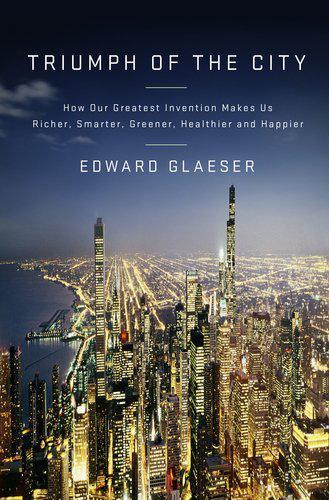
Triumph of the City: How Our Greatest Invention Makes Us Richer, Smarter, Greener, Healthier, and Happier
by
Edward L. Glaeser
Published 1 Jan 2011
Many urban analysts see a great crisis in the problem of the megacity, which usually means the vast numbers of poor people living in Mumbai or Mexico City. It seems wise to many to limit the growth of these megacities, whose crowds and squalor doom millions to harsh, dead-end lives. In the developed world, cozy, homogeneous suburbs can appear far more egalitarian than the extraordinary urban gulfs that separate a Fifth Avenue billionaire from a ghetto child. But the preceding paragraph is filled with nonsense. The presence of poverty in cities from Rio to Rotterdam reflects urban strength, not weakness. Megacities are not too big. Limiting their growth would cause significantly more hardship than gain, and urban growth is a great way to reduce rural poverty.
…
Yet urban poverty, despite its terrors, can offer a path toward prosperity both for the poor and for the nation as a whole. Brazil, China, and India are likely to become far wealthier over the next fifty years, and that wealth will be created in cities that are connected to the rest of the world, not in isolated rural areas. It is natural to see the very real problems of poorer megacities and think that the people should go back to their rural villages, but cities, not farms, will save the developing world. Many poor nations suffer from poor soil quality—that’s one reason why they’re poor—so it’s unlikely that they’ll ever be leaders in global agriculture. Improvements in agricultural productivity typically involve new technology that reduces the number of people working on farms.
…
The status quo in the world’s poorest places is terrible, which is why the urban roller coaster has so much to offer, especially because cities can transmit the knowledge countries need to take part in the global economy. The vast flow of migrants to cities certainly stresses urban infrastructure; that’s one of the familiar arguments against allowing the growth of megacities. But while an influx of new migrants worsens the quality of roads and water for a city’s longtime residents, the new arrivals go from having virtually no infrastructure to enjoying all the advantages that come from access to decent transport and utilities. It is wrong to keep the quality of urban infrastructure high by preventing people from enjoying that infrastructure.
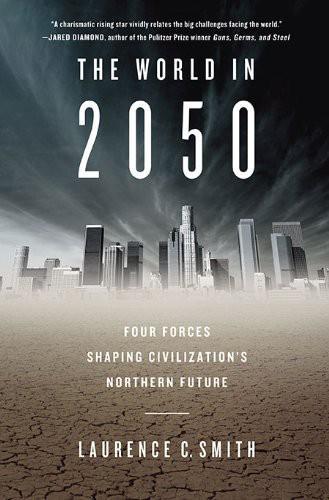
The World in 2050: Four Forces Shaping Civilization's Northern Future
by
Laurence C. Smith
Published 22 Sep 2010
The projections may surprise you: World Megacities of Ten Million or More (population in millions) 1950 New York-Newark, USA (12.3) Tokyo, Japan (11.3) 1975 Tokyo, Japan (26.6) New York-Newark, USA (15.9) Mexico City, Mexico (10.7) 2007 Tokyo, Japan (35.7) New York-Newark, USA (19.0) Mexico City, Mexico (19.0) Mumbai, India (19.0) São Paulo, Brazil (18.8) Delhi, India (15.9) Shanghai, China (15.0) Kolkata (Calcutta), India (14.8) Dhaka, Bangladesh (13.5) Buenos Aires, Argentina (12.8) Los Angeles-Long Beach-Santa Ana, USA (12.5) Karachi, Pakistan (12.1) Al-Qahirah (Cairo), Egypt (11.9) Rio de Janeiro, Brazil (11.7) Osaka-Kobe, Japan (11.3) Beijing, China (11.1) Manila, Philippines (11.1) Moskva (Moscow), Russia (10.5) Istanbul, Turkey (10.1) 2025 Tokyo, Japan (36.4) Mumbai, India (26.4) Delhi, India (22.5) Dhaka, Bangladesh (22.0) São Paulo, Brazil (21.4) Mexico City, Mexico (21.0) New York-Newark, USA (20.6) Kolkata (Calcutta), India (20.6) Shanghai, China (19.4) Karachi, Pakistan (19.1) Kinshasa, Democratic Republic of the Congo (16.8) Lagos, Nigeria (15.8) Al-Qahirah (Cairo), Egypt (15.6) Manila, Philippines (14.8) Beijing, China (14.5) Buenos Aires, Argentina (13.8) Los Angeles-Long Beach-Santa Ana, USA (13.7) Rio de Janeiro, Brazil (13.4) Jakarta, Indonesia (12.4) Istanbul, Turkey (12.1) Guangzhou, Guangdong, China (11.8) Osaka-Kobe, Japan (11.4) Moskva (Moscow), Russia (10.5) Lahore, Pakistan (10.5) Shenzhen, China (10.2) Chennai, India (10.1) Paris, France (10.0) The century of megacities has already begun. From just two in 1950 and three in 1975, we grew to nineteen by 2007 and expect to have twenty-seven by 2025. Furthermore, in sheer size alone our global urban culture is shifting east. Of the eight new megacities anticipated over the next fifteen years, six are in Asia, two in Africa, and just one in Europe. Zero new megacities are anticipated for the Americas. Instead, this massive urbanization is happening in some of our most populous countries: Bangladesh, China, India, Indonesia, Nigeria, and Pakistan.
…
When combined with its fast population growth rate, this means that Africa will triple the size of its cities over the next forty years.50 At 1.2 billion people, Africa will hold nearly a quarter of the world’s urban population.51 Tucked away in the back of a 2008 report by the United Nations Population Division are some stunning data tables.52 They rank our past, present, and future “megacities”—urban agglomerations with ten million inhabitants or more—for the years 1950, 1975, 2007, and 2025. The projections may surprise you: World Megacities of Ten Million or More (population in millions) 1950 New York-Newark, USA (12.3) Tokyo, Japan (11.3) 1975 Tokyo, Japan (26.6) New York-Newark, USA (15.9) Mexico City, Mexico (10.7) 2007 Tokyo, Japan (35.7) New York-Newark, USA (19.0) Mexico City, Mexico (19.0) Mumbai, India (19.0) São Paulo, Brazil (18.8) Delhi, India (15.9) Shanghai, China (15.0) Kolkata (Calcutta), India (14.8) Dhaka, Bangladesh (13.5) Buenos Aires, Argentina (12.8) Los Angeles-Long Beach-Santa Ana, USA (12.5) Karachi, Pakistan (12.1) Al-Qahirah (Cairo), Egypt (11.9) Rio de Janeiro, Brazil (11.7) Osaka-Kobe, Japan (11.3) Beijing, China (11.1) Manila, Philippines (11.1) Moskva (Moscow), Russia (10.5) Istanbul, Turkey (10.1) 2025 Tokyo, Japan (36.4) Mumbai, India (26.4) Delhi, India (22.5) Dhaka, Bangladesh (22.0) São Paulo, Brazil (21.4) Mexico City, Mexico (21.0) New York-Newark, USA (20.6) Kolkata (Calcutta), India (20.6) Shanghai, China (19.4) Karachi, Pakistan (19.1) Kinshasa, Democratic Republic of the Congo (16.8) Lagos, Nigeria (15.8) Al-Qahirah (Cairo), Egypt (15.6) Manila, Philippines (14.8) Beijing, China (14.5) Buenos Aires, Argentina (13.8) Los Angeles-Long Beach-Santa Ana, USA (13.7) Rio de Janeiro, Brazil (13.4) Jakarta, Indonesia (12.4) Istanbul, Turkey (12.1) Guangzhou, Guangdong, China (11.8) Osaka-Kobe, Japan (11.4) Moskva (Moscow), Russia (10.5) Lahore, Pakistan (10.5) Shenzhen, China (10.2) Chennai, India (10.1) Paris, France (10.0) The century of megacities has already begun.
…
New York City was the world’s second-largest metropolis in 1977, when Liza Minnelli first sang the hit song “New York, New York” (later popularized by Frank Sinatra) to Robert De Niro in a Martin Scorsese movie. By 2050, the “City That Never Sleeps” will be struggling just to stay in the top ten. The story doesn’t end with megacities. People are flocking to towns of all sizes, large and small. Indeed, some of the fastest growth is happening in urban centers with less than five hundred thousand people. According to the United Nations model, the number of “large” cities—those with populations between five and ten million—will increase from thirty in 2007 to forty-eight by 2025.

Straphanger
by
Taras Grescoe
Published 8 Sep 2011
The view from a car window in the center lane of an expressway in Moscow, I quickly realized, is about the same as it is in Shanghai, Hyderabad, or Johannesburg: multiple lanes of cars, trucks, and vans, going nowhere, filled with pained passengers and even more aggravated-looking drivers. From megacity to megacity, only the smell of the exhaust and the makes of the vehicles seem to change. But in Moscow, it turns out, there is one surefire way to cut through even the densest traffic. Behind us, a siren whooped, and red-and-blue lights flashed in our rearview mirror. Three black Mercedes surged past us, playing a sustained game of chicken with oncoming traffic.
…
So we were able to debate initiatives like the Spadina Expressway, which had huge implications for both the city and the region. People used to say Metro was the best form of municipal government in the world. I still believe they were right.” Despite Toronto-wide protests and two weeks of spirited filibustering by the opposition, the Harris government replaced Metro with a new “megacity.” Since 1998, this megacity has been represented by forty-four city councilors and made up of six previously separate municipalities, from Scarborough in the east to Etobicoke in the west. (All told, the Greater Toronto Area, which stretches from Oshawa to Burlington, is governed by a staggering 244 municipal office holders, including twenty-five mayors.)
…
In 2008, a delegation from China, on a study tour of American subdivisions, visited the Del Webb development in the Phoenix suburb of Buckeye. Nobody in the local media recorded the officials’ impressions, but I hope they weren’t too positive. For if even a tiny fraction of the populations of the developing megacities of Asia, Africa, and Latin America pursue the suburban dream of a detached home for every family and a car in every garage, we’re in trouble. There just isn’t enough planet for any more Phoenixes. 4. The Salvation of Paris Paris, France On that 1st day of October, on the Champs-Elysées, I was assisting at the titanic reawakening of a completely new phenomenon, which three months of summer had calmed down a little—traffic.
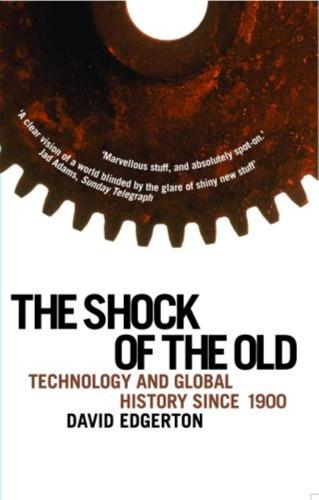
The Shock of the Old: Technology and Global History Since 1900
by
David Edgerton
Published 7 Dec 2006
By 1971 60 per cent of fertiliser production came from small plants; 50 per cent of cement; 16 per cent of hydro-generating capacity; overall around 10 per cent of Chinese factory output.28 Transport The idea that the technologies of the poor world simply lag behind those of the rich world in time is not generally applicable, as the case of the fabric of the poor megacity illustrates. Transport provides a second example, since the poor megacities had different transport patterns from those of the great rich cities of 1900, or even of 1930. These rich cities did not have the bicycle or motorcycle densities of the megacities of late twentieth-century Asia. Indeed bicycle and motor-bicycle production boomed in the world, particularly in the poor world, from the 1970s. For the first time in many decades bicycle production surged ahead of motor-car production.
…
At the end of the twentieth century, nuclear power, once the technology of the future, was set to be phased out in many countries. And in medicine too, many treatments invented in the twentieth century were discontinued, lobotomy and ECT being prominent examples, though the last is still occasionally used. Not Alphaville but bidonville: technology and the poor megacity The story of the poor world (a term preferable to the euphemistic ‘developing world’, and the now irrelevant ‘Third World’) and technology is usually told as one of transfer, resistance, incompetence, lack of maintenance and enforced dependence on rich-world technology. Imperialism, colonialism and dependence were the key concepts, and the transfer of technology from rich to poor, the main process.
…
The great change was the expansion in Chinese production to 40–50 million bicycles from a few million in the early 1970s.29 In addition Taiwan and India between them were, at the end of the century, making more bicycles than were produced in the world in 1950. Bicycle-derived technologies of the poor megacity provide an instance of a creole technology. In 2003 it was reported that the city of Calcutta was still trying to get rid of the hand-pulled rickshaw, long gone from most of the rest of Asia. These rickshaws were deemed old-fashioned even by the standards of hand-rickshaws: Calcutta’s had spoked wheels, but not ones derived from bicycle technology; they were made of wood and were rimmed with solid rubber rather than pneumatic tyres.
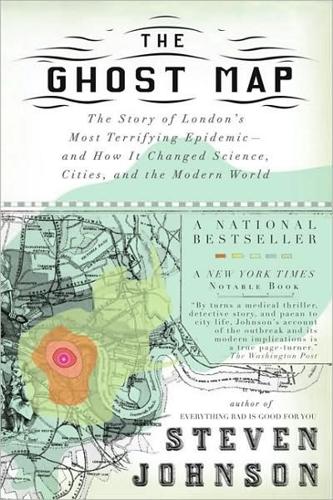
The Ghost Map: A Street, an Epidemic and the Hidden Power of Urban Networks.
by
Steven Johnson
Published 18 Oct 2006
But the developed cities no longer appear to be on a collision course with themselves, the way London did in the nineteenth century. And so it may take the megacities of the developing world a century to reach that same sense of equilibrium, and during that period there will no doubt be episodes of large-scale human tragedy, including cholera outbreaks that will claim far more lives than were lost in Snow’s time. But the long-term prospects for urban life, even in these vast new sprawling “organisms,” are solid ones. It’s likely the megacities will mature faster than London did, precisely because of all the forms of expertise that were in embryo during the Broad Street events: epidemiology, public infrastructure engineering, waste management and recycling.
…
It seemed entirely likely to many reasonable citizens of Victorian England—as well as to countless visitors from overseas—that a hundred years from now the whole project of maintaining cities of this scale would have proved a passing fancy. The monster would eat itself. Most of us don’t harbor doubts of this scale today, at least where cities are concerned. We worry about other matters: the epic shanty-towns of Third World megacities; the terror threats; the environmental impact of a planet industrializing at such a dramatic rate. But most of us accept without debate the long-term viability of human settlements with populations in the millions, or tens of millions. We know it can be done. We just haven’t figured out how to ensure that it is done well.
…
An outbreak in South America in the early 1990s infected more than a million people, killing at least ten thousand. In the summer of 2003, damage to the water-supply system from the Iraq War triggered an outbreak of cholera in Basra. There is a fearful symmetry to these trends. In many ways, the struggles of the developing world mirror the issues that confronted London in 1854. The megacities of the developing world are wrestling with the same problems of uncharted and potentially unsustainable growth that London faced 150 years ago. In 2015, the five largest cities on the planet will be Tokyo, Mumbai, Dhaka, São Paulo, and Delhi—all of them with populations above 20 million. The great preponderance of that growth will be driven by so-called squatter or shantytown developments—entire sprawling cities developed on illegally occupied land, without any traditional infrastructure or civic planning supporting their growth.

50 Future Ideas You Really Need to Know
by
Richard Watson
Published 5 Nov 2013
Cities are constantly being knocked down and rebuilt (by about 2 percent per year) and people are always coming and going, refreshing their energy and creativity. Cities such as London, New York and Tokyo aren’t going away. Indeed, they are now being remade and recast as city-states that are economically and culturally ahead of many countries. Growth of the megacity In 1975, there were just three global megacities: New York, Mexico City and Tokyo. Now there are 20-plus, depending on definitions (usually, 10 million plus people). According to McKinsey, a firm of management consultants, Kinshasa, Lagos, Cairo, São Paulo, Mexico City, Los Angeles, Buenos Aires, Mumbai, Shanghai, Beijing, Delhi, Kolkata and Dhaka all now qualify.
…
ISBN 978-1-62365-195-4 Distributed in the United States and Canada by Random House Publisher Services c/o Random House, 1745 Broadway New York, NY 10019 www.quercus.com Contents Introduction POLITICS & POWER 01 Ubiquitous surveillance 02 Digital democracy 03 Cyber & drone warfare 04 Water wars 05 Wane of the West ENERGY & ENVIRONMENT 06 Resource depletion 07 Beyond fossil fuels 08 Precision agriculture 09 Population change 10 Geo-engineering THE URBAN LANDSCAPE 11 Megacities 12 Local energy networks 13 Smart cities 14 Next-generation transport 15 Extra-legal & feral slums TECHNOLOGICAL CHANGE 16 An internet of things 17 Quantum & DNA computing 18 Nanotechnology 19 Gamification 20 Artificial Intelligence HEALTH & WELL-BEING 21 Personalized genomics 22 Regenerative medicine 23 Remote monitoring 24 User-generated medicine 25 Medical data mining SOCIAL & ECONOMIC DIMENSIONS 26 Living alone 27 Dematerialization 28 Income polarization 29 What (& where) is work?
…
Clearly, natural systems such as climate are highly complex, and attempting to influence them is fraught with difficulty, especially at a technical and political level. However, while complex solutions may be one answer, there are other, much simpler options. Half the world’s population now live in cities, for example. While it could be argued that this is part of the problem, in terms of emissions, cities, especially megacities in developing regions—which are being built, or redesigned, from the ground up—also provide a potential solution because they afford opportunities to make housing, transport and infrastructure much more efficient and sustainable. the condensed idea Radically reengineering the planet timeline 2019 Nobel Prize awarded for a geo-solution to climate change 2021 World’s first large-scale ocean fertilization trial begins 2025 Carbon capture technologies widely adopted 2027 Large areas of Venice, Miami and Dhaka abandoned due to flooding 2030 Creation of artificial forests to scrub carbon from the air 2040 Development of cloud whitening above the world’s oceans 2050 The global space mirror project abandoned due to cost 11 Megacities In 1800 about 3 percent of the world’s population was urban.
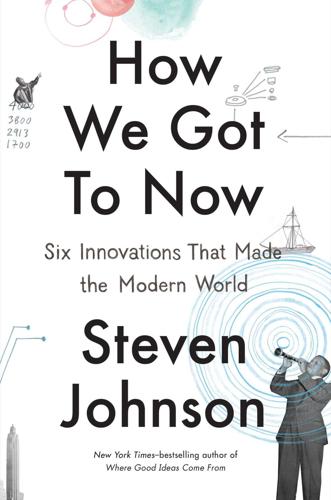
How We Got to Now: Six Innovations That Made the Modern World
by
Steven Johnson
Published 28 Sep 2014
This is long-zoom history: almost a century after Willis Carrier began thinking about keeping the ink from smearing in Brooklyn, our ability to manipulate tiny molecules of air and moisture helped transform the geography of American politics. But the rise of the Sun Belt in the United States was just a dress rehearsal for what is now happening on a planetary scale. All around the world, the fastest growing megacities are predominantly in tropical climates: Chennai, Bangkok, Manila, Jakarta, Karachi, Lagos, Dubai, Rio de Janeiro. Demographers predict that these hot cities will have more than a billion new residents by 2025. It goes without saying that many of these new immigrants don’t have air-conditioning in their homes, at least not yet, and it is an open question whether these cities are sustainable in the long run, particularly those based in desert climates.
…
It goes without saying that many of these new immigrants don’t have air-conditioning in their homes, at least not yet, and it is an open question whether these cities are sustainable in the long run, particularly those based in desert climates. But the ability to control temperature and humidity in office buildings, stores, and wealthier homes allowed these urban centers to attract an economic base that has catapulted them to megacity status. It’s no accident that the world’s largest cities—London, Paris, New York, Tokyo—were almost exclusively in temperate climates until the second half of the twentieth century. What we are seeing now is arguably the largest mass migration in human history, and the first to be triggered by a home appliance
…
From the very beginnings of human settlements, figuring out where to put all the excrement has been just as important as figuring out how to build shelter or town squares or marketplaces. The problem is particularly acute in cities experiencing runaway growth, as we see today in the favelas and shantytowns of megacities. Nineteenth-century Chicago, of course, had both human and animal waste to deal with, the horses in the streets, the pigs and cattle awaiting slaughter in the stockyards. (“The river is positively red with blood under the Rush Street Bridge and past down our factory,” one industrialist wrote. “What pestilence may result from it I don’t know.”)

Scale: The Universal Laws of Growth, Innovation, Sustainability, and the Pace of Life in Organisms, Cities, Economies, and Companies
by
Geoffrey West
Published 15 May 2017
To accommodate the continued exponential increase, new cities and urban developments are being built at a truly astonishing rate. China alone will be constructing two to three hundred new cities over the next twenty years, many with populations of over a million, while megacities that already dominate the developing world continue to expand, many of them spawning slums and informal settlements as more and more people flock to cities. As I remarked earlier, megacities of the past such as London and New York suffered from much the same negative image associated with megacities of today. Nevertheless, they developed into major economic engines offering huge opportunities and driving the world’s economy. Here’s the problem: cities do indeed evolve, but they take many decades to change and we simply no longer have the time to wait.
…
It was the world’s first industrial city and grew by a factor of six from a population of little more than 20,000 in 1771 to 120,000 in 1831, and to more than two million by the end of the nineteenth century nearly seventy years later. The evolution of Manchester provided the template that has been repeated innumerable times across the globe right up to the present day, from Düsseldorf and Pittsburgh to Shenzhen and São Paulo. Looking back on megacities of the past such as London or New York, we recognize that they suffered from much the same negative image often associated with megacities of today, such as Mexico City, Nairobi, or Calcutta. This is how Manchester’s textile workers were described 150 years ago: “the notorious fact is that well constitutioned men are rendered old and past labour at forty years of age, and that children are rendered decrepit and deformed, and thousands upon thousands of them slaughtered by consumptions [tuberculosis], before they arrive at the age of sixteen.”
…
Nevertheless, despite the shameless exploitation and terrible dehumanizing living and working conditions, these cities became highly mobile, rapidly evolving diverse societies, offering huge opportunities that ultimately resulted in many of them becoming drivers of the world’s economy. Much the same could be speculated about megacities emerging today in Africa, Asia, and other parts of the world. To quote the American architect and urban planner Andrés Duany: “In 1860, the capital city of Washington, with a population of 60,000, had unlighted streets, open sewers, and pigs roaming about its principal avenues. This condition was worse than the worst of our current cities. There is hope.” I cannot resist inserting a small personal note when writing about the rise of Victorian megacities and the plight of the “working poor.” Although I was born in a rural area of England, the county of Somerset, I have family roots in the East End of London and by a strange twist of fate ended up attending the last several years of my high school there.
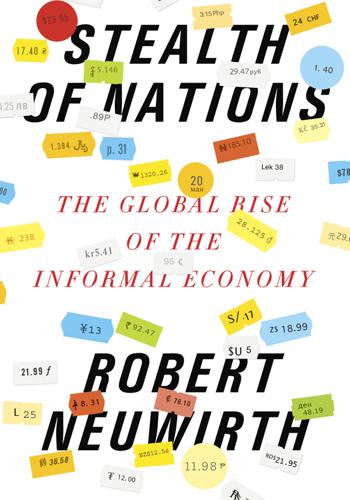
Stealth of Nations
by
Robert Neuwirth
Published 18 Oct 2011
Few of the merchants who operate on the roadsides or in the chaotic marketplaces of the developing world have any idea what the informal economy is. I found this out the hard way. My first foray into the world of unlicensed trade was a trip to Lagos, Nigeria. I spent my first few days in the African megacity walking up to merchants in the city’s street markets, introducing myself, and telling them I was writing a book on the informal economy. Without exception, they gawked at me and refused to talk. My words seemed to fill them with terror. Na so trouble plenty. Fortunately, I was working with two locals who were helping me navigate the chaotic and cramped markets of the city.
…
Trade may make Lagos seem frenzied and disorganized, it may sometimes appear aggressive and threatening, but trade built the city and continues to define its culture. Spend enough time there and you come to realize that it is exactly this—the irrepressible hubbub, the hyperentrepreneurial give-and-take, the ceaseless frenzy of talk and exchange—that holds the city together. Lagos is the first megacity in sub-Saharan Africa, and it may well be the first city in the world to be designed, in large part, by System D. According to local officials, 80 percent of the working people in Lagos are in System D. Nationwide, their economic efforts account for a mass of trade and exchange that is worth as much as 70 percent of Nigeria’s gross domestic product—or approximately $145 billion.
…
The VW, Dodge, Chevy, and Nissan vans that ply the streets, most of them painted school-bus yellow and tricked out with home-welded bench seats, are so banged-up and rusted—or, as they say in Nigeria in a puff of honest doublespeak, “fairly used”—that it seems doubtful that they could go anywhere, particularly on the crowded, cratered roads of the sub-Saharan megacity. The passenger compartments of some of the older danfo and molue are connected to the chassis only with baling wire. What repairs they do get are just enough to push them forward for another day of life. It’s not unusual for a bus to literally come apart—the universal joint breaking, wheel bearings dropping out, the exhaust system flopping to the roadbed in a cloud of black soot, a hose springing loose and spraying strange messages in steam—while passengers are still inside.
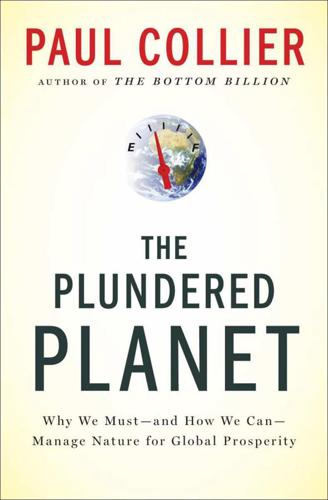
The Plundered Planet: Why We Must--And How We Can--Manage Nature for Global Prosperity
by
Paul Collier
Published 10 May 2010
That might not sound a lot but if people move from hamlets to megacities the cumulative consequences can be substantial. Someone working in a city of 10 million is on average going to be 40 percent more productive than someone working in a city of 100,000—and most Africans currently live in places that are much smaller than that. The experience of China is so extraordinary that it might have no relevance for Africa: China’s sheer size enables megacities to have large hinterlands but the same pattern is found in India. Africa needs more megacities. Tony Venables and I compared Africa’s urbanization with that of India and found that Africa is missing out on productivity because it lacks cities like Mumbai.
…
As Nigeria develops, its population will shift to the coastal cities. We can see this process already being played out on an even grander scale in China, as the population shifts by hundreds of millions from the interior. Within a generation, Lagos, already the largest city in sub-Saharan Africa, will become a global megacity of over 20 million people. Already, it represents half of the entire non-oil economy of Nigeria, so that in the future, as oil runs down and is replaced by a new economy, most of it will be in Lagos and its environs. Lagos has two key advantages. One is that it is a port, and ports are key sites for global manufacturing.
…
Tony Venables and I compared Africa’s urbanization with that of India and found that Africa is missing out on productivity because it lacks cities like Mumbai. Lagos is Africa’s best chance of a productive megacity. If Nigeria’s economic future lies in Lagos, and if that future could arrive within a generation—so long as the Nigerian government harnesses the nation’s oil revenues—it is not difficult to work out where much of the public investment financed by oil should be located. Yet, paradoxically, Lagos is precisely, immaculately, the one place in Nigeria where oil money is not reaching. To understand this paradox we have to turn to the politics of oil.

Age of the City: Why Our Future Will Be Won or Lost Together
by
Ian Goldin
and
Tom Lee-Devlin
Published 21 Jun 2023
Jones, K., et al., 2008, ‘Global trends in emerging infectious diseases’, Nature, Vol. 451. Joo, Y.-M., 2018, Megacity Seoul: Urbanization and the Development of Modern South Korea (Routledge). Jordan, J., 2018, ‘Living on the Frontiers of Climate Change: A Mother’s Story’, YouTube (youtube.com). Kastle Systems, 2022, ‘Recreation activity vs. office occupancy’ (kastle.com). Kelly, H., Kramer, A. and Warren, A., 2020, Emerging Trends in Real Estate: United States and Canada 2020, PWC and Urban Land Institute. Kennedy, C., et al., 2015, ‘Energy and material flows of megacities’, Proceedings of the National Academy of Sciences, Vol. 112, No. 19.
…
Chapter 7 – Beyond the Rich World 1 Reza, P., 2016, ‘Old photos bring back sweet memories of Bangladesh’s capital Dhaka’, Global Voices (globalvoices.org). 2 World Population Review, 2023, ‘Dhaka Population 2023’ (worldpopulationreview.com). 3 Jedwab, R. and Vollrath, D., 2015, ‘Urbanization without growth in historical perspective’, Explorations in Economic History, Vol. 58. 4 Authors’ calculations based on Oxford Economics data. 5 Bairoch, Cities and Economic Development, p. 347. 6 Authors’ calculations based on United Nations data. 7 Authors’ calculations based on Maddison Project database. 8 Roser, M., Ortiz-Ospina, E. and Ritchie, H. 2019, ‘Life expectancy’, Our World in Data (ourworldindata.org). 9 United Nations, 1969, ‘Growth of the world’s urban and rural population, 1920–2000’ (un.org). 10 Ritchie and Roser, ‘Urbanization’. 11 Victor, H., 1861, The Sack of the Summer Palace, Fondation Napoleon (napoleon.org). 12 Jedwab and Vollrath, ‘Urbanization without growth in historical perspective’. 13 World Population Review, 2022, ‘World city populations 2022’ (worldpopulationreview.com). 14 Ibid. 15 For a summary, see Ritchie and Roser, ‘Urbanization’. 16 Authors’ calculations based on Maddison Project database. 17 Ibid. 18 Jain, ‘Case study on territorial development in Japan’. 19 Yokoyama, M., 1991, ‘Abortion policy in Japan: analysis from the framework of interest groups’, Kokugakuin Journal of Law and Politics, Vol. 29, No. 1. 20 Institute for International Cooperation, Japan International Cooperation Agency, 2005, ‘Japan’s experiences in public health and medical systems’ (openjicareport.jica.go.jp). 21 O’Neill, A., 2022, ‘Total fertility rate in Japan from 1800 to 2020’, Statista (statista.com). 22 Authors’ calculations based on Maddison Project database. 23 Kim, K., 1995, ‘The Korean miracle (1962–80) revisited: myths and realities in strategy and development’, in Stein, H. (ed.), Asian Industrialization and Africa, International Political Economy Series (Palgrave Macmillan). 24 Ibid. 25 Joo, Y.-M., 2018, Megacity Seoul: Urbanization and the Development of Modern South Korea (Routledge). 26 Ibid. 27 Ibid. 28 World Bank, 2022, ‘Four decades of poverty reduction in China’ (worldbank.org). 29 Authors’ calculations based on Maddison Project database. 30 Whyte, M., et al., 2015, ‘Challenging myths about China’s one-child policy’, The China Journal, Vol. 74. 31 Sheng, A. and Geng, X., 2018, ‘China is building 19 “supercity clusters”’, World Economic Forum (weforum.org). 32 Preen, M., 2018, ‘China’s city clusters: the plan to develop 19 super-regions’, China Briefing (china-briefing.com). 33 The Economist, 2022, ‘Xi Jinping’s economic revolution aims to spread growth’. 34 Authors’ calculations based on World Bank data. 35 Jedwab and Vollrath, ‘Urbanization without growth in historical perspective’. 36 Griffith, J., 2019, ‘22 of the top 30 most polluted cities in the world are in India’, CNN (cnn.com). 37 World Bank Data, 2018, ‘Population living in slums (% of urban population)’ (data.worldbank.org). 38 Nijman, J. and Shin, M., 2014, ‘The megacity’, in Knox, P.
…
-M., 2018, Megacity Seoul: Urbanization and the Development of Modern South Korea (Routledge). 26 Ibid. 27 Ibid. 28 World Bank, 2022, ‘Four decades of poverty reduction in China’ (worldbank.org). 29 Authors’ calculations based on Maddison Project database. 30 Whyte, M., et al., 2015, ‘Challenging myths about China’s one-child policy’, The China Journal, Vol. 74. 31 Sheng, A. and Geng, X., 2018, ‘China is building 19 “supercity clusters”’, World Economic Forum (weforum.org). 32 Preen, M., 2018, ‘China’s city clusters: the plan to develop 19 super-regions’, China Briefing (china-briefing.com). 33 The Economist, 2022, ‘Xi Jinping’s economic revolution aims to spread growth’. 34 Authors’ calculations based on World Bank data. 35 Jedwab and Vollrath, ‘Urbanization without growth in historical perspective’. 36 Griffith, J., 2019, ‘22 of the top 30 most polluted cities in the world are in India’, CNN (cnn.com). 37 World Bank Data, 2018, ‘Population living in slums (% of urban population)’ (data.worldbank.org). 38 Nijman, J. and Shin, M., 2014, ‘The megacity’, in Knox, P. (ed.), Atlas of Cities (Princeton University Press). 39 Ibid. 40 Marx, B., et al., 2013, ‘The economics of slums in the developing world’, Journal of Economic Perspectives, Vol. 27, No. 4. 41 Glaeser, E., 2011, Triumph of the City (Penguin). 42 Ibid. 43 International Labour Organization, 2018, ‘Women and men in the informal economy: a statistical picture’ (ilo.org). 44 WIEGO Statistics Database (wiego.org). 45 Samora, P., 2016, ‘Is this the end of slum upgrading in Brazil?’

Smart Cities: Big Data, Civic Hackers, and the Quest for a New Utopia
by
Anthony M. Townsend
Published 29 Sep 2013
From the hubs of communication and exchange that sprang up in the markets, palaces, and temples of ancient cities, the size of human settlements has grown, and grown, and grown. Today, the largest megacities tie together tens of millions of people who have come together to work and play in countless groupings. New technologies like Meetup (and Foursquare) are vital to helping people navigate the vast sea of opportunities for social interaction that are available in the modern megacity. We focus on the physical aspects of cities because they are the most tangible. But telecommunications networks let us see, increasingly in real time, the vital social processes of cities.
…
Instead of undermining the city, new telecommunications technologies played a crucial role in London’s success—it is the hub of a global tangle of fiber-optic networks that plug its financiers and media tycoons directly into the lives of billions of people all over the world. We experience the symbiosis of place and cyberspace everyday. It’s almost impossible to imagine city life without our connected gadgets. In my own pocket, I carry an iPhone. It is my megacity survival kit, a digital Swiss Army knife that helps me search, navigate, communicate, and coordinate with everyone and everything around me. I have apps for finding restaurants, taxis, and my friends. A networked calendar keeps me in sync with my colleagues and my family. If I’m running late, there are three different ways to send a message and buy some time.
…
We’ve all become digital telepaths, hooked on the rush we get as these devices untether us from the tyranny of clocks, fixed schedules, and prearranged meeting points. The addiction started, as all do, slowly at first. But now it governs the metabolism of our urban lives. With our days and nights increasingly stretched across the vastness of megacities, we’ve turned to these smart little gadgets to keep it all synchronized. It’s no accident that the most common text message, sent billions of times a year all over the world, is “where r u?”26 The digital revolution didn’t kill cities. In fact, cities everywhere are flourishing because new technologies make them even more valuable and effective as face-to-face gathering places.

The Stack: On Software and Sovereignty
by
Benjamin H. Bratton
Published 19 Feb 2016
These lead from the long-foretold and longer-postponed eclipse of the nation-state to the ascendance of political theology as an existential transnationalism, from the billowing depths of cloud computing and ubiquitous addressability to the logistical modernity of the endlessly itinerant object, and from the return of the city-state in the guise of a multipolar network of megacities and walled megagardens to the permanent emergency of ecological collapse and back again. My conclusions are speculative and meant to inform and support further design of these systems. Like any other good theoretical design research, it handles slippery problems in ways that are provisional, prototypical, and provocative—not necessarily policy (yet).
…
In the emergence of The Stack, it is not that the state declines per se, but that our contemporary condition is qualified both by a debordering perforation and liquefaction of this system's ability to maintain a monopoly on political geography, and by an overbordering, manifest as an unaccountable proliferation of new lines, endogenous frames, anomalous segments, medieval returns, infomatic interiors, ecological externalities, megacity states, and more. These zones fold and flip-flop on top of one another, interweaving into abstract and violent spatial machines of uncanny jurisdictional intricacy. Borderlines are militarized as they are also punctured or ignored. However, the simultaneity of all this is only contradictory at first blush.
…
The Stack discussed in the following chapters is a vast software/hardware formation, a proto-megastructure built of crisscrossed oceans, layered concrete and fiber optics, urban metal and fleshy fingers, abstract identities and the fortified skins of oversubscribed national sovereignty. It is a machine literally circumscribing the planet, which not only pierces and distorts Westphalian models of state territory but also produces new spaces in its own image: clouds, networks, zones, social graphs, ecologies, megacities, formal and informal violence, weird theologies, all superimposed one on the other. This aggregate machine becomes a systematic technology according to the properties and limitations of that very spatial order. The layers of The Stack, some continental in scale and others microscopic, work in specific relation to the layer above and below it.

The Future Is Faster Than You Think: How Converging Technologies Are Transforming Business, Industries, and Our Lives
by
Peter H. Diamandis
and
Steven Kotler
Published 28 Jan 2020
Over the past fifty years, in low- to medium-income countries, urbanization has doubled, sometimes tripled—think Nigeria and Kenya. By 2007, the globe had crossed a radical threshold: Half of us now lived in cities. Along the way, we got cities on steroids. In 1950, only New York and Tokyo housed 10 million residents, which is the figure required for “mega-city” status. By 2000, there were over eighteen mega-cities. Today, it’s thirty-three. Tomorrow? Tomorrow is when the numbers go crazy. In fact, we have a new word for the crazy, a “hyper-city,” a locale with a population above 20 million. By comparison, during the French Revolution, the world’s entire urban population was less than 20 million.
…
the 1947 partitioning of India and Pakistan: “History’s Greatest Migration,” Guardian, September 25, 1947. See: https://www.theguardian.com/century/1940-1949/Story/0,,105131,00.html. See also: https://www.unhcr.org/3ebf9bab0.pdf. Tokyo is the largest mega-city on Earth: Alexandre Tanzi and Wei Lu,“Tokyo’s Reign as World’s Largest City Fades,” Bloomberg, July 13, 2018. See: https://www.bloomberg.com/news/articles/2018-07-13/tokyo-s-reign-as-world-s-largest-city-fades-demographic-trends. See also: https://en.wikipedia.org/wiki/Megacity. Urban Relocations Three hundred years ago: UN Population Division, World Urbanization Prospects, the 2001 Revision (New York, 2002). 11 million Americans: David Kennedy and Lizabeth Cohen, The American Pageant: A History of the American People, 15th (AP) edition (Cengage Learning, 2013), pp. 539–540.
…
Climate Central’s prognosis isn’t good: “Carbon emissions causing 4 degrees C of warming—what business-as-usual points toward today—could lock in enough sea level rise to submerge land currently home to 470 to 760 million people.” To figure out what this level of displacement actually looks like, Climate Central also made a series of maps depicting the effects of global warming on every coastal nation and mega-city on the planet. Unless you’re a fish, the news is not good. With four degrees warming, in many of the world’s mega-cities—London, Hong Kong, Rio, Mumbai, Shanghai, Jakarta, Calcutta, etc.—swimming becomes the fastest way to get from point A to point B. Entire island nations vanish forever. In America, twenty million people end up underwater.

The Uninhabitable Earth: Life After Warming
by
David Wallace-Wells
Published 19 Feb 2019
typhoons have intensified: Wei Mei and Shang-Ping Xie, “Intensification of Landfalling Typhoons over the Northwest Pacific Since the Late 1970s,” Nature Geoscience 9 (September 2016): pp. 753–57, https://doi.org/10.1038/NGEO2792. By 2070, Asian megacities: Linda Poon, “Climate Change Is Testing Asia’s Megacities,” CityLab, October 9, 2018, www.citylab.com/environment/2018/10/asian-megacities-vs-tomorrows-typhoons/572062. the more intense the blizzards: Judah Cohen et al., “Warm Arctic Episodes Linked with Increased Frequency of Extreme Winter Weather in the United States,” Nature Communications 9, no. 869 (March 2018): https://doi.org/10.1038/s41467-018-02992-9. 758 tornadoes: NOAA National Centers for Environmental Information, “State of the Climate: Tornadoes for April 2011,” May 2011, www.ncdc.noaa.gov/sotc/tornadoes/201104. 40 percent by 2010: Noah S.
…
continue for millennia: Andrea Dutton et al., “Sea-Level Rise Due to Polar Ice-Sheet Mass Loss During Past Warm Periods,” Science 349, no. 6244 (July 2015), https://doi.org/10.1126/science.aaa4019. two-degree scenario: “Surging Seas,” Climate Central. about 444,000 square miles: Benjamin Strauss, “Coastal Nations, Megacities Face 20 Feet of Sea Rise,” Climate Central, July 9, 2015, www.climatecentral.org/news/nations-megacities-face-20-feet-of-sea-level-rise-19217. the twenty cities most affected: Ibid. flooding has quadrupled since 1980: European Academies’ Science Advisory Council, “New Data Confirm Increased Frequency of Extreme Weather Events, European National Science Academies Urge Further Action on Climate Change Adaptation,” March 21, 2018, https://easac.eu/press-releases/details/new-data-confirm-increased-frequency-of-extreme-weather-events-european-national-science-academies.
…
Looking globally, researchers have found an increase of 25 to 30 percent in Category 4 and 5 hurricanes for just one degree Celsius of global warming. Between just 2006 and 2013, the Philippines were hit by seventy-five natural disasters; over the last four decades in Asia, typhoons have intensified by between 12 and 15 percent, and the proportion of Category 4 and 5 storms has doubled; in some areas, it has tripled. By 2070, Asian megacities could lose as much as $35 trillion in assets due to storms, up from just $3 trillion in 2005. We are so far from investing in adequate defenses against these storms that we are still building out into their paths—as though we are homesteaders staking claim to land cleared each summer by tornadoes, committing ourselves blindly to generations being punished by natural disaster.

World Cities and Nation States
by
Greg Clark
and
Tim Moonen
Published 19 Dec 2016
Different federal systems organise distinctive powers and responsibilities in governmental tiers, and so the relationship between the world cities and the national governments varies among the four systems outlined in this section. Chapter 7 turns to India to explore the challenges of Mumbai, as a megacity and national financial hub, in negotiating support and reform from above. Mumbai is an example of a world city whose higher tier of government has failed to create the institutions or the planning and co‐ordination mechanisms required to govern the metropolitan space. This chapter describes the mixed effects of past reforms and investments and explains how the Government of India policy has not created the conditions for the state government to overcome short‐term political imperatives and act in the long‐term interest of its major city.
…
It even dominates in terms of international hotels, trading and telecommunications firms. Unsurprisingly, a clear majority of Korea’s senior executives, researchers and innovators also operate in the city (Hill and Kim, 2000). In the space of just 75 years, Seoul grew from a city of one million people to a megacity of more than 10 million, and its economic structure transformed from a rural, agrarian system to a labour‐intensive export hub, and then to an advanced industrial and post‐industrial economy. The authoritarian regime of Bak Jeong‐hee (1961–1979) introduced Gukgajohabjuui – ‘state corporatism’ – a process of explicit collusion between Bak’s administration and Korean industrial monopolies (Shin, 2008).
…
Mumbai is also home to the region’s biggest cultural export, in Bollywood, and is a dynamic centre for small trading businesses in the design, fashion, tourism and jewellery sectors. These multiple drivers have seen the city’s population more than treble in 40 years, to the extent it is now one of the world’s largest and most high‐profile megacities (Table 7.1). Mumbai is now a 23 million person metropolitan region, comprised of Greater Mumbai (440 km2, 12 million people), seven other municipal corporations and nine smaller municipal councils. The 4350 km2 region is part of a 110 million person state (Maharashtra) whose population is mainly rural, and whose system of government reflects this balance.
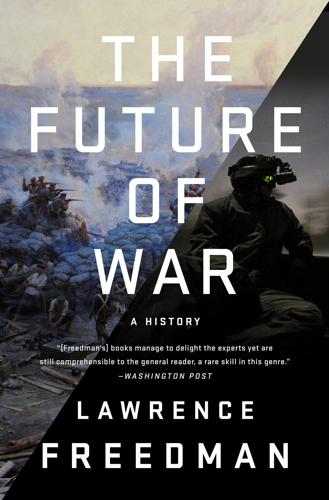
The Future of War
by
Lawrence Freedman
Published 9 Oct 2017
ISBN 978-1-61039-305-8 (HC) ISBN 978-1-61039-306-5 (EB) E3-20170928-JV-PC CONTENTS COVER TITLE PAGE COPYRIGHT DEDICATION INTRODUCTION PART ONE 1 Decisive Battle 2 Indecisive Battle 3 The House of Strife 4 Victory Through Cruelty 5 Failures of Peace 6 Total War 7 The Balance of Terror 8 Stuck in the Nuclear Age 9 A Surprise Peace PART TWO 10 A Science of War 11 Counting the Dead 12 Democracy and War 13 New Wars and Failed States 14 Ancient Hatreds and Mineral Curses 15 Intervention 16 Counter-Insurgency to Counter-Terrorism 17 From Counter-Terrorism to Counter-Insurgency 18 The Role of Barbarism 19 Cure Not Prevention PART THREE 20 Hybrid Wars 21 Cyberwar 22 Robots and Drones 23 Mega-Cities and Climate Change 24 Coming Wars 25 The Future of the Future of War ACKNOWLEDGMENTS ABOUT THE AUTHOR ALSO BY LAWRENCE FREEDMAN BIBLIOGRAPHY NOTES INDEX For Sir Michael Howard Teacher, Mentor, Friend INTRODUCTION My trade is courage and atrocities. I look at them and do not condemn.
…
The category could include both a nuclear war of short duration destroying whole civilisations, and some vicious local combat that had continued for years while neighbours barely paid attention. It has become reasonable to ask whether the more ferocious forms of gang warfare, hidden from view in the slums of modern mega-cities, should now count as armed conflict. The reason that the future is difficult to predict is that it depends on choices that have yet to be made, including by our governments, in circumstances that remain uncertain. We ask questions about the future to inform choices not to succumb to fatalism. By stressing this aspect of thinking about war, peace, and the use of armed force this book provides a reminder that history is made by people who do not know what is going to happen next.
…
The drama came from the tactical and operational, as these super-smart people made their complex systems do whatever they needed them to do. The strategic picture remained murky. They were fighting the evil and malign because they could not let them win. Behind all this lay some great political failure, but that was not where the story was to be found. [ 23 ] Mega-Cities and Climate Change In our world there are still people who run around risking their lives in bloody battles over a name or a flag or a piece of clothing but they tend to belong to gangs with names like the Bloods and the Crips and they make their living dealing drugs. FRANCIS FUKUYAMA, The End of History, 19921 As Fukuyama looked with optimism at the West’s liberal triumph in the early 1990s, there was also anxiety about whether a lack of anything serious to fight about would lead it into a soft decadence.
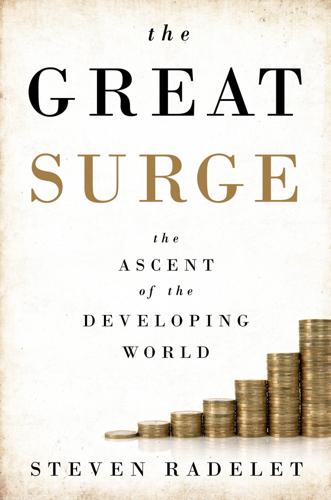
The Great Surge: The Ascent of the Developing World
by
Steven Radelet
Published 10 Nov 2015
Half the population of Asia will live in urban areas by 2020, and half the population of Africa will do so by 2035. Virtually all of the expected growth in world population between now and 2050 is expected to be concentrated in the urban areas of developing countries. Far more people will live in megacities with populations greater than 10 million people. In 1970 the world had only two megacities: New York and Tokyo. Today there are twenty-two, and sixteen of the twenty new ones are in developing countries in Asia, Latin America, and Africa. Greater urbanization means more crowded living spaces, more stress on local water sources, increased air and water pollution, new challenges in creating employment for low-skilled urban workers, and major difficulties in providing adequate water, sanitation, and garbage disposal facilities.
…
Abacha, Sani, 99, 113 Abdullah II, King of Jordan, 187 Abu Dhabi, 159 Abundance (Diamandis and Kotler), 300 Acemoglu, Daron, 13, 129, 140, 249 Achebe, Chinua, 72 Aden, Zheng He’s trip to, 152 Afghanistan, 9, 208, 285 education in, 215 as landlocked, 202, 205 Soviet invasion of, 134, 146 US war in, 8, 10, 118, 119, 141, 146 Africa, 37, 44, 46 agriculture in, 261 climate change and, 284 democracy in, 108, 110–11 GMOs in, 172 Green Revolution and, 170–73 growth in, 50, 189 malaria in, 211–13 megacities in, 277 mobile phones in, 157 pessimism about, 12 protests in, 102 resources in, 261 Africa Betrayed (Ayittey), 140 African National Congress Party (ANC), 143, 182, 185 agricultural productivity, 22, 25, 38, 305 agriculture, 37, 44, 45, 56–57, 166, 258, 283, 293 in Africa, 261 in Asia, 201 in China, 35 geography and, 204–5 Green Revolution and, 38, 79, 170–73, 204 growth in production of, 273–74 improvements in, 194–95 trade in, 273 AIDS, 20, 75, 81–82, 83, 94, 95, 173, 174–75, 182, 205, 214, 221, 246, 266 air defense identification zone (ADIZ), 288 air travel, 168–69, 169 Aker, Jenny, 177 Akuffo, Fred, 189 Albania, 50, 108, 159 Algeria, 114 life expectancy in, 78 poverty in, 36 Allende, Salvador, 143–44 aluminum, 53 American Association for the Advancement of Science (AAAS), 172, 281–82 American Indians, 112, 142 American Medical Association, 172 Amin, Idi, 127 Andes, University of the, 247 Andropov, Yuri, 134 Angola, 114, 145 forest loss in, 280 war in, 100 antibiotics, 77, 94, 267 antimicrobial resistance, 267 antiretroviral therapy (ART), 174, 214 apartheid, 44, 57, 68, 100, 103, 135, 141, 180, 182 Apple, 46 Aquino, Benigno, 143, 149 Aquino, Cory, 17, 104, 109, 184, 185, 186 Arabian Peninsula, 152 Arab Spring, 255, 263 Aral Sea, 285 Argentina, 100 financial crisis in, 255 slowing of progress in, 250, 262 Arias, Oscar, 18, 149, 184 Armenia, 113 and democracy, 248, 263 economic problems in, 255 Army Air Corps, US, 210 Arndt, Channing, 226, 227 Arnquist, Sarah, 176–77 Arrow, Kenneth, 62–63 artemisinin-based combination therapies (ACTs), 213, 267 Asia, 79 education in, 201 financial crisis in, 38, 39, 126, 144 health in, 201 megacities in, 277 values in, 121, 122–23 Asian Infrastructure Investment Bank (AIIB), 259 assassinations, 118 assembly, freedom of, 198–99 Australia, 25, 78, 167, 231, 281, 291 malaria in, 210 Austria, as landlocked, 202 authoritarianism, 3, 8, 22, 99, 101–3, 106, 107, 109, 120, 121–22, 125–29, 141, 146, 149, 188, 222, 224, 249–51, 255, 263–66 Ayittey, George, 140 Azerbaijan, 114 Babangida, Ibrahim, 99 Bali, 286 Bamako, 265 Banerjee, Abhijit, 14, 31 Bangladesh, 18, 37, 45, 127, 144, 159, 271 building collapse in, 162 data entry firms in, 178 democracy in, 124 education in, 87 garments from, 59 growth in, 6, 45, 238, 242, 271 inequality in, 67 jeans from, 56 MAMA in, 178 threats to gains in, 271–72 war in, 145 Zheng He’s trip to, 152 Ban Ki-moon, 284–85 banks, 56, 154, 241, 303 technology for, 175, 179 Bǎè Chuán, 152 bar associations, 110 Barlonyo camp, 287 Barre, Mohammed Siad, 99 Barro, Robert, 87 Bashir, Omar al-, 185 Batavia, 137 Bauer, Peter, 213, 220, 221 Bazzi, Sami, 225 bed nets, 94, 213 Belarus, 114, 185 Belgian Congo, 13, 140 Belize, 56, 69–70 benign dictators, 125–26 Benin, 103, 144, 216 Berlin Wall, fall of, x, 103, 123, 134, 143, 148 Bermeo, Sarah, 223 Better Angels of Our Nature, The (Pinker), 115 Bhavnani, Rikhil, 225 Bhote Koshi River, 203 Bill & Melinda Gates Foundation, 95, 161, 171, 212 biodiversity loss, 9, 63 biofuels, 281 Birdsall, Nancy, 298 Birendra Bir Bikram Shah Dev, King of Nepal, 122 Bismarck, Otto Eduard Leopold von, 146 Black Death, 276 black markets, 192 Boeing 707, 168 Boğaziçi University, 247 Bokassa, Jean-Bédel, 222 Boko Haram, 287 Bolivia, 162, 202, 205, 280 Bollyky, Thomas, 268 Boone, Peter, 225 border disputes, 288–91 Borlaug, Norman, 170 Botchwey, Kwesi, 189 Botswana, 9, 37, 207 aid to, 214, 216 as democracy, 98, 263 education in, 190 growth in, 5, 7, 15, 50, 126, 128, 141, 236 as landlocked, 202 life expectancy in, 81, 266 Bottom Billion, The (Collier), 118, 188, 202, 205, 217, 303 Bourguignon, François, 25, 27, 28 Brazil, 20, 22, 36, 38, 45, 155, 186 coastal vs. isolated areas in, 201 data entry firms in, 178 democracy in, 123 economic problems in, 186, 255 future of, 234 growth in, 6, 7, 20, 22, 45, 58, 235, 262 household income in, 50 inequality in, 66–67 infrastructure financing in, 259–60 innovation in, 302 natural capital in, 63 protests in, 263 reforms in, 186, 192 trade encouraged by, 155 universities in, 247 breast feeding, 178 British Royal Society, 172 British Shell Transport and Trading Company, 138 British South Africa Company, 180 Brown, Drusilla, 165 Brükner, Markus, 226 Brynjolfsson, Erik, 166, 300 budget deficits, 295 Buenos Aires, 201 Bulgaria, 7, 134, 143 Burkina Faso: demonstrations in, 281 education in, 87 as landlocked, 205 Song-Taaba Yalgré women’s cooperative in, 178 Burnside, Craig, 225 Burundi, 49 inequality in, 69–70 lack of growth in, 50 as landlocked, 202 Buthelezi, Mangosuthu, 185 Cabbages and Kings (O.
…
Abacha, Sani, 99, 113 Abdullah II, King of Jordan, 187 Abu Dhabi, 159 Abundance (Diamandis and Kotler), 300 Acemoglu, Daron, 13, 129, 140, 249 Achebe, Chinua, 72 Aden, Zheng He’s trip to, 152 Afghanistan, 9, 208, 285 education in, 215 as landlocked, 202, 205 Soviet invasion of, 134, 146 US war in, 8, 10, 118, 119, 141, 146 Africa, 37, 44, 46 agriculture in, 261 climate change and, 284 democracy in, 108, 110–11 GMOs in, 172 Green Revolution and, 170–73 growth in, 50, 189 malaria in, 211–13 megacities in, 277 mobile phones in, 157 pessimism about, 12 protests in, 102 resources in, 261 Africa Betrayed (Ayittey), 140 African National Congress Party (ANC), 143, 182, 185 agricultural productivity, 22, 25, 38, 305 agriculture, 37, 44, 45, 56–57, 166, 258, 283, 293 in Africa, 261 in Asia, 201 in China, 35 geography and, 204–5 Green Revolution and, 38, 79, 170–73, 204 growth in production of, 273–74 improvements in, 194–95 trade in, 273 AIDS, 20, 75, 81–82, 83, 94, 95, 173, 174–75, 182, 205, 214, 221, 246, 266 air defense identification zone (ADIZ), 288 air travel, 168–69, 169 Aker, Jenny, 177 Akuffo, Fred, 189 Albania, 50, 108, 159 Algeria, 114 life expectancy in, 78 poverty in, 36 Allende, Salvador, 143–44 aluminum, 53 American Association for the Advancement of Science (AAAS), 172, 281–82 American Indians, 112, 142 American Medical Association, 172 Amin, Idi, 127 Andes, University of the, 247 Andropov, Yuri, 134 Angola, 114, 145 forest loss in, 280 war in, 100 antibiotics, 77, 94, 267 antimicrobial resistance, 267 antiretroviral therapy (ART), 174, 214 apartheid, 44, 57, 68, 100, 103, 135, 141, 180, 182 Apple, 46 Aquino, Benigno, 143, 149 Aquino, Cory, 17, 104, 109, 184, 185, 186 Arabian Peninsula, 152 Arab Spring, 255, 263 Aral Sea, 285 Argentina, 100 financial crisis in, 255 slowing of progress in, 250, 262 Arias, Oscar, 18, 149, 184 Armenia, 113 and democracy, 248, 263 economic problems in, 255 Army Air Corps, US, 210 Arndt, Channing, 226, 227 Arnquist, Sarah, 176–77 Arrow, Kenneth, 62–63 artemisinin-based combination therapies (ACTs), 213, 267 Asia, 79 education in, 201 financial crisis in, 38, 39, 126, 144 health in, 201 megacities in, 277 values in, 121, 122–23 Asian Infrastructure Investment Bank (AIIB), 259 assassinations, 118 assembly, freedom of, 198–99 Australia, 25, 78, 167, 231, 281, 291 malaria in, 210 Austria, as landlocked, 202 authoritarianism, 3, 8, 22, 99, 101–3, 106, 107, 109, 120, 121–22, 125–29, 141, 146, 149, 188, 222, 224, 249–51, 255, 263–66 Ayittey, George, 140 Azerbaijan, 114 Babangida, Ibrahim, 99 Bali, 286 Bamako, 265 Banerjee, Abhijit, 14, 31 Bangladesh, 18, 37, 45, 127, 144, 159, 271 building collapse in, 162 data entry firms in, 178 democracy in, 124 education in, 87 garments from, 59 growth in, 6, 45, 238, 242, 271 inequality in, 67 jeans from, 56 MAMA in, 178 threats to gains in, 271–72 war in, 145 Zheng He’s trip to, 152 Ban Ki-moon, 284–85 banks, 56, 154, 241, 303 technology for, 175, 179 Bǎè Chuán, 152 bar associations, 110 Barlonyo camp, 287 Barre, Mohammed Siad, 99 Barro, Robert, 87 Bashir, Omar al-, 185 Batavia, 137 Bauer, Peter, 213, 220, 221 Bazzi, Sami, 225 bed nets, 94, 213 Belarus, 114, 185 Belgian Congo, 13, 140 Belize, 56, 69–70 benign dictators, 125–26 Benin, 103, 144, 216 Berlin Wall, fall of, x, 103, 123, 134, 143, 148 Bermeo, Sarah, 223 Better Angels of Our Nature, The (Pinker), 115 Bhavnani, Rikhil, 225 Bhote Koshi River, 203 Bill & Melinda Gates Foundation, 95, 161, 171, 212 biodiversity loss, 9, 63 biofuels, 281 Birdsall, Nancy, 298 Birendra Bir Bikram Shah Dev, King of Nepal, 122 Bismarck, Otto Eduard Leopold von, 146 Black Death, 276 black markets, 192 Boeing 707, 168 Boğaziçi University, 247 Bokassa, Jean-Bédel, 222 Boko Haram, 287 Bolivia, 162, 202, 205, 280 Bollyky, Thomas, 268 Boone, Peter, 225 border disputes, 288–91 Borlaug, Norman, 170 Botchwey, Kwesi, 189 Botswana, 9, 37, 207 aid to, 214, 216 as democracy, 98, 263 education in, 190 growth in, 5, 7, 15, 50, 126, 128, 141, 236 as landlocked, 202 life expectancy in, 81, 266 Bottom Billion, The (Collier), 118, 188, 202, 205, 217, 303 Bourguignon, François, 25, 27, 28 Brazil, 20, 22, 36, 38, 45, 155, 186 coastal vs. isolated areas in, 201 data entry firms in, 178 democracy in, 123 economic problems in, 186, 255 future of, 234 growth in, 6, 7, 20, 22, 45, 58, 235, 262 household income in, 50 inequality in, 66–67 infrastructure financing in, 259–60 innovation in, 302 natural capital in, 63 protests in, 263 reforms in, 186, 192 trade encouraged by, 155 universities in, 247 breast feeding, 178 British Royal Society, 172 British Shell Transport and Trading Company, 138 British South Africa Company, 180 Brown, Drusilla, 165 Brükner, Markus, 226 Brynjolfsson, Erik, 166, 300 budget deficits, 295 Buenos Aires, 201 Bulgaria, 7, 134, 143 Burkina Faso: demonstrations in, 281 education in, 87 as landlocked, 205 Song-Taaba Yalgré women’s cooperative in, 178 Burnside, Craig, 225 Burundi, 49 inequality in, 69–70 lack of growth in, 50 as landlocked, 202 Buthelezi, Mangosuthu, 185 Cabbages and Kings (O.
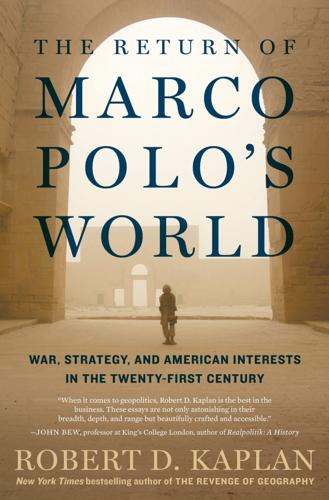
The Return of Marco Polo's World: War, Strategy, and American Interests in the Twenty-First Century
by
Robert D. Kaplan
Published 6 Mar 2018
The combination of violent upheavals and the communications revolution in all its aspects—from cyber interactions to new transportation infrastructure—has wrought a more claustrophobic and ferociously contested world: a world in which territory still matters, and where every crisis interacts with every other as never before. This is all intensified by the expansion of megacities and absolute rises in population. No matter how overcrowded, no matter how much the underground water table and nutrients in the soil have been depleted, people will fight for every patch of ground. On this violent and interactive earth, the neat divisions of Cold War area studies and of continents and subcontinents are starting to be erased as the Long European War passes from living memory.
…
For untold centuries, Beijing’s only problem was the so-called barbarians on the steppelands partially encircling Han China’s arable lowland cradle: the Tibetans, the Turkic Muslim Uighurs, the Inner Mongolians, and others, who either had to be violently subdued, bribed, or demographically overwhelmed, exactly as they must be today. China’s twenty-two urban clusters, each containing at least one megacity, all happen to be located within Han China’s arable cradle, which constitutes the territory of Chinese imperial dynasties throughout history and excludes this semicircle of steppelands. It was only in the mid-eighteenth century that the last of those dynasties, that of the Qing or Manchus (who were themselves outsiders), expanded into the barbarian desert and steppe regions, thus preparing the geographical context of the current Chinese state—a state that overlaps with Muslim Central Asia.
…
And as the principal geographical satellite of the Afro-Eurasian landmass,*41 North America will remain pivotal to world history even while it is protected from many of the disruptions that will overtake Afro-Eurasia itself. For this is a world that will be more volatile precisely because of the growth of middle and working classes that are less stoical than the rural poor, of which there will be less. Indeed, it is the shantytown, the incubator of misery and utopian ideology, that will help define the megacities of Afro-Eurasia. The more urbanized, the more educated, and even the more enlightened the world becomes, counterintuitively, the more politically unstable it becomes, too.*42 This is what techno-optimists and those who inhabit the world of fancy corporate gatherings are prone to miss: They wrongly equate wealth creation—and unevenly distributed wealth creation at that—with political order and stability.
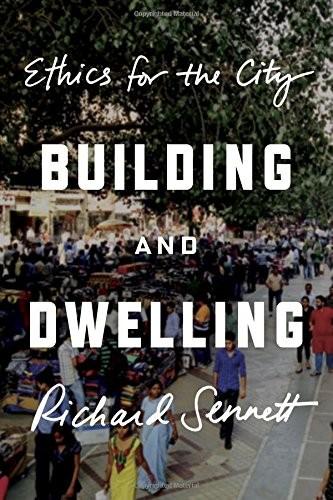
Building and Dwelling: Ethics for the City
by
Richard Sennett
Published 9 Apr 2018
This system flourished for about twenty years before becoming somewhat squashed by top-down power, but even more by the sheer scale of people who wanted to be included in the process as the city grew in size. In Brazil, as megacities emerged, negotiations between a very large cluster of localities began to lose coherence and stretch out endlessly throughout the year. Moreover, the vast wave of migrants which create a megacity were often not integrated into the organizations and assemblies required for participatory budgeting. Enter the smart city, via the smartphone and big-data assemblage. Huge ‘inputs’, i.e. shifting votes, can be handled, as changes in the distribution of funds over many communities are calculated in real time.
…
Cf. Steef Buijs, Wendy Tan and Devisari Tunas (eds), Megacities: Exploring a Sustainable Future (Rotterdam: Nai010 Publishers, 2010). 11. Cf. Saskia Sassen, The Global City (Princeton: Princeton University Press, 1998). 12. William H. Janeway, Doing Capitalism in the Innovation Economy: Markets, Speculation and the State (Cambridge: Cambridge University Press, 2017), Chapter 4, passim. 13. Saskia Sassen, Cities in a World Economy, 4th edn (Los Angeles: Sage Publications, 2012). 14. Liu Thai Ker, ‘Urbanizing Singapore’, in Megacities, ed. Buijs, Tan and Tunas, pp. 246–7. Singapore stands out as an exception to this rule. 15.
…
Garden cities, in Ebenezer Howard’s original conception, were meant to contain about 60,000 inhabitants; such a place with so few people would be a mere blip in the Shanghai landscape, or in its newly developing satellite cities, where 3 to 4 million people was to be the norm: you’d need a thousand garden cities threaded together and functionally related to make the Shanghai metropolitan region of 2050. Similarly, Corbusier’s original Plan Voisin would have housed, by my rough calculation, 40,000–45,000 people at most. Urban growth of the Chinese sort exposes the limits of either plan in creating coherence for a megacity.26 Of the three Western founders, Frederick Law Olmsted and his conviction about the sociable glue of green space was the most provoking to her, because the most troubling. Landscape projects in the new Shanghai have not glued people together; indeed, the forest of towers, a realization of the Plan Voisin on a huge scale, has engineered a social crisis.
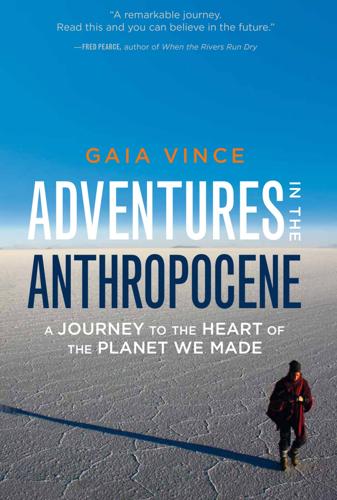
Adventures in the Anthropocene: A Journey to the Heart of the Planet We Made
by
Gaia Vince
Published 19 Oct 2014
Cities have grown from the once vast Nineveh – home to 120,000 people in 650 BC – to the megacities of the Anthropocene with more than 10 million inhabitants. The Anthropocene is the urban age. Our species is undergoing the biggest migration in human history – already more than half of us live in cities; by 2050, around 7 billion of us will. We have become Homo urbanus – a different creature, a faster-thinking, more reactive, more genetically diverse human. Human history is increasingly urban history. A million-person city will be built every ten days over the next eighty years.1 There are currently around thirty megacities on the planet, and by 2050 they are expected to merge into dozens of megaregions, like Hong Kong–Shenzhen–Guangzhou in China, where more than 100 million people will live in a seemingly endless city.
…
Canals and parks have been built, the streets are cleaned and drainage ditches maintained. Skyscrapers pierce the heavens at a faster rate than in any other city on the continent. Medellín is no megacity, but smaller cities like this will bear the brunt of humanity’s great urbanisation. Less economically important nationally and internationally, such second-tier cities often miss out on the attention and resources directed at improving megacities and tourist centres. Nevertheless, the example of Medellín shows that the vast migration from countryside to city needn’t be a crisis but an opportunity. That’s something Brazil, one of the most economically unequal countries, has taken to heart.
…
The urban revolution of the Anthropocene could prove the solution to many of the environmental and social problems of our age, allowing humans to inhabit the planet in vast numbers but in the most sustainable way. Or, it could finally prove our species’ undoing, the apocalyptic version of the dystopian megacity so often portrayed in science fiction. Urbanisation in many of the places I visited in the developing world is mired in squalor, the accumulation of rubbish, and polluted waters and land. This is the result of fast, unplanned migration to what are often ‘illegal’ sites, meaning that even if municipalities wanted to provide infrastructure such as waste collection and sewerage they would struggle.
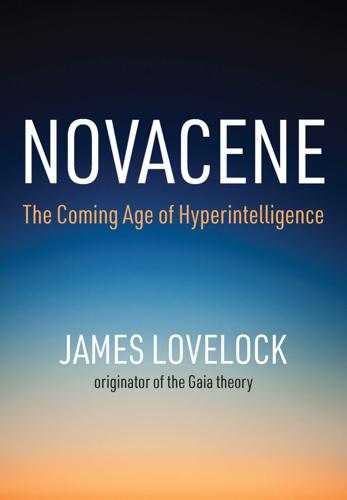
Novacene: The Coming Age of Hyperintelligence
by
James Lovelock
Published 27 Aug 2019
It had been caused by the eruption of the Laki volcano in Iceland which emitted huge quantities of ash and sulphur gases that reacted with the air to form aerosols of sulphuric acid. Climatologists can now test the reliability of their experimental predictions by using the Laki eruption as if it were an experimental perturbation to see how well they agree with the climate change at Selborne. From White's Selborne to the megacities of today with populations of 30 million or more is not simply a development, it is an explosive transformation of the world, a massive increase in the intensity of life on Earth. Nothing like it has ever happened before. The Anthropocene may not have been officially recognized; it is, nevertheless, the most important period in our old planet's long history. 8 Acceleration Gilbert White's book was later seen as portraying a world we have lost and now lament.
…
The misuse of science surely is the greatest form of sin. 10 Cities Cities have been the most spectacular development of the Anthropocene. Very few people used to live in cities, but now more than half the world population does; in the more developed world the figure may be closer to 90 per cent. No phenomenon more dramatically expresses the world-changing power of our age than the megacity. Greater Tokyo (population 38 million), Shanghai (34 million), Jakarta (31 million) and Delhi (27 million) currently top the list, but the numbers are changing all the time. This is not solely an effect of the rising world population, it is also a natural outcome of an era when urban employment became more profitable and available than rural.
…
(Rossum's Universal Robots) 91, 114 capitalism, global 68 carbon 109 compounds 72 carbon dioxide 5, 10, 11, 57, 64, 105, 110 interglacial levels 55 possible implications of over-reducing levels 56 chalk 64 chlorofluorocarbons (CFCs) 38, 69, 71 cities 40, 50–53 Clarke, Arthur C. 59 climate change global warming 54, 57–8, 60–62, 65, 111 Paris Conference on (2016) 55 possible implications of over-reducing carbon dioxide levels 56 Clynes, Manfred 29 coal 33–5 communication cyborg 99–101 and evolution of speech 96–9 Marconi and electronic information transfer 128 telepathic 100–101 computer code 95 computer programs 79–80, 82, 83, 84 design limitations, lacking intuitive awareness 92 computing systems 92 based on an adaptive neural network 113–14 evolution of adaptive 114 parallel 82 PC chips 92 cosmos age of 3–4 and anthropic principle 25–7, 75, 89, 123 awakening to consciousness 3, 23, 26–8, 121–3 conventional scientific view of 15 dependence of the knowing cosmos on human survival 23–4 Grand Unification epoch 39 information as fundamental property of 26, 75, 87–8 purpose 26–8, 123 size of 3 cyborgs 29–30, 88–9, 101–3, 106, 119–20, 123 and Asimov's three laws of robotics 94 communication 99–101 cooperation with humans 102–3, 104–5, 106–8, 110, 115 and Earth's temperature 106–8, 115 emergence of 85–6, 118–20 evolution 29–30, 94–5, 101, 118, 123 human diplomacy and life with 118–20 as masters over humans 118–20, 123 parallel processing 82 and the quantum world 102 self-written code 94–5 space travel possibilities 108–9 telepathy 100–101 and war 112–17 Daisyworld 13 ‘Data’ (Star Trek android) 93 DeepMind (AI technology company) 79, 80 Deep Blue (computer) 79–80 deep learning technology 82 Delhi 50 diamond 109 chips 44, 109 diesel 72 digital technology 82–3 dimethyl sulphide 60 DNA 109, 127 dolphin intelligence 23 drones 91, 101, 113, 114, 116 Earth/Gaia age of 3, 4, 57–8 in Anthropocene 37–40; see also Anthropocene and asteroid strikes 6–8, 58–9, 63, 65–6 beginning of life on 3, 129–30 capacity to know itself 130 cooling mechanisms 11, 15, 30, 64, 66, 105 feedback loops 65 Gaia theory 12–13, 14–17, 26–7, 106 geoengineering 106–8 glaciation 55 Great Dying 6–7 in Novacene 30, 106–11; see also Novacene as an ocean planet 59–60, 64, 105–6; see also oceans population growth 67 radiation of excessive heat 11, 15, 30 temperature, see temperature of the Earth ecomodernism 67–9 The Economist 112–13 ecosystems 7, 19 Einstein, Albert 20, 21, 102 electrical power 70 electromagnetic pulses (EMPs) 114 electron capture detector (ECD) 38 electronic life 85, 105, 109, 114, 118 cyborgs, see cyborgs exoplanet possibilities of 9–10 European Geophysical Union 17 evolution 27, 28, 129–30 of adaptive computer systems 114 Anthropocene 35–6, 43, 70 chance, necessity and 85 cybernetic 29–30, 94–5, 101, 118, 123 and entry to the Novacene 83–6 of the eye 97 by intentional selection 43, 84, 86, 88–9 by natural selection 3–4, 70, 114; see also natural selection of nesting insects, and city life 51–2 Novacene 29–30, 94–5, 101, 110–11 from self-written code 94–5 of speech 96–9 exoplanets 3, 9–10, 121–2 extremophiles 62, 106 eyes, evolution of 97 Faraday, Michael 70 feedback loops 65 feminine intuition 18, 20 Fermi, Enrico 121 Feynman, Richard 102 First World War 45 fossil fuels 49 Freedman, Sir Lawrence 48 Frege, Gottlob 16 Freud, Sigmund 90 Gaia, see Earth/Gaia galaxies 3, 27 Gatling, Richard, rotary cannon 45 geoengineering 106–8 glaciation 55 global warming 54, 57–8, 60–62, 65, 111 Go (game) 79–80, 84, 88 God 24, 26, 68 Goldilocks Zone 10–11 graphene 109 greenhouse effect 5, 12, 60–61, 107 Greens, the 57, 71, 72 Guernica bombing 45, 48 Hamilton, Clive 68 Hansen, James 63 Hardy, Thomas 124 Havel, Václav 26–7 Hawking, Frank 62–3 Hawking, Isobel Eileen 63 Hawking, Stephen 63 Heaviside, Oliver 128 helium 11 Hiroshima 46 Hooke, Robert 33 human race age of species, Homo sapiens 3 aloneness of 3–5, 121, 122 and the Anthropocene, see Anthropocene at edge of extinction 6–13 guilt feelings over achievements 56 as prime understanders of cosmos 5 temperature tolerance 62, 63–4 hunter-gatherers 21, 67, 125 hydrogen 11, 63–4, 110 Indonesia 7 industrial pollution 37–8 Industrial Revolution 34–5, 37, 70 information 21, 74–5, 87 and anthropic principle 26, 75, 89, 123 capture and storage of 28, 74–5 communicating, see communication conversion of sunlight into 28, 39, 74–5, 87 cyborg retrieval of 101 as a fundamental property of the universe 26, 75, 87–8 junk information 111 Marconi and electronic information transfer 128 maximum transmission rate 81 and neurons 81 theory 88 unconscious 14; see also intuition units of 88, 89 instinct 17, 19, 20, 93 see also intuition intelligence/intelligent life 3, 4, 26, 102–3 AI, see artificial intelligence of animal species 23, 51–2 and cosmic purpose 26–8 cybernetic, see cyborgs distinguishing feature of human intelligence 23 dolphin intelligence 23 electronic, see artificial intelligence; cyborgs; electronic life humanoid ideas of intelligent beings 90–92, 93–4 intelligence/intelligent life (Cont.) hyperintelligence 29, 117, 122 natural selection for 27 social intelligence of bees 51–2 intentional selection 43, 84, 86, 88–9 intuition 13, 14, 18–20, 22, 38; see also instinct AI 80 computer design limitations, lacking intuitive awareness 92 denigration of 20, 99 feminine 18, 20 and invention 38, 99 and parallel processing 92–3 and telepathy 100–101 iodine 60 Jakarta 50 Jefferson, Thomas 52 Jet Propulsion Laboratory, California 47–8 junk information 111 Kasparov, Garry 79–80 Kline, Nathan 29 Laki volcano, Iceland 40 Laplace, Pierre-Simon 18–19 Latour, Bruno 17 LAWS (lethal autonomous weapons systems) 115–17 Lidwell, Owen 62 life chance, necessity and the appearance of 85 and Earth's temperature 11, 15, 30, 62, 63–4, 105–6 electronic, see cyborgs; electronic life evolution of, see evolution on exoplanets 3, 9–10, 121–2 intelligent, see intelligence/intelligent life longevity of life forms 4 Novacene 86, 88–9; see also cyborgs; electronic life spotting life on another planet 127 and zone of habitability/Goldilocks Zone 10–11 limestone 64 linear logic, see logic, linear logic, linear 13, 14, 15, 16, 18, 21, 93, 94, 100, 102 Lotka, Alfred 19 Lovelace, Ada 83 Lovelock, Nell 124 Lovelock, Sandy 125 Lovelock, Tom 124–5 Lovelock family 124–5 Luftwaffe 45 Lynas, Mark 67–8, 69 Marconi, Guglielmo 128–9 Mars 6, 8–9, 10, 59, 108 Mariner mission 126–7 The Matrix 108 Maxwell, James Clerk 16 megacities 40, 50 memory 120 Mercury 10, 21, 22 methane 65, 72 methyl iodide 60 Monod, Jacques 85 Moon 6, 58, 126–7 soft landing on 25, 126 Moore, Gordon 43 Moore's Law 43–4, 82–3, 86 Morton, Oliver: The Planet Remade 107 multiverse theory 26 Mumford, Lewis 45 Musk, Elon 115 Nagasaki 46 NASA 24–5, 126–7 natural selection 3–4, 70, 84, 88, 98, 114 for intelligence 27 neurons 81 new atheists 27 Newcomen, Thomas 33, 128 steam engine 34–6, 87, 124 Newton, Isaac 18–19 laws of planetary motion 21 Novacene and AlphaZero 80, 82 and autonomous weapons 115–17 and the conscious cosmos 121–3 cyborgs, see cyborgs and engineering 83–6; see also cyborgs evolution 29–30, 94–5, 101, 110–11 and Gaia 30, 106–11 likely duration 39 and Marconi 128–9 and Moore's Law 43–4, 82–3, 86 rise of 30, 80, 82–6 speech and writing delaying emergence of 98–9 nuclear power/energy 46, 48–9, 61, 73 nuclear weapons 7, 46–9, 114 oceans 55, 59–60, 63, 64, 107, 110, 129 original sin 56 Orwell, George 4 oxygen 28, 35, 48, 63–4, 108, 109, 110 packaging 72 Palaeocene/Eocene Thermal Maximum 65 parallel processing 82, 92–3 Paris Conference on Climate Change (2016) 55 permafrost 65 petrol 72 Philosophical Transactions of the Royal Society 19 photosynthesis 28, 39, 87, 109 Planck, Max 18–19 plastics 71–2 Poincaré, Henri 18–19 polar ice caps 65 pollution 54, 55, 74 industrial 37–8 radioactive 46 Popper, Karl 16 population growth 67 quantum theory 26, 96, 102 radioactivity 46 railways 41–2 re-wilding 72 reforestation 72 religion 24; see also God green 69 and original sin 56 Rhodes, Richard 46 robots 90, 91, 93–4 rocket speed 42 Roswell incident 121 Russell, Bertrand 16 Second World War 46, 112 selenium 60 Shanghai 50 Shannon, Claude 88 Shelley, Mary: Frankenstein 7 shipbuilding 33–4 Siberian Traps 6–7 silicon 109 chips 43–4 Silverstein, Abe 126 Socrates 20 solar power 73 see also Sun/solar energy solar system 4, 17 speech, evolution of 96–9 stars 3, 4, 27, 121 main sequence 4, 11, 13, 105; see also Sun/solar energy steam engines 70 Newcomen's 34–6, 87, 124 Watt's governor 15–16 Stockfish (computer program) 80 Stoermer, Eugene 37 sulphur 60 Sun/solar energy 4–5, 28, 35, 39, 48, 75; see also sunlight heat emission, and Earth's temperature 5, 10–13, 105, 106–7, 111 sunlight 5, 30, 35, 61 conversion into information 28, 39, 74–5, 87 and the Industrial Revolution 34, 35 and photosynthesis 28, 87 supercritical steam 63, 64 Szilard, Leo 46 Tambora, Mount 7 telegraphy, wireless 128 telepathy 100–101 Tellus journal 17 temperature of the Earth 5, 55–6, 57–66 critical upper limit for life 62, 63–4, 105 current average 65 and cyborgs 106–8, 115 and extremophiles 62 Gaia's cooling mechanisms 11, 15, 30, 64, 66, 105 global warming 54, 57–8 and greenhouse effect 5, 12, 60–61, 107 and human skin cells 62 and life 11, 15, 30, 62, 63–4, 105–6 Palaeocene/Eocene Thermal Maximum 65 possible implications of over-reducing carbon dioxide levels 56 and radiation of excessive heat 11, 15, 30, 60, 107–8 and sea temperature 60, 64 and the Sun 5, 10–13, 105, 106–7, 111 supercritical state 63–4 and water vapour 60–61, 107 Tennyson, Alfred, Lord 130 thinking and anthropic principle 25–7, 89 intuitive, see intuition logical, see logic, linear Tipler, Frank (with John Barrow): The Anthropic Cosmological Principle 24, 25–6, 27, 123 Tokyo, Greater 50 trains 42 transport 42–3 trench warfare 45 Tsar Bomba 46 UFOs 121 unconscious mind 19, 20 see also intuition Venus 10, 64 volcanic events 66 devastating 6–7, 63 Laki 40 Vulcan 21–2 warfare 45–9, 54; see also nuclear weapons and cyborgs 112–17 water vapour 60–61, 107 Watson, Andrew 13 Watt, James 15, 70 Watt governor 15–16 White, Gilbert 39, 41 The Natural History of Selborne 39–40, 41 Wilson, Edward O. 51 wind power 73 Wittgenstein, Ludwig 16, 96 Wood, Lowell 106 Wordsworth, William 42, 54 zone of habitability 10–11
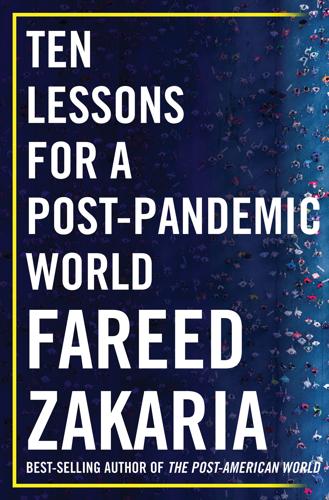
Ten Lessons for a Post-Pandemic World
by
Fareed Zakaria
Published 5 Oct 2020
To accommodate this influx, not only are new cities rising up, but existing ones are getting bigger. In 1800, there were just two cities with at least one million inhabitants, London and Beijing. In 1900, there were around fifteen. By 2000, the number had soared to 371. And by 2030, it is projected to surpass 700, of which 125 will be in China. By then, the world can expect to have over forty megacities, those with 10 million inhabitants or more. All past prophecies of the decay of cities have proved wrong. Cities will endure. Urbanization, especially in developing countries, will likely recover and continue at more or less its pre-pandemic pace. No rural awakening is at hand. Most of the people who leave one city will simply move to another, perhaps smaller one.
…
Even many of the most effective environmental groups were founded by city slickers—from the Sierra Club to Greenpeace. And it was in America’s cities that protesters gathered to demand policing reforms after the murder of George Floyd. Urbanization will continue apace in developing countries. In fact, by 2030, they will be home to some 80% of the world’s megacities. But in the developed world, urbanization has probably peaked. In the United States, the share of the urban population is currently 83%. It may creep up to 89% by 2050, but the share seems to be approaching a natural limit. Researchers note that some big cities, such as New York, Los Angeles, and Chicago, have seen some recent slippage in population, and some worry about a repeat of the 1970s, when New York lost 10% of its residents.
…
Her popularity is understandable—even driving a brand-new Peugeot loses some of its appeal if everything you need is within walking distance. Public transportation, too, might become less crowded, a welcome outcome amid lingering concerns about social distancing. If the Paris plan moves forward, other mayors may try to make their own megacities work and feel more like small, walkable communities. To provide safety for the greater numbers of runners, walkers, and bikers who now avoid the subway, cities like Barcelona and New York banned cars from some streets. Parking spaces were converted into outdoor seating for socially distant dining.
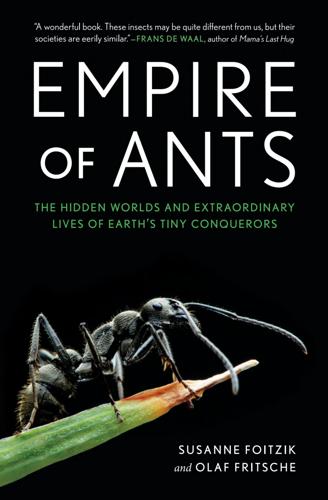
Empire of Ants: The Hidden Worlds and Extraordinary Lives of Earth's Tiny Conquerors
by
Susanne Foitzik
and
Olaf Fritsche
Published 5 Apr 2021
Finely Tuned Navigation Getting around the nest A well-constructed road network Behind the beech, right as far as the oak Chasing the sun Sunshine on a cloudy day Desert-dwelling masters of navigation Rewinding the tape Celestial compasses Chapter 6. Savage Hordes No mercy A special kind of tent The queen is dieting again This land is my land Sausage flies and biting sutures The Prince of Insects Chapter 7. A Garden for a City of Millions The flower children of the ant community Birth of a megacity A thousand rooms and three million inhabitants The fungal issue Advanced gardening It’s what’s on the inside that counts Small but deadly Chapter 8. A Treehouse for the Nation Theft = food Will garden for room and board An army of junkies Inside the devil’s garden A flowering trash pile A city in the trees Chapter 9.
…
The chemical code Nose your place The real chemtrails Drums and strings Chapter 5 Finely Tuned Navigation Getting around the nest A well-constructed road network Behind the beech, right as far as the oak Chasing the sun Sunshine on a cloudy day Desert-dwelling masters of navigation Rewinding the tape Celestial compasses Chapter 6 Savage Hordes No mercy A special kind of tent The queen is dieting again This land is my land Sausage flies and biting sutures The Prince of Insects Chapter 7 A Garden for a City of Millions The flower children of the ant community Birth of a megacity A thousand rooms and three million inhabitants The fungal issue Advanced gardening It’s what’s on the inside that counts Small but deadly Chapter 8 A Treehouse for the Nation Theft = food Will garden for room and board An army of junkies Inside the devil’s garden A flowering trash pile A city in the trees Chapter 9 Milking It: Ants and Their Livestock Manna from heaven On land and on water Team players Adopted by ants All good things come to an end The oppressed becomes the oppressor Keeping caterpillars Behind enemy lines Animal husbandry for dummies Eating—and not getting eaten Chapter 10 On Parasites and Slave-makers Gang warfare The Magnificent Seven The joys of living together When ants just won’t let go When recruitment gets brutal The fight for the honeypots The queen is a Trojan horse Professional slave-makers It’s all in the genes The victims’ bloody revenge Six-legged Spartacus The enslaved, but not as we know them Chapter 11 Physician, Heal Thyself Boils, pimples, and lumps False fruits Long-lived and world-weary That darn tapeworm!
…
Perhaps an aggressive neighbor has just moved in and it makes sense to get out of the way. Sometimes, it’s the fault of nasty researchers who dig up the nest and take part of the colony back to their laboratories. Whatever triggers the move, the colony faces a huge project, which, depending on its size, can be akin to relocating a megacity as big as Tokyo. Before embarking on this mammoth task, the colony must first take an urgent look at the local property market. A handful of prospective buyers—scouts—move out, checking every available nook and cranny to determine whether one would be suitable for their colony. Their list of requirements is a long one.

Stakeholder Capitalism: A Global Economy That Works for Progress, People and Planet
by
Klaus Schwab
Published 7 Jan 2021
The trend was notable everywhere in the world, but the most important transformation took place in Asia. Megacities of up to 20 million people grew almost from villages, especially in China and India, which together account for about half of the world's megacities. Wuhan, a city of 11 million, had barely registered on the global consciousness before a virus outbreak in 2020 brought it to the world's attention. In 1950, Wuhan had been three towns whose combined population barely numbered a million. The urbanization trend shows no signs of abating. By 2050, the UN says, the reversal will be complete. Two-thirds of the global population will live in cities and megacities,30 and only a third will remain in rural areas.
…
India also remained largely unindustrialized, with hundreds of millions of people living on the countryside, earning only what they could get from small-scale farming. The resulting socioeconomic picture until well into the 1990s was one of a massive rural population living close to or under the poverty line and another large part of the population trying to come by in the country's mega-cities, which nevertheless offered less opportunities for advancement than those in Japan, the Asian Tigers, or China. Starting the 1980s, however, some entrepreneurs started to gradually change the face of this rural, under-industrialized India. As the computer revolution took off, some entrepreneurial individuals, often hailing from the country’s Indian Institutes of Technology (IIT), managed to build some of the world’s most successful IT outsourcing firms, such as Infosys and Wipro.
…
Møller–Mærsk) [Denmark], 90, 167–168, 199–201, 202–207, 208, 213, 215 Mærsk Drilling, 205 Mærsk Mc-Kinney Møler ship, 200 Mærsk Oil, 205 Mærsk Tankers, 205 Magellan, Ferdinand, 101 Maisonrouge, Jacques, 11 Ma, Jack, 128 Majendie, Adam, 229 Majority Action, 216 Malaysia economic recession (1997) in, 98 inclusive approach to government in, 186 predicted economic growth (2020–2021) in, 65–66 Maluku islands spices, 97 MAN Energy Solutions (Denmark), 117–118 Mao Zedong, 56, 57 Marco Polo, 99 Marriage rights (Singapore), 123 Marshall, George, 6 Marshall Plan (US), 6–7 Marx, Karl, 105, 131 Massey University, 223 Maybach (German manufacturer), 4 Mazzucato, Mariana, 112, 184–185, 191, 234 McKinley, William, 133 McKinsey's Global Institute, 197 Medicaid, 135 Medicare, 135 Megacities, 159 Mellon, Andrew, 132 Mercedes (Germany), 9 Merkel, Angela, 79, 81, 83 #Me Too movement, 250 Mexico health coverage disparities in, 43 IT and Internet revolution role in expanding economy of, 137 “21st century socialism” of, 225 Micronesia, 181 Microplastics pollution, 50 Microsoft (US), 69, 126, 127, 137, 143, 209, 211 EU's anti-competition ruling against, 139–140, 141 Microsoft Office and Microsoft Windows products of, 139 Middle Eastern countries emerging markets in, 63 Locust–19 plague (2020) in, 176 OPEC membership among, 12 Migration increasing tendency of countries to stem, 177 as reminder of interconnectedness of people, 177 Migration Agency (IOM) [UN], 52 Milanovic, Branko, 45, 46, 84, 137, 138, 173 Milanovic's First Technological Revolutions, 45fig–46 Minimum rights rules (European Parliament) [2019], 243 Les Misérables (Hugo), 131 Mittelstand (Germany), 7, 12 Modern Company Management in Mechanical Engineering (Schwab, Kroos, Maschinenbau-Anstalten), 174, 175fig Modi, Prime Minister (India), 68 Modrow, Hans, 78 Mohammed, 99 Møller, A.

Stakeholder Capitalism: A Global Economy That Works for Progress, People and Planet
by
Klaus Schwab
and
Peter Vanham
Published 27 Jan 2021
The trend was notable everywhere in the world, but the most important transformation took place in Asia. Megacities of up to 20 million people grew almost from villages, especially in China and India, which together account for about half of the world's megacities. Wuhan, a city of 11 million, had barely registered on the global consciousness before a virus outbreak in 2020 brought it to the world's attention. In 1950, Wuhan had been three towns whose combined population barely numbered a million. The urbanization trend shows no signs of abating. By 2050, the UN says, the reversal will be complete. Two-thirds of the global population will live in cities and megacities,30 and only a third will remain in rural areas.
…
India also remained largely unindustrialized, with hundreds of millions of people living on the countryside, earning only what they could get from small-scale farming. The resulting socioeconomic picture until well into the 1990s was one of a massive rural population living close to or under the poverty line and another large part of the population trying to come by in the country's mega-cities, which nevertheless offered less opportunities for advancement than those in Japan, the Asian Tigers, or China. Starting the 1980s, however, some entrepreneurs started to gradually change the face of this rural, under-industrialized India. As the computer revolution took off, some entrepreneurial individuals, often hailing from the country’s Indian Institutes of Technology (IIT), managed to build some of the world’s most successful IT outsourcing firms, such as Infosys and Wipro.
…
Møller–Mærsk) [Denmark], 90, 167–168, 199–201, 202–207, 208, 213, 215 Mærsk Drilling, 205 Mærsk Mc-Kinney Møler ship, 200 Mærsk Oil, 205 Mærsk Tankers, 205 Magellan, Ferdinand, 101 Maisonrouge, Jacques, 11 Ma, Jack, 128 Majendie, Adam, 229 Majority Action, 216 Malaysia economic recession (1997) in, 98 inclusive approach to government in, 186 predicted economic growth (2020–2021) in, 65–66 Maluku islands spices, 97 MAN Energy Solutions (Denmark), 117–118 Mao Zedong, 56, 57 Marco Polo, 99 Marriage rights (Singapore), 123 Marshall, George, 6 Marshall Plan (US), 6–7 Marx, Karl, 105, 131 Massey University, 223 Maybach (German manufacturer), 4 Mazzucato, Mariana, 112, 184–185, 191, 234 McKinley, William, 133 McKinsey's Global Institute, 197 Medicaid, 135 Medicare, 135 Megacities, 159 Mellon, Andrew, 132 Mercedes (Germany), 9 Merkel, Angela, 79, 81, 83 #Me Too movement, 250 Mexico health coverage disparities in, 43 IT and Internet revolution role in expanding economy of, 137 “21st century socialism” of, 225 Micronesia, 181 Microplastics pollution, 50 Microsoft (US), 69, 126, 127, 137, 143, 209, 211 EU's anti-competition ruling against, 139–140, 141 Microsoft Office and Microsoft Windows products of, 139 Middle Eastern countries emerging markets in, 63 Locust–19 plague (2020) in, 176 OPEC membership among, 12 Migration increasing tendency of countries to stem, 177 as reminder of interconnectedness of people, 177 Migration Agency (IOM) [UN], 52 Milanovic, Branko, 45, 46, 84, 137, 138, 173 Milanovic's First Technological Revolutions, 45fig–46 Minimum rights rules (European Parliament) [2019], 243 Les Misérables (Hugo), 131 Mittelstand (Germany), 7, 12 Modern Company Management in Mechanical Engineering (Schwab, Kroos, Maschinenbau-Anstalten), 174, 175fig Modi, Prime Minister (India), 68 Modrow, Hans, 78 Mohammed, 99 Møller, A.
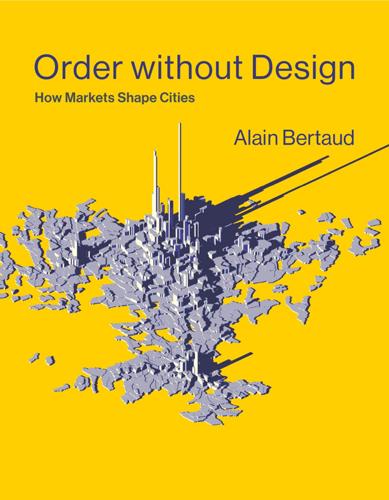
Order Without Design: How Markets Shape Cities
by
Alain Bertaud
Published 9 Nov 2018
The distribution of cities in figure 8.6 shows the preponderance of urban development in Africa and Asia, areas with the highest growth rates for megacities as well as for smaller cities. The shift in the economic center of gravity of the world, from North America and Western Europe toward Asia, which occurred at the beginning of the twenty-first century, is put in evidence on the graph; while some megacities in Asia are growing at more than 3 percent a year, megacities in Europe, Latin America, and North America are growing at less than 2 percent a year. In Asia, the large investment in infrastructure that took place during the past 20 years has stimulated the growth of more cities by making trade easier and transport less costly.
…
Improvements to transport technology have also made possible the spatial concentration of both people and fixed capital. Economists describe fixed capital as factories, office buildings, houses, apartment buildings, community facilities, and infrastructure. In the past 50 years, increasing returns to scale in agglomeration economies as a result of this spatial concentration have led to the emergence of megacities. The potential economic advantages of large cities are reaped only if workers, consumers, and suppliers are able to exchange labor, goods, and ideas with minimum friction and to multiply face-to-face contacts with minimum time commitments and cost. As a city grows, it is important to monitor mobility by comparing how average travel times and transport costs vary over time, as productivity cannot increase without fast and cheap travel (see chapter 5 for a full discussion of travel times and transport costs).
…
Mobility generates not only benefits but also costs, including congestion, pollution, noise, and accidents. To reduce those nuisances, many urban planners advocate limiting or at least discouraging mobility. They dream of creating cleverly planned land use arrangements that would require only short trips easily covered by walking or bicycling, even in megacities. These utopian land use arrangements usually rely on complex land use regulations2 that would enable planners to match employers’ locations with employees’ residences. Mobility is an urban necessity that must be encouraged, not curtailed. Poor mobility keeps much of the economic potential of existing large cities from being realized.
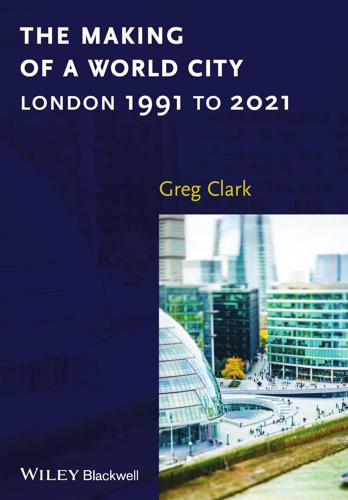
The Making of a World City: London 1991 to 2021
by
Greg Clark
Published 31 Dec 2014
The third section of the book looks forward to the next phase of London as a world city and offers a panorama from which to assess its future prospects. In Chapter 10 I explore the topology of the global urban system in 2015, drawing on the insights of numerous urban benchmark studies. I evaluate the respective merits of the top tier of cities, and contemplates which of the emerging megacities exert the most compelling pressures on (and provide opportunities for) London. The chapter concludes with ten factors of success which the competitive urban system demands that both established and prospective world city leaders consider. Introduction: Honor Chapman and London: World City 9 London’s current standing within this revised global system of cities is explored in comprehensive detail in Chapter 11.
…
It also has valuable, if not always optimal or replicable, experience in assembling a metropolitan government structure, pursuing large-scale renewal projects and tackling pervasive worklessness. London’s progress both reflects and shapes its own unique ‘DNA’. I explain how this DNA is instructive for established world cities, emerging megacities, and fast-growing ‘middleweight’ cities. London’s journey since 1991 is one of inspirational adaptation, determined resilience and, on occasion, thwarted opportunity. There are very few examples of cities with millennia of history being transformed as dramatically and peacefully as London has been in the past quarter of a century.
…
(Hebbert, 1992) “Some critics argue that the problem is complicated because London, alone among the major cities of the world, does not have its own central, elected government to oversee and coordinate activities.” (Schmidt, 1994) “London may, at first glance, seem an odd place to go for lessons on how to run a megacity. The most striking thing about London’s city government is that it does not exist . . . Many Londoners feel uncomfortable with this lack of a symbolic figure to speak for the whole city, and look with envy at the role of Jacques Chirac in Paris or Rudolph Giuliani in New York. [But] London’s fragmentation is a source of strength rather than weakness … A big central authority is likely to damage, not enhance, London’s longterm economic interests.”
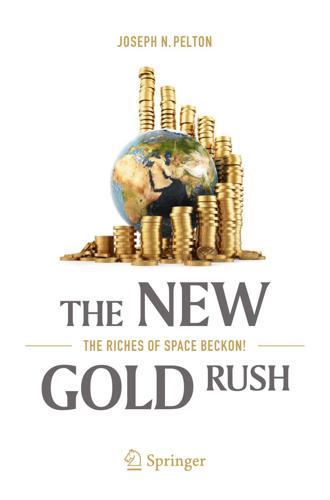
The New Gold Rush: The Riches of Space Beckon!
by
Joseph N. Pelton
Published 5 Nov 2016
The data from nuclear explosion detectors on the GPS satellites over the past decade have verified that the constant bombardment of asteroids, bolides, meteors and meteoroids has been underestimated by perhaps four to five times—both in frequency of occurrence and mass. The issue of increasing risk from cosmic hazards is building up here on Earth. Increasing risk comes from an ever increasing human population and the rise of megacities—massive, sprawling cities with more than 10 million people. There will be more than 50 such cities by 2050 and perhaps a 100 by 2100. This means that when asteroids carry out target practice on our small planet they have more and more exciting targets to hit. We were lucky with the cosmic hit that led to the 40-m object hitting the very remote Tunguska area of Siberia in the 1900s.
…
This chapter reviews the status of current cosmic hazards that face nations of the world and strategies for dealing with these challenges through better detection, a more proactive technological response, the creation of new standards, legal or regulatory actions or possibly new organizational mechanisms. Fortunately some of these steps have been initiated, but there are still many more that need to be taken. Potentially Hazardous Asteroids and Comets If a relatively large asteroid or comet were to strike Earth, it could wipe out a megacity or worse. There are many variables to be considered—the size and composition of the asteroid, the speed of the asteroid or comet, etc. In this case it would likely be traveling at a very accelerated pace. Finally, the nature of the impact in the atmosphere, whether on land or a water impact that could trigger a truly massive tidal wave, is also key.
…
The estimates from the B612 Foundation, which was started by astronaut Rusty Schwieckart and now headed by astronaut Ed Lu, is that there are on the order of 1 million near Earth objects (NEOs) that are 35 m in diameter or larger. Probably all of these at the right velocity and angle of entry would be able to wipe out metropolitan New York City, Tokyo, or Shanghai. As the number of megacities continue to increase toward 50 or more, the chances of a mega-kill by a potentially hazardous asteroid continues to increase. Let’s put what we are talking about into numbers. At best NASA, the other space agencies and the ground observatories that are looking for potentially hazardous asteroids has found about 20,000.
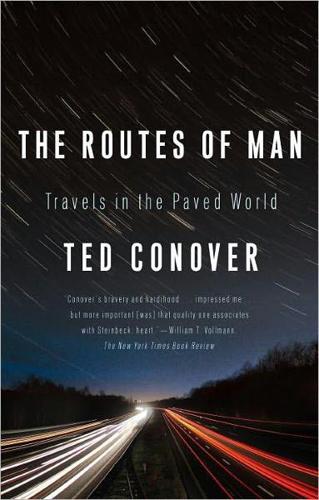
The Routes of Man: How Roads Are Changing the World and the Way We Live Today
by
Ted Conover
Published 15 Jan 2010
Evangelical Christianity and populist Islam were the fastest-growing religions here, and they were of a piece with the worldly grime and grit. They offered a path to higher ground, a spiritual elevation from the omnipresent squalor and constant threat of scam. Higher yet, I could picture the boundaries of Lagos, those edges where creeping urban settlement met with field and forest. Roads connected the megacity to smaller ones, but this megacity was hardly alone: Lagos is “simply the biggest node in the shantytown corridor of 70 million people that stretches from Abidjan to Ibadan,” as Mike Davis has observed. At night, from space, you’d be able to see an amazing band of lights across the coast of West Africa. At least, if the power was on.
…
They may not be as wealthy or advanced as celebrated world capitals like London, Paris, Moscow, Montreal, Sydney, and New York, but they are quickly becoming larger. The world’s population of 6 billion will increase by 2 billion over the next thirty years (it is tentatively expected to peak around 10 billion), and almost all of that increase will be in cities in Asia, Africa, and Latin America. By virtue of their sheer size these megacities will be, in certain ways, the most important in the coming century. I chose to end my travel in Lagos for a number of reasons. One was its extremity: of all those fast-growing cities, its growth has for years been projected to be the fastest. In 1950 Lagos had 288,000 people; as I write it is estimated to have 14 million; by 2015, predicts the Population Reference Bureau, it will be the third largest city in the world, with over 23 million souls.
…
As the largest city in the region, Lagos attracted a mix of returning expatriates, migrants from the various neighboring countries, many fleeing rural famine and drought, and refugees from the Biafran war (1967-70), in which a southeastern province, Biafra, attempted to secede from Nigeria. The continuing popularity of Lagos, and its ability to assimilate new arrivals, whether foreign-born or native, surprises not only foreigners but Nigerians themselves. The growth of Third World megacities repeats patterns seen in nineteenth-and early-twentieth-century Europe and North America but also “confounds” these precedents, writes Mike Davis. It’s the confounding parts that interest Koolhaas and others. Are these cities moving toward a robust, vibrant future, or into the apocalypse? Either way, Lagos represents the future for perhaps the majority of people on the planet, a compelling example of what happens when the track through the wilderness comes to the center of society.
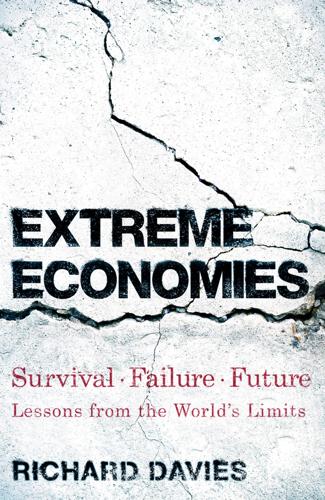
Extreme Economies: Survival, Failure, Future – Lessons From the World’s Limits
by
Richard Davies
Published 4 Sep 2019
The second part of the book starts with the Darien Gap, a site of such enviable location and natural riches that it has been a target for entrepreneurs since the 1500s. Today the territory remains a lawless no-man’s land, has a reputation as one of the most dangerous places on earth, and is the scene of devastating environmental degradation. Kinshasa, capital of the Democratic Republic of the Congo, has such potential that it should be Africa’s best megacity. But it too is a place of failure; home to 10 million people, it is the poorest major city on earth. Glasgow once vied with London for the title of Britain’s leading city, with so many breakthroughs in science, engineering and the arts that there was no better place to live at the start of the twentieth century.
…
Their motivation was revenue, not road safety, and it meant abandoning the responsibilities they had been trained and kitted out for. The magnetic effect traffic duties have on the police in Kinshasa shows how even low-level corruption has serious costs by encouraging the misallocation of public resources. THE DIY MEGACITY For the people of Kinshasa the daily challenge is to avoid the costs that tax officials, traffic police and others impose. The way to get ahead starts with personal greetings which, when dealing with any state employee, must be made in Swahili, a language with its roots thousands of miles away in East Africa.
…
Yet far from being a city in the doldrums, it is a vibrant place, buzzing, and offers two perspectives that may help as we consider our own uncertain economic futures. The first is to be optimistic about the power of the informal, underground or pirate economy. Kinshasa shows that the human desire to trade, exchange and build a market can go well beyond small villages, refugee camps or prisons – it can span a megacity the size of London. Despite being on a completely different scale, the place I visited that was most similar to Kinshasa was the Zaatari camp. The people of Kinshasa, let down first by colonial powers, then by Mobutu and the Kabila family, have come to rely on a self-built economy of hawking and gig employment.
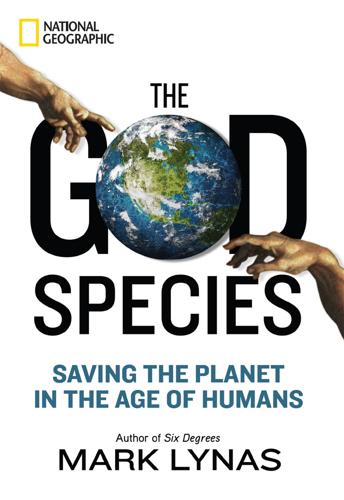
The God Species: Saving the Planet in the Age of Humans
by
Mark Lynas
Published 3 Oct 2011
If batteries can be designed that charge faster and last longer, most of us could simply plug in our cars at home or while parked in town—a much better option than driving to a gas station and having to line up to pay afterward. Electric is clearly the way to go for the majority of surface transportation. This includes mopeds and bikes as well as large trucks. With oil prices rising and local air pollution worsening in developing-world megacities, the tipping point may come even sooner than many pundits think and be driven by demand in fast-growing countries like China. All the major automotive companies are now positioning themselves to exploit this massive future market: Nissan, General Motors, Toyota, Volkswagen, Honda, Ford, BMW, Tesla Motors, and Daimler are already or soon will be offering affordable electric vehicles.
…
SEX AND THE CITY As a general rule—and making an exception for indigenous people and other communities who have demonstrated a long-term commitment to the sustainable use of their local environments—the fewer people who live in or close to rain forests and other important ecological biomes the better. Rural depopulation and urbanization in developing countries are often decried by those who are concerned about the relentless expansion of megacities, which seem terribly unsustainable because of their noise, sprawling slums, congestion, and pollution. But from the perspective of sustainable land use and habitat protection, the more that growing numbers of people can be persuaded to herd themselves into relatively small areas of urban land, the better for the environment.
…
Whenever they are given the chance, younger generations tend to flee to the cities, where they have many more livelihood options and can escape the cultural oppression that is often a hallmark of traditional societies. In many parts of the world, if you want to marry the person you choose, be openly gay, be female and have a career, or avoid daily backbreaking labor carrying water or fetching firewood, then you probably need to move to the city. In 1975 there were just three megacities of over 10 million people. Today there are 21. It sounds scary, but this unstoppable shift toward urbanization actually ranks as one of the most environmentally beneficial trends of the last few decades. As the UN Population Fund wrote in a recent report: “Density is potentially useful. With world population at 6.7 billion people in 2007 and growing at over 75 million a year, demographic concentration gives sustainability a better chance.

The Future Is Asian
by
Parag Khanna
Published 5 Feb 2019
China is also implementing European-style cap-and-trade carbon market schemes in the most industrialized provinces. In addition to industrial output, transportation is among the first targets of any government serious about cleaning up its environmental footprint. China has set a target for 40 percent of the residents of its megacities to use public transportation by 2020, with slightly lower percentages targeted for big, medium, and small cities that have less congestion. It has also mandated that all automotive companies—foreign and local—sell electric cars or risk being banned from selling diesel vehicles. Just as Europe has done for decades in demanding high product safety standards to access its markets, China’s powerful regulatory signals have jolted the global automotive industry.
…
Yet China’s diversions of the Brahmaputra River headwaters in Tibet have had significant consequences for the entire Gangetic civilization, much as its damming of the upper Mekong River has affected the agricultural production cycles of much of Southeast Asia. Meanwhile, China’s overconsumption and pollution of its major rivers could speed up nascent plans to divert Russia’s mighty rivers southward toward China’s cities and farmland. Asia has the largest number of megacities facing water shortages from overconsumption. Some Chinese cities are projected to run out of clean water by 2020.35 India faces a crisis of water tables falling nationwide; Iranian protests have been spreading as taps run dry. Across the region, trillions of dollars of spending are necessary to fix leaky pipes and lay new ones, install efficient water management systems, and construct large-scale desalination facilities.
…
The more Asians invest in resource-sharing technologies, the more they will integrate into a regional ecological system to complement their economic system. Asia’s spiritual revival has been an ecological motivator across the region. As hyperspeed industrialization chokes Asian cities from coastal China to New Delhi, ever more Asians are opting for a slower life outside the megacities and lending their support to Buddhist and Taoist eco-activist movements that advocate sustainable living. At Mao Mountain, a sacred Taoist site in eastern China, the abbot Yang Shihua calls upon followers to revere the statue of Laozi as a “Green God.” In 2018, the Buddhist Association of China successfully lobbied to block the IPO of a holy mountain site to prevent its overdevelopment.
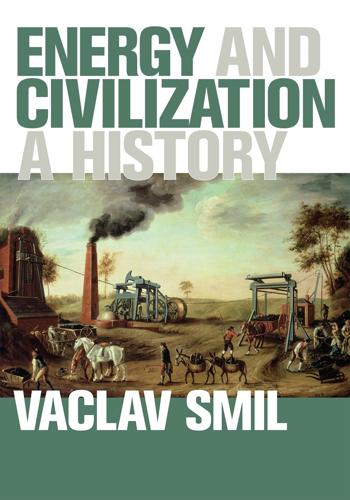
Energy and Civilization: A History
by
Vaclav Smil
Published 11 May 2017
And only electricity and liquid transportation fuels have made it possible to pump drinking water, remove and treat sewage and garbage, and meet the transportation and communication needs of megacities (cities with more than 10 million people). All modern cities are creations of fossil energy flows converted with high power densities, but megacities make exceptionally high claims: a survey by Kennedy and co-workers (2015) concluded that in 2011 the world’s 27 megacities (with less than 7% of the global population) consumed 9% of all electricity and 10% of all gasoline. The rise of fossil-fueled (initially just coal-fueled) cities was rapid.
…
Figure 7.8 Comparison of the onsets of major energy eras (identified by principal fuels and prime movers) with innovation clusters according to Mensch (1979) and with Schumpeter’s (1939) long waves of Western business cycles. I have extended both waves to the year 2000. Figure 7.9 Saint Peter’s Basilica completed in 1626 (Corbis). Figure 7.10 Brazil’s largest megalopolis, São Paulo, photographed in 2013. Megacities are the foremost examples of global uniformity imposed by high levels of fuel and electricity use (Corbis). Figure 7.11 Camille Pissarro, Le Boulevard de Montmartre, Matinée de Printemps. Oil on canvas, painted in 1897 (Google Art Project). Preface and Acknowledgments I finished writing Energy in World History in July 1993; the book came out in 1994, and it remained in print for two decades.
…
In 2015 the world had about 1.25 billion vehicles on the road, and in 2015 new passenger car sales reached about 73 million (Bank of Nova Scotia 2015), while traffic accidents cause annually nearly 1.3 million deaths and up to 50 million injuries (WHO 2015b), and automotive air pollution has been a key contributor to the worldwide phenomenon of seasonal (or semipermanent) photochemical smog in megacities on all continents (USEPA 2004). The life span of the average car now ranges from nearly 11 years in affluent countries to more than 15 years in low-income economies. Afterward, the steel (and copper and some rubber) is mostly recycled, but we have been willing to put up with enormous death, injury, and pollution costs.

Melting Pot or Civil War?: A Son of Immigrants Makes the Case Against Open Borders
by
Reihan Salam
Published 24 Sep 2018
Just as important, it would be far more humane and constructive, and it would pave the way for a more cooperative relationship in the decades to come. In time, a deeper U.S. partnership with Mexico could serve as a model for other countries—a far cry from the acrimonious relationship we have at present. The Magic of Megacities The truth, though, is that while migration pressures from Mexico and Central America command much of our attention, the real action in the coming decades will be in sub-Saharan Africa and South Asia. According to UN projections, even as populations in much of the world stabilize, sub-Saharan Africa will still enjoy relatively high fertility.
…
See also linked migration Chakravorty, Sanjoy, 40 charter cities, 144–45, 147–48 child care, 46, 120 child poverty, 22–25, 34, 35–36, 175–77 children of immigrants, 31–61 birthrates, native-born vs. immigrant, 32–33 collective responsibility for well-being, 45–48 intergenerational transmission of poverty, 22–25, 35–36, 43–44, 175–79 King’s “somebody else’s babies” remark, 32, 33–34 “public charge” test, 48–51 Qatar solution, 56–61 role of education, 36, 39, 41–43, 56 role of selection, 40–41, 43–44 separating parent and child, 57 role of social status, 39–40, 44 tax policy, 48, 55–56, 177–79 child tax credit (CTC), 48, 176–79 China immigration, 142–43 megacities, 144 Chinese Americans, 41 Chinese labor, 123–24, 127 CHIP (Children’s Health Insurance Program), 50 circular migration, 81–82 citizens and strangers, 9–11 civil war, 18–19 Claremont Review of Books, 18 class politics, 103–4 Clemens, Michael, 111–12, 132 Clinton, Bill, 49, 125 Codevilla, Angelo, 18 college-educated families advantages of, 27, 42, 86, 87 median income, 22 college-educated immigrants, 165–68 Collier, Paul, 146–47 Columbia University, 52 coming majority-minority crossover, 19–26 Cortés, Patricia, 107 cost of living, 131, 136, 149 Cotton, Tom, 169 Cowie, Jefferson, 80 Cox, Adam, 162, 171 Crown Heights riot of 1991, 181 custodial services, 119 DACA (Deferred Action for Childhood Arrivals), 9–11, 157–58 Democratic National Convention (2016), 157–57 Denmark, poverty rate, 34 disadvantaged groups and the mainstream, 65–69 discrimination, 31–32, 67 Dreamers, 9–11, 157–58, 160–61 Duncan, Brian, 86 earned income tax credit (EITC), 48, 176–77, 178 economic growth, 79–80, 118, 144, 151 economics of immigration, 12–13, 95–128.
…
See also “chain migration” Liu, Chen, 83–84, 141, 175 lone-wolf terrorists, 3 Los Angeles, majority-minority crossover, 20–21 low-skill immigrants (immigration), 22–24, 151–52 Americas First policy, 131–34 bullet biters and, 5–6 classic arguments for, 95–96, 151–52 coming majority-minority crossover, 22–24 development in source countries, 131–34 globalization backlash, 123–28 impact on native wages, 101–2, 115 limits on, 12–13, 27–29, 84, 130, 173–75 middle-class melting pot and, 27–28 political powerlessness of, 22–24 short run and long run, 99–102 Singapore model, 97–99, 102 skills gap, 81 Swedish model, 96–97 low-skill workers, 12–13, 99–102 automation and, 5–6, 12–13, 95–96 economic self-interest and, 106–7 labor supply and, 99–102 offshoring and, 12–13, 95–96, 102–7 McIntosh, Craig, 83–84, 139–40, 141, 175 mainstream and disadvantaged groups, 65–69 majority-minority crossover, 19–26 Maloney, Maureen, 159 Martin, David, 163–64 Mayflower, 15 median income, 22, 35 Medicaid, 46, 49, 126 Medicare, 136 megacities, 139–48, 156 melting pot, 14, 15–19, 65–67, 155 brief history of idea, 15–17 mainstream and disadvantaged groups, 65–69 toward a middle-class, 26–29 Melting Pot, The (play), 15 Mendoza, Mary Ann, 159 Mexican Americans, 41, 68, 69–72, 85–87 Mexican immigrants assimilation, two stories of, 69–72 children and role of education, 42–43, 86, 87 development in Mexico and, 134–35, 138–39 mainstream and the margins, 68 Mexican seasonal workers (bracero program), 111–12, 119 Mexico antipoverty programs, 134–35 Central American migrants, 133–35, 138–39 GDP per capita (PPP), 133 per capita income, 133, 134 poverty rate, 34 regulating flow of migration to U.S., 138–39 U.S. retirees in, 135–38 midcentury America, 16–17, 79, 80 middle-class melting pot, 26–29 migrant worker programs, 58–60, 98–99, 111–14 minimum wage, 47–48, 97, 107 model minority illusion, 38–44 monogenerational immigration systems, 57–61, 102 multigenerational immigration systems, 57–61 Muslim immigrants, 3–4, 89–90 Napoleonic Wars, 73 National Academies of Sciences, Engineering, and Medicine (NAS), 53–55, 56 National Affairs, 162 nativism, 91, 105 naturalization, 23 New Deal, 14, 16–17, 80 New York City attempted bombing of 2017, 2–3, 4, 6–7 author’s immigrant story, 63–64, 67–68, 75–76 Bangladeshi community, 64, 74–78 civil unrest in, 181–82 New York Times, The, 61 New York University, 121 Nigeria per capita income, 132–33 population growth, 140 “non-zero-sum mobility,” 79 Northwestern University, 52 Obama, Barack, 9–11, 49 Obamacare, 174 offshoring, 12–13, 94–96, 102–7, 123, 135 of caregiving, 137–38 South Korean model, 103–4 virtual immigration, 148–50 Okun, Arthur, 118 open border advocates, 4–5, 8–11, 84, 113, 115, 188.

Pandora's Star
by
Peter F. Hamilton
Published 2 Mar 2004
Children were the only people who didn’t work on Augusta, but they did grow up with a faintly screwed-up view of the rest of the Commonwealth, believing it to be made up of romantic planets where everyone lived in small cozy villages at the center of grand countryside vistas. Mark Vernon was one such child, growing up in the Orangewood district at the south end of New Costa. As districts went, it was no better or worse than any other in the megacity. Most days the harsh sunlight was diffused by a brown haze of smog, and the Augusta Engineering Corp, which owned and ran the megacity, wasn’t going to waste valuable real estate with parks. So along with his ’hood buddies he powerscooted along the maze of hot asphalt between strip malls, and hung out anywhere guaranteed to annoy adults and authority. His parents got him audio and retinal inserts and i-spot OCtattoos at twelve so that he was fully virtual, because that was the age for Augusta kids to start direct-loading education.
…
They poured a constant supply of cheap crops into the food processing factories dotted along the inland edge of New Costa, to be transformed into packaged convenience portions and distributed first to the megacity’s inhabitants, then out to the other planets, of which Earth was the greatest market. After snaking down through the Northumberland Hills, Howell Avenue opened out into Santa Hydra, a broad flat expanse that led all the way across to the coastline twenty-five kilometers away. He could see the Port Klye nest in the distance, eleven big concrete fission reactor domes perched along the shore. The ground around them was a flat bed of asphalt squares, where nothing grew and nothing moved, a mile-wide security moat separating them from the megacity that they helped to energize.
…
Given the speed the train was traveling, even that flashed past in a second. Glorious copper twilight streamed in through the carriage windows. Dudley’s ears popped as the new atmosphere flooded into the carriage through the rooftop vents. He looked out at the massive expanse that was CST’s Verona station. There was no visible end to it, no glimpse of the megacity that he knew lay beyond. One edge of the station was a solid cliff of gateways, sheltering under their curving single-span roofs, each oval framing a slightly different colored patch of haze depending on the spectral class of the star whose world they reached. But for the rest of it, as far as the eye could see, trains and tracks were the sole landscape.

Exponential: How Accelerating Technology Is Leaving Us Behind and What to Do About It
by
Azeem Azhar
Published 6 Sep 2021
This is particularly true in the developing world, where rates of urbanisation are lower than in richer countries. As we move further into the twenty-first century, we will see the growth of ever-more megacities of more than 10 million people – in Asia, South America and sub-Saharan Africa. By 2030, nearly 9 per cent of the world will live in just 41 cities.33 Take the Greater Bay Area, a megalopolis – a cluster of megacities – which includes Shenzhen, Hong Kong and Guangzhou, and whose population exceeds 70 million people. Its economy will increasingly depend on high-tech and emerging sectors, and the benefits large agglomerations bring for economic development.
…
, National Defense University Press, 12 July 2016 <http://ndupress.ndu.edu/Media/News/News-Article-View/Article/834357/will-technological-convergence-reverse-globalization/> [accessed 6 September 2020]. 26 Nick Butler, ‘US Energy Independence Has Its Costs’, Financial Times, 2019 <https://www.ft.com/content/20870c24-0b86-11ea-b2d6-9bf4d1957a67> [accessed 10 May 2021]. 27 ‘Urban Population (per cent of Total Population)’, World Bank Data <https://data.worldbank.org/indicator/SP.URB.TOTL.IN.ZS> [accessed 11 January 2021]. 28 Azeem Azhar, ‘Don’t Call Time on the Megacity’, Exponential View, 20 May 2020 <https://www.exponentialview.co/p/-dont-call-time-on-the-megacity> [accessed 13 January 2021]. 29 Genevieve Giuliano, Sanggyun Kang and Quan Yuan, ‘Agglomeration Economies and Evolving Urban Form’, The Annals of Regional Science, 63(3), 2019, pp. 377–398 <https://doi.org/10.1007/s00168-019-00957-4>. 30 Cheng Ting-Fang, ‘How a Small Taiwanese City Transformed the Global Chip Industry’, Nikkei Asia, 15 December 2020 <https://asia.nikkei.com/Business/Technology/How-a-small-Taiwanese-city-transformed-the-global-chip-industry> [accessed 13 January 2021]. 31 Jane Jacobs, The Death and Life of Great American Cities (New York: Random House, 1961), p. 31. 32 West, Scale, pp. 281–88. 33 ‘Bright Lights, Big Cities’, The Economist, 4 February 2015 <https://www.economist.com/node/21642053> [accessed 20 March 2021]. 34 Jeff Desjardins, ‘By 2100 None of the World’s Biggest Cities Will Be in China, the US or Europe’, World Economic Forum, 20 July 2018 <https://www.weforum.org/agenda/2018/07/by-2100-none-of-the-worlds-biggest-cities-will-be-in-china-the-us-or-europe/> [accessed 20 March 2021]. 35 ‘Cities Worldwide Will Struggle, but Will Avoid a Mass Exodus’, The Economist, 17 November 2020 <https://www.economist.com/the-world-ahead/2020/11/17/cities-worldwide-will-struggle-but-will-avoid-a-mass-exodus> [accessed 20 March 2021]. 36 ‘COVID-19 and the Myth of Urban Flight’, Knowledge@Wharton, 1 December 2020 <https://knowledge.wharton.upenn.edu/article/covid-19-and-the-myth-of-urban-flight/> [accessed 13 January 2021]. 37 Samrat Sharma, ‘India’s Rural-Urban Divide: Village Worker Earns Less than Half of City Peer’, Financial Express, 12 December 2019 <https://www.financialexpress.com/economy/indias-rural-urban-divide-village-worker-earns-less-than-half-of-city-peer/1792245/> [accessed 18 March 2021]. 38 ‘Is There Really an Ever-Widening Rural-Urban Divide in Europe’, Euler Hermes Global, 17 July 2019 <https://www.eulerhermes.com/en_global/news-insights/economic-insights/Is-there-really-an-ever-widening-rural-urban-divide-in-Europe.html> [accessed 18 March 2021]. 39 Patrick Greenfield, ‘Uber Licence Withdrawal Disproportionate, Says Theresa May’, The Guardian, 28 September 2017 <http://www.theguardian.com/technology/2017/sep/28/uber-licence-withdrawal-disproportionate-says-theresa-may> [accessed 23 March 2021]. 40 ‘Why Cities and National Governments Clash over Migration’, Financial Times, 4 June 2019 <https://www.ft.com/content/319ec1f6-5d25-11e9-840c-530737425559>. 41 John Perry Barlow, ‘A Declaration of the Independence of Cyberspace’, January 1996 <https://www.eff.org/cyberspace-independence> [accessed 7 January 2020]. 42 Andrei Soldatov Borogan Irina, ‘How the 1991 Soviet Internet Helped Stop a Coup and Spread a Message of Freedom’, Slate, August 2016 <https://slate.com/technology/2016/08/the-1991-soviet-internet-helped-stop-a-coup-and-spread-a-message-of-freedom.html> [accessed 31 July 2020]. 43 Berhan Taye and Sage Cheung, ‘The State of Internet Shutdowns in 2018’, Access Now, 8 July 2019 <https://www.accessnow.org/the-state-of-internet-shutdowns-in-2018/> [accessed 19 July 2020]. 44 Claudia Biancotti, ‘India’s Ill-Advised Pursuit of Data Localization’, Pieterson Institute for International Economics, 9 December 2019 <https://www.piie.com/blogs/realtime-economic-issues-watch/indias-ill-advised-pursuit-data-localization> [accessed 20 March 2021]. 45 DLA Piper, Data Protection Laws of the World. 46 Alan Beattie, ‘Data Protectionism: The Growing Menace to Global Business’, Financial Times, 14 May 2018 <https://medium.com/financial-times/data-protectionism-the-growing-menace-to-global-business-f994da37e9e2> [accessed 26 March 2021]. 47 Ian Bremmer, ‘Why We Need a World Data Organization.
…
But from that day in 2007 onwards, more than half of us have been city-dwellers. This moment was a long time coming. Two millennia ago, Rome exceeded 1 million inhabitants, as did Alexandria. But cities did not subsequently achieve that scale again until London reached it in the nineteenth century. Our first 10-million-person ‘megacity’, New York, was born in the 1930s on the back of various technological enhancements – electricity, mass transit, modern sanitation, steel-framed skyscrapers, the safety elevator. It also depended on new supply chains that could provide the food and goods needed to sustain a population of that size.28 And yet we have consistently underestimated cities.
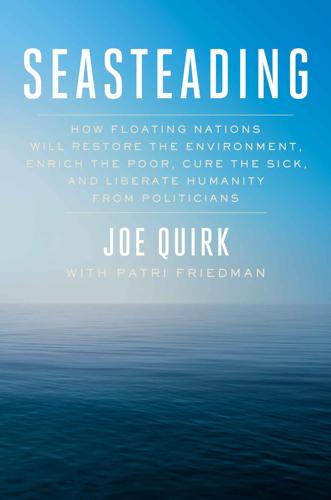
Seasteading: How Floating Nations Will Restore the Environment, Enrich the Poor, Cure the Sick, and Liberate Humanity From Politicians
by
Joe Quirk
and
Patri Friedman
Published 21 Mar 2017
In 2006 the journal Science published a four-year study written by an international group of ecologists from Canada, Panama, Sweden, Britain, and the United States, which predicted that, at prevailing trends, the world will run out of wild-caught seafood in 2048—though the assumptions behind these claims have been widely disputed. Fertilizer. The soil is running out of phosphate, a crucial ingredient in fertilizer required for farming. The most optimistic estimate for “peak phosphorus,” the point at which we reach the world’s maximum rate of phosphorus production, is 2050. Land. Eighty percent of the world’s expanding megacities are sinking on a coast or river plain while sea levels rise. More than 1 million people move to cities each week, and by 2050, about half of the human population will live within 100 kilometers of a coast. Humanity is poised to plunge in 2050. We can drown or we can float. We don’t know enough about each subject to judge whether the 2050 deadline predicted in multiple domains is realistic, or a convenient focal point around which forecasters simplify their perception of trends.
…
Once established in the mainstream consciousness, this will be the first step in what we might call DeltaSync’s master plan to rescue Planet Earth. Because, according to Rutger, as goes Rotterdam, so goes the world. Poised to Plunge Today 30 percent of all people live within 100 kilometers (62 miles) of a coast. By 2050, it will be half the human population. At least fifteen of the world’s twenty megacities grow on a coast or river plain. Human enterprise flourishes closest to the fluid medium, where goods flow speedily and cheaply per pound. As great coastal cities gear up the frenzy of international trade, the human race is racing toward many areas that will soon be flooded. Not only will coastal cities soon run out of livable space, but also the resources produced by inland agriculture will eventually not be able to support them.
…
June 3, 2009, www.scientificamerican.com/article/phosphorus-a-looming-crisis/. Chelsae Rose Johansen, “Solving ‘The Gravest Natural Resource Shortage You’ve Never Heard Of: Applying Transnational New Governance to the Phosphate Industry,” Vanderbilt Journal of Transnational Law 46 (2013): 933–68. Eighty percent of the world’s expanding megacities . . . More than 1 million people move to cities . . . by 2050, about half of the human population will live within 100 kilometers of a coast: Rutger de Graaf, “Blue Revolution” (inaugural lecture, Rotterdam, November 6, 2012 Netherland, Rotterdam University of Applied Sciences), https://www.youtube.com/watch?

The New Urban Crisis: How Our Cities Are Increasing Inequality, Deepening Segregation, and Failing the Middle Class?and What We Can Do About It
by
Richard Florida
Published 9 May 2016
As many as 8.6 billion of those urbanites will live in the cities of the developing world (many of which have yet to be built), while just 1.2 billion or so will occupy the cities of the advanced nations.5 To put all this into perspective, consider that in 1800 there was only one city in the world whose population exceeded 1 million—Beijing. By 1900, there were 12. By 1950, the number had increased sevenfold, to 83, and by 2005 it had ballooned to 400. Today, there are more than 500. In 1950, there were only two mega-cities that had more than 10 million people: New York and Tokyo. Today, there are 28, and by 2030, there will be 40 or so. By 2150, according to one plausible projection, the world will have perhaps ten mega-cities with between 50 million and 100 million people, and five more with populations exceeding 100 million. The population of the mega-region that spans Delhi, Kolkata, and Dhaka in India could reach 200 million by that time, making it bigger than all but five nations in the world today.6 Profound differences in wealth and productivity divide the less advantaged cities of the developing world from their more affluent counterparts in the advanced nations.
…
Overcoming the crisis of the suburbs and restoring their economic prosperity requires that suburbs become denser, greener, more mixed-use, and more connected to urban centers via transit. Before we can turn to specific solutions, however, it’s important to understand the fourth and final dimension of the New Urban Crisis, which is playing out in the mega-cities of the most rapidly urbanizing areas of the globe. 9 THE CRISIS OF GLOBAL URBANIZATION In May 2014, I addressed a summit of the United Nations Economic and Social Council, the Integration Segment on Sustainable Urbanization. Among the people sharing the dais with me were Joan Clos, the former mayor of Barcelona and the head of UN-Habitat, the UN agency that deals with cities and human settlements, and Anne Hidalgo, the mayor of Paris, who had campaigned on a platform that promised to fight the city’s rising inequalities and create more affordable housing.
…
Benjamin Marx, Thomas Stoker, and Tavneet Suri, “The Economics of Slums in the Developing World,” Journal of Economic Perspectives 27, no. 4 (2013): 187–210. 12. On this point, see Edward Glaeser, “A World of Cities: The Causes and Consequences of Urbanization in Poorer Countries,” Paper no. 19745, National Bureau of Economic Research, 2013, www.nber.org/papers/w19745; Richard Florida, “Why So Many Mega-Cities Remain So Poor,” CityLab, January 16, 2014, www.citylab.com/work/2014/01/why-so-many-mega-cities-remain-so-poor/8083. 13. Remi Jedwab and Dietrich Vollrath, “Urbanization Without Growth in Historical Perspective,” Explorations in Economic History 57 (July 2015): 1–94. 14. Ibid.; Richard Florida, “The Problem of Urbanization Without Economic Growth” CityLab, June 12, 2015, www.citylab.com/work/2015/06/the-problem-of-urbanization-without-economic-growth/395648. 15.

Insane Mode: How Elon Musk's Tesla Sparked an Electric Revolution to End the Age of Oil
by
Hamish McKenzie
Published 30 Sep 2017
BMW’s compact i3, on the other hand, was a product of Europe, where there were condensed urban layouts and short distances between cities, so ninety miles of range was enough to serve most driving needs. In China, by contrast, people were geographically dispersed among hundreds of far-apart but heavily populated cities. China has forty-one cities with more than two million people; more than a dozen cities with a population of more than five million; and five megacities with populations exceeding ten million. Che He Jia’s SEV plan made sense for driving within these cities, but the company needed to come up with something else for driving outside them. Back in the workshop, after I slid out of the buck, Li walked over to a pair of pinboards near the door. He smiled as he showed me sketches of Che He Jia’s second vehicle, a long-range SUV planned for release in 2018.
…
By the same token, she suggested that any wholesale transition to electric mobility is likely to be lumpy if you look at the issue from a global perspective, where different regions have different problems to solve. Consequently, she thought the internal combustion engine still “has a while” left in its life span. On the other hand, certain parts of the world are ripe for change. “If you start breaking it down more finely, and you start looking at specific megacities or specific city centers, and look at regions that have common issues, you may see a transformation happen in pockets at a much more rapid pace.” The Bolt is a practical car with good handling and a range of 238 miles per charge as assessed by the US Environmental Protection Agency. Some observers, such as the New York Times tech columnist Farhad Manjoo, have suggested that by beating Tesla to market with a long-range mass-market electric car, GM bested the Silicon Valley company at its own game (“How did GM create Tesla’s dream car first?”
…
But perhaps I felt a sense of imminent loss—that these nostalgic-car meet-ups might be the only way my kids and grandchildren will have any inkling of the automotive era in which I grew up. Even as I knew I had seen the future, I felt stuck in the past. Then, a dark green Model T puttered by, a reminder of how this all started. How much of the world that car changed. The roads, the garages, the urban development, the planned communities, the population mobility, the advent of megacities, the burned oil, the mass production, the new American economy, the eight-hour workday. The Model T had a soul and a momentous story, the story of modern civilization. That story couldn’t have been told without Henry Ford’s invention, in 1913, of the moving assembly line, an innovation that dramatically sped up and reduced the cost of manufacturing the Model T.
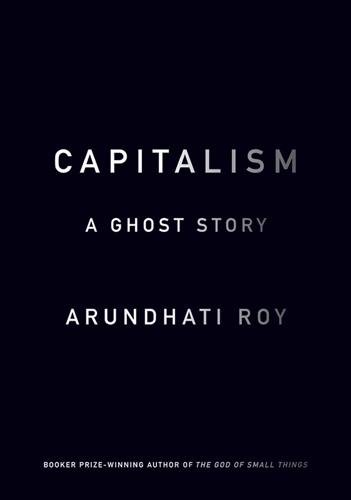
Capitalism: A Ghost Story
by
Arundhati Roy
Published 5 May 2014
Today any talk of redistribution of land or wealth would be considered not just undemocratic but lunatic. Even the most militant movements have been reduced to a fight to hold on to what little land people still have. The millions of landless people, the majority of them Dalits and Adivasis, driven from their villages, living in slums and shanty colonies in small towns and megacities, do not figure even in the radical discourse. As Gush-Up concentrates wealth onto the tip of a shining pin on which our billionaires pirouette, tidal waves of money crash through the institutions of democracy—the courts, the parliament—as well as the media, seriously compromising their ability to function in the ways they are meant to.
…
The Kalpasar dam, which would raise the sea level and alter the ecology of hundreds of kilometers of coastline, was the cause of serious concerns amongst scientists in a 2007 report.23 It has made a sudden comeback in order to supply water to the Dholera Special Investment Region (SIR) in one of the most water-stressed zones not just in India but in the world. SIR is another name for a SEZ, a self-governed corporate dystopia of industrial parks, townships, and megacities. The Dholera SIR is going to be connected to Gujarat’s other cities by a network of ten-lane highways. Where will the money for all this come from? In January 2011 in the Mahatma (Gandhi) Mandir, Gujarat’s Chief Minister Narendra Modi presided over a meeting of ten thousand international businessmen from one hundred countries.

The Ripple Effect: The Fate of Fresh Water in the Twenty-First Century
by
Alex Prud'Homme
Published 6 Jun 2011
See also Sewell Chan, “Tunnelers Hit Something Big: A Milestone,” New York Times, August 10, 2006. 123 corruption plagued the Board of Water Supply: Grann, “City of Water.” This was confirmed to me by a source who asked not to be identified. 123 $4 billion to the new tunnel: Chan, “Tunnelers Hit Something Big.” 124 the world had 18 “megacities”: Wikipedia: http://en.wikipedia.org/wiki/Megacity. 124 In 2007, 336 cities worldwide: Ibid., and Thomas Brinkhof, “The Principal Agglomerations of the World,” www.citypopulation.de. 124 in 2008, for the first time in history: UN Population Fund (UNFPA): State of World Population 2007: http://www.unfpa.org/swp/2007/english/introduction.html. 124 As of 2010, China alone had 43 cities: Christina Larson, “Chicago on the Yangtze,” Foreign Policy, September/October 2010. 125 Bruce Rolen: “As supplies dry up, growers pass on farming and sell water,” US Water News Online, February 2008. 125 Perth, Australia: Patrick Barta, “Amid Water Shortage, Australia Looks to the Sea,” Wall Street Journal, March 11, 2008. 125 America’s total water use: Susan S.
…
There was some jovial shouting, one man made a quick sign of the cross, the cage door slammed shut, and within minutes the men had disappeared down the giant hole. THE URBANIZATION OF WATER While the fragility of its water system is a pressing concern to New York, other large cities face even greater and more immediate hydrological challenges. In 2000, the world had 18 “megacities,” with populations of 5 million to 10 million (depending on different definitions), or more. In 2007, 336 cities worldwide had populations of 1 million or more. According to the UN, in 2008, for the first time in history, more people lived in urban areas than in rural ones. As of 2010, China alone had at least 43 cities with populations greater than 1 million; by 2025, according to Foreign Policy, that number will grow to 221.
…
But California was in its second year of drought, and questions were being raised about the necessity of LADWP’s dust-mitigation efforts. The project had suffered cost overruns and used sixty thousand acre-feet of water a year, which was worth some $54 million and was enough to supply sixty thousand households. Critics thought the money and water could be better spent elsewhere. By 2009, Los Angeles had become a megacity with 3.8 million residents, in a broad combined statistical area that had swelled to 17.8 million people—thanks in good part to the water drained from Mono County. The city is also hydrated by water from the Sacramento Delta, channeled south by the California Aqueduct, and by the Colorado River, channeled west by the Colorado River Aqueduct.

The Survival of the City: Human Flourishing in an Age of Isolation
by
Edward Glaeser
and
David Cutler
Published 14 Sep 2021
A multinational organization—NATO for health—provides one path toward making cities safer against infection from abroad. We next turn to the second source of vulnerability: the easy spread of contagion across densely crowded cities and slums. City governments themselves reduced that source of contagion in the West during the nineteenth century. In poor world megacities, that vulnerability remains. Since diseases that evolve in an Indian slum or a Chinese wet market can spread throughout the world, wealthy nations must help those poor cities to take care of their own today. Chapter 3 CAN INDIAN SEWERS MAKE INDIANA HEALTHIER? In the spring of 2020, the world was both isolated and unified.
…
What Delhi needed then and what the cities of the developing world need now are the game-changing investments in clean water and sewers that were built, largely as a response to cholera, in the wealthy world. Sporadic, almost feeble, expenditures on new water tanks, or open sewers, could not protect nineteenth-century Delhi and cannot protect twenty-first-century poor world megacities from the scourge of contagious disease. If we are not careful, they cannot protect people in rich countries either. Cholera Travels West Six great waves of cholera afflicted the world between 1817 and 1923. In 1817, after its apparent mutation, the bacterium spread to Indonesia and the Near East.
…
This death rate may have been below that of Paris during the same year, but it is five times New York City’s death rate from COVID-19 in 2020. While we may wonder what the COVID-19 pandemic will do to the wealthy world’s cities, we should never think that pandemic will stop the growth of population in the poor world’s megacities. America’s nineteenth-century cities were far deadlier than cities in low-income countries are today, and people still came by the million. The world’s poor will still come to Nairobi and Mumbai, even if contagious diseases disproportionately slaughter those city’s slum dwellers, who certainly caught COVID-19 far more often than their richer neighbors.

Taming the Sun: Innovations to Harness Solar Energy and Power the Planet
by
Varun Sivaram
Published 2 Mar 2018
Chapter 3, “Blocking the Sun,” warns that solar could undercut its own economics, strain power grids, and struggle to displace ubiquitous fossil fuels. It will take innovation in financing and business models, solar technologies, and energy systems for solar to avoid hitting a ceiling and instead reach its potential. Chapter 1 Two Futures The year is 2050, and the world is more polluted, unequal, and dangerous than ever. Megacities like New Delhi, Mexico City, and Lagos are suffocated by smog. More than a billion people around the world still lack access to reliable electricity. And climate change is serving up droughts, floods, and heat waves with alarming regularity. The trouble is that fossil fuels continue to exert a stranglehold on the global economy.
…
It made economic sense to use them to store power for a few hours; but they were too expensive to use for smoothing out the day-to-day variations in solar PV output and certainly for handling the biggest energy storage need: squirreling away surplus solar energy from sunny months for use in gloomier ones. Solar PV’s growth also slowed because countries, especially in the developing world, failed to build out their electricity grids to keep up with the deployment of solar power. For example, India struggled to connect solar farms in distant deserts to its thirsty megacities. And when the government shifted focus to deploying solar panels on building rooftops, ramshackle urban grids buckled under the strain of absorbing sudden surges of solar power.2 Having leveled off, solar’s contribution to the world’s energy needs is respectable but limited today, at the mid-century mark.
…
Nearly free electricity has induced heavy industries to switch from burning fossil fuels to running off solar power. Solar PV isn’t just powering glamorous urban buildings or massive industrial plants; PV materials are now light enough to be supported by flimsy shanty roofs in the slum outskirts of megacities in the developing world. And way outside the cities, even the poorest of the poor can easily afford solar power. Abject energy poverty has been eradicated—nearly every person on the planet has access to some electricity—although much work remains to address energy inequality. Still, these wondrous solar PV coatings remain at the mercy of unreliable sunlight.
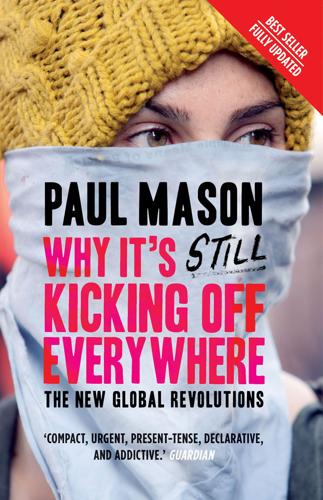
Why It's Still Kicking Off Everywhere: The New Global Revolutions
by
Paul Mason
Published 30 Sep 2013
So, without a government subsidy to fix the retail price, Len-len would go hungry. Soon, she will do what tens of millions of the rural poor have done already: leave the land and move to a mega-city to live in a slum and look for work. She will live in a shack just like this, but it will be more cramped, wedged in by others like it. Instead of the viridian and lime of the paddy fields, she will live in a landscape whose colours are predominantly rust and grey. For, horrific as they are, the slums of Manila—as in all the mega-cities of the world—are a makeshift solution to rural poverty. The tunnel dwellers of San Miguel Estero de San Miguel, Manila. There is a long curve of grey water and, along both sides, as far as the eye can see, shacks, trash, washing and grey tin, bits of wood and scraps of cloth, rats and children.
…
Once the housing and jobs markets collapsed, the student house became the young accountant house, the young lawyer, teacher and other struggling professional’s house. At the dance clubs students frequent there’s always some urban poor youth: this is true even in smart American college towns. But in the mega-cities of youth culture—London, Paris, Los Angeles, New York—the cultural proximity is more organic. And in no-hope towns where the college is the only modern thing in the landscape, everyone rubs shoulders in the laundromat, the fast-food joint, the cramped carriages of late-night trains. In North Africa, though many of the college students who led the revolutions were drawn from the elite, you find this same blurring of the edges between the educated youth and the poor.
…
This is the classic twenty-first-century slum. Across the globe, one billion people live in slums: that is, one in seven human beings. By the year 2050, for all the same reasons that are pushing people like Len-len off the land, that number is set to double. The slum is the filthy secret of the modern mega-city, the hidden consequence of twenty years of untrammelled market forces, greed, neglect and graft. Yet Mena, at my elbow, is feeding me this constant stream of verbal PR-copy: ‘We are happy; there is social cohesion here; only we can organize it like this.’ She’s all too conscious that the Estero de San Miguel has been condemned.
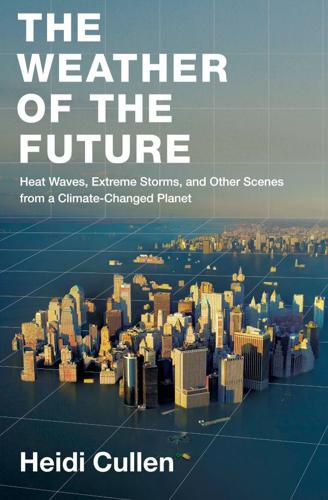
The Weather of the Future
by
Heidi Cullen
Published 2 Aug 2010
In rural Bangladesh, the weather is the economy. And if you believe the climate models, the weather will get worse. By 2050, the population of Bangladesh will have grown from about 162 million people today to more than 220 million.6 Today, more than 13 million people live in Dhaka. It’s the fastest-growing megacity in the world. And every year, slightly more than 400,000 people in Bangladesh move to the capital, hoping to find a better life. Nearly 15,000 new cars were sold in Dhaka in 2008, a record high. There may be plenty of people and cars, but there are acute shortages of just about everything else. There are no sidewalks.
…
As he said, comparison with the developed world is detrimental. But nonetheless, when people along the coast who are unable to grow rice or work the nets to catch shrimp fry make the comparison between Dhaka and their own situation, they will still decide that Dhaka holds the keys to a better life. And by 2050, this megacity with very little energy, transportation, and water infrastructure is expected to be the home of more than 40 million people.7 Experts like Rahman worry about how Dhaka will cope with the rapid and unplanned urbanization in Bangladesh. Dhaka is not immune from the problems of geography that plague the rest of Bangladesh.
…
To put that in perspective, the city of New York alone emits about 0.25 percent of the world’s total greenhouse gases. As Rahman says, “Cooking stoves account for almost 20 percent of emissions in Bangladesh. Cooking stoves. This is the level of industrialization we’re talking about.” Rahman still has hopes for megacities; he says that leaders need to start viewing land use and other aspects of city planning as critical components of preparing for climate change. “Properly managed, urbanization can be a good thing,” he said. “Improving urban management is itself an adaptation strategy.” For people in Bangladesh, climate change is not a theoretical, academic, or distant concern.
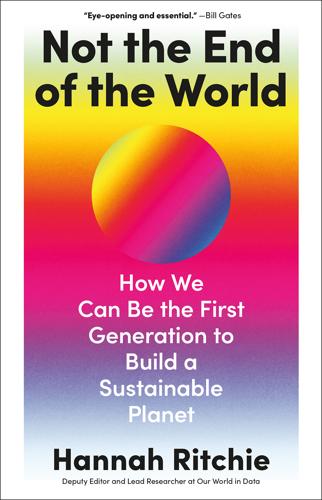
Not the End of the World
by
Hannah Ritchie
Published 9 Jan 2024
Rather than using energy from the sun to grow crops, we can use indoor LED lights instead. Rather than using soils, we can add nutrients and seeds to water trays – called ‘hydroponics’. The magic lies in the fact that these trays can be stacked on top of each other. Vertical farms are a bit like skyscrapers. Megacities struggled to house so many people without sprawling outwards. The solution was to build upwards. Vertical farms could let us grow 10, 20, maybe even 100 times as much food per hectare than a normal outdoor farm.37 The use of water and fertilisers is considerably less.38 All the conditions – temperature, humidity and light settings – can be controlled and crops are no longer at the mercy of the latest pest outbreak or extreme weather event.
…
This isn’t the case everywhere. Waste management is boring and unglamorous, but also pretty expensive. When cities are expanding rapidly, as they are across many middle-income countries, it takes a lot of investment to keep the number of bins and recycling centres in sync with the pace of the growing megacities. In some countries there is no regular pickup service to take waste to landfill or recycling. If waste does make it to a management site, it is stored in open landfills, where it can leak into the surrounding environment. A global map of total plastic use per person would highlight Europe and North America.
…
If every country had the waste-management systems that rich countries have, almost no plastic would end up in the ocean. Countries need landfills that actually seal on top, so rubbish doesn’t escape. They need good systems for collecting and storing the rubbish from thousands of streets across megacities. They need recycling systems and centres where plastics can be given another life. There’s no way to dress up waste management. It’s just collecting rubbish. It’s hard to make the case for investing in bins and landfills when countries have so many other priorities to grapple with. That’s why we’ve ended up in this position in the first place.
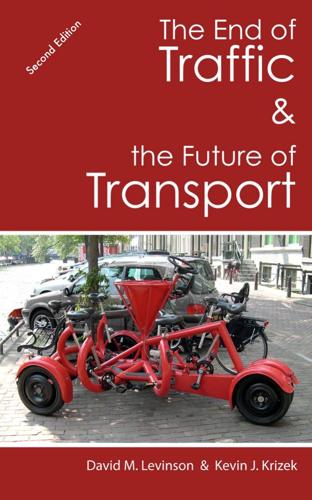
The End of Traffic and the Future of Transport: Second Edition
by
David Levinson
and
Kevin Krizek
Published 17 Aug 2015
Re-Programming Mobility: The Digital Transformation of Transportationin the United States, available from: http://reprogrammingmobility.org/wp-content/uploads/2014/09/Re-Programming-Mobility-Report.pdf 341 The Economist: Daily chart Bright lights, big cities: Urbanisation and the rise of the megacity predicts 8.6% of world's population will live in Mega-cities of 10 million or more by 2030, growing at about 1% of the world's population per decade http://www.economist.com/node/21642053?fsrc=scn%2Ftw%2Fte%2Fdc%2Fed%2Fbrightlightsbigcities 342 We do not foresee Segways or Pogo Sticks supplanting feet in most places. 343 Figure A1 Source: MnDOT All Detector Report, Detector 1942 (I-394 near US 169), 2000-11-08, 5-minute counts, ramp meters off. 344 Parthasarathi, Pavithra and David Levinson (2010) Post-Construction Evaluation of Traffic Forecast Accuracy.
…
Its overall character depends on many moving parts, and primary among them is how quickly forms of innovation take root and the changing density of land use activities. Key aspects of the future will happen on its own, regardless of policy intervention; other dimensions can or will be accelerated by policy intervention. By 2050 an estimated two thirds of the global population will live in cities (10 percent of the world's population will live in 'mega-cities,' larger than 10 million).341 Urban personal transport will be more multi-modal. The appropriate mode, as always will depend on the trip. But technology will change which modes are appropriate for which trips. We imagine different scenarios in different places. For the shortest trips, within and between buildings, on campuses, and in neighborhoods, walking will remain dominant.342 Escalators and elevators will remain as alternatives to staircases, but moving sidewalks are likely to be rare, limited to special environments like airports.
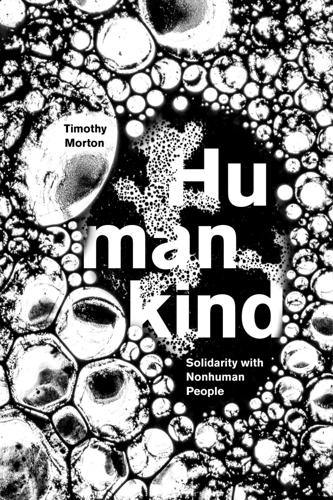
Humankind: Solidarity With Non-Human People
by
Timothy Morton
Published 14 Oct 2017
A street full of people is much more than just a part of a greater whole called “city.” It’s hard to locate contemporary megacities because we keep looking for something that totally incorporates its parts. Towns, villages and other formations are strung together in Java in such a way that only the volcanoes on that massive island prevent them from spreading everywhere. The only limit is a perceived threat to life. The string of dwellings isn’t even a megacity, it’s a hypercity, a city that is hardly a city at all. But precisely because of this less-than-a-city quality, a hypercity is beyond even the colossal size we associate with megacities such as Mexico City. Java’s hypercity and Mexico City are less than the sum of their parts.

Judas Unchained
by
Peter F. Hamilton
Published 1 Jan 2006
And I want to know what the planet looks like when you get back.’ * There was a limousine waiting for Renne when she arrived at EdenBurg’s CST station in Rialto, the planet’s megacity. A young man dressed in a smart dark-grey business suit introduced himself as Warren Yves Halgarth, a member of the Halgarth family security force, and her assigned escort. They drove out of the station and into the midday sunlight. Renne had visited all of the Big15 at one time or another. She was always hard pressed to tell the megacities apart. Rialto was a slight exception in that it was sited in a temperate zone, while most of the others favoured tropical locations.
…
Electricity was delivered to the megacity via superconductor, and Sybraska’s plains drained then irrigated to provide nation-sized tracts of highly productive farmland. Because of the cold months, Rialto favoured monolithic apartment blocks rather than the vast sprawls of individual homes and strip malls found on worlds like StLincoln, Wessex and Augusta. Each district had its core of Manhattan-like skyscrapers and bulky concrete tenements; which were encircled by huge swathes of factories and refineries. The CST station was on the edge of the Saratov district, which was the megacity’s financial and administrative heart, giving it the largest nest of skyscrapers, and also the tallest.
…
Behind the swathe of arid vegetation were crumbling white walls of enzyme-bonded concrete, scaled by ivy and climbing cacti. Various private roads led off the main track, looping round to gates. For a moment Mark’s imagination painted over the image with long straight driveways of the Highmarsh Valley branching off the main road. It was silent in the Chunatas, the noise of the megacity deflected by the foothills, a condition matching the land behind Randtown. Even the drab brown of the native plants were similar to the weak ochre shadings of boltgrass. But the air here was dryer, tinged with chemicals from the refinery sector ten miles away to the west. And Regulus was a too-bright point of blue-white light in the cloudless sky, still emitting a fierce heat in the late afternoon.
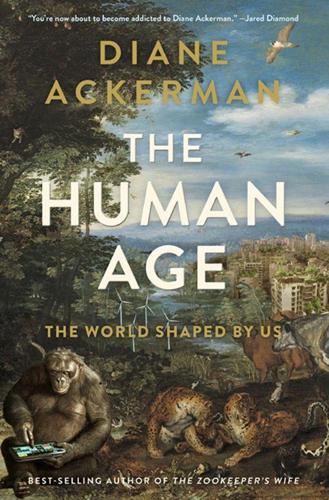
The Human Age: The World Shaped by Us
by
Diane Ackerman
Published 9 Sep 2014
Today, more than half of humanity, 3.5 billion people, cluster in cities, and scientists predict that by 2050 our cities will enthrall 70 percent of the world’s citizens. The trend is undeniable as the moon, unstoppable as an avalanche. Between 2005 and 2013, China’s urban population skyrocketed from 13 percent to 40 percent, with most people moving from very rural locales to huddled megacities whose streets jingle with chance and temptation. At that pace, by 2030, over half of China’s citizens will live in cities, and instead of farming food locally they’ll import much of it from other nations, paying with the fruits of industry, invention, and manufacturing. That’s already the case in the U.K., where by 1950 a checkerboard of cities embraced 79 percent of the population.
…
As we wade into the Anthropocene, we’re trying to reinsert ourselves back into the planet’s ecosystem and good graces. Unlovely as the word “sustainability” may be, it’s sashaying through the media, taking root in schools, and hitting home in all sorts of domiciles, entering the mainstream in both hamlets and megacities. We’re undergoing a revolution in thinking that isn’t a reaction to the Industrial Revolution, nor is it a back-to-the-land movement of the sort that became popular during the Great Depression and again in the 1970s. We might sometimes resemble startled deer in the headlights as we face Earth’s dwindling resources, yet at the same time we’re opening a door to a full-scale sustainability revolution.
…
The melt allows the orcas to widen their range and catch more of the white “singing” beluga whales, the canaries of the ocean, and the unicorn-tusked narwhals, two of the orca’s favorite meals. But both the belugas and the narwhals are endangered. How astonishing it is that just one warm-blooded species is causing all this commotion. Creating hives of great megacities and concrete nests that tower into the sky is impressive enough. But removing, relocating, redesigning, and generally vexing and bothering an entire planet full of plants and animals is another magnitude of mischief beyond anything the planet has ever known. The first is just brilliant niche building, something other animals do on a much more modest scale.
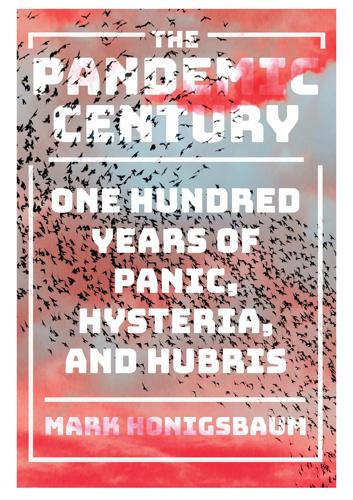
The Pandemic Century: One Hundred Years of Panic, Hysteria, and Hubris
by
Mark Honigsbaum
Published 8 Apr 2019
“Despite extraordinary advances in medical Science, we cannot be complacent about the threat of infectious diseases,” acknowledged the National Academy of Medicine in a report published just weeks before Zika became a pheic. “The underlying rate of emergence of infectious diseases appears to be increasing.” Why this should be the case—if it is the case—is a matter of ongoing research and conjecture. Certainly urbanization and globalization would appear to be key factors. The mega-cities of Asia, Africa, and South America, like Athens in the time of Thucydides, provide ideal conditions for the amplification and spread of novel pathogens by concentrating large numbers of people in cramped and often unsanitary spaces. Sometimes technology and alterations of the built environment can mitigate the risks that such overcrowding presents for the transfer of pathogens to people.
…
Abumonbazi, 223 achromatic lenses, 37 Acute Communicable Disesase Control, 148–49 Acute Respiratory Distress Syndrome (ARDS), 59, 244 Afghanistan, 226 Africa, 3 AIDS in, 219, 221–29, 225, 232, 233, 363 (see also specific countries) colonialism in, 199, 227–30 disruption of social relations in, 199, 230–31 distrust of foreign medical aid in, 291–93 early cases of AIDS in, 231 Ebola in, 277–85, 286 economic, social, and cultural change in, 199, 227, 230–32 environmental change in, 231–32 globalization and, 227 mass polio vaccination campaigns in, 225 mega-cities in, 362 public health and humanitarian medical initiatives in, 199 African Americans, 27 African horse sickness, 41 agar media, 205, 396n Agent Orange, 170 AIDS (acquired immunodeficiency syndrome), 9–10, 193–235, 213 conspiracy theories and, 225–26, 403n cultural causes and factors and, 13–14 as death sentence, 212 early cases of, 221–24, 231 economic, social, and cultural factors, 13–14 economic, social, and cultural factors in, 199–200 as EID, 234 environmental causes and factors and, 13–14, 231–32 as “epidemic of fear,” 213 etiology of, 207, 216, 225 framed as disease of gay lifestyles, 211 hysteria of 1980s, 10 index case for, 218–20, 218n latency and slow onset of, 363 medical technologies and, 199–200, 202, 227–29, 233 as metaphor, 210–11 mother–child transmission of, 220–21 naming of, 198 panic about, 200–201, 211–13 poor public health messaging around, 212–16, 220–21 principal risk groups for, 211, 213, 215, 363 public attitudes toward, 198 sexual transmission of, 197, 199, 217–18 simian versions of, 226–27, 229–30 spillover mechanism from simian to human populations, 226–27 stigmatization of people with, 211, 214–15, 217, 218–21 transmission of, 197, 199, 212, 214–18, 220–21, 222, 232, 402n worldwide spread of, 221 air conditioning systems, 183–85, 189–91, 256, 362 Aldershot, England, 23 All People’s Congress Party, 297 Altino Ventura, 354–56, 357 alveolar macrophages, 185 alveoli, 20, 185 American Expeditionary Force, 18, 25, 29 American Hospital in Paris, 212 American Legion.
…
See also specific antibiotics discovery of new, 149 drug-resistant microbes and, 365–66 era before, 47 antibody-dependent enhancement (ADE), 60, 347–48 antibody reactions, 259 “antigentic drift,” 55 antiretroviral drugs, 200, 226, 403n antiwar movement, 169–70 arboviruses, 319–24, 326, 330–31, 335, 359 Argentina, 106–8 Argentine National Health Board (Asistencia Publica), 107, 114 Armed Forces Institute of Pathology, 55, 109, 405–6n Armstrong, Charlie, 105–6, 115–17, 118, 120–24, 126, 132, 138–39 Asheville, North Carolina, 31–33 Asia Asian financial crisis of 1998, 266 mega-cities in, 362 Zika in, 326–27 “Asian flu,” 56, 245 Associated Press, 82 AIDS panic and, 213 Ebola and, 296 “parrot fever” pandemic 1929–1930 and, 138 Athenians, 14 Athens, Greece, plague of, 14, 362 Atlanta, Georgia, 300, 302, 303 the Atlanticos, 95 Attaran, Amir, 340 Aureomycin, 142 Avery, Oswald, 22, 35–36, 37, 149 avian influenza, 4, 10, 55–56, 243–48, 250, 257, 274, 284, 367, 381–82n of 1997, 4, 254 H5N1 virus, 59, 405n “multiple reassortants” of, 247 unusual pathology in young adults, 245–46 avian viruses, mutations of, 245–46 avirulence, survival strategy of, 30 Ayer, Massachusetts, 17–18, 19, 28, 33, 47 Aylward, Bruce, 308 Ayres, Constância, 350–51, 352 AZT, 212, 226, 403n Bachmann, Leonard, 155 Bacillus influenzae, 26–27, 34, 35–38, 36–39, 40, 42, 43, 48–49, 58, 113 Bacillus psittacosis, 112–13, 126 bacteria.
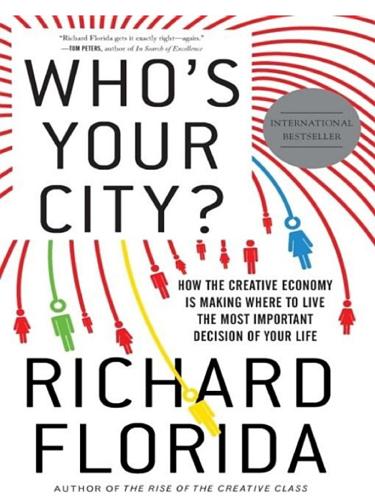
Who's Your City?: How the Creative Economy Is Making Where to Live the Most Important Decision of Your Life
by
Richard Florida
Published 28 Jun 2009
Most of them, though, function primarily as the manufacturing and service centers of the twenty-first-century global economy. From Guadalajara and Tijuana to Shanghai and the Philippines, they produce the world’s goods, take its calls, and support its innovation engines. • The third group is composed of the megacities of the developing world—with large population concentrations but insufficient economic activity to support their people. Many of these megacities are ravaged by large-scale “global slums” with dense concentrations of homelessness, poverty, and deprivation, high levels of social and political unrest, and little meaningful economic activity.14 These places, increasingly disconnected from the global economy, make it difficult to celebrate what appears to be a level world for a fortunate few
…
Many cities in the developing nations are immense but lack the economic clout of megaregions. As Ohmae writes, they “either do not or cannot look to the global economy for solutions to their problems or for the resources to make those solutions work.” Ohmae’s point is important. Population is not tantamount to economic growth. These megacities differ substantially from true megaregions that have large markets, significant economic capacity, substantial innovative activity, and highly skilled talent, on top of large populations. Looking at economic growth and the creation of wealth solely through nation-state data is hugely misleading because national borders are less relevant to where economic activity is located.
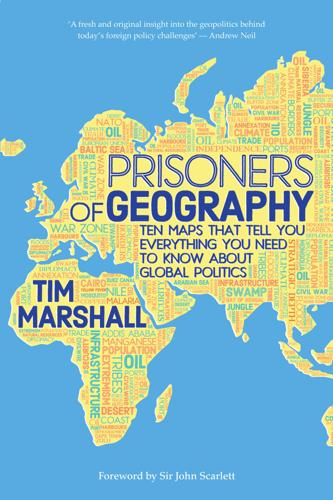
Prisoners of Geography: Ten Maps That Explain Everything About the World (Politics of Place)
by
Tim Marshall
Published 10 Oct 2016
This has brought it into competition with Uganda, Burundi, and Rwanda, which have their own ideas about who should be in charge in the DRC. The Africa of the past was given no choice—its geography shaped it—and then the Europeans engineered most of today’s borders. Now, with its booming populations and developing megacities, it has no choice but to embrace the modern globalized world to which it is so connected. In this, despite all the problems we have seen, it is making huge strides. The same rivers that hampered trade are now harnessed for hydroelectric power. From the earth that struggled to sustain large-scale food production come minerals and oil, making some countries rich even if little of the wealth reaches the people.
…
A major concern for South Korea is how close Seoul and the surrounding urban areas are to the border with North Korea. Seoul’s position makes it vulnerable to surprise attacks from its neighbor, whose capital is much farther away and partially protected by mountainous terrain. South Korea’s capital, the megacity of Seoul, lies just thirty-five miles south of the 38th parallel and the DMZ. Almost half of South Korea’s 50 million people live in the greater Seoul region, which is home to much of its industry and financial centers, and it is all within range of North Korean artillery. In the hills above the 148-mile-long DMZ, the North Korean military has an estimated ten thousand artillery pieces.
…
The Japanese are an island race, with the majority of the 127 million population living mostly on the four large islands that face Korea and Russia across the Sea of Japan, and a minority inhabiting some of the 6,848 smaller islands. The largest of the main islands is Honshu, which includes the biggest megacity in the world, Tokyo, and its 39 million people. At its closest point, Japan is 120 miles from the Eurasian land-mass, which is among the reasons why it has never been successfully invaded. The Chinese are some five hundred miles away across the East China Sea; and although there is Russian territory much closer, the Russian forces are usually far away because of the extremely inhospitable climate and sparse population located across the Sea of Okhotsk.
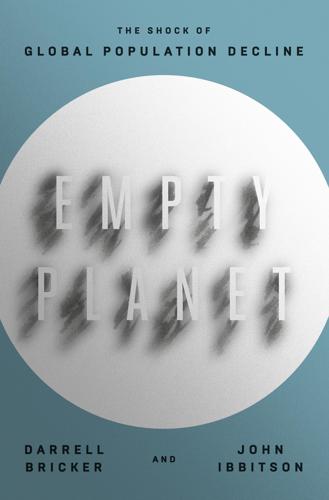
Empty Planet: The Shock of Global Population Decline
by
Darrell Bricker
and
John Ibbitson
Published 5 Feb 2019
Although most of us live in cities of one million or fewer, the stars of the show are the megacities, with populations of ten million or more. This table lists the ten largest megacities and their population in millions: Tokyo, Japan 38.1 Delhi, India 26.5 Shanghai, China 24.5 Mumbai, India 21.4 São Paulo, Brazil 21.3 Beijing, China 21.2 Mexico City, Mexico 21.2 Osaka, Japan 20.3 Cairo, Egypt 19.1 New York–Newark, United States 18.6279 Only three of these megacities are in the developed world, and two of those are in Japan. And Japan’s population is shrinking.
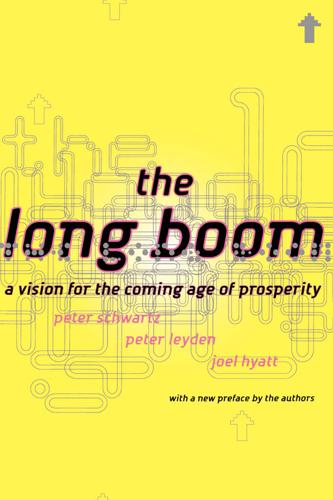
The Long Boom: A Vision for the Coming Age of Prosperity
by
Peter Schwartz
,
Peter Leyden
and
Joel Hyatt
Published 18 Oct 2000
For them, a high-growth global economy is the only possible way of attaining a decent standard of living, or perhaps even a middle-class lifestyle—and if not for them, then for their kids. Walk through the streets of Bombay and watch the thousands, hundreds of thousands—no, millions—of people with outstretched hands begging for anything that will just help them stay alive. And if not in Bombay, then Jakarta or Cairo or Sao Paulo or any of the other dozen megacities that you want to pick. Those cities are all packed with 15 million people or more—half of them barely hanging on—and there are millions more in the countryside who are in even worse shape. What can be done with the 2 billion or so poor people in the world? They're alive, and they're having children.
…
But then, in the second half of the twentieth century, the restless center shifted west once again, to the West Coast of the United States, where the digital revolution and the new knowledge age seem to have found their best expression. For the Long Boom period that we're describing, from 1980 to 2020, the West Coast corridor is ground zero. There's the megacity of Los Angeles, the home of Hollywood, the film and television capital of the world, certainly a place to watch at the beginning of an information age. There's Silicon Valley and the San Francisco Bay Area, home of the new digital tools and the emerging new media of the Internet. In fact, it's the entire coast from Seattle, home of Microsoft, to San Diego, home of key players in wireless telecommunications.
…
This page intentionally left blank PART THREE The ENQJNES of ihE TwENTy'fiRST CENTURY HE ONLY WAY TO KEEP the Long Boom going is to figure out Tway to slow and eventually eradicate damage to the environE ment. There is no other option. The environment is already strained to the breaking point, global warming is starting to seriously affect the climate, and many people in the world's megacities are choking to death. A global boom until 2020 would put us all over the edge— unless we do something dramatic right now, Section III lays out the coming waves of technologies that will allow us to grow rapidly while actually lowering the strain on the environment. These are not pie-in-the-sky technologies but practical ones, many of which are far along in development and ready for commercial use.
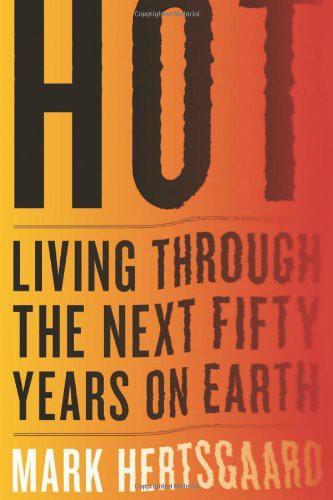
Hot: Living Through the Next Fifty Years on Earth
by
Mark Hertsgaard
Published 15 Jan 2011
The world's chief financial capitals—New York, London, and Tokyo—are all highly vulnerable, thanks to their low-lying waterfront locations. I visited each of those cities for this book, as well as Shanghai, the epicenter of Chinese capitalism, where three feet of sea level rise would put a third of the city underwater. Mega-cities located in poor countries would be equally pressed and much less able to adapt; Manila, Jakarta, and Dhaka are the three considered most at risk in Asia. In the United States, a mere two feet of sea level rise would put 2,200 miles of roads in Washington, DC, Virginia, Maryland, and North Carolina at risk of regular inundation, according to a 2009 report by the U.S.
…
John Holmes, the UN's coordinator of emergency disaster relief, reported that fourteen of the fifteen major relief operations that his team mounted in 2007 were in response to floods, storms, and other climate-related events. In 2008, nine out of ten major disasters were weather-related, causing up to $200 billion of damage. Yet neither governments, businesses, nor citizens were heeding the warnings, said Holmes, who added, "The risks of mega-disasters in some ... mega-cities is rising all the time." The humanitarian organization Oxfam has projected that extreme weather could affect 375 million people a year by 2015, and the international relief system "could be overwhelmed." As always with climate change, it is the poor and vulnerable who figure to be hurt most. The human suffering and social havoc that engulfed New Orleans in the wake of Hurricane Katrina show what can happen when a community's defenses against mega-storms are inadequate, which many are, especially in poor countries.
…
Perhaps the most vivid—and economically reckless—example is in Shanghai, where a combination of sea level rise and fiercer river and ocean flooding threatens the business capital of China with a disaster that a senior government scientist warned would be as bad as or worse than what New Orleans suffered from Katrina. Not until the morning I left Shanghai did I fully grasp how vulnerable the city is to climate change. Shanghai is the one Chinese mega-city I had missed while visiting in 1997 for Earth Odyssey, so it was a revelation to see it now. Shanghai was even richer than I had imagined—its streets choked with traffic jams of Mercedeses and BMWs, its shopping districts boasting top-end brands from Europe and the States, its downtown crowded with skyscrapers housing some of the world's biggest companies, all of them intent on riding the magic carpet of endless economic growth that is modern China.
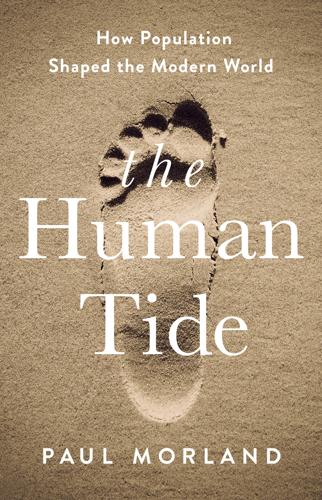
The Human Tide: How Population Shaped the Modern World
by
Paul Morland
Published 10 Jan 2019
If that turns out to be the case, Nigeria would have gone in the space of a century and a half from being 1.5% of the world’s population to 7%. Meanwhile, Nigeria has urbanised rapidly. Lagos has seen a rise in population from 1.5 million in 1970 to over 20 million forty-five years on. Life in this mega-city, as in other African mega-cities, is not attractive from the perspective of someone from a developed country. As one correspondent describes it: A thick layer of acrid, blue smoke hovers just above the waterfront slums that skirt Lagos lagoon, filtering out sunrise and sunset. This man-made mist that clings to the rusted shack rooftops comes from the countless fish-smoking cabins that drive the slum economy.
…
There’s an uninterrupted view of the city’s dramatic sprawl of poverty from the road bridges that carry daily commuters between the islands and the mainland.34 Yet the rural poor keep coming, escaping the more grinding prospect of rural poverty in an ever-more crowded countryside. Few would have guessed that one-time colonial outposts would by the dawn of the twenty-first century dwarf the capital of the imperial metropolis. Lagos is foremost of the mega-cities which are now dotted not only across Africa but throughout the developing world and which could only have come into existence with the recent vast population growth, which the countryside was unable to absorb. As with India and China, countries growing on this demographic scale can only fail to be important players on the world stage if they lag behind.
…
With Africa still poor and young, the pressure of migration to Europe will be strong. To date, most African population growth can be seen arising from people pouring into towns and cities. Once prosperity gets above a certain level, however, the prospect of looking further afield than the nearest mega-city for economic salvation becomes more realistic. Beyond Imagination The world has changed at a frantic pace in the last few centuries, and the trend only appears to be accelerating. Much of this has to do with technology but it also has to do with demography, for the two are interdependent.
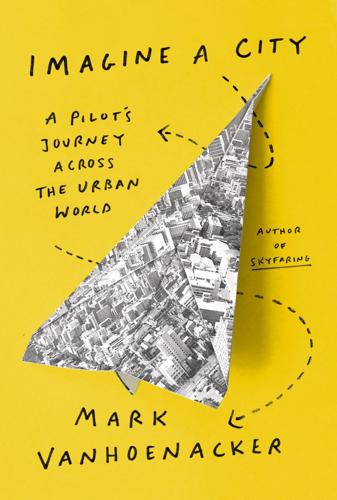
Imagine a City: A Pilot's Journey Across the Urban World
by
Mark Vanhoenacker
Published 14 Aug 2022
Years from now, after I’ve become a pilot, my housemate’s words—a new city—will often come to my mind involuntarily, when the jet I’m flying emerges from the clouds above the parallel and numbered streets of a roomy metropolis on the west coast of North America, say, in the same week in which I returned from an Asian megacity that might be multiples older and denser, and whose earliest days might be mythical or lost. But the idea of a new city will strike me most forcefully whenever I overfly an obviously modern settlement that lies near or forms part of an ancient one. Along the Nile, for example, on flights on clear and dry winter nights, I’ll sip my tea as I look across metropolitan Cairo at the new cities shining from within it like electrified engineering schematics, or like new sets of holiday lights, plugged in to be tested before they’re pulled from the plastic scaffolding on which they come neatly arrayed.
…
As we wait for my brother we once again talk, half seriously, about spending our old age in the Berkshires, and I understand that I’m pulled, as I so often am, by three familiar desires: to be in Pittsfield, my first city; to live near it, but not quite in it; and to look back on Pittsfield from the sheltering anonymity of a megacity on the farthest side of my world. My brother’s car pulls up in a cloud of late-summer dust. Through the rear window I see spokes, wheels, a bright silver frame. Our hike, the athletic highlight of my week, is nothing to him in terms of exercise; after it he’ll go for a long ride around much of Berkshire County.
…
In City Improbable, the writer and politician Khushwant Singh described Delhi as possessing “a longer history and more historical monuments than any other metropolis.” Such a conclusion isn’t easy to verify, but what is certain is that the Delhi region has been continually inhabited for thousands of years; and that among today’s megacities, Delhi’s past must be one of the deepest. Long before it became the capital of the world’s most populous democracy—soon to become the world’s most populous country—Delhi was described by Ibn Battuta, in the fourteenth century, as a “vast and magnificent city, uniting beauty with strength”; it was later conquered by a descendant of Genghis Khan; and it gave birth, as well, to a history-shaping rebellion against British imperialism.

Peers Inc: How People and Platforms Are Inventing the Collaborative Economy and Reinventing Capitalism
by
Robin Chase
Published 14 May 2015
The Peers Inc organization can produce previously impossible growth, unprecedented acceleration of learning and innovation, and the powerful joining of human experience, adaptability, and pattern recognition with supercomputing. The three miracles potentially provide us a way forward through climate change, resource scarcity, and explosive population growth. They also produce some rewarding business opportunities along the way. We can, in fact, make megacities livable and address the needs of the more than seven billion people now on the planet (a figure expected to grow to eleven billion by 2050) through more efficient use of our resources. We can enable people to build satisfying lives in which their individuality is valued. We can quickly build resilient cities with the localized responses required to deflect the worst effects of global warming.
…
I recently talked to a CEO of a telecommunications company that had been sitting on a technology improvement that would not only dramatically reduce the company’s costs and improve customer service but do so by reducing the company’s workforce by 40,000 people. Self-driving vehicles, which are coming much faster than people realize, will take away the need for drivers around the world. This will be painful everywhere, but devastating in megacities such as Mumbai and Lagos, where millions of people earn their living from driving. The least skilled and the least educated will likely not find new full-time employment. Even with the optimistic and inevitable forecasts that new technologies will open up new economic frontiers, we all know the difficult truth: In real time in defined geographies, job losses do not equal job gains one for one.
…
TEN Addressing Our Biggest Challenges Climate Change and Sustainability Need Peers Inc THE PEERS INC PARADIGM fascinates me not just because it’s shaping the future of business. What is more important is that we’ve figured out what this model is and how it works exactly at our time of greatest need. The earth currently has 7 billion inhabitants, thirty megacities whose populations exceed 10 million, hundreds of cities harboring over a million inhabitants, and all the problems that come with urbanization—poverty, homelessness, congestion, and pollution. Add to this projections of a global average temperature increase of 4°C (7°F) by 2100 and population estimates as high as 11 billion.1 If we continue with business as usual and leave these problems unaddressed, the future looks bleak.
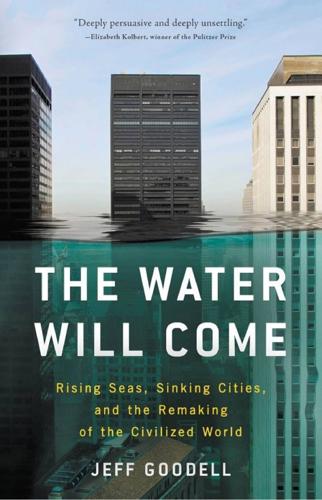
The Water Will Come: Rising Seas, Sinking Cities, and the Remaking of the Civilized World
by
Jeff Goodell
Published 23 Oct 2017
CLIMATE APARTHEID NOBODY KNOWS FOR sure how many people live in Lagos, Nigeria. The United Nations’ official count is 13 million, but Lagos officials say it’s closer to 21 million. When you are in line at the city’s prehistoric airport, it feels like 30 million. Whatever the most accurate number is, everyone agrees that Lagos is one of the fastest-growing megacities in the world, with a growth rate ten times faster than New York or LA. It is also a city that is sharply divided between rich and poor. About 70 percent of the population lives on $1.25 a day or less, while the top 2 or 3 percent live behind walls in Beverly Hills–like estates. A good percentage of those people made their money in oil.
…
When it is finished (or, more accurately, if it is finished—the devaluation of Nigerian currency, as well as other economic factors, has put its future in doubt), Eko Atlantic will encompass more than three square miles of new land, where, developers hope, 300,000 prosperous and technologically sophisticated people will live in sleek modern condos, fully equipped with fiber-optic Internet connections, elaborate security systems, and a twenty-five-foot-high seawall protecting them from the attacking ocean. It’s a shiny new appendage to a megacity slum, one that sells itself as a new vision of Lagos—the Dubai of Africa. What’s happening in Lagos is part of a larger trend of combating sea-level rise with old-fashioned engineering muscle. On coasts and in shallow bays around the world, enormous dredging machines are pumping sand and gravel out of the bottom of the sea and creating new land.
…
“This is the new Lagos.” I looked back at the old Lagos and thought of the millions of people who live there in shacks and cheap concrete buildings that flood with every high tide. I wondered how safe I would feel up here on a leather couch on the nineteenth floor as old Lagos drowns. When it comes to megacities with the most at risk from sea-level rise, Lagos doesn’t crack the top ten in potential economic losses. Guangzhou, Shanghai, Kolkata, Mumbai, and other Asian cities are at the top of the list. Lagos doesn’t rank with these cities because, in strict economic terms, the infrastructure along the coast isn’t worth much compared to a place like Shanghai.
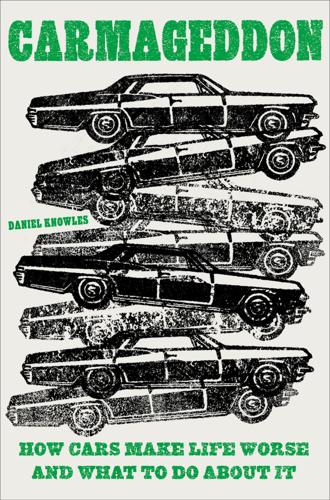
Carmageddon: How Cars Make Life Worse and What to Do About It
by
Daniel Knowles
Published 27 Mar 2023
With it came a new idea, about how people should live. In the middle of the last century, architects and planners connived with the car industry to reimagine the city. The Futurama exhibition at the 1939 New York World’s Fair, sponsored by General Motors, depicted a vision of the future in which everyone had a car, living in megacities dominated by expressways and suburbs. And architects like Le Corbusier, the father of Brutalism, and planners like Robert Moses of New York City, perhaps the most powerful unelected bureaucrat in American history, leapt to try to make it a reality, using all the power of the post–World War II state to acquire land, move people, and replace homes, offices, and factories with roads.
…
But it happens to be the biggest city on the planet: Tokyo, the capital of Japan. In popular imagination, at least in the west, Tokyo is both incredibly futuristic, and also rather foreign and confusing. Before I first visited, in 2017, I imagined it to be an incredibly hectic place, a noisy, bustling megacity. I was on holiday and trying to escape Nairobi, a rather sprawling, low-height and green city, and I picked Tokyo largely because I wanted to get as far away from Africa as I could. I needed a break from the traffic jams, the power cuts, the constant negotiation to achieve anything, and the heat.
…
That had declined to 16 percent by 2010 and further still since. Now, the city’s roads are choked with traffic, and the air is appallingly polluted. Some cities have even adopted some American-inspired policies designed to stop pedestrians from slowing down vehicular traffic, with a typically totalitarian spin. In Shenzhen, the electronics-producing megacity on the other side of the Hong Kong border, China’s terrifying facial recognition technology is being used to fine jaywalkers. As well as being fined, they are publicly shamed, with their photos displayed on a giant LED screen above an intersection in the city. But some parts of the Chinese government have also realized the downsides of expanding car ownership and roads forever.
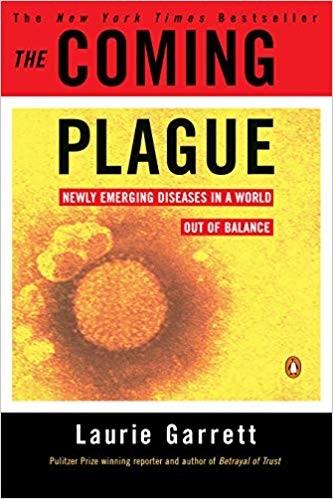
The Coming Plague: Newly Emerging Diseases in a World Out of Balance
by
Laurie Garrett
Published 31 Oct 1994
Some cities in these regions doubled in size in a single decade.37 The bulk of this massive human population surge occurred in a handful of so-called megacities—urban centers inhabited by more than 10 million people. In 1950 there were two megacities: New York and London. Both had attained their awesome size in less than five decades, growing by just under 2 million people each decade. Though the growth was difficult and posed endless problems for city planners, the nations were wealthy, able to finance the necessary expansion of such services as housing, sewage, drinking water, and transport. By 1980, however, the world had ten megacities: Buenos Aires, Rio de Janeiro, São Paulo, Mexico City, Los Angeles, New York, Beijing, Shanghai, Tokyo, and London.
…
But Brinkmann noted that a change in the human/parasite relationship was occurring in Mexico City—then the world’s fastest-growing megacity. People were not getting the worms from uncooked meats, which, as it turned out, they couldn’t afford to purchase. Rather, the parasite had taken advantage of the highly favorable ecology provided by the extraordinarily polluted Tula River, the city’s primary freshwater source. Tens of thousands of people living in the squalid outskirts of the megacity downstream of the urban center’s sewage system were infected with the dangerous Taenia solium parasites.49 By 1980 the tapeworm had found its way to Los Angeles, carried by human immigrants from Asia and Central America.
…
For three days scientists presented evidence that validated McNeill’s words of foreboding: viruses were mutating at rapid rates; seals were dying in great plagues as the researchers convened; more than 90 percent of the rabbits of Australia died in a single year following the introduction of a new virus to the land; great influenza pandemics were sweeping through the animal world; the Andromeda strain nearly surfaced in Africa in the form of Ebola virus; megacities were arising in the developing world, creating niches from which “virtually anything might arise”; rain forests were being destroyed, forcing disease-carrying animals and insects into areas of human habitation and raising the very real possibility that lethal, mysterious microbes would, for the first time, infect humanity on a large scale and imperil the survival of the human race.

The Coming of Neo-Feudalism: A Warning to the Global Middle Class
by
Joel Kotkin
Published 11 May 2020
Under hukou, those who do not have the hereditary right of urban residency will always have an inferior, unprotected status even if they seek opportunity in the city.8 Among the most common themes in contemporary Chinese science fiction is rigid class divisions in the urban world. Hao Jingfang’s “Folding Beijing,” for example, portrays a megacity divided into sharply delineated communities for the elite, the middle ranks, and a vast poor population living mainly by recycling the waste generated by the city.9 This vision represents a shocking divergence from the Maoist ideal. The Polarized Global City Despite their population growth and economic dynamism, the sprawling megacities of the developing world have not nurtured a substantial middle class.10 Power and money tend to be highly concentrated in a handful of elite urban districts, while opportunities for the middle and working classes are limited.
…
Renn, “Caterpillar’s HQ Move to Chicago Shows America’s Double Divide,” Urbanophile, January 31, 2017, http://www.urbanophile.com/2017/01/31/caterpillars-hq-move-to-chicago-shows-americas-double-divide/; Emily Badger, “What Happens When the Richest U.S. Cities Turn to the World?” New York Times, December 22, 2017, https://www.nytimes.com/2017/12/22/upshot/the-great-disconnect-megacities-go-global-but-lose-local-links.html. 44 Aaron M. Renn, “Population Transformation in Pittsburgh and Chicago,” New Geography, April 13, 2018, http://www.newgeography.com/content/005937-population-transformation-pittsburgh-and-chicago. 45 UCL Urban Laboratory, “How Ruth Glass shaped the way we approach our cities,” University College London, January 13, 2015, http://www.ucl.ac.uk/urbanlab/news/ruth-glass-seminar. 46 Karen J.
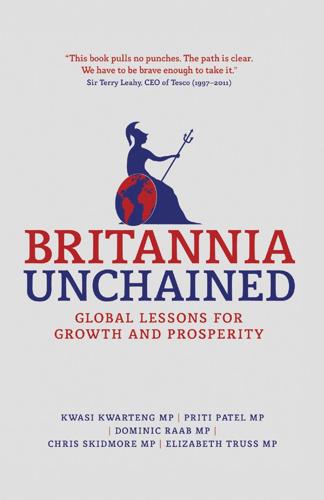
Britannia Unchained: Global Lessons for Growth and Prosperity
by
Kwasi Kwarteng
,
Priti Patel
,
Dominic Raab
,
Chris Skidmore
and
Elizabeth Truss
Published 12 Sep 2012
id=10347 4. http://news.xinhuanet.com/english2010/indepth/2010-10/02/c_13540088. htm 5. http://aiesecubc.wordpress.com/2010/11/14/brazil/ 6. http://coa.counciloftheamericas.org/articles/3871/Brazil%E2%80%99s_ President:_Dilma_Rousseff%E2%80%99s_First_Year/ 7. http://aiesecubc.wordpress.com/2010/11/14/brazil/ 8. http://www.bbc.co.uk/news/business-16332115 9. http://www.businessweek.com/bwdaily/dnflash/content/nov2007/ db20071115_045316.htm 10. http://www.economist.com/blogs/newsbook/2010/07/brazils_prospects 11. http://www.forbes.com/forbes/2011/0509/global-2000-11-edward-glaeserslums-dharavi-lands-opportunity_2.html 130 Britannia Unchained 12. http://www.forbes.com/sites/megacities/2011/04/08/curfew-in-the-favela/ 13. http://techcrunch.com/2010/05/12/coming-up-from-the-favelas-brazilsslumdog-entrepreneurs/ 14. http://www.guardian.co.uk/world/2011/nov/13/brazil-troops-raidshantytown 15. http://www.bbc.co.uk/news/world-latin-america-15710719 16. http://www.telegraph.co.uk/news/worldnews/southamerica/brazil/8890151/ Rio-plans-to-pacify-dozens-more-favelas.html 17. http://www.bbc.co.uk/worldclass/16705801 18. http://www.forbes.com/sites/megacities/2011/04/19/favela-fashionovercoming-business-challenges/ 19. http://techcrunch.com/2010/05/08/making-lemonade-out-of-bureaucraticbrazilian-lemons/ 20. http://techcrunch.com/2010/05/08/making-lemonade-out-of-bureaucraticbrazilian-lemons/ 21. http://quererempreender.blogspot.co.uk/2009/03/edivan-fundador-da-sedi. html 22. http://www.forbes.com/sites/julieruvolo/2012/01/23/bye-bye-brazilianblowouts-the-next-big-brazilian-hair-trend-is-beleza-natural/ 23. http://www.endeavor.org/entrepreneurs/leila-velez/97 24. http://www.economist.com/node/21528985 25. http://www.bbc.co.uk/news/business-11477974 26. http://www.economist.com/node/21528985 27. http://www.ft.com/cms/s/0/71352352-112c-11e1-ad22-00144feabdc0. html#axzz1kGsfWbFB 28. http://www.guardian.co.uk/news/datablog/2011/oct/10/world-murder-rateunodc 29. http://www.economist.com/node/21528985 30. http://www.pisa.oecd.org/dataoecd/54/12/46643496.pdf 31. http://www.reuters.com/article/2011/10/31/us-foxconn-brazil-id USTRE79T17C20111031 32.

Physics of the Future: How Science Will Shape Human Destiny and Our Daily Lives by the Year 2100
by
Michio Kaku
Published 15 Mar 2011
First, you have the rapid urbanization of the peasant population, as farmers leave their ancestral lands to try their luck in the megacities. In 1800, only 3 percent of the population lived in cities. By the end of the twentieth century, that figure rose to 47 percent, and it is expected to soar above that in the coming decades. The expense of child rearing in the city drastically reduces the number of children in a family. With rents, food, and expenses being so high, workers in the slums of the megacities perform the same calculus and conclude that each child reduces their wealth. Second, as countries industrialize, as in China and India, this creates a middle class that wants fewer children, as in the industrialized West.
…
Shoppers flood the stores, in spite of economic hard times. Instead of proliferating cyberclassrooms, universities are still registering record numbers of students. To be sure, there are more people deciding to work from their homes or teleconference with their coworkers, but cities have not emptied at all. Instead, they have morphed into sprawling megacities. Today, it is easy to carry on video conversations on the Internet, but most people tend to be reluctant to be filmed, preferring face-to-face meetings. And of course, the Internet has changed the entire media landscape, as media giants puzzle over how to earn revenue on the Internet. But it is not even close to wiping out TV, radio, and live theater.
…
The stars are not twinkling, as they appear from the earth, but staring brightly, as they have for billions of years. The elevator slowly comes to a stop about 100 miles from the surface of the earth. From space, you see a dazzling sight that you previously saw only in pictures. Looking down, you suddenly see the earth in an entirely new light. You see the oceans, the continents, and the lights of megacities that shine into outer space. From space, the earth appears so serene that it’s hard to believe people once spilled blood fighting wars over silly borders. These nations still exist, but they seem so quaint, less relevant today, in an age when communication is instantaneous and ubiquitous. As Karen puts her head on your shoulder, you begin to realize that you are witnessing the birth of a new planetary civilization.
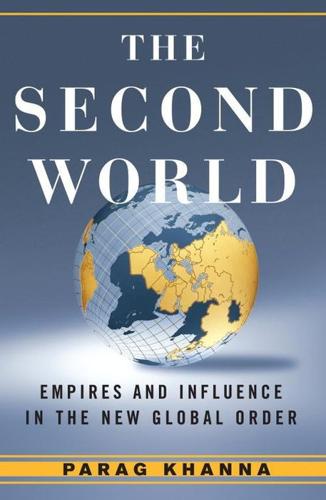
Second World: Empires and Influence in the New Global Order
by
Parag Khanna
Published 4 Mar 2008
Human trafficking flourishes amid such economic disparity, with rural women serving as sex slaves in cities and urban men working as bonded laborers in Amazonian gold mines. Most schools do not have phone lines, let alone Internet connections. In a country that is three-quarters urban, São Paulo has grown into something beyond mega-city sprawl: it is a well-nigh infinite city, with a population that can neither be contained nor measured. Its countless steel-gated apartment complexes are, in effect, high-rise favelas for those who can afford housing. São Paulo’s Rua Oscar Freire has been rated one of the world’s top luxury shopping streets, and wealthy Paulistanos boast the highest rate of private helicopter usage in the world—but at chic restaurants, women make sure to have their purses bound with wire to their chairs.
…
.*43 This Saudi social apotheosis is occurring just as the country is getting a second chance to climb into the first world. During the 1970s oil boom, no Gulf states created significant manufacturing or service sectors to employ the growing ranks of city dwellers who became what Fouad Ajami called the “angry sons of a failed generation.”23 And if high Saudi birthrates continue, Riyadh could become a megacity of ten million mostly underutilized citizens. Riyadh’s ministry buildings are still dilapidated, and the city is but a cleaner version of Cairo. But this time around, Saudi Arabia is globalization-savvy, bringing in international banks and consultants to modernize smartly.24 It has the space, labor, and money to construct four entirely new industrial cities as tax-free reexport zones that create jobs while spreading the population away from dense Riyadh and Jeddah to reverse the inward migration that also plagues third-world countries.
…
Each is so powerful that they are better understood as “region-states,” cities that operate like business units, as connected to the global economy as their own countries, while increasingly linked into a growing Asian network of economic nodes irrespective of political and cultural distinctions.23 Asia also has more than half the world’s megalopolises, which are home to most of Southeast Asia’s five hundred million people. Third-world mega-cities in Africa and India contain bustling downtowns surrounded by rings and pockets of residential and squatter neighborhoods as far as the eye can see. As villages rapidly depopulate, urbanization means not modernization and development but squalor and depravity. Southeast Asia today is rising out of this third-world scenario as its per capita income rises above $3,000 and the poverty rate falls below 25 percent.
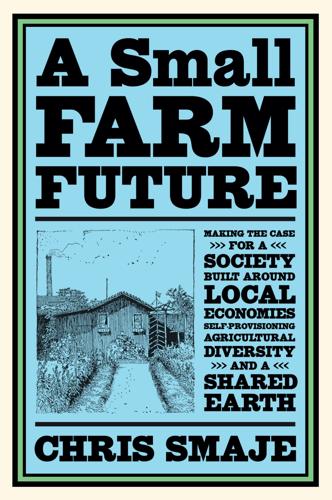
A Small Farm Future: Making the Case for a Society Built Around Local Economies, Self-Provisioning, Agricultural Diversity and a Shared Earth
by
Chris Smaje
Published 14 Aug 2020
The point isn’t to eliminate all forms of trade in favour of entirely autonomous household economies, but to put some limits around trade in view of its ecological and economic dysfunctions, and to avoid a romanticising language of ‘trade-ification’ as inherently beneficial.54 The settlement pattern of a small farm future best suited to deliver less extractive relationships based on renewable local resources would probably look something like Figure 15.1.b, with centrifugal relations of power and service – emphasising what the countryside can draw from urban centres – balancing or exceeding the centripetal ones based on what urban centres can draw from the countryside. It would most likely be a world of farmsteads, hamlets, villages, market towns and regional hub cities, with little need for today’s mega-cities. That’s why I’ve made the centrifugal arrow of service from town to country in Figure 15.1.b larger than the converse centripetal one. There are already political developments of this kind: in a new municipalism of smaller towns and cities stranded by super-urbanism that are trying to reconnect to their hinterlands in ecological re-localisation movements, in peasant movements and so on.
…
But rather than unjust, futile and politically dangerous border mobilisations to stop it, I’d argue that we should take seriously the ‘human right not to have to migrate’ by trying to mitigate the environmental drivers, economic inequalities and social injustices behind mass migration. It’s probably too late to do this adequately to prevent large-scale migration from happening anyway. In a world of rising temperatures, melting ice caps and melting global capital reserves, it seems likely that a lot of people will be moving away from the mostly coastal mega-cities where jobs serving the nodes of global capital will be increasingly thin on the ground, and indeed where ground itself will be increasingly thin on the ground. For rural areas, that means there’ll be a lot of incomers from near and far looking for agricultural land on which to make a living. It’s not hard to imagine the problems this could cause.
…
‘The Strong Perennial Vision: A Critical Review,’ Agroecology and Sustainable Food Systems 39(5): 471–99. Smil, Vaclav. 2010. Energy Myths and Realities: Bringing Science to the Energy Policy Debate. Washington, DC: AEI Press. _______. 2017. Energy and Civilization: A History. Cambridge, MA: MIT Press. _______. 2019. Growth: From Microorganisms to Megacities. Cambridge, MA: MIT Press. Smith, Adam. (1776) 1993. Wealth of Nations. Oxford: Oxford University Press. Smith, Jo, et al. 2012. ‘Reconciling Productivity with Protection of the Environment: Is Temperate Agroforestry the Answer?’ Renewable Agriculture and Food Systems 28(1): 80–92. Smith, Stephen. 2005.

Age of Discovery: Navigating the Risks and Rewards of Our New Renaissance
by
Ian Goldin
and
Chris Kutarna
Published 23 May 2016
We are an urban animal now, and although our habitat trends vary locally, in net global terms all future population growth will be in cities. By 2050, humanity’s urban population may grow by another 2.5 billion people; our rural population is expected to shrink by 150 million.46 The city is the center of things, and as a species we are rushing to be there. New crossroads are again emerging. Mega-cities like Tokyo, New York, London, Toronto, Paris, Delhi, São Paulo, Mumbai, Mexico City, Shanghai and Dhaka command the world’s headlines, but the real story—at least so far as urban growth is concerned—will play out in the more than 700 developing-world cities with populations that exceed 500,000 today and the more than 350 new cities that will reach that threshold by 2030.
…
Much of what needs to be done can be done by “coalitions of the working”—groups of influential citizens, companies, cities or countries that get the issue and get the urgency, and by their coordinated actions generate momentum that pulls the laggards along.70 The C40 cities initiative (c40.org), originally comprising 40 megacities (now 69) around the world, is a good template. Member cities commit to taking practical actions to cut greenhouse gases and share best practices among themselves. Many global challenges can be met when a few big players get together like this. These challenges include climate change—over half of the world’s carbon emissions are produced by just four countries (China, US, India and Russia)—and finance, in which the top thirty-odd banks can make or break the health of the global banking system.
…
See da Vinci, Leonardo Levchin, Max, 152 libraries, 26, 29, 33, 143–5 Lintott, Chris, 147–8 Luther, Martin, 2, 30, 55, 65, 215–18, 224–5, 260–1 Machiavelli, Niccolò, 6, 11, 160, 168, 229, 246, 256, 259 The Prince, 108, 266 Magellan, Ferdinand, 19–20, 39–40, 68 Manutius, Aldus, 143–4 maps and Mercator, 20–1, 61, 252 new maps, 15–25, 33, 40, 45, 53, 60, 62, 251–2 political world circa 1980, 22 political world circa 2015, 23 and Ptolemy, 15 world according to the Bible, 16 world according to Ptolemy, 17 world according to Mercator, 20 market economies, 25, 68. See also capitalism medicine. See health and medicine mega-cities, 54 Mehmed II, 18 Mendel, Gregor, 114 Mercator, Gerard, 20, 61, 252 Metcalfe, Robert, 159 Mexico, 19, 29, 43, 54, 93, 144 Michelangelo. See Buonarroti, Michelangelo middle class, 73–5, 93, 178, 186, 241 Middle East, 40–1, 93 Arab Spring, 24, 36, 211, 222–4, 228 and economic divergence, 211 and development, 161 and health care, 98 and life expectancy, 76 See also Islam migration benefits of, 86–8 challenges of, 230–1 drivers of, 59 economic migration, 56–7 and innovation, 59 international migration flows, 58 and labor, 57–9 long-term, 52–60 and policy, 249–51, 254 in the Renaissance, 55–6 and selected capital inflows to developing world, 87 and urbanization, 53–5, 249–50 See also refugees Milner, Yuri, 156 modernity, 152, 207–10, 212, 229 Moore, Gordon, 31 Moore, Michael, 227 Moore’s Law, 31–2, 117, 123, 136 More, Thomas, 75, 261 Mosteghanemi, Ahlam, 212 Musk, Elon, 243 Myanmar, 24, 206, 252 9/11, 4, 166, 207, 219, 227, 242 nanotechnology, 125–31, 157, 162 National Security Agency (NSA), 24 nationalism, 65, 230 new media, 25–37 New Renaissance, 7–10, 139, 235–67 beginning of, 10 breadth of achievement, 101 and collaboration, 145 and democracy, 230 and life sciences, 121 and progress, 11, 98–9 and protest, 223 Newton, Isaac, 107, 124, 237 Nigeria, 43, 94, 146, 182 Nobel Prize, 137, 158, 238 Nokia, 43 North American Free Trade Agreement (NAFTA), 25 North Korea, 25, 98, 111, 197–9, 223 Occupy movement, 36, 220–1, 224 offshoring, 44, 249 open-source movement, 145, 241 Open Tree of Life, 36 Ottoman Empire, 2, 10–11, 18, 30, 40–1, 51, 55, 60–1, 72–3, 135, 194–5, 204, 209, 213, 230 Oweidat, Nadia, 213 pandemics, 137, 185–7 Black Death, 1, 70, 72–3, 93, 143, 173–5, 177, 184 defined, 179 Ebola, 181–3 H5N1 (bird flu), 165, 183–5, 186, 237, 253 HIV/AIDS, 76, 83, 98, 101, 154, 158, 185–6 SARS, 180–1 Spanish flu, 165 paradigm shifts and Copernicus, 105–8, 110–12, and genius, 107 in life science, 112–21 in physical science, 121–31 in the Renaissance, 105–11 See also genius Paris Climate Accord, 36, 67 patents, 136–7, 159, 227, 244–5 PayPal, 59, 153, 243 perspective, need for, 4–7 Peru, 29, 93 Petrarch, 80, 133, 256 Peurbach, Georg von, 105, 133 PewDiePie, 138 pharmaceutical industry, 83–4, 113, 183, 245 3D-printed drugs, 119 and diminishing returns, 154–5 gene therapy, 119–20, 158 and nanotechnology, 131 and pace of discovery, 162–3 R&D spending, 154 Phelps, Edmund, 240–1 physics, 121–5 quantum mechanics, 123–8 and random motion, 128 and scale, 121–8 scanning tunneling microscope (STM), 128 and stickiness, 128 plague.
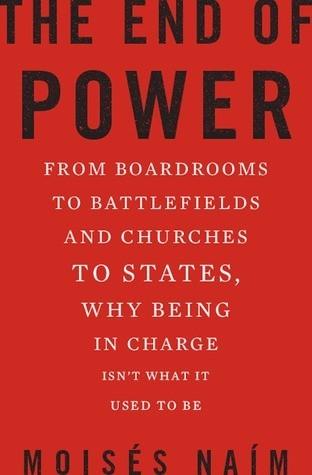
The End of Power: From Boardrooms to Battlefields and Churches to States, Why Being in Charge Isn’t What It Used to Be
by
Moises Naim
Published 5 Mar 2013
The figures on remittances are quoted from the World Bank Development Indicators Database (2011 edition). 12. Dean Yang, “Migrant Remittances,” in Journal of Economic Perspectives 25, no. 3 (Summer 2011), pp. 129–152 at p. 130. 13. Richard Dobbs, “Megacities,” Foreign Policy, September–October 2010, http://www.foreignpolicy.com/articles/2010/08/16/prime_numbers_megacities. 14. The National Intelligence Council, Office of the Director of National Intelligence, “Global Trends 2030: Alternative Worlds” (Washington, DC, 2012). 15. Saxenian, The New Argonauts: Regional Advantage in a Global Economy. 16. The figures on tourist arrivals are from the World Bank’s World Development Indicators Database (2011 edition). 17.
…
What was already the fastest process of urbanization in history is accelerating, especially in Asia. More people have moved, and continue to move, from farms to cities than ever before. In 2007, for the first time in history, more people lived in cities than in rural areas. Richard Dobbs describes the immense scale of this transformation as follows: “The megacity will be home to China’s and India’s growing middle classes—creating consumer markets larger than today’s Japan and Spain, respectively.”13 The US National Intelligence Council reckons that “every year 65 million people are added to the world’s urban population, equivalent to adding seven cities the size of Chicago or five the size of London annually.”14 The consequences of this revolution for the distribution of power are just as intense internally; indeed, an increasing number of people are spending and investing in two (or more) countries at the same time.

The Economics of Enough: How to Run the Economy as if the Future Matters
by
Diane Coyle
Published 21 Feb 2011
The structural changes in the economy resulting from new technologies have increased the importance of trust. A high value economy is a high trust one. At the same time, though, the structural changes taking place in the global economy make building trust difficult and indeed create some social fragility. The simultaneous strengths and social tensions are apparent for example in the megacities that are hubs of the global economy. Trust is built by and expressed in the institutions that govern the economy and society. As I go on to describe, many of the institutions we have at present, in all their variety right up to the international organizations responsible for the global economy, are not up to bearing the new pressures.
…
Most have pockets of seemingly intractable poverty and crime, while some seem to be irredeemably scarred by social disorder and crime. They are the hubs of global multinational enterprises, centers of the drugs and people trafficking trades. Yet other parts of many huge global cities are astonishingly peaceful and civilized given the number and variety of people living and working in them, and the strains of urban life in a megacity. The level of trust prevailing is a marker of the city’s economic success. A face-to-face city at the leading edge of the economy can only function if there is a high level of trust or social capital. Take my home city, London. Its population has increased from 6.8 million in 1981 to 7.6 million today.
…
The global mafia operates through the global cities, just as legitimate multinational businesses do. But in contrast to those who are nostalgic for a supposedly gentler and kinder past, I would strongly argue that the “average” trust level can be higher now than it was twenty years ago and indeed is higher in certain cities such as New York and London.31 These megacities are the successful hubs of the global economy. The higher value activities in which they now specialize are higher trust activities, albeit with clear fragility such as the collapses we’ve seen in the financial sector in both cases. Others which are low-trust places, such as Mumbai or Sao Paolo, still have to cement their role in the global economy; it’s not yet clear whether or how well they’ll succeed.
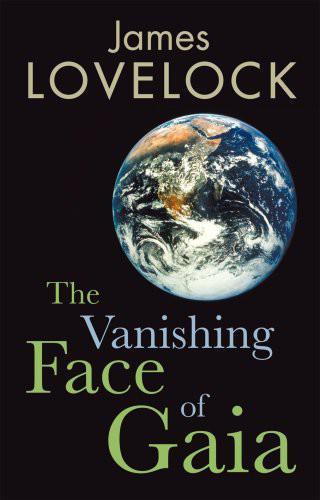
The Vanishing Face of Gaia: A Final Warning
by
James E. Lovelock
Published 1 Jan 2009
Our great‐grandparents often saw the constellations of stars and used Polaris to guide their way; on clear nights they even saw the Milky Way, that faint white band that crosses the sky and is a sideways view of our home galaxy. Apart from a few sailors and farmers miles away from any settlement, who still see the dark depths of the sky, we are all lost in the hazy air of that mega‐city that globalization has made of the human world. In a similar way scientists have become urbanized and have only recently taken the idea of a live Earth into their thinking. Most of them have still to digest the idea of Gaia and make it part of their practice. We are trying to undo some of the harm we have done, and as climate change worsens we will try harder, even desperately, but until we see that the Earth is more than a mere ball of rock we are unlikely to succeed.
…
Nuclear energy is by far the most effective way to reduce the emission of carbon dioxide, but that is not the most important reason for us to emulate France and make electricity from uranium. What is important is that cities demand a constant and economic supply of electricity which until recently has come from coal and gas but these are now declining and leave no alternative to nuclear energy. Huge flows of electricity will be demanded by the mega‐cities that are starting to emerge and this can only be met in the near term by a vigorous and rapid expansion of nuclear energy. This need is intensified by the fact that we have little land on which to grow food and intensive agriculture needs abundant energy. As oil runs out we will need to synthesize fuel for the mobile machinery of construction, transport and agriculture.
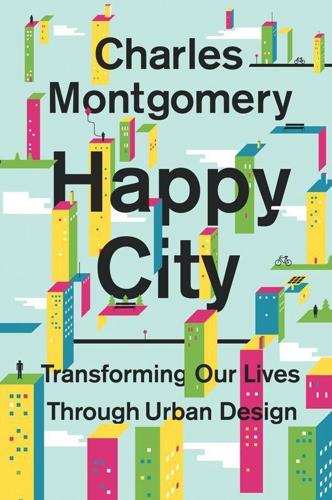
Happy City: Transforming Our Lives Through Urban Design
by
Charles Montgomery
Published 12 Nov 2013
The Romans, like the Athenians, were so deeply attached to their city that Rome itself was a spiritual project. Civic pride drove heroic feats of engineering and architecture—from aqueducts, highways, sewers, and massive ports to muscular temples and basilicas—which helped Rome grow into the world’s first megacity, with a peak population of more than one million.* As Rome grew fat on the fruits of its vast empire, its citizens adopted a new god of happiness. In 44 B.C. Julius Caesar approved construction of a temple to Felicitas, the god of pleasure, fortune, and fertility, not far from the Curia Hostilia, the meeting place of the Senate.
…
Repton’s manipulations appear in the drawings he made for his landed clientele, in which he would move trees from forest edges into open space, add herds of grazing animals, and create watering hole–like lakes to mimic savanna-like vistas. His contemporaries even built ditches, or haw-haws, to keep animals in without interrupting the naturalistic scenes with fencing. These views have been reproduced complete with shade trees, broad meadows, and lakes in the heart of some megacities, from London’s Hyde Park to Mexico City’s Bosque de Chapultepec to Frederick Law Olmsted’s New York masterpieces, Central and Prospect parks. In many ways, our landscape preferences support the lingering nineteenth-century idea that the city itself is a toxic and unnatural environment, and that dispersal is the natural response to biological truths.
…
On his advice, cities such as Jakarta, Delhi, and Manila have reclaimed streets from their usurpation by private cars, creating vast linear parks or handing the space to rapid bus systems modeled on Bogotá’s own. “Peñalosa’s philosophy on public spaces had a great impact on our perception of model cities,” Moji Rhodes, an assistant to the mayor in the seething megacity of Lagos, Nigeria, told me after Peñalosa convinced Lagos to start building sidewalks along new roads. Americans used to get by: U.S. Census Bureau, “Statistical Abstract of the United States 2009,” Washington, DC, 2009; The World Bank, “Motor Vehicles (per 1,000 People),” http://data.worldbank.org/indicator/is.veh.nveh.p3/countries (accessed April 28, 2013); U.S.

The Optimist: Sam Altman, OpenAI, and the Race to Invent the Future
by
Keach Hagey
Published 19 May 2025
The Saudi delegation had organized it with the aim of deepening the ties that had led to the kingdom’s $3.5 billion investment in Uber a few weeks earlier.22 “Sam was very impressed with the dinner,” said one attendee. “There was very good chemistry between the kingdom and Sam” for the next couple years, the person said. On October 9, 2018, a Saudi news agency announced that Altman had joined the advisory board of Neom—a portmanteau of the Greek word for “new” and the Arabic word for “future”—a $500 billion megacity the size of Massachusetts powered by AI and clean energy that MBS was building in the desert. Much like Altman’s dream for YC Cities, MBS wanted to remake Saudi society from the ground up. “Starting Neom from scratch, with independent systems and regulations, will ensure the availability of best services without social limitations,” MBS said at Neom’s first board meeting, according to The Wall Street Journal.
…
Alexander), 165–66 Meena the chatbot, 270 Memamp desktop search company, 76 Mendelsohn, Matt, 45 Metro (UK newspaper), 242 Metz, Cade, 145–46, 199 MGX investment fund, 310 Microsoft in the AI arms race, 270 Azure cloud, 216, 237, 272 and the Biden campaign, 296 Bill and Melinda Gates Foundation, 303 Bing search engine, 216, 271 during the “blip” and beyond, 277, 279–80, 282–83, 288–89, 293–94, 303–4, 310, 313 Edge web browser, 272 GitHub Copilot on Visual Studio, 262 HyperCard, 209 Inflection AI acquisition, 277 Internet Explorer web browser, 272 LinkedIn acquisition, 234 OpenAI’s relationship with, 2, 11, 13, 216–17, 226, 229–30, 234–35, 237, 245, 271–72, 303–4, 310, 313 QBasic language, 56 regulation of AI, 299–300 Tay the chatbot, 270 valuation of, 298 Visual Basic language, 56 Millennials, 4, 137, 205 Milner, Yuri, 138, 199 mimetic theory, 131 Minsky, Marvin, 142, 210 MIT (Massachusetts Institute of Technology), 63, 64, 92, 124, 160, 175, 178, 212 MIT Technology Review, 258–59, 269 Mithril Capital, 136 mobile phones enter the iPhone, 110–16, 118, 119 global positioning system (GPS) chips in, 57–58, 99 location-based services, 58–59, 106–7, 118–19 phone makers as the serfs of the mobile industry, 110 proprietary software on, 79 wireless carriers, 58–59, 75, 79, 90, 98, 100–9, 110, 118, 120, 159 mobile virtual network operator (MVNO), 99 Modi, Narendra, 14, 274, 275 Moloch (a god), 165–66 Monongahela Valley of Pennsylvania (Mon Valley), 30, 40 moonshots, 13, 16, 136, 194 Moore, Demi, 138 “Moore’s Law for Everything” (Altman), 255 More, Max, 141 Morehead-Cain Scholarship at the University of North Carolina at Chapel Hill, 53 Moritz, Michael, 16, 87–89, 112–13, 117, 186, 206 Morris, Robert Tappan, 63, 68, 74 Moscone Center West in San Francisco, 115 Moskovitz, Dustin, 212–13, 259, 300 Mountain View, CA, 85, 94, 107, 122, 133, 139, 149, 161, 172, 182, 235 “moving fast and breaking things,” 237 Mozilla Foundation, 63, 233–35 Mulherin, Oliver, 275, 288, 295, 311 Murati, Mira, 225–26, 242–43, 246–48, 268, 282–93, 304–5, 307–8 Musk, Elon, 2, 5 as an AI doomer, 2, 5, 163, 167–72, 214–15, 273–74 children fathered by, 277 colonization of Mars, 144, 147, 170–71 DeepMind investment, 147 departing OpenAI, 216–17, 221–24, 229, 234–36, 277, 304 fighting aging, 257 Halcyon Molecular, 257–59 lawsuit against OpenAI, 14–15, 304, 313 Neuralink, 193, 234 at OpenAI’s founding and beyond, 170–72, 183, 185–88, 192–94, 198, 213–14, 216–17, 221–24 in politics, 207, 313 relationship with Sam Altman, 16, 147, 170–72, 183, 194, 214–15 SpaceX, 147, 153, 167, 170–71, 187, 194 Tesla, 153, 167, 194, 223–26, 234, 255 Twitter, 118, 158, 169, 246–47, 261, 270, 281 X.com originally, 125 xAI, 15, 277, 310 MyMobileMenu (MMM) food ordering system, 75 MySpace, 103, 116 Nadella, Satya, 216, 229–30, 237, 271–72, 273, 288–89, 293–94 Nakamoto, Satoshi, 142 nanotechnology, 144, 164 Napa Valley, 185, 190, 260 NASA, 132–33 NASDAQ, 97 Nathoo, Kirsty, 139 National Center for Missing & Exploited Children, 98 National Institute of Standards and Technology (NIST), 299, 301 National Security Council, 299, 301 “natively multimodal,” 307 natural language processing, 174 Nature (journal), 148, 192 Nawrocki, Bob, 25–26 NBC Universal, 229 Nectome, 258 Neom, a megacity in Saudi Arabia, 231–32 Netflix, 204, 229 Neuman, John von, 140 neural networks, 147, 164, 176, 179–82, 190–93, 219, 221, 243, 314 Neuralink, 193, 234 NeurIPS (Conference on Neural Information Processing Systems), 178, 186, 305 neuroscience, 145–48, 202 New Enterprise Associates (NEA), 61–62, 74–75, 77, 80–81, 85–86, 89, 91, 92, 117, 121 New Hampshire, 297 New York (magazine), 134, 250, 261–62, 281 New York City, 10, 29–30, 43, 67, 86, 101–2 New York Stock Exchange, 163 New York Times Magazine, The, 139 New York Times, The, 29, 63, 132, 163, 217, 244, 270, 286, 288, 308, 312–13 New Yorker, The (magazine), 49, 81, 128, 152–54, 160, 165, 201–2, 259–60 New Zealand, 145, 171 Newhouse, Steve, 162 News Corp, 307 “newscasters,” 73 Newsom, Gavin, 205, 309 Newton, Thandiwe, 199 Nextel, 58, 99, 105–6 1910 Genetics, 250 Ng, Andrew, 57, 90, 170, 266 Nicholls, GA, 23 Nobel Prizes in Physics, 219, 312 Noerper, Thelma, 25 Nolan, Jonathan, 199 nonprofit structure of OpenAI, 4–5, 14–16, 28, 172, 184–87, 198, 222–23, 233–34, 236, 266, 275 Nosek, Luke, 147 nuclear energy, 12–13, 57, 108, 134–36, 154, 177, 205, 230, 259, 280 nuclear weapons, 27n, 168, 213 nude celebrity photos leaked by hackers, 162 Nwankwo, Jen, 250 o1 (“Strawberry”), 284, 309 Oakland, CA, 195 Obama, Barack, 21, 172, 207–8, 266 Ohanian, Alexis, 69–70, 75, 81, 162 Oklo fission microreactor startup, 13, 137, 280 Olah, Chris, 178, 184 1billionmasks.com, 250 O’Neill, Megan, 28–29 “On the Dangers of Stochastic Parrots: Can Language Models Be Too Big?”
…
(SSI), 309 Saga Ventures, 311 Salkin, Phil, 24 “Sam Altman for President,” 150 “Sam Altman Is the Oppenheimer of Our Age,” 281–82 Samuels, Lawrence, 40, 42 San Francisco Effective Altruism Global conference in San Francisco, 210 Mission District, 7, 152, 260 Moscone Center West, 115 Russian Hill neighborhood, 86, 260, 293, 315 University of California San Francisco, 202 San Francisco Chronicle (newspaper), 206 San Francisco Standard’s Life in Seven Songs podcast, 134, 198, 275 Sánchez, Pedro, 274 Sandberg, Sheryl, 98, 229 Sanyo flip phones, 80 SAP, 197 Saudi Arabia, megacity in, 231–32 Saudi Aramco, 232 Sauerberg, Bob, 160–63, 171 Saunders, William, 309 SBF (Sam Bankman-Fried), 212, 257, 276 Schmidt, Eric, 192 Schmidt, Steve, 296–97 Schoemehl Jr., Vincent C., 40 Scholz, Olaf, 274 Schulman, John, 184, 189, 226, 245–46, 265, 268–69, 310 Schumer, Chuck, 300 scientific breakthroughs, see innovation sci-fi, 3, 43, 47, 140, 199–200, 214, 220, 307–8 Scott, Kevin, 225, 230, 271, 289, 296 SDKs (software development kits), 110–14, 121 Seasteading Institute, 141–42 Seattle, 31, 76, 110–11, 215, 267, 271 Seeger, Pete, 86, 162 Segways, 75, 210 Seibel, Michael, 194, 232–33 self-driving cars, 168, 223–24 Seligman, Nicole, 303 Selman, Bart, 167–69 semiconductor industry, 72–73, 132, 298 Sentient Networks, 87 sentiment neuron, 218 “Sequence to Sequence” (Sutskever), 219 “sequence to sequence” learning, 178 Sequoia Capital, 16–17, 66, 86–89, 93–97, 116, 100, 106, 112–13, 116–27, 134, 136, 138, 151, 155, 161, 193, 186, 206, 309 AdMob mobile ad network, 121 in China, 231 Green Dot prepaid debit card company, 126–27, 133 need for “adults in the room,” 96–98, 217 “scout” program at, 123–25, 157 serendipity, enhancing, 98 Series A investment round, 89, 101, 125, 136, 156, 158–59 sex/gender, see tech bros; “women in tech” Shazeer, Noam, 270–71 Shear, Emmett, 76, 81–82, 157, 293–94 Shelley v.

Owning the Earth: The Transforming History of Land Ownership
by
Andro Linklater
Published 12 Nov 2013
But even more damaging was their inability to offer any example to follow in the place where it was most urgently needed, the fastest growing propertied economy in the world. In 2004, just about when Mrs. Polk’s last mortgage was being issued, Yang Wu, an excitable, stubborn restaurant owner living in Chongqing, central China’s megacity, began to build a redbrick house in the Hexing Road. It replaced the family’s dilapidated wooden dwelling, and according to its owner was as smart as any in Shanghai or Beijing. Three years later, a semiofficial development company, Chongqing Shengbo Real Estate, with plans for a shopping mall, slapped a compulsory purchase order on Yang’s house and demanded that he move out.
…
Since collectives were often represented by only a few village delegates and a party official, one collective might easily overrule another or in turn be overruled by a planning bureau backed by Communist cadres from a neighboring city. With party backing, it was easy for speculators to hack free what land they wanted from chengbao possession. In less than three decades, the megacity of Zhenzhen had grown from a fishing village near Hong Kong to an urban empire of more than eight million inhabitants, and gobbled up close to two hundred square miles of homes, fields, and ponds. But Zhenzhen was only one of 160 cities with populations of more than one million that clawed into the countryside to provide housing and employment for their inhabitants.
…
There the strongest pressure for reform came from members of the State Organs committee and the Business Works committee—the representatives of China’s booming industrial sector—anxious to boost domestic demand through growth in the housing market. Allied with them were representatives of the provinces and of municipalities, such as the megacity of Zhenzhen, well-known for advocating greater clarity in property law to facilitate its own acquisition of land for development. Not surprisingly, their fingerprints were evident in the way the new property law favored corporate interests rather than those of individuals. It was modeled on the Bürgerliches Gesetzbuch, itself a product of German business and bureaucracy.
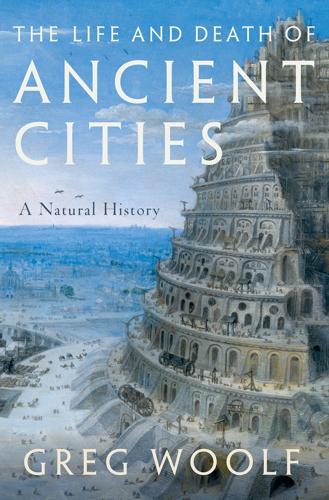
The Life and Death of Ancient Cities: A Natural History
by
Greg Woolf
Published 14 May 2020
By the end of this century, that figure will probably reach 75 per cent. Cities are growing so fast that it is difficult to keep count. One recent estimate lists nearly a thousand metropolitan areas that each have at least half a million inhabitants. The United Nations’ latest survey of World Urbanization Prospects lists 33 megacities—cities with more than 10 million inhabitants each.2 What counts as a city? The answer (and the definitions used in those reports) varies from place to place. In Nicaragua a settlement with street lights and electricity is a city, even if it has only 1,000 inhabitants. Japan sets the threshold at 50,000.
…
Many early cities were smaller, and some were quite low-density, vast sprawling areas of yards and gardens and compounds loosely connected by paths or even separated by patches of woodland or common ground. But often this was not feasible. No ancient cities approached the population densities of today’s megacities, but some had population densities of 10,000 to 20,000 people per square kilometre. This was only possible by building up and building down, by packing homes close together. Modern cities can often spread horizontally, because transport systems allow people to live long distances from where they work or find food.
…
Since the Industrial Revolution, migration along new transport infrastructure has piled up vast populations. Chicago famously grew from less than 5,000 inhabitants to more than a million in the second half of the nineteenth century. Toronto had only slightly less dramatic growth in the late nineteenth and early twentieth centuries. The latest megacities are growing fast in West Africa and Northeast India, in parts of China, and along the western and eastern seaboards of the United States. Modern states are often more successful at planning or at least accommodating growth. Ever since the days of Gilgamesh rulers and governments have tried to control urbanization, planting cities in new lands, amalgamating cities, even obliterating some or resettling entire subject populations in new lands to create dynastic and national capitals.
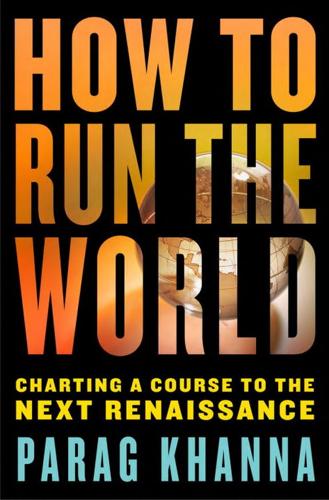
How to Run the World: Charting a Course to the Next Renaissance
by
Parag Khanna
Published 11 Jan 2011
Their power lies in money, knowledge, and stability. New York City’s economy alone is larger than most of sub-Saharan Africa’s. Port cities and entrepôts such as Dubai act like twenty-first-century Venice: They are “free zones” where products are efficiently re-exported without the hassles of government red tape. Such mega-cities as Rio, Istanbul, Cairo, Mumbai, Nairobi, and Manila are the leading urban centers of their countries and regions, yet each teems with hundreds of thousands of new urban squatters each year. The migrant underclass lives not in chaos and “shadow economies” but often in functional, self-organizing ecosystems, the typical physical stratification of medieval cities.
…
India has an Energy Conservation Act that mandates that states set aside funds for clean energy. New Delhi has enforced strong regulations requiring buses and scooters to run on natural gas, while planting thousands of trees to make the city’s air breathable again—a rare success for a poor-country mega-city. Its accomplishments are the results of both a progressive high court and a persistent lobbying from India’s rambunctious civil society, particularly the Center for Science and the Environment, which sends representatives from village to village to teach people to harvest as much as 60 percent of the rainwater that falls on their properties using a system of rooftop gutters and ground trenches.

Explore Everything
by
Bradley Garrett
Published 7 Oct 2013
Thrift, ‘Out of Order: Understanding Repair and Maintenance’, Theory, Culture & Society 24: 3 (2007). 12 Dylan Trigg (2005), ‘Ninjalicious 1973–2005’, Side Effects. 13 Ninjalicious, ‘On Viewing Holes’, Infiltration, 13: 2 (1999). 14 David Pinder, Visions of the City: Utopianism, Power and Politics in Twentieth-Century Urbanism (Edinburgh: Edinburgh University Press, 2005), p. 149, quoted in Luke Dickens, ‘Placing Post-Graffiti: The Journey of the Peckham Rock’, Cultural Geographies 14: 4 (October 2008). 15 Peter Adey, ‘Vertical Security in the Megacity: Legibility, Mobility and Aerial Politics’, Theory, Culture & Society 27: 6 (2010); Stuart Elden, ‘Secure the Volume: Vertical Geopolitics and the Depth of Power’, Political Geography 34 (May 2013). 16 Minton, Ground Control. 17 You can see the photo at guardian.co.uk/artanddesign/2012/sep/21/urban-exploration-bradley-garrett-photography. 18 Eva Weber, dir., The Solitary Life of Cranes, Channel 4, 2008. 19 Henri Lefebvre, Rhythmanalysis: Space, Time, and Everyday Life, transl.
…
CROWDS AND CUFFS 1 See Rachel Pain, Mike Kesby and Kye Askins, ‘Geographies of Impact: Power, Participation and Potential’, Area 43: 2 (June 2011); Tom Slater, ‘Impacted Geographers: A Response to Pain, Kesby and Askins’, Area 44: 1 (March 2012). 2 David Pinder, ‘Urban Interventions: Art, Politics and Pedagogy’, International Journal of Urban and Regional Research 32: 3 (September 2008). 3 Tom Bill, ‘London “Shard” Homes Create Record Price Gap’, Reuters, 12 April 2012. 4 ‘The View from the Shard: Plan Your Visit’, at theviewfromtheshard.com/#plan-your-visit/visitor-information. 5 Bradley L. Garrett, ‘Scaling the Shard’, Domus 960 (July/August 2012). 6 P. Adey, ‘Vertical Security in the Megacity: Legibility, Mobility and Aerial Politics’, Theory, Culture and Society 27: 6 (November 2010), p. 58. 7 Stephen Graham and Lucy Hewitt, ‘Getting Off the Ground: On the Politics of Urban Verticality’, Progress in Human Geography 9 (April 2012). 8 Matthew Power, ‘Excuse Us While We Kiss the Sky’, GQ, March 2013. 9 Wasik, ‘My Crowd’, p. 65. 10 Rancière, ‘Notes on the Photographic Image’, p. 9. 11 There are more than 130 other comments on that blog post (placehacking.co.uk/2012/04/07/climbing-shard-glass), along with the many others in newspapers and blog articles around the web. 12 Bradley L.
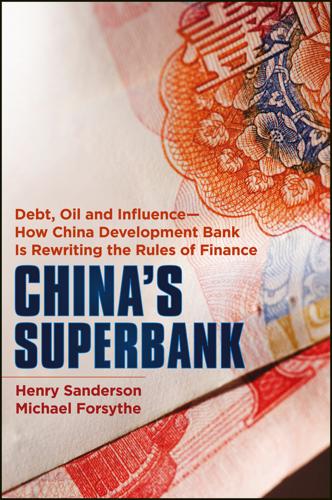
China's Superbank
by
Henry Sanderson
and
Michael Forsythe
Published 26 Sep 2012
Powerful local officials have snatched it back, sometimes violently, to make way for apartment blocks, bullet trains, malls, “development zones,” and sports complexes in a building binge that has been financed by more than 10,000 so-called local-government financing vehicles (LGFVs; ), companies set up by local governments to allow them to spend beyond the limits of their budgets. These hidden and unregulated companies have been the unseen hand pushing China’s investment-led economic growth over the past decade, which has so impressed foreign visitors. No city, from the skyline of Shanghai to the western mega-city of Chongqing, has been without one, or sometimes handfuls, and they have been the main conduit through which the savings of the Chinese people have been channeled into investment and construction. But the result has led the state banking system to hold trillions of yuan of questionable debt with little accountability for its repayment.
…
Chen realized the importance of a powerful development bank to overcome bottlenecks in financing and create markets across the country, turning what were local government fiefdoms into companies that could borrow money and sell bonds. The result has seen China expand infrastructure like never before in its history, creating cities such as the bustling port of Tianjin and the megacity of Chongqing on the banks of the Yangtze. “Investment lies at the heart of economic development,” William Diamond, a World Bank expert, wrote in his 1957 book about development banks, in a view that CDB would later share. At the same time, before other commercial banks became involved, CDB backed the central state-owned enterprises to become internationally competitive and acquire resources and investments overseas, with loans to Venezuela and countries in Africa helping to bring in new contracts and business.
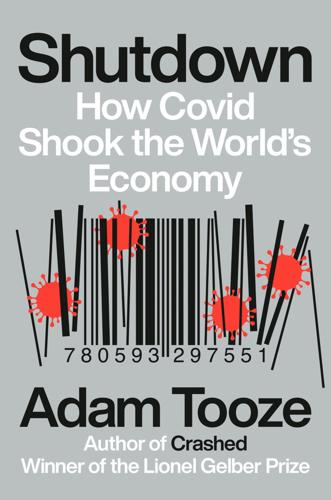
Shutdown: How COVID Shook the World's Economy
by
Adam Tooze
Published 15 Nov 2021
This had been a focus of recent efforts on the part of the CCP to consolidate its grip on China’s sprawling new megacities.20 In 2020, that investment in what was called “social administration innovation” paid dividends. Zhejiang province, on China’s southeastern seaboard, is where Xi had made his name as a provincial official. It had a population of nearly 60 million and enlisted 330,000 “grid workers.” Hubei managed 170,000, Guangdong 177,000. Sichuan mobilized 308,000, and in the megacity of Chongqing, there were 118,000 grid workers monitoring every neighborhood. This was the equivalent in terms of density of coverage of a big city police force in the United States.21 Working with the property management companies that service China’s private apartment complexes, enrolling millions of volunteers from the ranks of the party, they turned each compound into a lockdown zone.22 The aim was to find infected people and quarantine them.
…
“The mess in Hubei is only the tip of the iceberg and it’s the same with every province,” Xu opined.6 It was only a matter of time, therefore, before the Communist regime suffered its comeuppance. Xu would pay for his audacity with dismissal and house arrest. But worse than that, his prediction of comprehensive regime failure was refuted too. As for the West, mistaking Wuhan for Chernobyl would cost it dearly. Wuhan was not a backwater deep behind the Iron Curtain. It was a globalized megacity, which is why the outbreak was so dangerous. Come the holidays, roughly half Wuhan’s population left to visit family and friends. That meant 5 million travelers spreading the infection by car, bullet train, and airplane not just to the rest of China but to the entire world.7 In January, 15,000 Chinese tourists left Wuhan’s international airport for Japan alone.8 Within a few weeks, cases were reported in twenty-five countries, the first in Thailand.

The Controlled Demolition of the American Empire
by
Jeff Berwick
and
Charlie Robinson
Published 14 Apr 2020
In an effort to thwart terrorism, all cash will be outlawed and instead, everything will be moved into digital currency in the form of a microchip that everyone will have implanted under their skin to conduct all financial transactions, courtesy of the World Bank. In order to protect the ocean from additional pollution, the mega-cities will be constructed inland and the oceans will be rezoned as protected areas with no access for the masses. The same goes for National Parks as the federal government will move to reclaim the majority of the land in the United States, including all of the minerals and oil, while the citizens are forced to migrate into large cities.
…
This is the same organization that was involved in the intentional infection of Guatemalan orphans with syphilis from 1945-1956. Both Johns Hopkins University and the Rockefeller Foundation were sued for $1 billion by the victims for their role in this non-consensual experiment. What Event 201 simulated in October 2019 was a Coronavirus outbreak that spread from bats to pigs to people, starting in a tightly-packed megacity and spreading through airplane travel all over the world, leading to a severe pandemic where a vaccine would have to be created in order to gain control over the situation. THE EVENT 201 SCENARIO (WEBSITE): Event 201 simulates an outbreak of a novel zoonotic coronavirus transmitted from bats to pigs to people that eventually becomes efficiently transmissible from person to person, leading to a severe pandemic.
…
The pathogen and the disease it causes are modeled largely on SARS, but it is more transmissible in the community setting by people with mild symptoms. The disease starts in pig farms in Brazil, quietly and slowly at first, but then it starts to spread more rapidly in healthcare settings. When it starts to spread efficiently from person to person in the low-income, densely packed neighborhoods of some of the megacities in South America, the epidemic explodes. It is first exported by air travel to Portugal, the United States, and China and then to many other countries. Although at first some countries are able to control it, it continues to spread and be reintroduced, and eventually no country can maintain control.
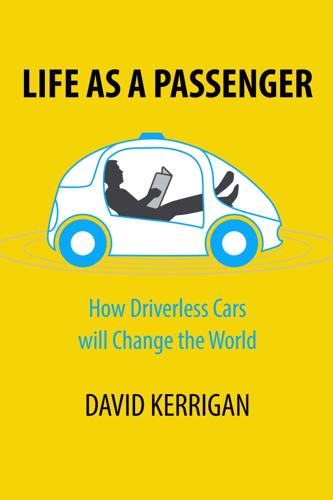
Life as a Passenger: How Driverless Cars Will Change the World
by
David Kerrigan
Published 18 Jun 2017
Public-transportation policy makers will need to consider the economics of AVs and consumer attitudes toward AVs in their investment plans. Their long-term planning must consider the possibility that the favorable economics of AVs might lead consumers not only to give up their own vehicles but also to shun conventional mass transit in favor of robo-taxis. This phenomenon could be particularly pronounced in megacities in emerging markets, where public-transit capacity can’t keep up with rising demand. Policies that would incentivise drivers to switch to AVs—such as requiring expensive permits for conventional personal vehicles—could substantially quicken attempts in those cities to prioritise daily commutes and errands by other modes such as walking, bicycling, and ridesharing.
…
This leapfrogging has already happened with telephone systems: Developing countries that lacked land-line telephone and broadband connectivity, such as India, made the leap directly to mobile systems rather than build out their land-line infrastructures. With an annual toll of 150,000[317] deaths, over 10% of all the road deaths in the world are in India. Given the population densities in some of these megacities, the relatively young populations and the lack of a historical model of car ownership, there may just be an opportunity for shared self-driving cars to avert a generation of carnage and pollution spreading further around the globe. Framing the Future “The world as we have created it is a process of our thinking.
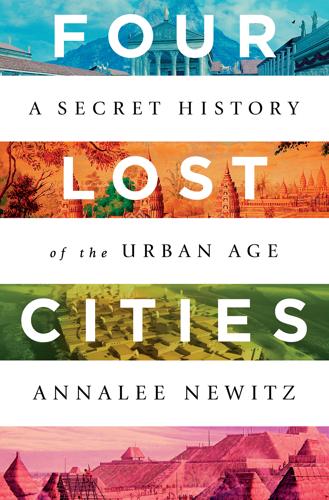
Four Lost Cities: A Secret History of the Urban Age
by
Annalee Newitz
Published 2 Feb 2021
The anxiety I experienced in San Francisco during a single economic bust-and-boom cycle might seem like nothing in retrospect, especially if the next century brings war in the Pacific, or the earthquake that Californians call “the big one” finally hits. For the same reason, we can’t assume that US cities like Detroit and New Orleans—victims of economic and natural disasters in the early 21st century—will ultimately be abandoned. In 200 years, both might be thriving megacities that look nothing like they do today. Their fates depend on political will, as well as the human labor power needed to rebuild. Though the futures of individual cities may be uncertain, we can make predictions about the likelihood that people will abandon a city, based on evidence from urban history.
…
If our political systems can’t address the twin problems of climate and poverty, there will be more food and water riots, as well as global wars over natural resources. The costs of city life will far outweigh the benefits, sparking mass migrations of people seeking new homes—and more international conflicts. Eventually, some of today’s megacities will look like something out of a far-future science-fiction movie, full of half-drowned metal skeletons covered in incomprehensible advertisements for products we can no longer afford to make or buy. But if we’ve learned anything from history, we know the death of a few cities doesn’t mean the world will collapse into dystopia.

A Poison Like No Other: How Microplastics Corrupted Our Planet and Our Bodies
by
Matt Simon
Published 24 Jun 2022
Marine Pollution Bulletin 104 (1–2): 290–93. https://doi.org/10.1016/j.marpolbul.2016.01.006; Dris, Rachid, Johnny Gasperi, Vincent Rocher, Mohamed Saad, Nicolas Renault, and Bruno Tassin. 2015. “Microplastic Contamination in an Urban Area: A Case Study in Greater Paris.” Environmental Chemistry 12:592–99. https://doi.org/10.1071/EN14167; Dris, Rachid, Johnny Gasperi, and Bruno Tassin. 2018. “Sources and Fate of Microplastics in Urban Areas: A Focus on Paris Megacity.” In Freshwater Microplastics: Emerging Environmental Contaminants? The Handbook of Environmental Chemistry 58 edited by Martin Wagner and Scott Lambert. https://doi.org/10.1007/978-3-319-61615-5_11; Klein, Malin, and Elke K. Fischer. 2019. “Microplastic Abundance in Atmospheric Deposition within the Metropolitan Area of Hamburg, Germany.”
…
“Atmospheric Microplastic Deposition in an Urban Environment and an Evaluation of Transport.” Environment International 136:105411. https://doi.org/10.1016/j.envint.2019.105411; Truong, Tran-NguyenSang, Emilie Strady, Thuy-Chung Kieu-Le, Quoc-Viet Tran, Thi-MinhTam Le, and Quoc-Thinh Thuong. 2021. “Microplastic in Atmospheric Fallouts of a Developing Southeast Asian Megacity under Tropical Climate.” Chemosphere 272:129874. https://doi.org/10.1016/j.chemo sphere.2021.129874. Fuller, Gary. 2021. “It’s Not Just Oceans: Scientists Find Plastic Is Also Polluting the Air.” Guardian. https://www.theguardian.com/environ ment/2021/feb/26/not-just-oceans-plastic-polluting-air-delhi-smog.
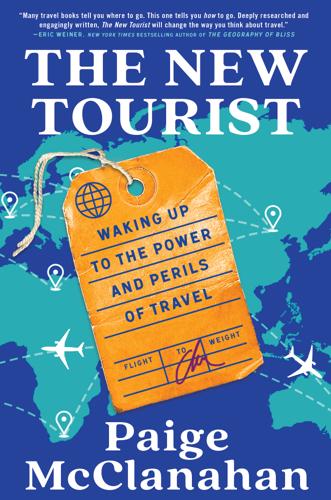
The New Tourist: Waking Up to the Power and Perils of Travel
by
Paige McClanahan
Published 17 Jun 2024
For lunch, we end up at a restaurant in Diriyah, a sprawling, open-air network of shops, eateries, and tourist attractions that’s one of the Saudi government’s “giga projects.” These are places where the government is investing somewhere north of a billion dollars to build a fresh future for the country’s oil-based economy. Other giga projects include NEOM, a futuristic megacity that’s due to cover an area the size of Massachusetts in the middle of the desert, and the Red Sea Project, a luxury development that includes a new international airport, fifty resorts, and some eight thousand hotel rooms. Here in Diriyah, which sits next to a historic site that’s considered the ancestral home of the Al Saud dynasty, the focus is on heritage tourism—but there’s plenty of shopping and dining to do, too.
…
I ask whether she believes women in Saudi Arabia have all the freedoms they deserve, and I ask what she thinks of the assassination of the journalist Jamal Khashoggi, an incident that—judging by her response—she’s clearly spent some time considering. Her answers are thoughtful; many surprise me, and I find myself disagreeing with several outright. I push back on some of her answers, and she responds accordingly—but we never come close to an argument. Mostly, Fatimah and I watch the booming megacity of Riyadh creep by outside the windows of her pickup truck, and we talk about our lives. After I get home, I pitch a Q&A with Fatimah to my editors at the New York Times, and I’m delighted when they say yes. I reach Fatimah again over Zoom a few weeks later to conduct the official interview, which I then write up, adding important context at the top.
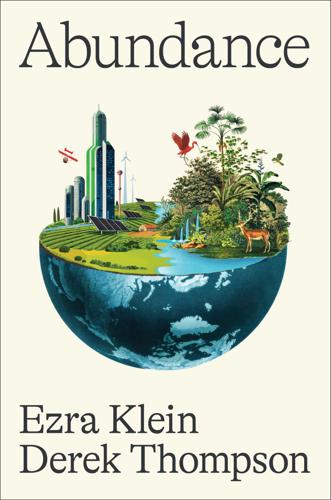
Abundance
by
Ezra Klein
and
Derek Thompson
Published 18 Mar 2025
“The project, as currently planned, would cost too much and take too long. There’s been too little oversight and not enough transparency. Right now, there simply isn’t a path to get from Sacramento to San Diego, let alone from San Francisco to LA. I wish there were.”44 Ambitions were cut. No longer was California trying to build high-speed rail to connect the megacities of San Francisco and Los Angeles. Now it was trying to salvage something, anything: A line between the agricultural centers of Merced and Bakersfield. A line no one would have authorized if it had been the plan presented in the first place. The scaled-down plan was estimated at $22 billion.45 But even the price tag on that line has ballooned.
…
Volney,” January 8, 1797, National Archives, https://founders.archives.gov/documents/Jefferson/01-29-02-0202. 13. Hans Rosling, “The Magic Washing Machine,” TEDWomen 2010, December 2010, https://www.ted.com/talks/hans_rosling_the_magic_washing_machine/transcript?subtitle=en. 14. Hannah Ritchie, “What the History of London’s Air Pollution Can Tell Us About the Future of Today’s Growing Megacities,” Our World in Data,” June 20, 2017, https://ourworldindata.org/london-air-pollution. 15. Hannah Ritchie, Not the End of the World: How to Be the First Generation to Build a Sustainable Planet (New York: Little, Brown Spark, 2024), 48. 16. “Renewables Competitiveness Accelerates, Despite Cost Inflation,” International Renewable Energy Agency, press release, August 29, 2023, https://www.irena.org/News/pressreleases/2023/Aug/Renewables-Competitiveness-Accelerates-Despite-Cost-Inflation; Felix Creutzig, Jérôme Hilaire, Gregory Nemet, Finn Müller-Hansen, and Jan C.

Bricks & Mortals: Ten Great Buildings and the People They Made
by
Tom Wilkinson
Published 21 Jul 2014
The ruins of the Yuanming Yuan – largely ignored if not viewed with suspicion as remnants of a feudal past between 1949 and 1978 – are now used to whip up nationalist, and sometimes xenophobic, sentiment, in order to forge a nation state based on those very nineteenth-century European ideals that led to the destruction of the palace in the first place. The cruel irony that the most visible of its remains are Western buildings has not been lost on Chinese observers, although the possibility that they might be inappropriate touchstones for a supposedly socialist country is very rarely suggested. And today, Beijing, Shanghai and the other mega-cities of China are filled with modern buildings that meld Western and Chinese characteristics. The so-called Bird’s Nest stadium in Beijing, for example, was the result of a collaboration between Swiss architects Herzog & de Meuron and Chinese artist Ai Wei Wei. Like the Olympic opening ceremony that took place there in 2008, it’s a bizarre confection of Soviet and consumerist spectacle.
…
These come in many forms, whether peripheral accretions like Rocinha or older enclaves such as Cairo’s City of the Dead, a Mameluke cemetery the tombs of which are inhabited by over half a million people. Slumification is not the only problem facing architecture: in 2010 the proportion of the world’s people living in cities passed 50 per cent for the first time. The majority of urbanites live in the megacities of the developing world, such as Shanghai, Mexico City or even prodigious new forms like the endless sprawl of the Rio/Sao Paulo Extended Metropolitan Region, which has a combined population of 45 million. While cities swell and fuse to become regional megalopolises, the countryside is also urbanising.

Driverless: Intelligent Cars and the Road Ahead
by
Hod Lipson
and
Melba Kurman
Published 22 Sep 2016
Today the transportation sector is already one of the largest contributors to air pollution. In the United States alone, exhaust from cars and trucks causes an estimated 29 percent of the greenhouse gas emissions that human activities generate each year.4 If driverless cars were to increase the number of vehicle miles traveled per capita, densely populated “megacities” in developing nations would be hit particularly hard. While the United States has a nearly 100-year-old relationship with the car, other nations are enthusiastically catching up. China is following in the footsteps of the United States, gaining its own car culture. As a growing and newly affluent Chinese middle class embraces the convenience of car travel, cities such as Beijing and Zhengzhou are suffering from spectacular eight-lane traffic jams and worsening smog levels.
…
Commuting The greater metropolitan areas of cities such as Mumbai, Mexico City, and Shanghai are each home to more than 20 million people. By the year 2050, the size of the global urban population will nearly double, from today’s figure of 3.3 billion people to a projected 6.4 billion.21 These megacities will stretch for miles and their streets will be stuffed with cars as their citizens are forced to engage in a daily and potentially deadly attempt to get around. As urban populations grow, cities will need to use their space wisely. When driverless cars become commercially available, forward-thinking city planners can repurpose urban parking lots as parks and affordable housing.

Meat: A Benign Extravagance
by
Simon Fairlie
Published 14 Jun 2010
Concerns arise when the pace of change in the livestock sector exceeds the capacity of the rest of the economy to provide alternative employment opportunities.13 There is no shortage of reasons for challenging the trajectory laid down by the FAO. Why, we may ask, should the rest of the world follow the path we have trodden, can they not learn from our mistakes? What is to be gained by dispossessing peasants – the only people on this earth whose environmental footprint does not extend into other people’s space – and herding them into megacities of jaw-dropping unsustainability? When the world is already facing a resource crisis, how can it make sense to promote a centralized food economy that pours good human food down animals’ gullets and that relies so heavily upon fossil fuels for its fertility, processing, transport, refrigeration, packaging and commercialisation?
…
As the FAO remarks ‘ruminant production, both meat and milk, tends to be much more rural-based’, because of the need for bulky fibrous feeds. If large numbers of ‘inefficient’ cows were culled, millions of poor rural dwellers would lose the ability to harness their local biomass and add to the swell of refugees flocking into megacities. There is a very good case for reducing the numbers of feedlot cattle and of rainforest cattle, which are extravagant and destructive in other respects; but beyond that, large scale reductions in ruminants would have uncertain returns in terms of methane emission because we cannot be sure how the biosphere will respond, would increase pressure for fossil fuel consumption, and would have severe social repercussions.
…
Nutrient loading is caused by high animal densities, particularly on the periphery of cities and by inadequate animal waste treatment.79 The FAO’s solution is to ruralize ‘confined animal feeding operations’, or factory farms, which it considers should no longer be sited like satellites around megacities, but should be more widely distributed throughout the countryside. Since the SARS and swine flu epidemics, the FAO also cites the risk of disease as another reason for dispersal.80 This is a move in the right direction, but unless these factories are subdivided back into smaller farms, the nutrients will still end up in a huge methane generating HEAP (though in a more bucolic location) and still require fossil-fuel powered transport to take them back to the land from which they came.
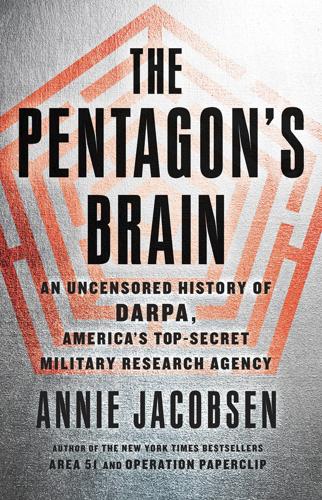
The Pentagon's Brain: An Uncensored History of DARPA, America's Top-Secret Military Research Agency
by
Annie Jacobsen
Published 14 Sep 2015
Hickey, Memo RM-3208-ARPA, August 1962, ARPA Combat Development & Test Center, Vietnam, Monthly Report (n.d.), RG 330, Project Agile, NACP. 9 “Signs of conflict”: Hickey, Window, 19, 90–91. 10 change of plans: Ahern, CIA and Rural Pacification in South Vietnam (U), 114; Hickey, Window, 91. 11 effective means of pacification: Memorandum from the director of the CIA to Secretary of Defense McNamara on the Strategic Hamlet Program, July 13, 1962, CIA. 12 “monitor”: Ehlschlaeger, “Understanding Megacities with the Reconnaissance, Surveillance, and Intelligence Paradigm,” xii. 13 Cu Chu villagers: Hickey, Window, 93. 14 “I said, in essence”: Ibid., 99. 15 Hickey recalled paraphrasing: Ibid., 99. 16 ARPA officials complained: Deitchman, Best-Laid Schemes, 342. 17 “more patient approach”: Elliott, 33. 18 “ground to a pulp”: Ibid., 38. 19 Tanham showed great optimism: Tanham, War Without Guns, 25-29. 20 “Given a little luck”: Elliott, 31.
…
Congress, H8500–H8550, Joint Explanatory Statement, Terrorism Information Awareness (TIA), Congressional Record, September 24, 2003. 5 “detect the clandestine production”: Tether, Statement to Congress, March 10, 2005, 11. 6 “a network of nonintrusive microsensors”: Leheny, “DARPA’s Urban Operations Program,” 38. 7 unclassified documents: Ehlschlaeger, “Understanding Megacities with the Reconnaissance, Surveillance, and Intelligence Paradigm,” 50–53. 8 the HURT program: DARPA Information Exploitation Office (IXO) HURT Program Office, aerial vehicle platform documents; See also James Richardson, “Preparing Warfighters for the Urban Stage,” located in DARPA: 50 Years of Bridging the Gap, 166–67. 9 “The [HURT] system”: Pagels quoted in Clarence A.
…
Franke, Morris Hadley, and William D. Pawley. “Report on the Covert Activities of the Central Intelligence Agency.” Special Study Group, Washington, DC, July 1954. Eckhart, Major General George S. Vietnam Studies: Command and Control, 1950–1969. Department of the Army, Washington, DC, 1974. Ehlschlaeger, Charles. “Understanding Megacities with the Reconnaissance, Surveillance, and Intelligence Paradigm.” U.S. Army Engineer Research Development Center, April 2014. Foster, John S. “Alfred Dodd Starbird, 1912–1983.” National Academy of Engineering, Volume 3, The National Academies Press, Washington, DC, 1989. Gates, W. L. “Rand/ARPA Climate Dynamics Research: Executive Summary and Final Report.”
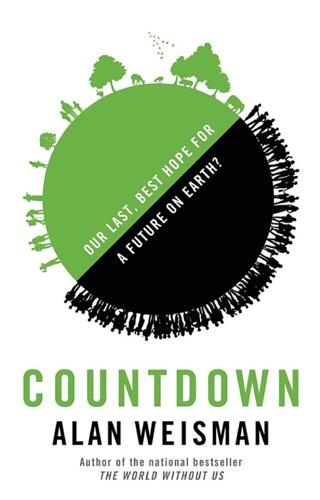
Countdown: Our Last, Best Hope for a Future on Earth?
by
Alan Weisman
Published 23 Sep 2013
Even the richest man in town, Mukesh Ambani, chairman of the energy and materials conglomerate Reliance Industries, who’s built a twenty-seven-floor, four-hundred-thousand-square-foot home for his family, doesn’t run off the neighbors living in the cracks between the surrounding buildings, because his mansion needs a staff of six hundred. Mumbai is one of the few places on Earth where there is 100 percent employment, where literally anybody can find work—unlike its gloomy megacity alter-ego five hundred miles up the Arabian seacoast, Karachi. Mumbai may lack Karachi’s menace—but what will happen when it’s all built? Building is what Krishna Pujari is worried about—not that they’ll stop, but that Dharavi, where he lives and makes his living, is where the developers have fixed their crosshairs next, and they’re going to build him out of business.
…
“Ecosystem Service Assessment and Management.” PowerPoint Presentation, Chinese Academy of Sciences, September 24, 2010. Webel, Sebastian. “Sustainability Boom.” Pictures of the Future Magazine (Siemens), Spring 2012: 90–94. http://www.siemens.com/pof. Webster, Paul, and Jason Burke. “How the Rise of the Megacity Is Changing the Way We Live.” Observer (UK), January 21, 2012. Weiss, Kenneth R. “Beyond 7 Billion: The China Effect.” Los Angeles Times, July 22, 2012. Wines, Michael. “Qian Xuesen, Father of China’s Space Program, Dies at 98.” New York Times, November 3, 2009. Wong, Edward. “Reports of Forced Abortions Fuel Push to End Chinese Law.”
…
“For Muslims in India, an Uneasy Calm.” Los Angeles Times, December 14, 2008. “Dr. Gurcharan Singh Kalkat.” Accessed at: pbplanning.gov.in/pdf/Biodata%20GS%20Kalkat.pdf. “Farmer suicides: NGO points to Punjab reporting fewer numbers.” Times of India, December 30, 2011. Ferris, David. “Asia’s Megacities Pose a Stark Environmental Challenge.” Forbes, August 31, 2012. Goldenberg, Suzanne. “Where a Baby Is Born Every 2 Seconds.” Guardian (UK), Saturday 14, 1999. Gupta, Shankar Prasad. “Forest Tenure Issues in Terai of Nepal: Understanding the Present Management Regimes.” A Term Paper Report on Forestry and Wildlife.
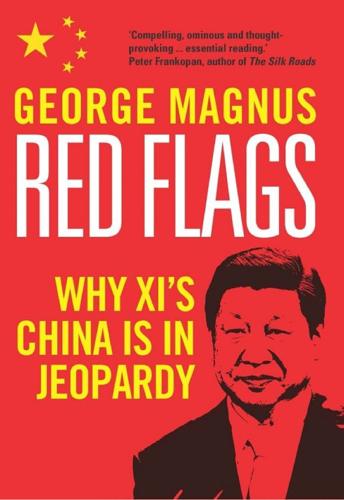
Red Flags: Why Xi's China Is in Jeopardy
by
George Magnus
Published 10 Sep 2018
China also plans to expand the number of airports in the country from 206 to 272 by 2020, half as many again as existed in 2011. Beijing’s second international airport is expected to open in June 2019, complete with seven runways and the capacity to process 72 million passengers a year. Just 50 kilometres south of Beijing, moreover, in a backwater of Hebei province, there are plans to build a new megacity, called Xiong’an New Area, which is supposed to rival Shanghai and Shenzhen one day. It is thought that the project could attract 3–6 million people over the next decade, along with RMB 1–2 trillion of investment, making it the biggest single infrastructure project in the history of modern China.6 Yet, for all these and similar statistics, there is also a litany of stories about ghost towns with empty apartment blocs and few residents, lonely and underused airports in impoverished counties of China, empty roads, the chronic overcapacity of multiple transportation projects to the same access point, and industrial zones that are barely occupied, and to which foreign companies rarely go.7 It is all very well to argue that, in the long run, more people living in more cities will gradually chip away at the overcapacity in infrastructure.
…
Such policies would most likely help to lower household savings, accelerating a change that will probably happen anyway over time as China ages. The working-age population is now in decline, and the old-age dependency ratio is predicted to double between 2017 and 2030. Social benefits should rise and be extended to all working people and their families. The growth in services should be actively encouraged, both in megacities such as Beijing or Shanghai, which are already well -served, but also and importantly in other cities, especially those inland, which are not.28 Modern service industries, which remain relatively closed, could be deregulated and opened up, for example in a wide range of communication, professional, business, entertainment and information services.
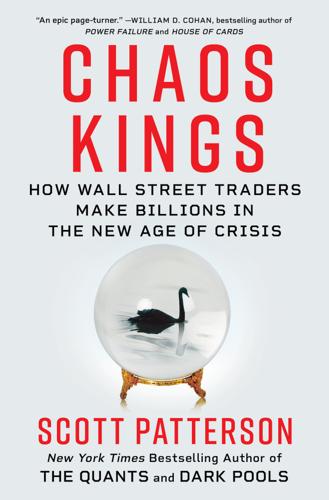
Chaos Kings: How Wall Street Traders Make Billions in the New Age of Crisis
by
Scott Patterson
Published 5 Jun 2023
In other words, nonlinear events tend to get very big, very fast. One infected person, possibly asymptomatic, spreads the virus to 2 people, those 2 spread it to 4, 4 to 16, 16 to 256… and on and on to the millions. Exactly the dynamic that freaked out Bill Ackman in January 2020. Now, due to the modern world’s hyper-networked, jet-fueled, megacity intermixing, the spread—the R0—could be even more nonlinear, more exponential. “Global connectivity is at an all-time high, with China one of the most globally connected societies,” the “Systemic Risk” memo explained. “Fundamentally, viral contagion events depend on the interaction of agents in physical space.”
…
Morgan, 60, 167, 185–86, 232, 250, 263 Jobs, Steve, 14 Johansen, Anders, 85, 86, 87 Johansen-Ledoit-Sornette (JLS) model, 86–88 Johnson, Boris, 17, 189 Jones, Paul Tudor, 69 Junkin, Andrew, 159 Kahneman, Daniel (Danny), 78–79, 80, 119, 124 Karins, Bill, 290 Karniol-Tambour, Karen, 250 Kasman, Bruce, 167 Kavanaugh, Ryan, 94–95 Kayyem, Juliette, 35 KBC Bank, 64 KBC Financial Products, 64, 69 Keenan, Jesse, 258–59 Keith, David, 251 Kelly, John E., 19 Kepos Capital, 221, 238–39 Keynes, John Maynard, 121, 136 Kim, Paul, 276–77 Klipp, Everett, 40, 41, 42–44, 47, 48, 68 Knopoff, Leon, 85 Kolbert, Elizabeth, 239 Krugman, Paul, 122 Lagnado, Ron, 151, 152, 153–54, 157, 158, 159, 175 Law of Large Numbers, 104, 266 Leatherman, Lamont, 247–48, 252 Ledoit, Oliver, 86, 87 Lehman Brothers, 109, 115, 119–20, 134, 167, 261 Linden, Larry, 229 Litterman, Bob, 219–31, 236, 237–41, 273, 290 Lloyd’s of London, 105, 261, 266–67 log-periodic power law singularity (LPPLS) model, 90, 91, 92, 131–32, 205 Lollos, Adam, 15 LongTail Alpha, 157, 176 Long-Term Capital Management, 13, 50, 60, 68, 102 longtermism, 281–84 Lorenz, Ed, 132 Madoff, Bernard L., 77 Mais, Andrew, 263 Malachite Capital Management, 168 Manchin, Joe, 287, 290 Mandelbrot, Benoit, 73–76, 84, 88, 89, 97, 103–4, 105 Mann, Michael, 246 Markowitz, Harry, 101, 228 Maturana, Humberto, 208 McCoy, Keith, 233 McKay, Adam, 36 McKinsey & Company, 249, 252 megacity, 21 Meng, Ben, 158, 159, 171–73, 175 Menger, Carl, 136 Merrill Lynch, 42 Mitsotakis, Kyriakos, 245 Modern Portfolio Theory (MPT), 101–2, 104, 153, 228, 272–73, 274, 275 Monbiot, George, 244 Monsanto, 203, 215 Monte Carlo model, 94 Morgan Stanley, 49, 64, 95, 96, 230, 263 Morton, Timothy, 107 Muller, Peter, 95, 96–97 Munich Re, 260 Murdoch, Kathryn, 229 Musk, Elon, 123, 124, 177, 178, 191, 281, 282 Naked Capitalism website, 23, 180 National Center for Scientific Research (CNRS), 84, 85, 93 National Intelligence Council, 30 National Security Council, 18, 23, 206 Nature journal, 202, 253 Neal, John, 267 Neidenbach, Stephan, 216 New England Complex Systems Institute (NECSI), 196, 199, 200–1 New Scientist magazine, 202–3 New Yorker, 58, 65, 77, 239 New York Times, 19, 34, 79, 103, 105, 111, 122, 262, 274 New York Post, 177 New York University, Courant Institute of Mathematical Sciences, 50, 60, 62, 73 Niederhoffer, Victor, 58–59 Nietzsche, Friedrich, 272 Nikkei index, 87 Niskanen Center, 230 Nocera, Joe, 103 Nordhaus, William, 230–31, 237 Norman, Joe, 20–23, 26, 164, 207–8, 217, 270 Obama, Barack, 33, 35, 122, 141 Occidental Petroleum, 251 oil industry global warming and, 246 Graham on Iran’s and Russia’s dependence on, 236–37 Kepos Capital’s investment in clean-energy companies and, 238–39 transition to clean energy from fossil fuels and, 248–49, 286–87 oil prices Dynamic Integrated Climate Economy (DICE) model on, 230 Russian invasion of Ukraine and, 223, 239, 272, 286 Orange County, California, bankruptcy (1994), 13, 48 O’Reilly, Brian, 286 Page, Larry, 124, 126 Paloma Partners, 61, 69, 72 pandemics.
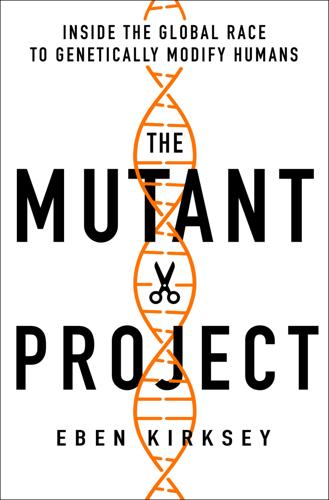
The Mutant Project: Inside the Global Race to Genetically Modify Humans
by
Eben Kirksey
Published 10 Nov 2020
Mary Ann O’Donnell, an anthropologist and long-term resident, met me in a historic Shenzhen neighborhood with factories that had produced Cabbage Patch dolls, cheap electronics, and plastic Star Wars figurines in the 1980s. While we walked the streets, she introduced me to the city that supported Dr. He’s research. In the space of thirty years, Shenzhen had grown from a collection of fishing villages into a megacity with a larger population than New York City. O’Donnell explained that Shenzhen had been the place where China first opened up to global capitalism. After the death of Chairman Mao, who isolated the country with a hard-line Communist regime, a new generation of leaders was keen to trade with the rest of the world.
…
The supertall skyscraper was named after its primary tenant: one of the world’s most valuable insurance brands.2 Time and space collapsed as I gazed below. Shenzhen’s twenty-first-century vision of green urban planning—with parklands and forested hills spreading throughout the landscape—was juxtaposed with agrarian landscapes on the outskirts of the megacity. I was inside the fourth-tallest building in the world. Ryan Ferrell, my source inside Dr. He’s laboratory, was leading me around Shenzhen, offering crumbs of reliable information on our encrypted chat. Snapping a picture of the ultramodern cityscape, I sent it to Ryan on Signal, letting him know I had arrived.

24/7: Late Capitalism and the Ends of Sleep
by
Jonathan Crary
Published 3 Jun 2013
The homogenizing force of capitalism is incompatible with any inherent structure of differentiation: sacred-profane, carnival-workday, nature-culture, machine-organism, and so on. Thus any persisting notions of sleep as somehow “natural” are rendered unacceptable. Of course, people will continue to sleep, and even sprawling megacities will still have nocturnal intervals of relative quiescence. Nonetheless, sleep is now an experience cut loose from notions of necessity or nature. Instead, like so much else, it is conceptualized as a variable but managed function that can only be defined instrumentally and physiologically. Recent research has shown that the number of people who wake themselves up once or more at night to check their messages or data is growing exponentially.
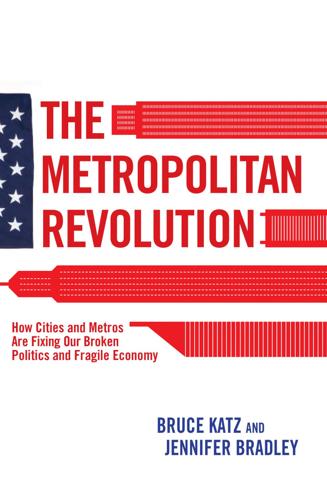
The Metropolitan Revolution: How Cities and Metros Are Fixing Our Broken Politics and Fragile Economy
by
Bruce Katz
and
Jennifer Bradley
Published 10 Jun 2013
The vast Greater New York metropolitan area sells only about 7 percent of what it produces to other countries—ranking it 93rd of the largest 100 U.S. metros.53 But the “built environment” solutions that all of the Applied Sciences campuses are working on could be in tremendous demand across the globe. As more and more people move to megacities in the coming decades, and the demand for energy soars, cities will need ways to build more efficient buildings in more efficient configurations. Take the smart parking systems that the researchers and students at CUSP in Brooklyn will work on. Rapidly urbanizing cities in Asia “face alarming predicaments over parking,” according to one report.54 Beijing and New Delhi add more than 1,000 new vehicles a day to their roads— without commensurate increases in parking spaces.55 (Beijing has 740,000 parking spaces for 5 million cars.)56 Drivers and transportation departments in these places will be very interested in acquiring this technology.
…
What would a twenty-first-century network of trading cities look like? The climate arena might provide some insight into what could transpire. In 2005 groups of local leaders, frustrated with the slow pace of national and global action on climate change, formed the C20 (now C40) Cities Climate Leadership Group, “a network of the world’s megacities taking action to reduce greenhouse gas emissions.” Now led by New York City mayor Michael Bloomberg, the coalition is helping individual cities forge “innovative solutions to common sources of greenhouse gas emissions” to “provide proven models that other cities and national governments can adopt.”

Augmented: Life in the Smart Lane
by
Brett King
Published 5 May 2016
Today, cities like London and New York have stopped growing, but cities like Lagos, Mumbai (formerly Bombay) and Kolkata (formerly Calcutta) are growing rapidly. About 40 cities around the world have a population of over 5 million. Five million is what you need today to reach “megacity” status. About 80 per cent of these megacities are in poorer or developing countries, primarily due to influx associated with people seeking employment. The list of benefits for “city-augmented” people living in the largest cities of the world is extensive and includes: 1. Public security in the form of police, fire and emergency medical technicians who will show up within minutes of an emergency services call, and often already know your location by tracking the phone that originated the call. 2.
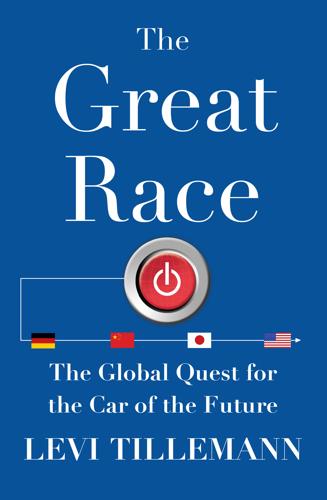
The Great Race: The Global Quest for the Car of the Future
by
Levi Tillemann
Published 20 Jan 2015
The phalanx of electric cars and buses commissioned for the Expo stopped at a chain-linked frontier demarcating the boundaries of Wan Gang’s eco-wonderland and China 2010. Real life meant navigating manic waves of oil-burning SAICs, VWs, Audis, and Buicks. Indeed, the 100 million automobiles on China’s roads had become a distinctly mixed blessing. China’s megacities were stifled by putrid smog and gridlocked. No doubt, this is why in 2009 China’s government announced ambitious plans to leapfrog the West in developing and deploying electric vehicles. In two short years, Wan Gang promised that China would deploy 500,000 domestically produced EVs. But even in 2010, there were signs that this vision was faltering.
…
But there are conflicting signals from the country’s new rulers as to whether that is likely, or even conceivable. On the one hand, in the winter of 2013–14 China confronted a crisis of air pollution that was too damaging and painful to ignore. Researchers estimated that China’s people were losing about five years off their lives to air pollution.13 Although megacities throttled back car sales, many of the problems were already baked into the fiber of the Chinese economy. New policies were implemented to promote EV sales and these policies started to address some of the structural problems with the country’s prior EV effort. But steps were tentative. Indeed, they seemed to reflect China’s preference for slow, evolutionary reform—or as Deng Xiaoping called it, “crossing the river by touching the stones.”
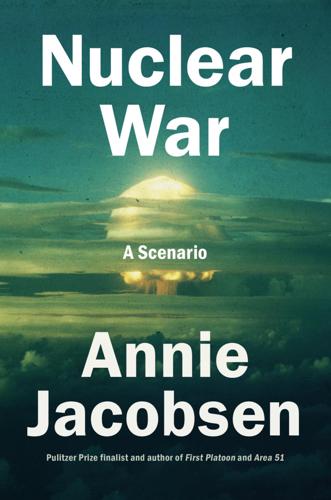
Nuclear War: A Scenario
by
Annie Jacobsen
Published 25 Mar 2024
North Korea is also understood to maintain the largest chemical weapons stockpile anywhere in the world—5,000 tons’ worth—much of it preloaded onto rockets. Osan Air Base is always ready for combat. With its sister facility, Camp Humphreys, located twelve miles to the south, the U.S. military maintains its mission in Korea of providing a ring of safety around Seoul. Seoul is the largest megacity in the developed world and is situated just forty miles to the north of Osan Air Base. With its 9.6 million residents, Seoul is among the most densely populated cities on Earth, with roughly 1 million more people than New York City. The Seoul Capital Area has 26 million people. Half the country lives here.
…
Blair with Jessica Sleight and Emma Claire Foley. “The End of Nuclear Warfighting: Moving to a Deterrence-Only Posture. An Alternative U.S. Nuclear Posture Review,” Program on Science and Global Security, Princeton University Global Zero, Washington, D.C., September 2018, 38. GO TO NOTE REFERENCE IN TEXT largest megacity: “Greater Seoul Population Exceeds 50% of S. Korea for First Time,” Hankyoreh, January 7, 2020. GO TO NOTE REFERENCE IN TEXT the base relies on: David Choi, “South Korean Presidential Candidates Spar over Need for More THAAD Missile Defense,” Stars and Stripes, February 4, 2022.
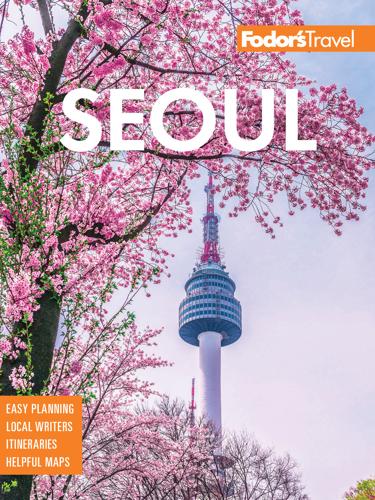
Fodor's Seoul
by
Fodor's Travel Guides
Published 29 Nov 2022
Welcome to Seoul Filled with skyscrapers, street markets, palaces, and temples, Seoul is the ultimate combination of new meets old, a buzzing hub of energy and enterprise mixed with tradition and serenity. In just a few decades, South Korea’s capital city has grown to one of the world’s most modern and vibrant megacities. Stunning beaches, mountains, and historic sights are just a day trip away, but linger first to soak in the frenetic pace and unique culture that make this city one of the hottest tourist destinations in Asia. As you plan your travels, let us know when we need to make updates by writing to us at editors@fodors.com.
…
Throughout the city, in public buildings such as museums, restaurants, pharmacies, and government buildings you’ll find filtered water tanks for public (or customer) use, and bottled water is cheap (less than ₩1,000) and readily available in convenience stores on practically every street corner. FOR A BIG CITY, IT’S SURPRISINGLY CALM Despite its megacity standing, Seoul is organized—and in some areas, downright tranquil. The respect most Koreans show toward others helps with the feeling of safety and personal space. The adherence to rules makes for a tidy city with little to no litter or graffiti. And Koreans’ love of nature has ensured that despite decades of growth, Seoul has retained plenty of green space for its citizens to spread out.
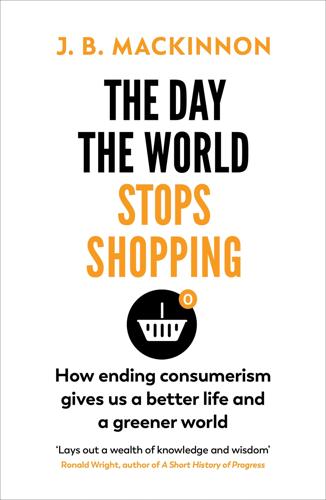
The Day the World Stops Shopping
by
J. B. MacKinnon
Published 14 May 2021
On a map, Sado Island looks like a lightning bolt that has turned to stone and fallen into the sea thirty storm-lashed kilometres off the west coast of Honshu. Sado feels remote, but on the clock it is just three hours by high-speed train and ferry from Tokyo. As soon as she could, Obata moved to the megacity, earned a law degree at a prestigious university, and went to work as a publicist for Hollywood films being screened in Japan. Obata lived her Tokyo dream during the height of the bubble economy. Those were the days when young women could go to the bar without money, certain that their drinks would be paid for by Japanese salarymen; when late-night revellers would bid for taxis by holding up sheets of paper marked with exorbitant offers to the drivers; when gold flake emerged as a decoration to be eaten on desserts and drunk in cocktails.
…
In Tokyo, Oikawa says, there is a surplus of money and the things that it buys, but she now considers that a narrow expression of the concept. “I wonder if I had yutori in Tokyo,” she said. “It’s not a busy lifestyle here. I’m not time-strapped. There are times when it’s busy, but there are times when it’s slow. I have more space in my life and in my heart.” She still visits the megacity, though less and less often. “The Tokyo lifestyle feels like a trap to me now: you go there, you want things, you have to buy them. There’s a lot of fun things to do, or have, or eat. But you consume it all. Here on Sado, there’s nothing. You have to create it for yourself. The joy is not from consuming, it’s from being a creator.”

Chinese Spies: From Chairman Mao to Xi Jinping
by
Roger Faligot
Published 30 Jun 2019
Its positioning within the WTO, the negotiation of intellectual property treaties, the definition of commercial strategies, the acquisition of new technologies, the creation of joint ventures—all these activities and many others demanded the deployment of economic intelligence techniques and expertise at a national level. On the international stage, this apparatus was augmented by parallel structures in megacities like Shanghai, Chongqing and Canton, as well as in provinces such as Shandong, where “siphoning” systems particularly effective for economic intelligence had been implemented. Committees for twinning cities and other forms of exchange were also exploited by regional structures. At the State Council, MOFCOM was overseen by Deputy Prime Minister Wu Yi, described in 2004 by Forbes magazine as the second most powerful woman in the world, after then US National Security Advisor Condoleezza Rice.
…
A former trade minister, he was part of the fifth generation of leaders since Mao Zedong had brought the CCP to power in 1949, a Red Prince who wanted to turn China into a superpower, even daring to hope that the country would overtake the US economically by 2030. The affair was even more delicate given that Bo was the brother-in-law of Jia Chunwang, the Guoanbu minister from 1985 to 1997. Taking his place in the family line, the ambitious and undeniably charismatic Bo Xilai was mayor of Chongqing, a megacity with 30 million inhabitants. He was the son of Bo Yibo, a veteran of Mao’s Long March, who had been a minister under Deng Xiaoping. Bo Junior took after his father. He managed to unite the two Chinese communist traditions, having built up a considerable fortune during his city’s rapid development and having profited from the inevitable cronyism that came with it, while still promoting neo-Maoist ideology, recalling the tormented period of the Cultural Revolution, when Mao dispatched hordes of Red Guards to attack party leaders deemed too reformist.
…
Indeed, following Zhou Yongkang’s failed coup in 2013, transfers, arrests and purges began to multiply rapidly in 2015 under Chen’s leadership. I have been able to identify the main Guoanbu regional directors, who will no doubt remain in their positions for years to come unless they, in turn, become the victims of denunciations. In alphabetical order of provinces and megacities: Hebei (Liu Zengqi), Heilongjiang (Chen Donghui), Hubei (Zhang Qikuan), Hunan (Liang Jianqiang), Jiangsu (Liu Yong), Liaoning (Wei Chunjiang), Shandong (Jiang Lianjun), Shanghai (Dong Weimin), Shanxi (Wang Xiuwen), Sichuan (Zhao Jian), and Zhejiang (Huang Baokun). In Beijing, Li Dong, a specialist in Russian affairs, has replaced Liang Ke, who is now in prison.

Viruses: A Very Short Introduction (Very Short Introductions)
by
Crawford, Dorothy H.
Published 27 Jul 2011
But as far as emerging virus infections are concerned, the most acute problem is literal around 5,000 to 10,000 years agoes6Ply lack of space. We have already seen how invading the territories of wild animals, be it to chop down the rain forest, hunt for food, or extend our cities, risks acquiring unknown, sometimes lethal, viruses. With over 50% of us now living in megacities, like Tokyo with over 35 million inhabitants, viruses, once acquired, find it very easy to spread between us. This is particularly so among poor city dwellers in resource-poor countries, with the inhabitants of shanty towns living in cramped, unhygienic shacks where the lack of fresh air and clean water, and absence of sewage disposal, provides easy access for microbes of all sorts.
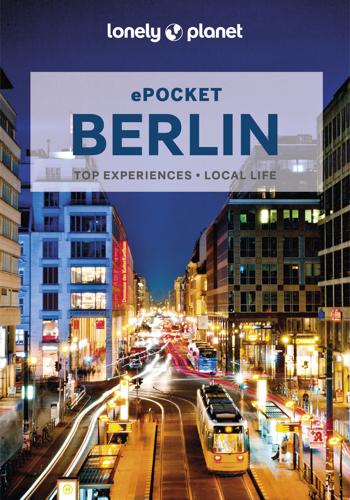
Pocket Berlin
by
Andrea Schulte-Peevers
Published 15 Mar 2023
Statue of Hadad A vast room crammed with treasures from ancient Assyria is lorded over by a monumental 2800-year-old statue of a fierce-looking Hadad, the West Semitic god of storm, thunder and rain. Also note the four lion sculptures guarding the partly reconstructed inner gate of the citadel of Samal (in today’s Turkey). Clay Tablets from Uruk Founded in the 4th millennium BC, Uruk (in present-day Iraq) is considered one of the world’s first ‘mega-cities’, with as many as 40,000 inhabitants and more than 9km of city walls. Among the museum’s most prized possessions are clay tablets with cuneiform scripts detailing agreements and transactions. They date to the late 4th millennium BC and are considered among the earliest written documents known to humankind.

Making the Modern World: Materials and Dematerialization
by
Vaclav Smil
Published 16 Dec 2013
Preface: Why and How The story of humanity – evolution of our species; prehistoric shift from foraging to permanent agriculture; rise and fall of antique, medieval, and early modern civilizations; economic advances of the past two centuries; mechanization of agriculture; diversification and automation of industrial protection; enormous increases in energy consumption; diffusion of new communication and information networks; and impressive gains in quality of life – would not have been possible without an expanding and increasingly intricate and complex use of materials. Human ingenuity has turned these materials first into simple clothes, tools, weapons, and shelters, later into more elaborate dwellings, religious and funerary structures, pure and alloyed metals, and in recent generations into extensive industrial and transportation infrastructures, megacities, synthetic and composite compounds, and into substrates and enablers of a new electronic world. This material progress has not been a linear advance but has consisted of two unequal periods. First was the very slow rise that extended from pre-history to the beginnings of rapid economic modernization, that is, until the eighteenth century in most of Europe, until the nineteenth century in the USA, Canada, and Japan, and until the latter half of the twentieth century in Latin America, the Middle East, and China.
…
And while the mass of paper landfilled in the USA in 2010 was half of the total in 1990 (26.7 vs 52.5 Mt), during the same two decades the mass of discarded plastics rose by 70% and the total of buried polymers, 28.5 Mt, was greater than the combined annual production in Germany and France (Plastics Europe, 2012). Or another comparison: a destitute waste collector may spend a day collecting a mass of 1 kg of plastic shopping bags when rummaging the open garbage tips of Asia's megacities, while the USA buries nearly 80 000 t of plastic in its landfills every day. While in the USA only about 8% of discarded plastics were recovered in 2010 (with the rate ranging from 23% for PET (polyethylene terephthalate) bottles to less than1% for PP (polypropylene) waste), the EU's goal for 2020 is full diversion of plastic waste from landfills (EPRO, 2011).

Whole Earth Discipline: An Ecopragmatist Manifesto
by
Stewart Brand
Published 15 Mar 2009
As Swedish statistician Hans Rosling says, “The world will be normal again; it will be an Asian world, as it always was except for these last thousand years. They are working like hell to make that happen, whereas we are consuming like hell.” • It may be distracting, though, to focus just on the world’s twenty-four megacities—those with a population over 10 million. The real action is in what the United Nations calls small cities (fewer than 500,000 inhabitants; home to half of the world’s city dwellers) and intermediate cities (1 million to 5 million, where 22 percent of urbanites live). A UN report points out: “They are often the first places where the social urban transformation of families and individuals occurs; by offering economic linkages between rural and urban environments, they can provide a ‘first step’ out of poverty for impoverished rural populations and a gateway to opportunities in larger cities.”
…
When defense against raids by nomadic Apaches and Navajos became irrelevant after the conquest by whites, the Pueblos all dispersed into scattered buildings (except where high-rise density is maintained partly for tourists, as at Taos and Acoma). “The earliest meaning of ‘town,’ said the urban scholar Lewis Mumford, “is an enclosed or fortified place.” Agriculture, it appears, was an early invention by the dwellers of walled towns to allow their settlements to keep growing, as in Geoffrey West’s formulation. Today’s megacities rely on the same flow of innovation. A 2006 UN-HABITAT report proposed thatCities are engines of rural development. . . . Improved infrastructure between rural areas and cities increases rural productivity and enhances rural residents’ access to education, health care, markets, credit, information and other services.

Human Frontiers: The Future of Big Ideas in an Age of Small Thinking
by
Michael Bhaskar
Published 2 Nov 2021
In the twentieth and early twenty-first centuries breakthroughs were common in the kind of places that gave rise to CRISPR: places like Berkeley, California or Cambridge, Massachusetts. Shenzhen, where He conducted the trials, didn't even exist until 1979; but when Lulu and Nana were born it was a megacity of 12.5 million people, host to the Chinese tech industry and now the first gene-edited human beings. It hints at something much wider than one experiment. The geography of ideas is shifting more rapidly than ever before; a new phase in the history of ideas is about to overturn our extant models and assumptions.
…
The majority of humans have been urban only since 2008, not quite long enough to feel the full impact.38 Nonetheless, formidable change is being wrought around us: according to the United Nations, over one hundred new cities will have more than a million people and ten will grow to more than 10 million in the next decade alone, including Ahmedabad, Hyderabad, Bogota and Johannesburg, the fastest changes yet.39 A process of urbanisation that took two centuries in Europe is happening at warp speed. Moreover many promising cities are not the familiar brand-name boomtowns – Shanghai and São Paulo, or even Lagos. Rather, by the century's end, cities like Dhaka, Khartoum, Kinshasa, Dar Es Salaam, Kabul, Baghdad and Karachi will be the largest global megacities, full of challenge and opportunity. Architectural and urban experimentation at scale is much more likely to be found on the Arabian peninsula and in the Indonesian archipelago than the old world.40 If we're only now feeling the full impact of the last forty years, it will be some time yet before we feel all this.

The Fourth Industrial Revolution
by
Klaus Schwab
Published 11 Jan 2016
It is clear that neither countries nor regions can flourish if their cities (innovation ecosystems) are not being continually nourished. Cities have been the engines of economic growth, prosperity and social progress throughout history, and will be essential to the future competitiveness of nations and regions. Today, more than half of the world’s population lives in urban areas, ranging from mid-size cities to megacities, and the number of city dwellers worldwide keeps rising. Many factors that affect the competitiveness of countries and regions – from innovation and education to infrastructure and public administration – are under the purview of cities. The speed and breadth by which cities absorb and deploy technology, supported by agile policy frameworks, will determine their ability to compete in attracting talent.
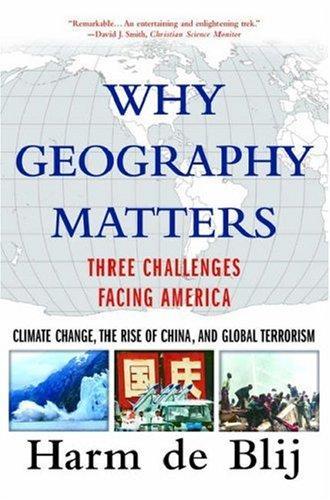
Why geography matters: three challenges facing America : climate change, the rise of China, and global terrorism
by
Harm J. De Blij
Published 15 Nov 2007
From about 10,000 years ago until today, humanity has thrived in the warmth of a prolonged interglacial we call the Holocene, but unlike the Eemian, the Holocene has witnessed the emergence of complex cultures and civilizations, the population explosion, the formation of states and empires, the growth of megacities, and the burgeoning of technology in countless forms. It has also seen wars and destruction on an unprecedented scale. With our human numbers approaching 7 billion and global warming opening the last niches for habitation, the question is: what happens when the ice returns, as it has more than two dozen times during the Pleistocene?
…
Sooner or later we will face extremes that come upon us quickly and will give us little time to find ways to cope with the consequences. For all our technological prowess, we still depend on nature to sustain us. We are living, in the words of the geneticist Stephen Oppenheimer, in the autumn of the interglacial Holocene, the brief epoch that has witnessed the transformation of our human world from small villages to megacities and from simple to complex cultures, from isolated communities to intercon- 86 WHY GEOGRAPHY MATTERS nected empires and from stone tools to spacecraft. On the scale of our lifetimes, it has all happened in the past few seconds, and our modern experience with the kinds of challenges nature can pose—from meteor impacts to glacia-tions—is virtually nil.

Warnings
by
Richard A. Clarke
Published 10 Apr 2017
—JAMES FRANCK As night fell, a small boat docked near downtown. Ten men got off and climbed up onto the pier. Some hailed taxis. Others just blended into the mass of humanity, the twenty million people who crowded into the seaside city. Hours later it began, a three-day orgy of death and destruction that put one of the world’s megacities on lockdown. Eight thousand miles away, on the campus of Rutgers University in New Jersey, the massacre left American climate scientist Alan Robock fearing his theory was about to be tested. The men from the boat had taken automatic weapons and bombs from their backpacks and assaulted nine facilities, including the main train station, the two finest hotels, and a Jewish cultural center.
…
Supported by close air support and artillery, India’s armored corps would roll into the Pakistani Punjab and toward the major city of Lahore, just across the border in central Pakistan. In the south, Indian forces would speed across the salt plains of the Rann of Kutch and the Thar Desert toward Pakistan’s megacity of Karachi on the Arabian Sea. The Indian attack would stop, however, perhaps fifty miles into Pakistan. Cold Start would have limited objectives. The objective would be to damage Pakistan’s military and its economy and also to demonstrate that India was not deterred by Pakistan’s nuclear weapons.

Sunfall
by
Jim Al-Khalili
Published 17 Apr 2019
He switched on the cabin’s exterior projection, so that the feed from the hundreds of tiny cameras covering the outer surface of the plane mapped onto the interior of the windowless fuselage, making it appear entirely transparent to the passengers. But it was a pointless exercise. Ordinarily, the panoramic view this gave as the plane came in to land would have been a quite dramatic experience, with the lights of the mostly still sleeping megacity spread out below. Instead, they were greeted by a wall of white thanks to the thick fog that often engulfed Indira Gandhi Airport at this time of year. They’d been circling in a holding pattern at three thousand metres for forty minutes now, waiting their turn to land. Suddenly several of his displays went blank.
…
Weaving her way carefully around the stationary cars blocking her path, she noted the bemused looks on the faces of the passengers, suggesting that whatever had stopped the traffic had only happened recently. None of the cars on the westbound side were moving either, so it had to be a problem with the city’s AI. But the Minds that ran the very largest megacities around the world simply didn’t go down. Ever. She felt a creeping unease. Pulling over, she dismounted and blinked on her AR. The feed was dead. No reason to freak out just yet, girl – just because the entire net is down! She steadied her breathing. Logic before panic. After all, she’d spent the last few days worrying about the Sun’s abnormal activity, but that did not mean that this internet blackout was in any way related.
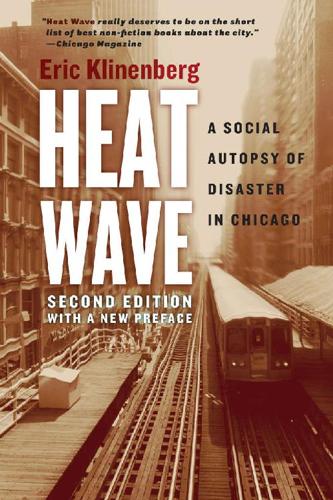
Heat Wave: A Social Autopsy of Disaster in Chicago
by
Eric Klinenberg
Published 11 Jul 2002
“The welfare state,” he explains, “is not just a mechanism that intervenes in, and possibly corrects, the structure of inequality; it is, in its own right, a system of stratification. It is an active force in the ordering of social relations.” For discussions of the role of the state in producing vulnerability to urban disasters, see the essays collected in Crucibles of Hazard: Mega-Cities and Disasters in Transition (Mitchell, ed. 1999). Davis has made this point in two of his recent books. He documents the role of the state in producing vulnerability to extreme climatic events in nineteenth-century India, China, and Brazil in Late Victorian Holocausts (2001), and for contemporary Los Angeles in Ecology of Fear (1998). 20.
…
Number our days. New York: Touchstone Books. Miethe, Terance. 1995. Fear and withdrawal. The Annals of the American Academy 539:14–29. Miller, Ross. 1990. American apocalypse: The Great Fire and the myth of Chicago. Chicago: University of Chicago Press. Mitchell, James, ed. 1999. Crucibles of hazard: Mega-cities and disasters in transition. Tokyo: United Nations University Press. Mitchell, Mary, and Gilbert Jimenez. 1995. CDC endorses county coroner’s heat findings. Chicago Sun-Times, 28 July, p. 12. Molotch, Harvey, and Marilyn Lester. 1974. News as purposive behavior: On the strategic use of routine events, accidents, and scandals.

The Quest: Energy, Security, and the Remaking of the Modern World
by
Daniel Yergin
Published 14 May 2011
This build-out of China over the next two or three decades will be one of the defining forces not just for China but for the world economy. It is certainly one of the main explanations for a long-lasting boom in commodities. China’s urban population is growing very fast. In 1978 the country was only 18 percent urbanized. Today it is almost 50 percent urbanized, with more than 170 cities over a million people, and a number of megacities with populations exceeding 10 million. Every year another 20 million or so Chinese move from the countryside looking for work and housing and a higher standard of living. Asked by George W. Bush what worry kept him up at night, President Hu Jintao said that his biggest concern was “creating 25 million new jobs a year.”
…
Further out, there is the possibility of hydrogen-fed fuel cell–powered cars. There is another possibility as well: that new kinds transportation systems will emerge that challenge current assumptions about the ways people travel. This may be the necessary response to the impending gridlock that could paralyze so many of the world’s megacities. What we do know is that nothing fast will happen to change the world’s auto fleet. It is too large, and the turnover of the existing fleet is too slow—the average life of a car is 12 to 15 years. That is true in the developed world. In fast-growing emerging markets, however, where people who do not own cars are now acquiring them, the answer will be somewhat different—or perhaps very different—because they do not have a large existing stock of cars to replace.
…
And what kind of sound should it be? Carlos Ghosn has been among those at Nissan vetting sounds. “It should be something that sounds like an electric car,” he said, “pleasant, not too much, but enough.”23 ASIA FIRST? Given all of the various hurdles, where might be the first major market for EVs? Some Asian megacities present a combination of circumstances that appear conducive for the spread of EVs. Their physical infrastructure is still being built out, and thus is more ripe for “greenfield” development of chargingstations and other equipment than older urban areas in the United States and Europe. At the same time, air pollution in these cities can be stifling, and coughing, disgruntled citizens have been pressing governments to improve air quality.
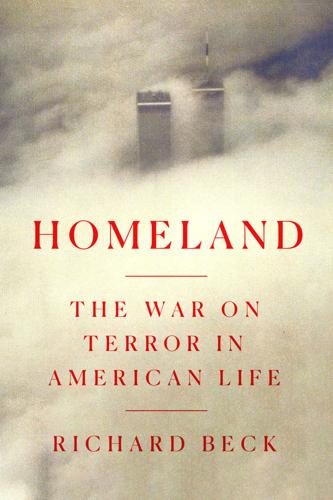
Homeland: The War on Terror in American Life
by
Richard Beck
Published 2 Sep 2024
In his 2006 book Planet of Slums, the great historian and political writer Mike Davis pointed out that since the 1970s the world’s poor countries have urbanized at a rate that puts Europe’s experiences of nineteenth-century urbanization to shame.[22] But whereas those European experiences of urbanization were part of an industrial revolution that saw growth accelerate dramatically, the more recent urbanization of what used to be called the Third World has largely occurred in places where economic growth is either low, slowing down, or nonexistent. Megacities such as Lagos (home to 20.7 million people in 2002), Cairo (14.2 million), Manila (26.4 million), Mexico City (24.7 million), São Paulo (22.7 million), and Jakarta (28.6 million) have grown so much not because they are hotbeds of economic opportunity but because the best way for people to survive when they cannot find secure, salaried labor is for them to live around as many other people as possible.
…
The growth of these sprawling urban agglomerations accounted for some two-thirds of the world’s human population increase between 1950 and 2006, and the expectation is that after 2020 or so, population growth will happen entirely within cities until peaking at around 10 billion near the midpoint of the twenty-first century. These megacities are not monuments to the possibilities of human achievement, however. An urban archipelago centered on Lagos and running along the Gulf of Guinea from Benin to Accra, for example, now has a population comparable to that of the East Coast of the United States, with 60 million people living on a six-hundred-kilometer strip of land.
…
FEC, 432, 491, 497 Clapper, James, 383 Clear Channel, 352–53 climate change, 106, 472–73, 487–88, 490, 496, 498 Clinton, Bill, 48–49, 102, 182, 203, 213, 420 economic policies of, 310, 329–30 and surveillance, 392 and welfare reform, 285 Clinton, Hillary, 213, 217, 318, 322, 379, 430 and 2016 elections, 418–20 CNN, 47, 53, 351, 369 Crossfire, 367 Late Edition, 386 Coalition Provisional Authority (CPA), 238, 245–51, 254–56, 259–61 Cold War, 49–50, 196, 280–81, 430 colonial America, 11–16, 27–31, 195, 260, 277 colonization, 260, 269, 272–75, 277 Colorado, 456–59 Columbia University, 475 comic books, 44–47 communism, 195, 202, 430 Condé Nast, 112 conformity culture, 349, 354—55 consumerism, 96–101, 107, 244, 290 consumption, 292, 330, 332–33, 335 Cooper, James Fenimore, 29, 494 Cordoba House, 227–30, 324 Corliss, Glenn, 260–61 Cotton, Tom, 448 COVID-19, 337, 446, 449, 464, 482 cowboys, 11, 28, 132 Crary, Jonathan, 417 Crockett, Davy, 31, 37, 67 D Daddario, Richard, 116 Dahler, Don, 6–7, 9 Dakota Access Pipeline, 488–89 Dalrymple, Jack, 489 Davis, Mike, xxix–xxx, 286–87, 291 Dawkins, Richard, 208–12 DeLillo, Don, 3 Democratic Party, 191, 194, 214, 466, 480, 486 Dennett, Daniel, 208–9 Denvir, Daniel, 306 deportations, 133–34, 138, 141–42, 155, 164, 312–13 detentions, 181, 183–84, 191, 385, 451 at Abu Ghraib, 166–73, 178–83, 185–86, 191 PATRIOT Act, 133–34, 141, 155, 164 Dhafir, Rafil, 150–55 displacement, 28, 277, 320, 322, 477 dispossession, 28, 30, 98, 132, 294, 492 Dixie Chicks, 352 dollar, U.S., 280–81, 481–82 dot-com bubble (2000), 53, 98, 330–33 Downs, Stephen, 142–44 Dreher, Rod, 350 drone strikes, 77–78, 129, 219–21, 243, 426, 486 Dutch empire, 271–74, 276, 278 DynCorp International, 262 E Eagleburger, Lawrence, 35 economy, world, xxvii, 275–81, 389, 451 slowing growth of, 282–84, 292–93, 299, 311–12, 487 Egypt, 40, 49, 217, 477, 481 and Arab Spring, 315–16, 319, 323, 328, 336 Cairo, 286 Eisenhower, Dwight, 262 Ellison, Larry, 386–88 employment, 284–88, 340, 451 enemy combatants, 191, 221, 296, 376 Enemy of the State, 395 England, Lynndie, 169–70 Eschaton, 364, 366 Estes, Nick, 489, 492 Europe, 218, 283, 326–27, 451, 467–68, 483 reconstruction, 244, 280 and refugee crisis, xxvi, 323–24, 326 evangelicals, 189–90 extraordinary rendition, 182–83, 220 extremism, xx, 142, 162, 290–91, 387 war against, 218–19, 316 F Facebook, 328, 396–97, 410–12, 433 Fahrenheit 9/11, 25 Faludi, Susan, 11–13, 21, 36, 65 Falwell, Jerry, 189–90 Family in Baghdad, A (Araji), 247, 251, 258 FBI, xx, 131, 133–56, 158, 228, 484 and Anwar al-Awlaki, 425 and Occupy Wall Street, 436 and September 11, 79–80 Federal Emergency Management Agency (FEMA), 83, 421–22 Feinstein, Dianne, 377, 386 Filson, John, 29, 31 financial crisis, global (2007–8), xxvi, 198–99, 299, 328, 336, 470 prosecutions of, 424, 431 Florida, 17–18, 25–26, 39, 108 Floyd, George, 445–46, 448 Ford, Ezell, 439 Ford Motor Company, 56, 96, 100, 103–4, 106, 265 Foreign Intelligence Surveillance Act (FISA), 398, 466 Fox News, 47, 355, 357, 362 France, 321, 323–24, 326–27 Franks, Tommy, 52 Freedom of Information Act (FOIA), 426–27 Freedom Tower, 111–16, 323 Freud, Sigmund, 268, 460 Friedman, Thomas, 362–63, 366 Fukuyama, Francis, 202 Fund, John, 374 G Gaddafi, Muammar, 315–20, 371 Garner, Eric, 438–40, 445 Geller, Pamela, 228–29, 324 gender, 37, 101–3, 208–9, 218, 303, 327 Geneva Conventions, 181, 187, 226, 376, 423 genocide, 126, 474–75, 498 Germany, 224, 280–81, 288, 324 Geronimo, 233–34 Giuliani, Rudy, 20, 97 Goldberg, Jeffrey, 367 Goldman Sachs, 113–14, 118, 330 gold standard, 281, 482 Google, 54, 390–91, 396 Gopnik, Adam, 351–52 Gordon, Michael, 356 Gordon, Robert J., 276 Gore, Al, 48, 106, 306, 375–76 Graham, Billy, 189 Graner, Charles, 169–70, 196 Green Day, 338 Greenspan, Alan, 329, 331, 334 green transition, 472–73, 483 Ground Zero, 20, 23, 43, 55, 81, 127 redevelopment of, 109–13, 126, 227–29, 232 Guantánamo Bay, 182, 216, 219, 226, 374 Gulf War, first, 50, 83, 98, 150, 269, 263–64 guns, 88, 101, 454–55, 459 Gurley, Akai, 439 H Hague Invasion Act, 422–23 Halliburton, 245, 258, 262 Hamas, 473–74, 476–77, 480 Hanley, Charles, J., 166–67 Harman, Sabrina, 169–72, 196 Harris, Malcolm, 389–90, 392 Harris, Sam, 208–11 Haslett, Tobi, 445–46 Hastert, Dennis, 40 Hatch, Orrin, 35–36 hate crimes, 129–31, 133 Hawley, Kip, 91–92 Hayden, Michael, 394–95 Hayder, Tashnuba, 136–38 Healy, Timothy, 140 Heatwole, Nathaniel, 95 Heffernan, Virginia, 37 hegemony, 49–50, 279, 451, 482–83 heroism, 19–20, 28–29, 31–32, 36, 44—47, 63 Hertzberg, Hendrik, 362–63 Hezbollah, 475, 477 Hitchens, Christopher, 208–12, 362, 495 Holder, Eric, 37–39, 140 Hollywood, 12, 31, 60–61, 176–78, 401, 432 heroes, 29, 43–44, 46 and Islamophobia, 207–8 and September 11, 21–22, 27, 33 Holmes, James, 456–59 Homeland, 206–8 Hosseini, Khaled, 205 Hostel, 176–77 housing market bubble, 100, 198–200, 329, 332–35 Human Rights Watch, 424, 426 Humvee, 72–73, 251, 443, 447 Huntington, Samuel, 202–4 Hurricane Katrina, 68, 83, 215, 421–22 Hussein, Saddam, 48, 50, 53, 263–64, 345, 363 and al-Qaeda, 355, 358, 361, 377–78 capture of, 262, 453 regime of, 238, 244–46, 248, 253, 263 I Ignatieff, Michael, 268 immigration, xxvi, 300–12, 326, 464 imperialism, 190, 260, 269, 272–75, 377, 494 American, 277–80, 481–83, 486–87, 496 impunity culture, xxix–xxx, 349, 430–32, 451–53, 498 Indian Wars, 12–13, 28, 31, 233 indigenous people, 11–15, 27–31, 126, 132, 193, 277 and pipeline project, 488–89 inequality, wealth, xxvi, 288–91, 311, 451 and Occupy Wall Street, 337, 339–40, 432, 434–35, 450 Instagram, 406, 412 International Criminal Court (ICC), 422–24 Iran, 49, 165, 217–18, 239, 315, 477 Iraq, 150–52, 154, 250, 253–54, 263–64, 315 Baghdad, 248–49 Coalition Provisional Authority (CPA), 238, 245–51, 254–56, 259–61 economic reforms in, 248–49, 255–63 Green Zone, 244–47, 251, 254 oil industry in, 241–43, 257, 261 reconstruction of, 259, 262–63, 312 Iraq War, 53, 58, 69, 161–62, 239, 246 and Authorization for Use of Military Force (AUMF), 375–78 cover-ups in, 63–66 debate over, 345–70, 362–67, 372–80 failure in, 75, 345 and oil, xxvii, 241–43, 268 protests against, 241, 336, 338–39, 345, 431 U.S. troop levels in, 77, 319 veterans of, 72, 239 Iron Man, 46, 60–62, 75–77 Islam, 147, 218, 226, 269, 291, 496 and peace, xx, 128 and terrorism, 162–64, 174, 190 and violence, 128, 188–89, 203–6, 211 Islamic State, 320, 322, 326–27, 375 Islamophobia, 127–41, 188–90, 197, 205–12, 219, 324 Israel, 91, 162, 190, 217–18 conflict with Palestine, 49, 288, 473–81 and protests, 157, 476, 497–98 Italy, 269–72, 276, 278, 323–24 J Jeep, 102–3, 107 Jennings, Peter, 3, 8–10, 17–19, 24–26, 34, 40–41 Johnson, Shoshana, 66 Jordan, 49, 315–16 journalism, 17, 20, 328, 344, 368, 371–72 and Abu Ghraib, 166–67, 173, 179, 196 failures of, 346, 348, 358–63 and Iraq War coverage, 57, 246, 345–50, 357–64, 368, 371–72 K Kagan, Robert, 49–51 Kaseman, Keith, 125 Keller, Bill, 361 Keller, Daniel, 184 Kellogg Brown and Root, 262 Kennedy, John F., 4, 82, 267 Kerry, John, 102, 191 Keynesianism, 30, 329, 340 Kimmitt, Mark, 173, 179 Kinsley, Michael, 367 Kiriakou, John, 423–24 Kissinger, Henry, 237, 430 Klein, Ezra, 364, 369 Kristof, Nicholas, 101 Kristol, William, 49–50 Kuznets, Simon, 266–67 Kyle, Chris, 66–69, 75, 495 L Lanchester, John, xxvii Langewiesche, William, 20 Lanza, Adam, 459 Last of the Mohicans, The, 29–30 Lee, Alexander, 289–90 Lee, Barbara, 374–75 Levin, Carl, 34, 186–87 Levin, Daniel, 186 Lewis, Bernard, 203–5 Libeskind, Daniel, 111–15 Libya, 49, 315–19, 320, 323–24, 375 Lie to Me, 91 Lindsey, Hal, 190 Lone Survivor, 31, 240–41 Luttrell, Marcus, 240–41 Lynch, Jessica, 64–67 Lyon, David, 388 M Mahan, Dennis Hart, 193 Maher, Bill, 354–55 Manley, Kathy, 143–44 Manning, Chelsea, 427 manufacturing, 277–78, 281–85, 389, 469–70, 483 overcapacity, 311, 330, 482 Martin, Trayvon, 431, 438, 442 mass shootings, 454–60 mass surveillance, 382–84, 394–401, 407, 415–17, 484 Massachusetts, 14–15, 40, 90, 108 Mayer, Jane, 178, 181, 195–96, 241, 493 McCain, John, 187, 198–202, 217 McDermott, Jim, 379 McDonald, Laquan, 439 media, xxi, 201, 218, 250, 371, 344 Abu Ghraib in, 166–69, 173 and Afghanistan withdrawal, 464–65 and American myths, 20, 36–37 and antiwar movement, 337 criticism of George W. Bush, 354, 359–62, 367–68 Iraq War debate in, 345–70, 380 megacities, 286, 295 memorials, 110–11, 117, 125–28, 227–28, 442 mental health, 69–70, 72–73, 75, 239, 454–55 Mexico, 19, 308, 310–13, 325, 329, 486 Mexico City, 286, 295 Military Commissions Act (2006), 187, 423–24 Miller, Judith, 356–57, 359, 370 Miller, Todd, 313 Minority Report, 91 Minuteman Project, 301–5, 308–9 Mishra, Pankaj, 290–91 Missouri, 339, 438–444 Mohammed, Khalid Sheikh (KSM), 39–40, 226–27 Monster.com, 97 mosques, 129, 131, 142–43, 145, 157, 425 Mubarak, Hosni, 218, 315–16, 328 Mueller, Robert, 140 Murdoch, Milena, 127–28 Murdoch, Paul, 127–28 Muslim Americans, xxiv, xxvi, 486 after September 11, xxix, 128–44, 155–59, 164–65 surveillance of, 157–59, 400, 476 Muslim Student Associations (MSAs), 157 mythologies, 73, 78, 208, 338, 447, 487 American, 132, 196, 302, 494–95 and Chris Kyle, 66–67 of Daniel Boone, 28–31 frontier, 31, 46, 63, 97, 302 of hunter, 28, 31, 36, 46 and Native Americans, 11, 13, 16, 27–28, 66 and September 11, 32, 36–37, 371 N National Football League (NFL), 80, 83–85, 108–9 National Guard, xxi, 83, 443, 448, 490, 492 nationalism, 82, 149, 239, 261, 324, 496 Native Americans, 11–15, 27–31, 126, 132, 193, 277 nativism, 215, 306, 323–24 NATO, 83, 318–19, 468 Navy SEALs, 47, 56–57, 66, 231, 233–34, 240–41 NBC, 4, 8, 10, 337 Meet the Press, 36, 161, 356 Nightly News, 345 Today, 4 neoconservatism, 49, 51, 208–9, 315, 366, 377 neoliberalism, 311 Netanyahu, Benjamin, 474–75 Netherlands, 271–74, 276, 278 New Atheism, 208–12, 354 New Jersey, 6, 27, 40, 125–26 New Orleans, Louisiana, 80–83, 108, 421–22 New Republic, The, 350, 363, 365 NewsHour with Jim Lehrer, 345 Newsweek, 36–37, 350, 358 New York (magazine), 177 New York City, 5–8, 16, 113, 117–18, 271–72, 382–3 fire department (FDNY), 20, 23, 81 Zuccotti Park, 130–31, 161, 339, 431–34, 436, 438 New Yorker, The, 93, 241–42, 349, 351–52, 362–63 New York Post, 350, 465 New York Review of Books, The, 368 New York Times, The, 58–59, 346–47, 355–57, 359–62, 370, 379 New York Times Magazine, The, 37, 268 9/11 Commission, 80, 312, 388 Nolan, Christopher, 42–44, 437, 457 Noonan, Peggy, 367 North American Free Trade Agreement (NAFTA), 310–11 Nowak, Manfred, 424 nuclear weapons, 345, 355–59, 468, 477 O Obama, Barack, 37, 197, 212–18, 226–27, 229, 317, 326 and accountability, 426–31 and Arab Spring, 316–20 and drone strikes, xxii, 77–78, 129, 219–21 and immigration, 317, 325–27 and Libya, 370–71 and mass surveillance program, 224–26, 398–99 and Osama bin Laden, 230–31 and Syrian civil war, 321–22, 326 and troop levels in Afghanistan, xxii, 220, 222–24, 239, 460 and 2008 election, 198–202, 217, 493 and war on terror, 493–94 Obama, Michelle, 428 Ocasio-Cortez, Alexandria, 339 Occupy!

The Nowhere Office: Reinventing Work and the Workplace of the Future
by
Julia Hobsbawm
Published 11 Apr 2022
Reimagining the Workplace for the 21st Century (Bloomsbury, 2020) McGilchrist, Iain, Ways of Attending: How Our Divided Brain Constructs the World (Routledge, 2019) Massey, Doreen, ‘A Global Sense of Place’, Marxism Today, June 1991, http://banmarchive.org.uk/collections/mt/pdf/91_06_24.pdf Russell, Bertrand, ‘In Praise of Idleness’, In Praise of Idleness and Other Stories (Routledge, 2004 [1935]) Saval, Nikil, Cubed: The Secret History of the Workplace (Doubleday, 2014) Saxenian, Annalee: Regional Advantage: Culture and Competition in Silicon Valley and Route 128 (Harvard University Press, 1996) Scarry, Richard, What Do People Do All Day? (HarperCollins, 2015 [1968]) Smil, Vaclav, Growth: From Microorganisms to Megacities (MIT Press, 2020) Suzman, James, Work: A History of How We Spend Our Time (Bloomsbury, 2021) Usher, Neil, The Elemental Workplace (LID Publishing, 2018) Wajcman, Judy, Pressed for Time: The Acceleration of Life in Digital Capitalism (University of Chicago Press, 2015) Wallman, James, Time and How to Spend It: The 7 Rules for Richer, Happier Days (W.

Drone Warfare: Killing by Remote Control
by
Medea Benjamin
Published 8 Apr 2013
Even when the Pakistani military declared many areas safe for families to return, the absence of reconstruction assistance and the persistence of drone attacks in the region have kept many from doing so. The flight of so many refugees has affected an even greater population—the people of the southern port city of Karachi. There are no visible drones flying over this mega-city of nearly 18 million people, but its squalid bursting streets have had to absorb massive numbers of families fleeing the conflict in the Northwest.214 A report produced by Amnesty International estimated the number of displaced at over one million. The influx sparked an outbreak of ethnic violence in Karachi between the city’s Muhajir, who are the descendants of original refugees from India, and the Pashtun, who include the recent immigrants from the Northwest provinces.
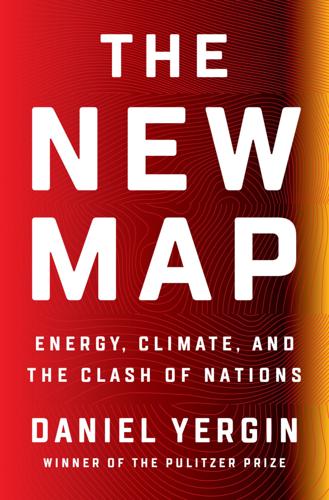
The New Map: Energy, Climate, and the Clash of Nations
by
Daniel Yergin
Published 14 Sep 2020
Sixteen years earlier, in 2004, the National Intelligence Council, a research organization in the U.S. intelligence community, had published a report titled Mapping the Global Future, which presented scenarios for the year 2020. One of the scenarios imagined was a pandemic in 2020. It was eerily prophetic, even as to the year: It is only a matter of time before a new pandemic appears, such as the 1918–1919 influenza virus that killed an estimated twenty million worldwide. Such a pandemic in megacities of the developing world . . . would be devastating and could spread rapidly throughout the world. Globalization would be endangered if the deaths rose into the millions in several major countries and the spread of disease put a halt to global travel and trade during an extended period, prompting governments to expend enormous resources.
…
By the end of 2017, over 50 percent of China’s city bus fleet was already electric.20 The New Energy Vehicles program is one of Beijing’s national industrial strategic priorities. It is switching from a “consumer-centric” model—subsidies for buyers—to a “producer-centric” one, establishing quotas for manufacturers. That means a rising share of automakers’ total production must be EVs. China also offers an enormous carrot. In the crowded megacities, one can only get a license plate through a lottery. In Beijing, the odds of winning a license plate for an oil-fueled car are tiny—1 in 907. Even then, the winner must pay a fee, which can be quite substantial—as high as $13,000. But there is a big exception: An electric car buyer can bypass the lottery and get the license automatically (although there may still be a waiting period), without having to spend money for the license.21 In 2019, almost a million EVs were sold in China—4 percent of new car sales there and more than half of all the EVs sold in the world.22 * * * — In India, there is also enthusiasm for greater electrification, which in the country encompasses the ubiquitous two-wheelers and three-wheelers as much as four-wheelers.
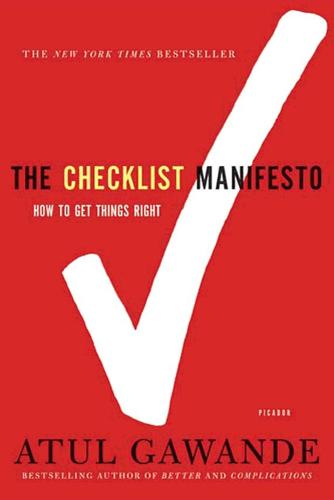
The Checklist Manifesto: How to Get Things Right
by
Atul Gawande
Published 2 Jan 2009
Thinking of these essential requirements—simple, measurable, transmissible—I recalled one of my favorite public health studies. It was a joint public health program conducted by the U.S. Centers for Disease Control and HOPE, a charitable organization in Pakistan, to address the perilous rates of premature death among children in the slums of Karachi. The squatter settlements surrounding the megacity contained more than four million people living under some of the most crowded and squalid conditions in the world. Sewage ran in the streets. Chronic poverty and food shortages left 30 to 40 percent of the children malnourished. Virtually all drinking water sources were contaminated. One child in ten died before age five—usually from diarrhea or acute respiratory infections.
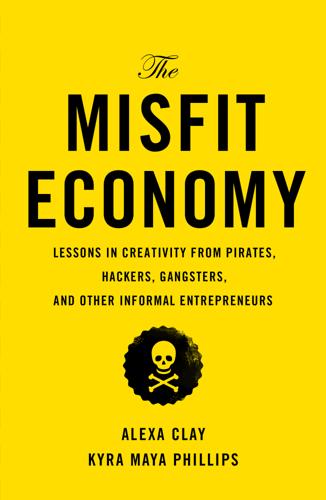
The Misfit Economy: Lessons in Creativity From Pirates, Hackers, Gangsters and Other Informal Entrepreneurs
by
Alexa Clay
and
Kyra Maya Phillips
Published 23 Jun 2015
“The idea that we are going to create a middle class in BRIC economies doesn’t make sense. Not everyone wants or should have 2.2 cars.” In the future, Berdish imagines a world where cars are more of a shared resource and more functional. “Cars will have to be more stripped down. In a sharing economy or mega-city, you don’t need satellite radio and fancy navigation systems; you just need cars to serve a function.” Berdish helped develop mobility solutions at Ford, which meant showing the company the value of business models built around car sharing and mass urban transport options like rail, metro, buses, and bicycles.
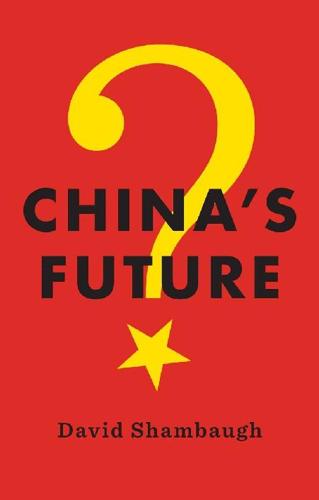
China's Future
by
David Shambaugh
Published 11 Mar 2016
Today there are five cities with a population over 10 million; fourteen cities over 5 million; and 41 cities of 2 million or more.33 By 2025, McKinsey & Company estimates, 46 of the world’s 200 largest cities will be in China.34 There are plans to turn the greater Pearl River Delta—including Guangzhou, Shenzhen, and Zhuhai—into one enormous megacity () of 42 million people,35 and the Beijing-Tianjin-Hebei triangle (known as Jing-Jin-Ji) into an even larger one covering 82,000 square miles and a total population of 130 million people.36 The new strategy to create megalopolises is a shift from just a few years ago when the government’s priority was to develop small and medium-sized cities.37 Creating “ecocities” and “green urbanization” are another part of the government’s plan—an appropriate goal given the environmental catastrophe that besets many Chinese cities.
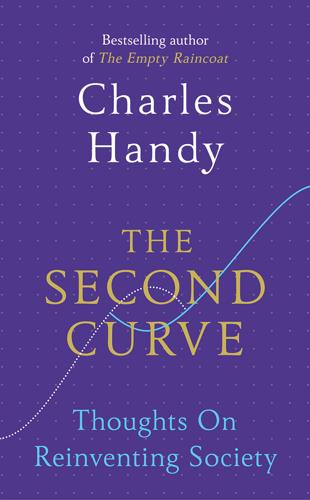
The Second Curve: Thoughts on Reinventing Society
by
Charles Handy
Published 12 Mar 2015
In any case, once agreed, the division of responsibilities would need to be recorded as a formal constitution. Britain is sliding slowly into a quasi-federation or what they prefer to call ‘devo max’, to avoid that dreaded f-word. The new federal Britain would include Wales, Northern Ireland, Scotland and, maybe, five English megacities or regions. Progress is complicated by the fact that it would be hard to divide up England geographically, by city or region, while England on its own would be too dominant. Surveys also reveal that while the local bureaucrats enthuse about more devolution their citizens are not so keen, preferring that the big decisions are still taken at the centre.
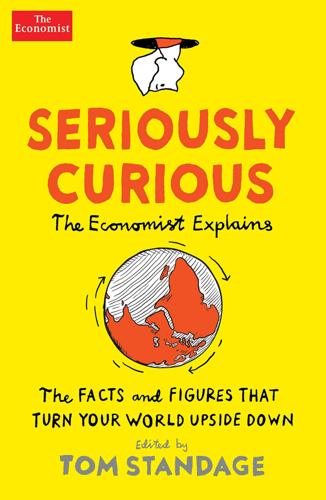
Seriously Curious: The Facts and Figures That Turn Our World Upside Down
by
Tom Standage
Published 27 Nov 2018
Vast quantities of sand are dumped into the sea to reclaim land. Singapore, for example, has expanded its land area by more than 20% since the 1960s in this way. The Maldives and Kiribati have used sand to shore up their islands against rising sea levels. The UN forecasts that, by 2030, there will be over 40 “megacities” home to more than 10m inhabitants (up from 31 in 2016), which means more housing and infrastructure will need to be built. And sea levels will continue to rise. All of this means that sand will only become more sought after. So why is there a shortage, when sand seems so abundant? The trouble is that desert sand is too smooth, and cannot be used for most commercial purposes.

City Squares: Eighteen Writers on the Spirit and Significance of Squares Around the World
by
Catie Marron
Published 11 Apr 2016
I have often thought of Istanbul as the bridge in between, theoretically connecting the two worlds but, in practice, not quite belonging in either, unwelcome anywhere. Anyone who visits Istanbul today will notice that in several areas the city resembles a massive construction site. In the last decade it has undergone radical transformation and gentrification. Initially, many people supported the growth, happy to see the megacity attracting foreign investors and global capital. Some of its lost cosmopolitanism was also restored. Expats and migrants arrived, visitors from ex-Soviet republics, the Middle East, Central Asia, and the Balkans. An important LGBT movement flourished, organizing gay parades. The women’s movement increased its strength.
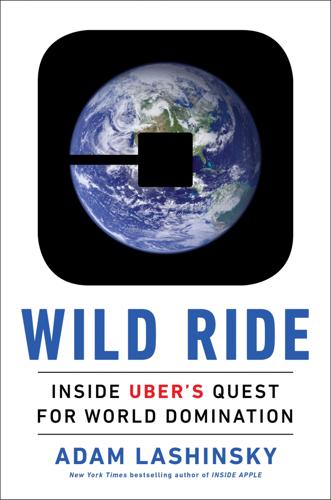
Wild Ride: Inside Uber's Quest for World Domination
by
Adam Lashinsky
Published 31 Mar 2017
As CEO of Uber, the world’s most valuable start-up, Kalanick has been visiting China about every three months for three years now. All the travel from his home base in San Francisco is part of a money-draining and quixotic gambit to replicate the global success of Uber’s disruptive ride-hailing service in the world’s most populous country. Kalanick has spent the previous three days in Tianjin, a megacity on the Yellow Sea, two hours southeast of Beijing. There he was a cochair of the World Economic Forum’s (WEF) New Champions meeting, the so-called summer Davos. Weeks shy of his fortieth birthday, Kalanick was the toast of Tianjin, where he enjoyed the considerable fringe benefits of his newfound worldwide prominence.
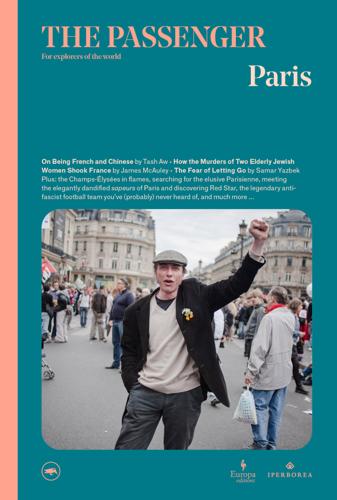
The Passenger: Paris
by
AA.VV.
Published 26 Jun 2021
One building was enough to transform an entire city, and this example paved the way for several others to seek their own Bilbao Effect (in France, one might think of the Louvre’s gallery in Lens or the Pompidou Centre in Metz), but that was more than twenty years ago, and Paris isn’t Bilbao. The city is now counting on the 2024 Summer Olympic Games, but this time what is at stake is linking, associating and connecting inner Paris (that is, within the Boulevard Périphérique ring road) and the suburbs in order to better manage flows in this mega-city of more than twelve million inhabitants. The future of Paris no longer lies in one building – in fact, it no longer lies in Paris. The upcoming Olympics has triggered an urban-development strategy of Métro lines and stations (a new network called Grand Paris Express), housing and facilities that should help to unify a highly fractured and socially divided territory.

The Rise and Fall of Nations: Forces of Change in the Post-Crisis World
by
Ruchir Sharma
Published 5 Jun 2016
Though the once all-powerful government in Delhi has in recent decades ceded significant spending authority to chief ministers in India’s twenty-nine states, that power has not filtered down to the mayoral level, and it shows. Smaller cities struggle to grow, and when rural Indians do move to urban areas, they tend to choose the four megacities, with populations of over ten million: Mumbai, Delhi, Kolkata, and Bangalore. If China is a nation of boom cities, India is a land of creaking megacities, surrounded by small towns and not enough vibrant second cities. The Service Cities The rise of cities along trade routes that carry hard goods is today accompanied by the rise of cities at the center of various service industries.

The Climate Book: The Facts and the Solutions
by
Greta Thunberg
Published 14 Feb 2023
One of them goes by the name of ‘shifting baseline syndrome’ or ‘generational amnesia’, which refers to the way we get used to new things and begin to see the world from a different perspective. An eight-lane motorway junction would probably have been unimaginable to my great-grandparents, but for my generation it is completely normal. To some of us, it even seems natural, safe and reassuring, depending on the circumstances. The distant lights of a megacity, an oil refinery glittering by the side of a dark freeway and bright airport runways lighting up the night skies are sights we are so used to that to many of us their absence would seem odd. The same goes for the comfort some people find in overconsumption, among other things. The once unthinkable can very quickly become a natural – and even irreplaceable – part of our daily lives.
…
All human activities are embedded and constrained by ecosystem processes and functions, and throughout our existence as a species we have manipulated and transformed land and its natural resources. However, in recent history the extent of human land use has altered those processes and functions with mostly adverse consequences for people and the planet. When we think of human civilization’s imprint on Earth, we tend to think of the world’s metropolises and megacities, interconnected by a dense network of roads, power grids and infrastructure. While these do represent pervasive land-use activities, they are almost negligible in terms of their ecological, economic and social influence when compared to agriculture. Globally, farming is the dominant form of land management today, and it is changing the face and the function of our planet.

Economic Gangsters: Corruption, Violence, and the Poverty of Nations
by
Raymond Fisman
and
Edward Miguel
Published 14 Apr 2008
The existence of the new lake is still a matter of intense speculation, and many experts remain unconvinced by the geological science underlying el-Baz’s claims.23 While only time will tell whether water for Darfur’s desperate millions will help end the conflict there, we shouldn’t underestimate the power of water in dousing violence in Africa. 135 Chapter Six ½ Death by a Thousand Small Cuts M A Gruesome Calculus urders, kidnappings, and car-jackings are part of daily life in the sprawling megacities of the developing world, causing the rich and privileged to retreat to lives behind high, barbed wire-topped walls. Kenya’s capital got the nickname “Nairobbery” for a reason. While civil war is violence played out on a grand and tragic scale, countries spared large-scale conflict can still suffer death by a thousand small cuts in the form of violent crime.
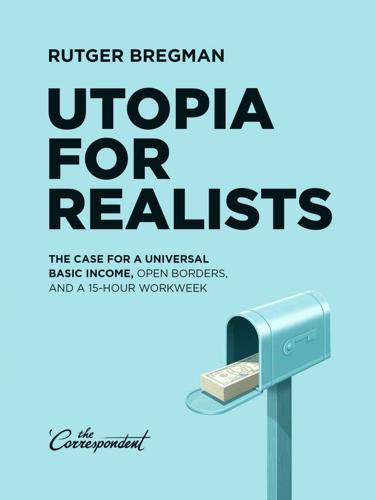
Utopia for Realists: The Case for a Universal Basic Income, Open Borders, and a 15-Hour Workweek
by
Rutger Bregman
Published 13 Sep 2014
Then we might realize that in terms of value creation, it just doesn’t pay to be a banker. New York City, 50 Years Later Half a century after the strike, the Big Apple seems to have learned its lesson. “Everyone in NYC wants to be garbage collector,” read a recent newspaper headline. These days, the people who pick up after the megacity earn an enviable salary. After five years on the payroll, they can take home as much as $70,000 plus overtime and perks. “They keep the city running,” a Sanitation Department spokesperson explained in the article. “If they were to stop working, however briefly, all of New York City would come to a standstill.”20 The paper also interviewed a city sanitation worker.
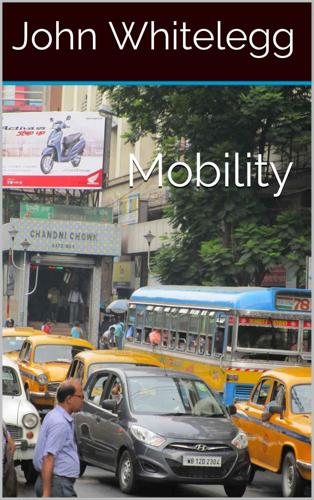
Mobility: A New Urban Design and Transport Planning Philosophy for a Sustainable Future
by
John Whitelegg
Published 1 Sep 2015
China and India have demonstrated that they can mobilise funds and political initiative for sustainable transport projects and projects that genuinely improve conditions for those not owning or using cars. After describing 3 strategies in China for encouraging motorised transport Gao et al (2014) discuss measures that are intended to restrain car use: “More strictly, strategies restricting purchase and use of private vehicles are now emerging in the megacities of China. For instance, the Beijing municipal government initiated the rationing of road space for the 2008 Olympics. Car use was curtailed according to the number on the license plates. Another example is limiting quota of new car registration in an attempt to curb unsustainable levels of automobile ownership (Song, 2013).
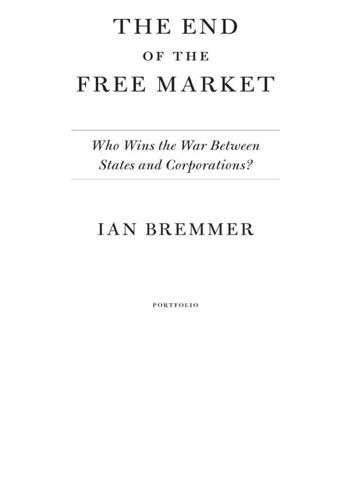
The End of the Free Market: Who Wins the War Between States and Corporations?
by
Ian Bremmer
Published 12 May 2010
Saudi Arabia As you enter King Abdullah Economic City, a multibillion-dollar building project due for completion in 2020, you pass through an enormous gate ornamented with the king’s image and the words, “The vision of our leader has embodied our dreams.”1 According to the city’s official Web site, its purpose is “To become the single greatest enabler of social and economical growth for the Kingdom of Saudi Arabia.”2 Two million Saudis are expected to live, learn, and work within this desert fortress of state-of-the-art skyscrapers, schools, and shopping malls that will one day cover 150 square miles. This is just one of six megacities the Saudi government intends to invent over the next decade, projects imagined by state contractors and built largely by the Saudi construction and service companies that win lucrative government contracts. In Saudi Arabia, grand-scale state capitalism is a natural fit. Most authoritarian governments now recognize that change is inevitable.
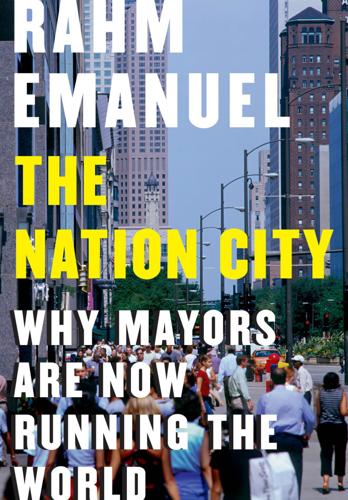
The Nation City: Why Mayors Are Now Running the World
by
Rahm Emanuel
Published 25 Feb 2020
To Khan, tackling climate change is also a commonsense issue. Under him, London has taken some aggressive steps. Though Great Britain has stayed in the Paris Agreement (unlike the United States), Khan believes his country’s efforts and plans on climate change still fall short. So London will lead the way. It is the first megacity in the world to make the pledge to become carbon-neutral by 2050, and it’s already taken some significant steps toward reaching that goal. (Khan is also divesting the city’s pension funds of fossil fuel investments.) While London was once a laggard when it came to solar power, the city now outperforms the country in terms of new solar panel deployment.

Right of Way: Race, Class, and the Silent Epidemic of Pedestrian Deaths in America
by
Angie Schmitt
Published 26 Aug 2020
A 2017 report from the World Bank estimated that Tanzania could increase its gross domestic product 32 percent if it could reduce traffic injuries 50 percent over a twenty-four-year period.23 Although many of the trends are concerning—especially increased motorization and the growth of SUVs globally—there are reasons for hope around the world as well. Mexico City In Mexico City as recently as 2015, one thousand people were being killed every year in traffic. About half of those killed were pedestrians and cyclists.24 The streets in this North American megacity (population 8.8 million) are Darwinian. The Mexican driver’s licensing process essentially consists of having a picture taken. Not until 2005 did the government start using Breathalyzer tests to crack down on drunk driving (a move that caused an almost immediate 43 percent decline in fatalities).25 Most importantly, pedestrians simply are not respected on Mexico City’s congested streets.

Amazing Train Journeys
by
Lonely Planet
Published 30 Sep 2018
Every step is an eye-opening cultural experience, from buying tickets and navigating hangar-sized stations to settling into one’s seat and gaping as the speedometer sometimes surpassing 248mph (400km/h). Engines of China’s economic development, high-speed (‘bullet’) trains power across dozens of routes, but the first and most significant line – that of the world’s fastest passenger train – moves more than half a million people a day between the megacities of Bĕijīng and Shànghăi. ❶ RIDING THE RAILS The numbers are practically beyond comprehension. Approximately 2600 high-speed train departures run daily between more than 200 cities spread across 32 of China’s 34 provinces. In 2016, these services carried nearly 1.44 billion passengers, up 24% from the previous year.

The Filter Bubble: What the Internet Is Hiding From You
by
Eli Pariser
Published 11 May 2011
The manifesto that helped launch the Electronic Frontier Foundation in the early nineties championed a “civilization of Mind in cyberspace”—a kind of worldwide metabrain. But personalized filters sever the synapses in that brain. Without knowing it, we may be giving ourselves a kind of global lobotomy instead. From megacities to nanotech, we’re creating a global society whose complexity has passed the limits of individual comprehension. The problems we’ll face in the next twenty years—energy shortages, terrorism, climate change, and disease—are enormous in scope. They’re problems that we can only solve together. Early Internet enthusiasts like Web creator Tim Berners-Lee hoped it would be a new platform for tackling those problems.
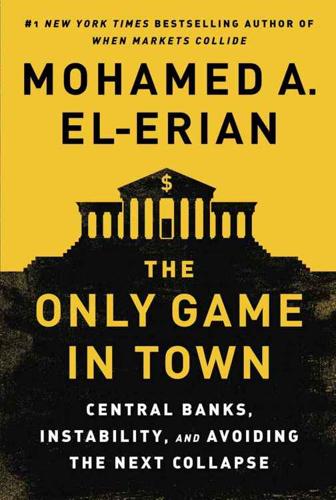
The Only Game in Town: Central Banks, Instability, and Avoiding the Next Collapse
by
Mohamed A. El-Erian
Published 26 Jan 2016
Finally—and as if I needed to convince you further of the challenges—politics around the world also needs to play catch-up with a number of consequential secular and structural transformations in society; these meaningful challenges face governments that find it inherently hard to disrupt themselves for the better (it is difficult enough for business and individuals to do so; for governments it is infinitely more so). These include wide-scale urbanization and the emergence of megacities, which render even more important the effective devolution of some power to cities and municipalities. Meanwhile, and perhaps more important, rapid technological innovations have enabled and empowered individuals like never before (something that we will return to later in the book). Today, so many more people in so many more places are enabled to connect and participate, and, soon, they will also be able to make a lot more things.
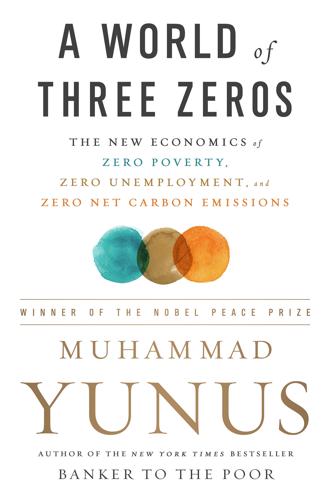
A World of Three Zeros: The New Economics of Zero Poverty, Zero Unemployment, and Zero Carbon Emissions
by
Muhammad Yunus
Published 25 Sep 2017
But whether or not Paris is selected, she intends to continue to pursue the goal of making Paris the world capital of social business. In the months since then, Mayor Hidalgo has taken a number of steps to achieve this objective, including having young people in Paris organize social business design competitions to address the problems of the city. Mayor Hidalgo is also the chair of C40, an association of global megacities that are committed to combatting the problem of climate change. Today the association has a membership of ninety cities with a combined population of 600 million. After this experience with Mayor Hidalgo, I cannot say that the world’s political leaders are not listening to the demands of young people for economic and social change.

Overdressed: The Shockingly High Cost of Cheap Fashion
by
Elizabeth L. Cline
Published 13 Jun 2012
In fact, Panyu is a city of more than 1 million people located within the boundaries of Guangzhou, the capital of Guangdong Province, and the location of several of the factory meetings I had set up. I was finally connecting China’s very large dots. The three cities I was planning to zip back and forth between by cab form a single megacity bigger than any metropolis in the United States. Shenzhen has a population of around 14 million people. Dongguan, located between Shenzhen and Guangzhou, has more than 8 million, and Guangzhou has roughly 13 million. All told, Guangdong Province has at least 100 million inhabitants, almost a third of the United States’ population crammed into a space the size of Missouri.

A Burglar's Guide to the City
by
Geoff Manaugh
Published 17 Mar 2015
To say that walkable, nongridded urban environments are somehow resistant to crime would make absolutely no sense in England. England is hardly a global hot spot for rationally gridded, car-centric towns, yet it boasts the highest rate of burglary in the entire European Union. Italy, another nation not known for its automobile-dependent, gridded megacities, is a close second for residential burglaries (in some years, it is actually worse than England). On paper, they should be nearly burglary-free. When seen through the eyes of a burglar, many architectural features take on an unexpected dual role. Such things as back doors and side windows often double as potential getaway routes, for example, and experienced burglars will often only target houses with at least two points of exit.
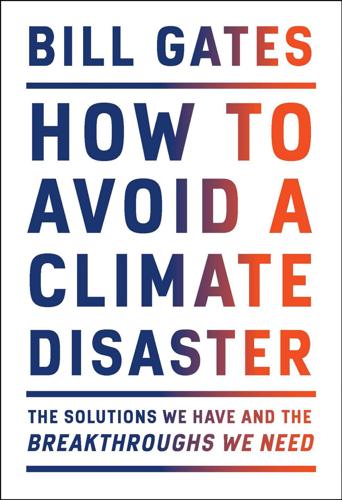
How to Avoid a Climate Disaster: The Solutions We Have and the Breakthroughs We Need
by
Bill Gates
Published 16 Feb 2021
Planting mangrove trees is a great investment. They help prevent some $80 billion a year in losses from floods. We’re going to need more drinking water than we can supply. As lakes and aquifers shrink or get polluted, it’s getting harder to provide potable water to everyone who needs it. Most of the world’s megacities already face severe shortages, and if nothing changes, by mid-century the number of people who can’t get enough decent water at least once a month will rise by more than a third, to over 5 billion people. Technology holds out some promise here. We already know how to take the salt out of seawater and make it drinkable, but the process takes a lot of energy, as does moving the water from the ocean to the desalination facility and then from the facility to whoever needs it.
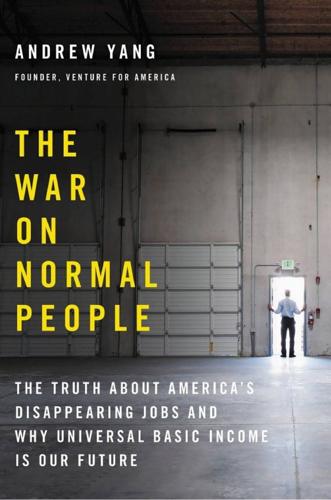
The War on Normal People: The Truth About America's Disappearing Jobs and Why Universal Basic Income Is Our Future
by
Andrew Yang
Published 2 Apr 2018
Capitalism doesn’t work that well if people don’t have any money to buy things or if communities are degenerating into scarcity, anger, and despair. The question is, what is to be done? If we do nothing, society will become dramatically bifurcated on levels we can scarcely imagine. There will be a shrinking number of affluent people in a handful of megacities and those who cut their hair and take care of their children. There will also be enormous numbers of increasingly destitute and displaced people in decaying towns around the country that the trucks drive past without stopping. Some of my friends project a violent revolution if this picture comes to pass.
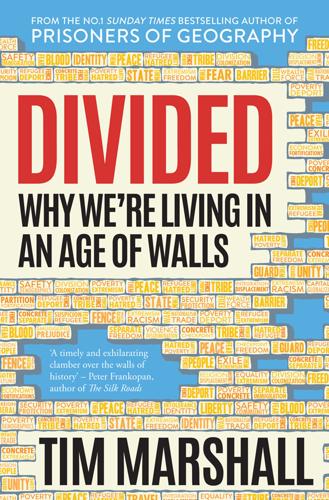
Divided: Why We're Living in an Age of Walls
by
Tim Marshall
Published 8 Mar 2018
Despite this, it is crucial to remember that even now about 900 million Chinese live in rural areas and about 500 million in an urban environment. Change has been quick, and will quicken. By 2026 Beijing hopes to have moved another 250 million people, meaning that by then half of the population will be urban. To achieve this involves a mass uprooting of people, along with the destruction of villages and the building of cities, megacities, roads and high-speed railways. The majority of the movement continues to be from west to east, the west still tending to be more rural, with higher illiteracy rates; the east, especially towards the seaboard, is increasingly urban and oriented towards technology, industry and business. However, the mass migration to the cities reveals and exacerbates another gap within the urban population, again between rich and poor.

Worth Dying For: The Power and Politics of Flags
by
Tim Marshall
Published 21 Sep 2016
When the South complained about the size of the flags the cheerleaders were going to bring, diplomats from the North stormed out of a meeting and cancelled the Beauties. The two Koreas remain as far apart and as close together as they always have been. War is a constant potential threat; everyone in the South’s megacity of Seoul knows they are within range of the North’s artillery, dug in along the 38th parallel, and the North’s nuclear programme frightens the entire region. Family quarrels can often be the most bitter, although in the case of both Koreas’ relationship with Japan and its flag, it’s sometimes hard to tell which goes deeper.
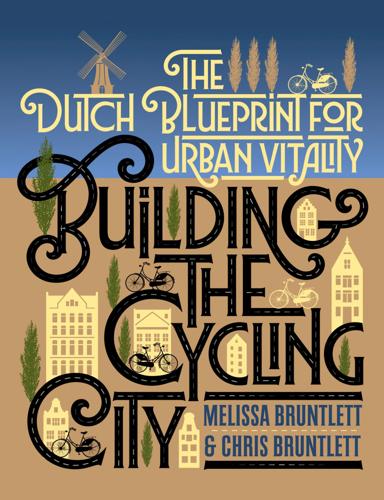
Building the Cycling City: The Dutch Blueprint for Urban Vitality
by
Melissa Bruntlett
and
Chris Bruntlett
Published 27 Aug 2018
Bringing teams of people together to shape a complete and inclusive system isn’t easy, but it is vital for success. “If you develop only one part, it won’t really work,” she concludes. While Copenhagenize Design Company’s work is focused primarily on the European context, Imbert sees the bike–transit merger as one that could be acutely applicable to sprawling North American megacities. “In the Netherlands, we’re talking about a national scale,” she concedes. “But in North America, it can be very relevant at the scale of the metropolitan area.” So relevant, in fact, that the least likely of locations are now integrating bikes and transit. Combining Bikes and Transit in Sprawling Atlanta In recent years, some North American urban planners have begun to explore ways to unlock Dutch-style multimodality, hoping to utilize the bicycle as a tool to increase public-transit ridership and decrease car dependency.

Brilliant, Crazy, Cocky: How the Top 1% of Entrepreneurs Profit From Global Chaos
by
Sarah Lacy
Published 6 Jan 2011
Library of Congress Cataloging-in-Publication Data: Lacy, Sarah, 1975- Bril iant, crazy, cocky: how the top 1% of entrepreneurs profit from global chaos / Sarah Lacy. p. cm. ISBN 978-0-470-58009-7 (hardback); ISBN 978-1-118-00778-5 (ebk) ISBN 978-1-118-00779-2 (ebk); ISBN 978-1-118-00780-8 (ebk) 1. Entrepreneurship. 2. Success in business. I. Title. HB615.L23 2011 658.4'21—dc22 2010034717 To all the brilliant, crazy, cocky entrepreneurs in megacities, slums, and villages around the developing world. You’ve inspired me more than you will ever know. And for my husband, Geoffrey, who supported this brilliant, crazy, cocky journey. ACKNOWLEDGMENTS My first thanks have to go to John Wiley & Sons, Inc.—the only publisher that would take a risk on this book two years ago.
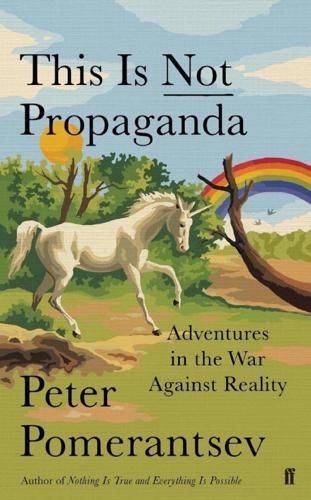
This Is Not Propaganda: Adventures in the War Against Reality
by
Peter Pomerantsev
Published 29 Jul 2019
She wanted to know more about the people who visited the site. What did they have in common? She travelled all across the country, to many towns and cities she’d never visited before. Bullog readers, it turned out, came from all sorts of backgrounds: from civil servants in the interior to fashion-conscious students in the coastal mega-cities; from self-made business people to housewives. They didn’t share much of a coherent ideology when it came to things like economics, but after conducting twenty-seven interviews Wu started to detect a pattern. Many had been voracious readers from a young age:6 not factual material necessarily, but fiction, plays and poetry.
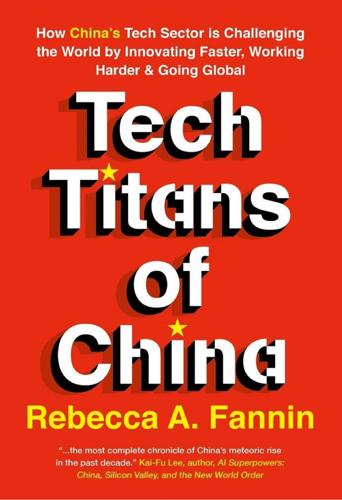
Tech Titans of China: How China's Tech Sector Is Challenging the World by Innovating Faster, Working Harder, and Going Global
by
Rebecca Fannin
Published 2 Sep 2019
Fresh funding is the difference between survival and closure. Deep-pocketed WeWork and its China subsidiary are loaded with new capital: WeWork China pulled in $500 million in 2018 led by SoftBank, a huge $4.4 billion investor in WeWork itself, on top of $500 million the year before. WeWork has covered China with 60 locations across a dozen megacities, adding to its global presence in 23 countries worldwide. WeWork’s recent rebranding as We Company signifies its new direction into social lifestyles and even residential rentals, an elementary school, and a coding academy, and this concept could be brought to China. But WeWork has its work cut out for it in China battling interlopers with big visions.

Liquid: The Delightful and Dangerous Substances That Flow Through Our Lives
by
Mark Miodownik
Published 5 Sep 2018
For instance, the Brazilian city of São Paolo experienced severe water shortages in 2015 when the strain of drought emptied its main reservoir. At the worst point of the crisis it was estimated that the city, with a population of 21.7 million people, had only twenty days of water left. Many other global mega-cities face similar problems imposed by climatic variations, increases in populations and, as wealth increases, a bigger water footprint per person. While we obviously all rely on water, we rely on other liquids too for a sustainable and healthy society. Some of these are surprising. For instance, liquid glass.

Deadly Quiet City: True Stories From Wuhan
by
Murong Xuecun
Published 7 Mar 2023
It took very little time for Xi Jinping to succeed in getting a third term. For many years to come, the Chinese people will have no choice but to submit themselves to his oppressive rule. Like leeks waiting to be harvested, as they say in China, an idiomatic phrase for suckers about to lose everything to a crooked stock manipulator. In prosperous megacities like Shanghai, or in remote mountain hamlets, people are forced at any time into a ‘state of silence,’ which means no timely medical care, no leaving home to buy food, in fact no leaving home at all, like fish unable to escape the tanks at a fish monger’s shop. For those who dare to break the rules, officers in full PPE will appear as soon as anyone pipes up.
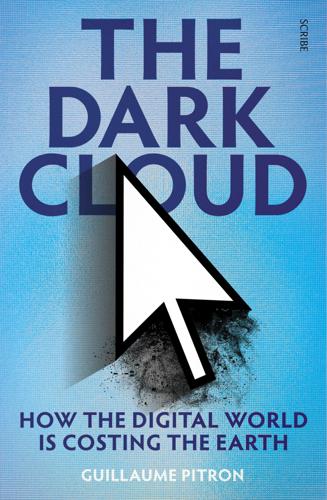
The Dark Cloud: How the Digital World Is Costing the Earth
by
Guillaume Pitron
Published 14 Jun 2023
Digital’s hazardous haze Spring 2019. The view from the seventeenth floor of a hotel in Datong, a city with a population of 3.4 million, 300 kilometres west of Beijing, could be a scene straight from the film Blade Runner: high-rise buildings, like modern-day haunted castles, reach up into an ominous sky. For three days, this megacity will remain trapped in a fog where night and day become indistinguishable. The number-one enemy of conurbations in China is carbon dioxide, and when the wind sweeps the smoke from coal-fired plants into the city centres, you’re better off staying at home. Yet carbon dioxide is not the only gas threatening humanity.
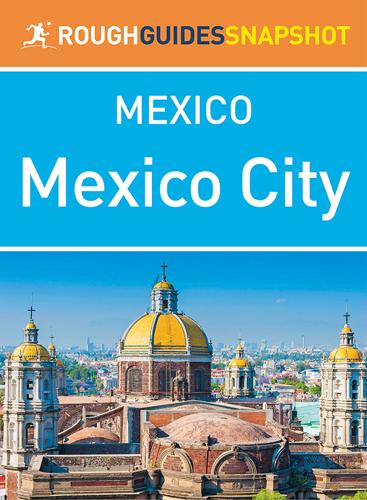
Mexico - Mexico City
by
Rough Guides
You can select your own favourites and create a personalized itinerary by bookmarking the sights, venues and activities that are of interest, giving you the quickest possible access to everything you’ll need for your time away. INTRODUCTION TO MEXICO CITY Highlights Brief history One of the world’s mega-cities, with over 25 million people occupying a shallow mountain bowl at over 2400m above sea level, Mexico City has to be seen to be believed. Spreading out beyond the federal district (Distrito Federal) which is supposed to contain it, the city has a vibe which is at once both edgy and yet laid-back and cosmopolitan at the same time.
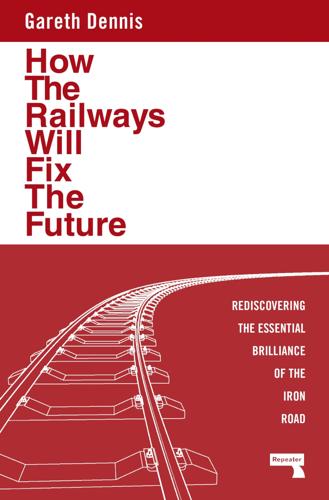
How the Railways Will Fix the Future: Rediscovering the Essential Brilliance of the Iron Road
by
Gareth Dennis
Published 12 Nov 2024
Any change in mobility must be accompanied by a change in the distribution of power, lest we continue to embed the problems we are trying to solve. In other words, we need to understand and acknowledge the darker corners of railway history to avoid repeating the same evils. However, railways across the globe are already providing us better alternatives. As our populations urbanise, the world’s already-thriving megacities rely on a pulsating circulatory system of urban transit, moving hundreds of millions of people a day safely and cleanly. Where railways are prioritised as part of a wider, integrated public transport system, people are happier, healthier and freer to enjoy time with friends and family, engage with their culture and generally do the things that enrich our lives.

Free Speech: Ten Principles for a Connected World
by
Timothy Garton Ash
Published 23 May 2016
A UN estimate of ‘world migrant stock’ suggests that roughly one in every 30 people has moved to a new country of residence within a single lifetime.11 A Vatican document describes this as ‘the vastest movement of people of all times’.12 Ours is now a city planet. In 2014, more than half the world’s population already lived in cities, and UN projections suggest that the world’s cities will add another 2.5 billion people by 2020.13 These will be men, women and children from everywhere, especially in the ‘megacities’ with more than 10 million inhabitants. There are already at least 25 world cities where more than one out of every four residents was born abroad, and the 2011 Canadian census revealed that an astonishing 51 percent of the population of Toronto was foreign-born.14 This is before you even get to ‘postmigrants’, the children and grandchildren of migrants.
…
J., 48, 189–90, 193, 194–95 Liechtenstein, 293 lifeblood, 77, 119–28 Lilburne, John (‘Free-Born John’), 372–73, 374 Lincoln, Abraham, 74 linguistic challenges, 95–96 Link, Perry, 45 Lippmann, Walter, 202 Lipstadt, Deborah, 158 Li Qiang, 106 literacy rates worldwide, 13, 15f Liu Xiaobo, 43, 46, 95, 373–74, 378 Lives On, 317 Lloyd, John, 191 Locke, John, 78, 84 Long Walk to Freedom (Mandela), 47 Lukashenko, Aleksander, 124 Lukes, Steven, 24 lumendatabase.org/chillingeffects.org, 53, 55, 168 Luther, Martin, 20, 278, 316, 376–78 Macao, 105 Macaulay, Thomas Babington, 47, 224 MacCullough, Diarmaid, 272, 277 Machiavelli, 208, 210 ‘machine speech’/algorithms, 17, 364–67 machine translation, 95, 172, 175–76 MacKinnon, Catherine, 89, 247–48 MacKinnon, Rebecca, 48, 72 MacMaster, Tom, 314 Madison, James, 78 Mahabharata, 109 Mahmood, Syed, 72, 73–74, 239 Malamuth, Neil, 248 Malaysia, 67, 278, 281 Malcolm, Noel, 133 Malema, Julius, 136 malicious truth, 305–6 Malik, Kenan, 219, 224 Malik, Zubeida, 70 Mancini, Paolo, 197 Mandela, Nelson, 47, 89, 91, 110–11 Manji, Irshad, 274, 314 Mann, Heinrich, 96 Mann, Thomas, 246 Manning, Bradley (Chelsea), 337, 343 Mao Tse-tung, 38, 99, 160 Mapplethorpe, Robert, 247 Marat, Jean-Paul, 144 Margalit, Avishai, 209, 217–18 ‘marketplace of communities,’ 211 ‘marketplace of ideas,’ 75–76 Marks & Spencer, 312 Marsden, Christopher, 348 Mary (mother of Jesus), 269 masks and truth-telling, 316 Master Switch, The (Wu), 52 May, Erskine, 85 Mayer-Schönberger, Viktor, 162, 305, 309, 313 McGrath, Alister, 256 McLuhan, Marshall, 18 McNealy, Scott, 284 Mead, Walter Russell, 32 media, 182, 337; ‘baseline private,’ 188; convergence of, 187; criticising one’s own, 236–37; defined, 181, 342; diverse, 189–200; ‘ethical private,’ 188; ‘media literacy,’ 199–200; monopoly-owned, 190–95; need for diversity in and by, 235; ownership and control of, 189–94; pluralism of, 36, 144, 182, 189–97, 235–36, 389n91; political orientation of, 196; ‘premium standard,’ 188; public service, 196; systems of, 182; ‘totally unregulated,’ 188; trustworthiness of, 200–205, 343–44; uncensored within limits, 183–89 Media Standards Trust, 188 ‘megacities,’ 9 Mehta, Pratap Bhanu, 225 Meiklejohn, Alexander, 77 Mencken, H. L., 243–44 Mendes, Chico, 129 Merkel, Angela, 213, 231 mesomnesia, 305 Mexico, 334, 354 Michnik, Adam, 251, 288 Mickiewicz, Adam, 286 microphone-lurking, 311 Middle East, 45 Middleton, Kate, 295 Milani, Abbas, 185 Mill, John Stuart, 51, 75, 77, 80–81, 87, 88, 95–108, 114, 154, 156, 259, 371, 373; on grains of truth, 154 Miller, Judith, 344–45 Milošević, Slobodan, 133 Milton, John, 8, 26, 75, 80, 155, 181, 268, 373 ‘mindbugs,’ 232 minority voices, 189 Moldova, 334 Molnár, Péter, 220 Mondrian, Piet, 97, 223 money, distorting power of, 48–50, 59, 121, 169–70, 189–95, 296, 302, 367–69 Mongolia, 104f Montaigne, Michel de, 230 Montesquieu, 98, 208–10 Mooney, Randi, 56 Moore, Charles, 225–26 Moore, Gordon/Moore’s Law, 12 (12f) Moore, Suzanne, 92 ‘moral globalisation,’ 4 moralism, 86–87, 89, 218, 247 Morgenstern, Christian, 154 Morin, Edgar, 219 Mormonism, 259–60 Morocco, 19 Moroni (angel), 259 Morrisons, 312 Morsi, Mohammad, 64, 66, 69 Mortimer, Edward, 277 Mosley, Max, 288, 294–96 Mountain Language (Pinter), 122 movable type, 11 MoveOn.org, 60 movie ratings, 186 Moynihan, Daniel Patrick, 324 MSNBC, 197 Mubarak, Hosni, 183, 257, 315, 330, 363 Mugabe, Robert, 124 Muhammad, 19, 63, 67, 125–26, 134, 143–46, 160, 226, 244, 254, 266, 273, 275.
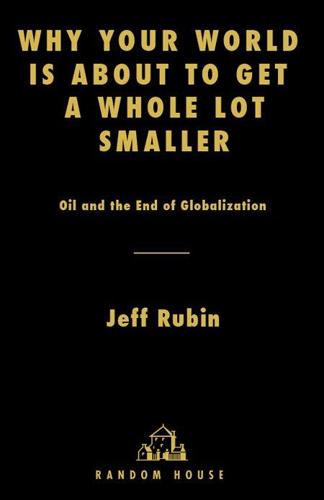
Why Your World Is About to Get a Whole Lot Smaller: Oil and the End of Globalization
by
Jeff Rubin
Published 19 May 2009
During the 1990s, the American economy lost two acres of farmland every minute. Tomorrow’s farm sector may be regaining those acres at the same pace. And you may run into your long-lost barista selling heirloom tomatoes at the local farmers’ market. If you believe in markets, you may be surprised by what the future looks like. Not personal spacecraft or gleaming megacities—those are the daydreams of the era of cheap energy. The future will look a lot like the past. And that means more farms. We have already seen that soaring transport costs and the subsequent collapse of commuter traffic will depopulate the suburbs. The farther they are from where people work, the emptier they will get.

The Locavore's Dilemma
by
Pierre Desrochers
and
Hiroko Shimizu
Published 29 May 2012
Were they worse off in the city, they would move back to the countryside.39 Polèse also observes that it “should thus come as no surprise that attempts to slow down or to stop urbanization have failed miserably” and that in places like China where political authorities were able to do so temporarily, the result was “even greater rural-urban income disparities and an explosion of urbanization once the measures [were] lifted.”40 People should be given the alternatives that only large and prosperous, if chaotic and unsettling, cities can offer. As the economist Edward Glaeser observes: “Megacities are not too big. Limiting their growth would cause significantly more hardship than gain, and urban growth is a great way to reduce rural poverty.”41 And reducing rural poverty, we suggest, is a great way to improve social capital. Higher Food Prices and Humanistic Pursuits The greatest social blow delivered by locavorism, however, is ultimately much reduced food diversity (for no location can produce more than a fraction of the world’s offering) and higher food prices that will either force people to cut down on overall consumption or switch to less interesting alternatives.

Pax Technica: How the Internet of Things May Set Us Free or Lock Us Up
by
Philip N. Howard
Published 27 Apr 2015
Some estimate 170,000, others say upward of a million.16 Whatever the real number is, it is an enormous area and a blank spot on the map until 2009. In fact, many government maps still identify Kibera as a forest. Even Google Maps reveals few details for one of the most crowded and impoverished slums on the planet. By itself Nairobi has some two hundred slums, few of which are on government maps. Some poor districts of the world’s megacities, like Nairobi, become what Bob Neuwirth calls “marquee slums”: they attract all the big nongovernmental organizations (NGOs) and charity projects.17 Most of them were not on maps, until Primož Kovačič arrived. Kovačič decided to help launch a collective project to, at the very least, map the area.18 Gathering a group of volunteer “trackers” equipped with some basic consumer electronics, including cheap GPS devices and mobile phones, Kovačič and his colleagues “found” Kibera.
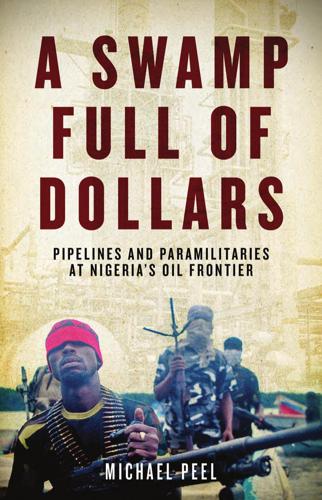
A Swamp Full of Dollars: Pipelines and Paramilitaries at Nigeria's Oil Frontier
by
Michael Peel
Published 1 Jan 2009
One of the boys’ sources of income is spurious ‘taxes’ that they apply to the trucks passing through their domains, bearing consumer goods bought with the proceeds of crude. As my friend puts it, ‘Everyone must have a pinch of that money. It’s just like a game.’ That contest, played for the stakes of oil cash, is at its hardest and most vital in Nigeria’s seething mega-city. On one level, Lagos is a macrocosm of the social forces that have pitilessly impoverished huge numbers of Nigerians and diminished their chances of survival. The World Bank estimated that in 2006 the country had a 10 per cent infant mortality rate. Nigeria ranked a lowly 154th out of 179 countries in the United Nations’ annual index of human development published in 2008.
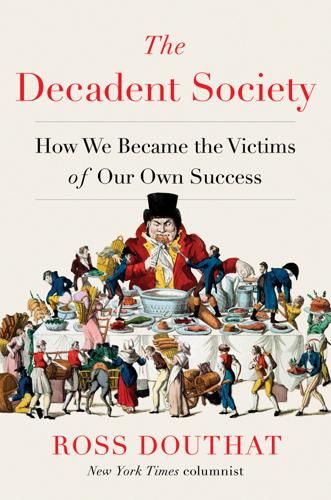
The Decadent Society: How We Became the Victims of Our Own Success
by
Ross Douthat
Published 25 Feb 2020
Imagine the economic consequences for the wider world, as stagnation gave way to a spreading crisis, a cycle of failing crops, falling consumption, failing markets in an interlocking world. And, finally, imagine the possible developments in Europe: either a breakdown in political authority, a retribalization pitting natives against immigrants, new megacities against the countryside, or else a kind of rapid adoption of the techno-authoritarian model being pioneered in China, in which liberal democracy ceases to decay and simply falls, replaced by the bureaucratic surveillance state that exists already within the liberal carapace but might, under these circumstances, break out and become the government in full.

Covid-19: The Pandemic That Never Should Have Happened and How to Stop the Next One
by
Debora MacKenzie
Published 13 Jul 2020
Chinese markets, whether or not one was the source of Covid-19, harbor other viruses, notably bird flu—we know because Chinese scientists find it there and have called for closing the markets because that has stopped outbreaks. Probably wet markets elsewhere should also be cleaned up. Yes, such markets have a long tradition, but those years of history didn’t take place alongside modern intensive agriculture, megacities, or our hyperconnected world, which magnify the risks they pose of swapping pathogens among species, including humans. We can find ways to provide these goods safely. Speaking of flu, in Chapter 5, we looked at the one virus we know is going to stage a pandemic, how it does this, and how the swine flu pandemic in 2009 precipitated an attack on the WHO that may have made it harder to react to Covid-19.
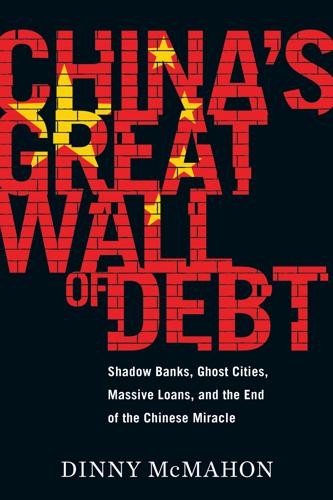
China's Great Wall of Debt: Shadow Banks, Ghost Cities, Massive Loans, and the End of the Chinese Miracle
by
Dinny McMahon
Published 13 Mar 2018
Moreover, land sales were equivalent to about 60% of what it collected in taxes, well above the national average. Demand from developers for new land continues unabated; in fact, it has been relentless. What’s driving demand is the plan made in Beijing—a two-hour drive away—to turn the capital into a megacity that will subsume peripheral towns like Liang’s. No one really knows what that will mean in practice, but the prospect sent housing prices soaring. Liang’s youngest daughter, who lives in Beijing, ended up buying an apartment near her parents’ village a year after swearing she wouldn’t. Prices were irrationally high, she had said.
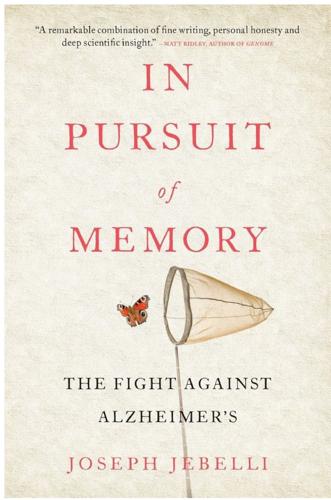
In Pursuit of Memory: The Fight Against Alzheimer's
by
Joseph Jebelli
Published 30 Oct 2017
It comes from the sheer lawlessness of biology, the ‘most lawless of the three basic sciences’, wrote cancer biologist Siddhartha Mukherjee. ‘There are few rules to begin with, and even fewer rules that are universal.’12 Nowhere else is this truer than in cell biology. We can imagine cells as microcosms of modern megacities–dynamic, ever-changing entities, constantly generating new and innovative trends in behaviour. With iPS cells, it’s like finding a city on another planet. And so for the time being, the nitty-gritty of how they actually work is a total enigma. Scientists are basically making it up as they go along.

The Story of Crossrail
by
Christian Wolmar
Published 5 Sep 2018
The vital aspect of transport for the thousands of people expected to be employed in the newly expanding Docklands was considered rather belatedly. The Reichmanns originally envisaged that parking spaces would be needed to accommodate the majority of the workers. As Michael Schabas puts it: ‘In virtually all megacities, even Paris and New York, most top executives actually drive to work … it was only after they arrived in London that Olympia & York learned that inner London did not really have an “expressway system”’,11 unlike every US and Canadian city. However, a maximum of just 8,000 spaces was planned for by the Development Corporation.
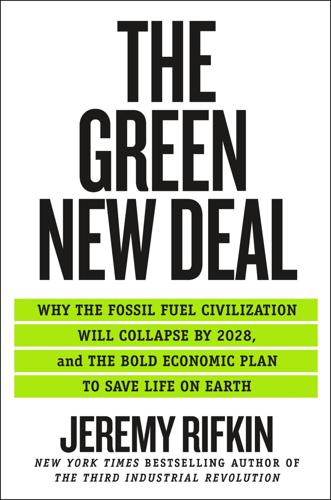
The Green New Deal: Why the Fossil Fuel Civilization Will Collapse by 2028, and the Bold Economic Plan to Save Life on Earth
by
Jeremy Rifkin
Published 9 Sep 2019
If the prototype neighborhood is successful, the next step might be to expand outward, eventually transforming the entire infrastructure of the metropolitan region of Toronto into a showcase smart city. The catch is that Google’s smart city experiment gives the internet giant its first foray into algorithmic governance over entire cities. In 2007, humanity reached a milestone, with a majority of human beings living in urban areas, many in megacities and suburban extensions with populations of 10 million or more.31 This was the year we became “Homo urbanus.” Jump a decade to today. Billions of human beings use Google’s search engine, Google Maps and Waze for location identification and navigation, YouTube videos, and countless other Google data-driven services, primarily in dense metropolitan regions.
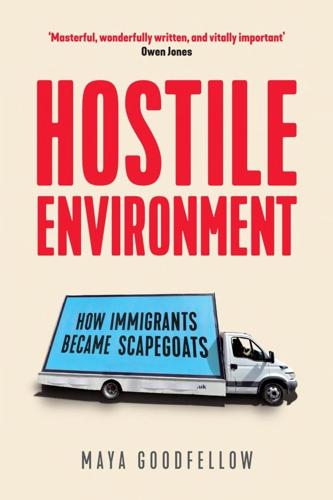
Hostile Environment: How Immigrants Became Scapegoats
by
Maya Goodfellow
Published 5 Nov 2019
Meanwhile, there’s lots of wasted space.’ Our population figures are somewhat out of date because the last UK census was in 2011, but what we can deduce from the information we have is the country isn’t even particularly densely populated, despite what we might like to believe. Dorling points out that London is the lowest density mega-city on the planet; ‘the densest part of London is four times less dense than Barcelona.’49 In 2012, it was estimated that just 2.27 per cent of England’s landscape was built on.50 Population density is usually understood by dividing the number of people in a country by the land area of that same country, but urban studies specialist Alasdair Rae argues that this isn’t always the best way to make sense of population density.

Restarting the Future: How to Fix the Intangible Economy
by
Jonathan Haskel
and
Stian Westlake
Published 4 Apr 2022
For starters, cities seem to be especially good at generating unusual combinations of technologies as measured by novel combinations of terms in patents—synergies at work.9 Even if spillovers are working better at a distance than they used to, they still mostly happen face-to-face; and as intangibles grow as a share of the capital stock, that advantage becomes more and more important. But the forward march of the world’s megacities had begun to falter well before COVID-19 forced office workers to work from their homes. In particular, rising housing costs are increasingly eating up the productivity benefits of big cities.10 As a result, the higher productivity that firms enjoy from being in thriving cities is less likely to translate into higher profits or higher disposable income for workers, because housing costs increase to consume the difference.

Beautiful Solutions: A Toolbox for Liberation
by
Elandria Williams, Eli Feghali, Rachel Plattus
and
Nathan Schneider
Published 15 Dec 2024
WRITTEN BY ELI FEGHALI Despite the setbacks in Porto Alegre, participatory budgeting has spread to over 3,000 cities in Latin America, North America, Asia, Africa, and Europe since 1989. Most participatory budgeting processes involve the municipal budget in cities of all sizes, from ones with less than 20,000 inhabitants (e.g., Icapuí and Mundo Novo in Brazil, and Grottomare in Italy) to mega-cities like Buenos Aires, New York, and São Paulo. Participatory budgeting has worked in both rural municipalities (like Governador Valadares, Brazil) and completely urban ones (like Belo Horizonte), and in cities with both scarce and plentiful public resources. The process can be applied at any level of governance, including counties, states, housing authorities, schools and school systems, universities, and other public agencies.

Amateurs!: How We Built Internet Culture and Why It Matters
by
Joanna Walsh
Published 22 Sep 2025
But they were similar in that they both conjured the effects of professional knowledge without the need for their audience or creators to fully understand the processes involved. He (and across centuries that restricted women as professionals, he was almost always ‘he’) was a natural, with no need for formal training or qualifications. His amateurism lined up with tensions between the individual and the state in nineteenth- and twentieth-century megacities, typically played out via fantasies of class: upper-class amateur Sherlock Holmes vs lower-middle-class professional Inspector Lestrade; millionaire amateur Batman vs working professional Commissioner James Gordon. The locus of ‘good’ outside of the system was clear: the real enemies of these gentlemen amateurs were not their nemeses, but the state.

Wonderland: How Play Made the Modern World
by
Steven Johnson
Published 15 Nov 2016
Just as Louis Sullivan’s original skyscrapers had defined the urban skylines of the first half of the twentieth century, Gruen’s shopping mall proliferated around the globe, first in suburban American towns newly populated by white flight émigrés from metropolitan centers. Shopping meccas like L.A.’s Beverly Center became cultural landmarks, and the default leisure activity of hanging at the mall would define an entire generation of “Valley girls.” But as mall culture went global, Gruen’s design became increasingly prominent in the downtown centers of new megacities. Originally conceived as a way to escape the harsh winters of Minnesota, Gruen’s enclosed public space accelerated the mass migration to desert or tropical climates made possible by the invention of air-conditioning. Today, the ten largest shopping malls in the world are all located in non-U.S. or European countries with tropical or desert climates, such as China, the Philippines, Iran, and Thailand.

The Sharing Economy: The End of Employment and the Rise of Crowd-Based Capitalism
by
Arun Sundararajan
Published 12 May 2016
It is worth noting, however, that in many parts of the world, we’ve already exceeded this projected number. In North America, 82% of people live in urban areas. Latin America and the Caribbean are not far behind at 80%. In Europe, 73% of people live in urban areas. It is precisely in these urban areas, and especially in the world’s megacities (urban areas with 10 million residents or more), that the promise of crowd-based capitalism seems most salient. Cities are sharing economies. When you live in a city, you share public parks. You share transportation using taxis, buses, and the subway. You share common areas in your apartment building.
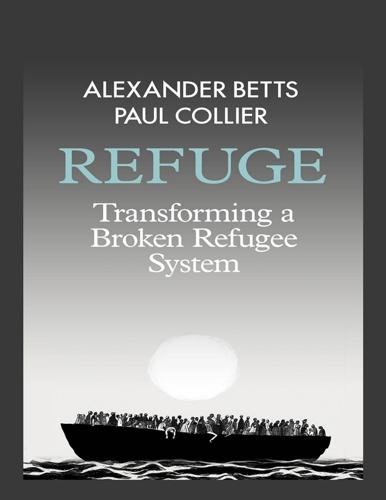
Refuge: Transforming a Broken Refugee System
by
Alexander Betts
and
Paul Collier
Published 29 Mar 2017
South Africa’s initial solution to the mass influx of Zimbabweans was to claim that they were not refugees and to deport them. Jordan would far prefer Syrians to be in camps, because of both worries about terrorist infiltration and competition for jobs and resources. However, forcibly removing large numbers of refugees from the mega-cities of the global South is almost impossible and so most host countries begrudgingly tolerate the presence of urban refugees while doing as little as possible to welcome them, and sometimes as much as possible to deter their arrival. The humanitarian silo model is increasingly out of touch. It fails against almost any metric.
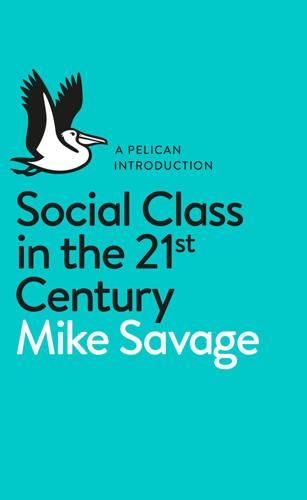
Social Class in the 21st Century
by
Mike Savage
Published 5 Nov 2015
Every city lost ground to the capital during this period. Nascent nationalist identities in Northern Ireland, Wales and Scotland are partly a response to this urban centrality. Within England, Evan Davis has argued that northern cities needed to overcome their parochial cultural differences for the greater good in the formation of a mega-city which could truly rival London in economic terms. This has fed into arguments about the need for a ‘northern powerhouse’. In fact, adding the value of Liverpool, Manchester, Leeds, and Sheffield together (by, for example, running high-speed trains between them) would create an urban core with only half the power of London – hardly a major rival.7 With such developments it is little wonder that The Economist argued that ‘economically, socially and politically, the north is becoming another country’.8 But in fact, it would be erroneous to see this as predominantly a north–south divide.
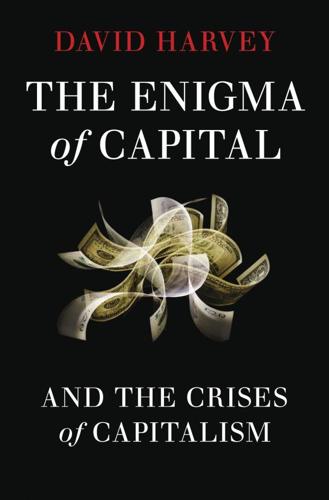
The Enigma of Capital: And the Crises of Capitalism
by
David Harvey
Published 1 Jan 2010
The uneven geographical development that results is as infinitely varied as it is volatile: a deindustrialised city in northern China; a shrinking city in what was once East Germany; the booming industrial cities in the Pearl River delta; an IT concentration in Bangalore; a Special Economic Zone in India where dispossessed peasants revolt; indigenous populations under pressure in Amazonia or New Guinea; the affluent neighbourhoods in Greenwich, Connecticut (until recently, at least, hedge fund capital of the world); the conflict-ridden oil fields in the Ogoni region of Nigeria; the autonomous zones carved out by a militant movement such as the Zapatistas in Chiapas, Mexico; the vast soy bean production zones in Brazil, Paraguay and Argentina; the rural regions of Darfur or the Congo where civil wars relentlessly rage; the staid middle-class suburbs of London, Los Angeles or Munich; the shanty towns of South Africa; the garment factories of Sri Lanka or the call centres of Barbados and Bangalore ‘manned’ entirely by women; the new megacities in the Gulf States with their star-architect-designed buildings – all of this (and of course much more) when taken together constitutes a world of geographical difference that has been made by human action. At first blush, this world would appear to be so geographically diverse as to escape principled understanding, let alone rationalised control.

Street Smart: The Rise of Cities and the Fall of Cars
by
Samuel I. Schwartz
Published 17 Aug 2015
A properly designed system needs the benefits of efficiency and flexibility, which means it needs to be, as we noted in the Prologue, what engineers call multimodal, offering many different ways of getting from place to place, and multinodal, with routes that incorporate the maximum number of connection points. Whether small towns or megacities, the first key to multimodal/multinodal transportation is space: the two- and three-dimensional map of the transportation system—not just the roads and tracks, but the surrounding buildings and other structures and how they relate to one another. When the activities where people interact with one another—working, buying, selling, and so on—are largely in one place, the places where they live surround that one place, the center.

Frugal Innovation: How to Do Better With Less
by
Jaideep Prabhu Navi Radjou
Published 15 Feb 2015
It is published with the permission of Diateino. 4Principle three: create sustainable solutions 1“Tarkett joins the ‘Circular Economy 100’ program”, Tarkett, February 8th 2013. 2“Fixing Capitalism: Paul Polman interview”, Confederation of British Industry (CBI), November 14th 2012. 3“A water warning”, The Economist, November 19th 2008. 4Kanani, R., “Why IKEA Thinks This Mega-Trend Will Define The Next 30 Years Of Business”, Forbes, February 7th 2014. 5McDonough, W. and Braungart, M., Cradle to Cradle: Remaking the Way We Make Things, North Point, 2002. 6Kobori, M., vice-president, global sustainability, Levi Strauss & Co, interview with Navi Radjou, May 21st 2014. 7Ebner von Eschenbach, head of BMW Group’s Financial Services Segment, interview with Jaideep Prabhu, April 7th 2014. 8Walker, J., former head of innovation, Kingfisher, interview with Jaideep Prabhu, February 20th 2014. 9Heck, S., Rogers, M. and Carroll, P., Resource Revolution: How to Capture the Biggest Business Opportunity in a Century, Melcher Media, 2014. 10Mazoyer, E., deputy CEO, Bouygues Immobilier, interview with Navi Radjou, April 29th 2014. 11Laville, E., CEO, Utopies, interview with Navi Radjou, March 28th 2014. 12Nemo, S-N., vice-president, La Poste, and head of Recy’Go, interview with Navi Radjou, April 30th 2014. 13Blanchard, D., chief R&D officer, Unilever, interview with Jaideep Prabhu, February 20th 2014. 5Principle four: shape customer behaviour 1Blanchard, D., chief R&D officer, Unilever, interview with Jaideep Prabhu, February 20th 2014. 2Schumacher, E.F., Small Is Beautiful: A Study of Economics as if People Mattered, Harper & Row, 1973. 3Ehrenfeld, J. and Hoffman, A.J., Flourishing: A Frank Conversation about Sustainability, Stanford Business Books, 2013. 4Ibid. 5MIT’s SENSEable City Lab research team, interview with Navi Radjou, May 13th 2014. 6Ratti, C. and Kloeckl, K., “Rise of the Asian Megacity”, BBC, June 20th 2011. 7“Health and appiness”, The Economist, February 1st 2014. 8Wilby, P., “Moocs, and the man leading the UK’s charge”, Guardian, August 18th 2014. 9Subramanian, P., founder, CoLearnr, interview with Jaideep Prabhu, May 1st 2014. 10Bordoff, J. and Pascal, N., Pay-As-You-Drive Auto Insurance: A Simple Way to Reduce Driving-Related Harms and Increase Equity, Brookings Institution, July 2008. 11Verbaken, J., co-founder, gThrive, interview with Navi Radjou, August 18th 2014. 12Laskey, A., CEO, Opower, “How behavioral science can lower your energy bill”, talk at TED 2013. 13Rebours, C., CEO, InProcess, interview with Navi Radjou, March 14th 2014. 14“Philips Introduces ‘Lighting as a Service’”, SustainableBusiness.com, January 23rd 2014. 15“Meet Simple; A Worry-Free Alternative To Traditional Banking”, TraxonTech, March 14th 2013. 6Principle five: co-create value with prosumers 1Von Hippel, E., Democratizing Innovation, MIT Press, 2006. 2“Samsung ranks second in R&D spending for 2013”, GS Marena Blog, October 24th 2013. 3Dunn, E. and Norton, M., Happy Money: The Science of Smarter Spending, Simon & Schuster, 2013. 4Norton, M., Ariely, D. and Mochon, D., “The IKEA effect: When labor leads to love”, Journal of Consumer Psychology, Vol. 22, 2012, pp. 453–60. 5Coase, R., “The Nature of the Firm”, Economica (Blackwell Publishing), Vol. 4, Issue 16, 1937, pp. 386–405. 6White House, “Remarks by the President at the White House Maker Faire”, Office of the Press Secretary, June 18th 2014. 7Dutcher, J., “Massimo Banzi: How Arduino is Open-Sourcing Imagination”, DataScience@Berkeley, April 22nd 2014. 8European Commission, “The Sharing Economy: Accessibility Based Business Models for Peer-to-Peer Markets”, Business Innovation Observatory, September 2013. 9Cortese, A., Locavesting: The Revolution in Local Investing and How to Profit from It, John Wiley, 2011. 10Nussbaum, B., Creative Intelligence: Harnessing the Power to Create, Connect, and Inspire, HarperBusiness, 2013. 11“Giffgaff”, World Heritage Encyclopedia, November 25th 2009. 7Principle six: make innovative friends 1Safian, R., “Generation Flux: Beth Comstock”, Fast Company, January 2012. 2Comstock, B., senior vice-president and chief marketing officer, GE, interview with Navi Radjou, April 7th 2014. 3Groth, O., “Hacking Wicked Social Problems With Renaissance Thinkers and Gamers”, Huffington Post, February 18th 2014. 4Martin, T., “The (Un)examined Organization”, The Alpine Review, Issue No. 2, 2014. 5Martin, T., CEO, Unboundary, e-mail exchange with Navi Radjou, August 18th 2014. 6“Four Disruption Themes for Business”, The Altimeter Group, April 2013. 7Groth, op. cit. 8Marks & Spencer’s Plan A Report, 2014. 9Mulcahy, S., senior vice-president and managing director of financial services industry, Salesforce.com, interview with Navi Radjou, March 6th 2014. 10Rebours, C., CEO, InProcess, interview with Navi Radjou, March 14th 2014. 11Gertler, N., “Industrial Ecosystems: Developing Sustainable Industrial Structures”, MIT master’s thesis, Smart Communities Network, 1995. 12Corkery, M., and Silver-Greenberg, J., “Lenders Offer Low-Cost Services for the Unbanked”, New York Times Dealbook, July 22nd 2014. 13Fera, R.A., “American Express Spotlights the Issue of Financial Exclusion in Davis Guggenheim Doc ‘Spent’”, Fast Company, March 2014. 14Birol, J., serial entrepreneur and strategy consultant, interview with Navi Radjou, August 25th 2014. 15Wiseman, L., Thinkers50-ranked leadership expert, interview with Navi Radjou, August 18th 2014. 16“Pearson debuts new global accelerator class”, Pearson News, June 16th 2014. 17Coughlin, B., CEO, Ford Global Technologies, e-mail exchange with Navi Radjou, August 2014. 18Radjou, N., “Innovation Networks: Global Progress Report 2006,” Forrester Report, June 2006. 19Vandebroek, S., chief technology officer, Xerox, interview with Navi Radjou, August 25th 2014. 20Musk, E., “All Our Patent Are Belong To You”, Tesla Blog, June 12th 2014. 21Litzler, J-B., “Sébastien Bazin divise Accor en deux pour mieux le réveiller”, Le Figaro, November 27th 2013. 22Lacheret, Y., senior vice-president, entrepreneurship advocacy, Accor Group, interview with Navi Radjou, July 7th 2014. 8Fostering a frugal culture 1Hall, J., “Sir Stuart Rose on the ethical spirit of Marks & Spencer”, Daily Telegraph, February 1st 2009. 2Vasanthakumar, V., Senior Associate, Office of the Chief Education Adviser at Pearson, interview with Jaideep Pradhu, August 28th 2014. 3Datta, M., head of Plan A delivery, Marks & Spencer’s worldwide properties, interview with Jaideep Prabhu, May 9th 2014. 4Marks & Spencer’s Plan A Report, 2014. 5Faber, E., CEO, Danone, e-mail exchange with Navi Radjou, August 2014. 6Lawrence, J., senior sustainability adviser and in-house counsel to Kingfisher Group’s Net Positive strategy, interview with Jaideep Prabhu, February 21st 2014. 7Kingfisher, Net Positive Report, 2013/14. 8Ibid. 9Marks & Spencer, op. cit. 10Radjou, N., Prabhu, J. and Ahuja, S., L’Innovation Jugaad: Redevenons Ingénieux!
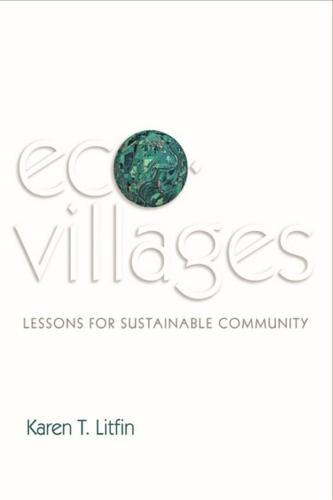
Ecovillages: Lessons for Sustainable Community
by
Karen T. Litfin
Published 16 Dec 2013
The mega-slums of Sao Paolo, Shanghai, Lagos, and other cities of the global South are swelling with people who can no longer eke out a living in their villages. The factors driving this mass exodus are complex, ranging from depleted soils to WTO trade rules, but policies that promote rural sustainability – including the ecovillage model – will also be helping cities. While mega-cities are new to the human scene, the village model has, at least until recently, withstood the test of time. This is why Sarvodaya, Colufifa, and other grassroots rural initiatives are so important. The nation My year of ecovillage living sensitized me to the vital role of human purpose. Every time I left an ecovillage for “the real world,” I underwent culture shock.

Norman Foster: A Life in Architecture
by
Deyan Sudjic
Published 1 Sep 2010
It is a human act because design is a response to the needs of people, whether they are spiritual or material. The quality of that design affects the quality of all of our lives. His speech continued: Designers continually face new challenges, some caused by irresponsible past strategies, the threat of global warming and population growth. They affect the balance of an island nation as much as a mega-city on the Pacific Rim. The challenges are the same, only the scale varies. I passionately believe that we have to build more densely in urban areas and – a vital coupling – when we do that we have to improve the standard of urban living. It may mean building taller, but not always. It certainly means producing more housing of higher quality and at lower cost.
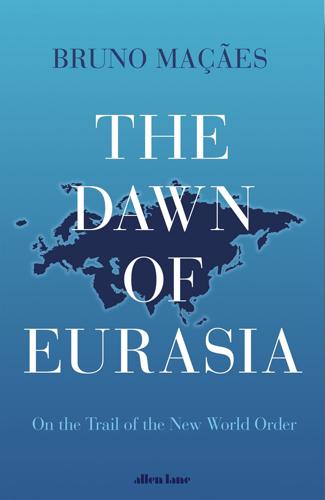
The Dawn of Eurasia: On the Trail of the New World Order
by
Bruno Macaes
Published 25 Jan 2018
At Fuyun I meet an employee of Boshihao Electronic, a firm registered in the southern city of Shenzhen, which is planning to open its robot production workshop in Khorgas and expects to start exporting service robots to Europe in 2017. Everyone is too busy making a fortune to care about following the rules too strictly: perhaps the traffic lights will never be turned on. China’s youngest city brims with ambition. This is the new Wild West – quite literally, for the many young people flocking to Khorgas from the big Chinese mega-cities to the East. When you cross the border to the Kazakh side, things are more subdued. The Kazakh Khorgos (the name for the town is the same, but there is a difference in pronunciation) is still more or less what it has always been: a couple of dozen old houses congregated around a pretty mosque and a road running down to the border post.

Data Action: Using Data for Public Good
by
Sarah Williams
Published 14 Sep 2020
Data Analytics: Giving Birth to the Field of Public Health The First Industrial Revolution (1760–1840) transformed the dependency on manual labor in the economies of societies to the deployment and reliance on steam-powered machines. Urban populations grew tremendously as people moved from the countryside seeking work in factories. London, perhaps the first mega-city, doubled its population between 1802 and 1850. With that growth came extreme poverty, a lack of proper housing and sanitation, and outbreaks of cholera (in 1832 and 1850s).25 Such outbreaks, it turns out, propelled early nineteenth-century data collection efforts, often in direct response to public health issues, living conditions, or poverty.26 In Britain, this interest resulted in the establishment of a number of statistical societies,27 the first of which, the Manchester Historical Society, was founded in 1833, at approximately the same time that the United Kingdom's Ordnance Survey started to create cadastral (detailed map) surveys of cities.28 Just a year later, in 1834, Charles Babbage co-founded the Statistical Society of London, which later became the Royal Statistical Society.

Volt Rush: The Winners and Losers in the Race to Go Green
by
Henry Sanderson
Published 12 Sep 2022
utm_source=Nature+Briefing&utm_campaign=4f69ad29e5-briefing-dy-20210219&utm_medium=email&utm_term=0_c9dfd39373-4f69ad29e5-43565849. 12 Mulvaney, D., Richards, R.M., Bazilian, M.D. et al., ‘Progress towards a circular economy in materials to decarbonize electricity and mobility’, Renewable and Sustainable Energy Reviews, 137 (2021), 110604, https://doi.org/10.1016/j.rser.2020.110604. 13 Owen, D., ‘The efficiency dilemma’, New Yorker, 12 December 2010. 14 Smith, B., ‘Government won’t meet net-zero emissions without “massive change”, warns Defra chief scientist’, Civil Service World, 29 August 2019, www.civilserviceworld.com/professions/article/government-wont-meet-netzero-emissions-without-massive-change-warns-defra-chief-scientist. 15 Owen, ‘The efficiency dilemma’. 16 Smil, V., Growth, From Microorganisms to Megacities (Cambridge MA, MIT Press, 2019), p. 201. 17 Schmitt, A., ‘What happened to pickup trucks?’, Bloomberg News, 11 March 2021. 18 Platform for Accelerating the Circular Economy, ‘A new circular vision for electronics: time for a global reboot’, January 2019, https://www3.weforum.org/docs/WEF_A_New_Circular_Vision_for_Electronics.pdf. 19 Statistic courtesy of Analog Devices. 20 McGrath, M., ‘Climate change: “dangerous and dirty” used cars sold to Africa’, BBC Online, 26 October 2020. 21 Xu, C., Dai, Q., Gaines, L. et al., ‘Future material demand for automotive lithium-based batteries’, Communications Materials, 1 (2020), 99, https://doi.org/10.1038/s43246-020-00095-x.

Cobalt Red: How the Blood of the Congo Powers Our Lives
by
Siddharth Kara
Published 30 Jan 2023
As a result, it is always raining somewhere in the Congo, and the country has the highest frequency of thunderstorms in the world. The major cities of the DRC include the frenetic capital, Kinshasa, located near the southwestern edge of the country along the banks of the Congo River. It is one of Africa’s fastest-growing megacities and home to more than seventeen million “Kinois.” Mbuji-Mayi is capital of Kasai-Orientale Province, situated in the south-central part of the country and home to the largest diamond deposit in the world. The capital of Tshopo Province, Kisangani, is located near numerous gold mines and serves as a trading hub in the heart of the Congo River.
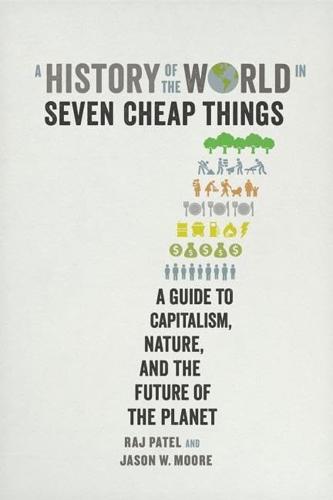
A History of the World in Seven Cheap Things: A Guide to Capitalism, Nature, and the Future of the Planet
by
Raj Patel
and
Jason W. Moore
Published 16 Oct 2017
New York: Routledge. Davis, Mike. 1986. Prisoners of the American Dream: Politics and Economy in the History of the US Working Class. London: Verso. ———. 2001. Late Victorian Holocausts: El Niño Famines and the Making of the Third World. London: Verso. ———. 2004. “The Urbanization of Empire: Megacities and the Laws of Chaos.” Social Text 22, no. 4: 9–15. ———. 2015. “Marx’s Lost Theory: The Politics of Nationalism in 1848.” New Left Review 93: 45–66. Davis, Ralph. 1954. “English Foreign Trade, 1660–1700.” Economic History Review 7, no. 2: 150–66. Day, John. 1978. “The Great Bullion Famine of the Fifteenth Century.”

Cool: How Air Conditioning Changed Everything
by
Salvatore Basile
Published 1 Sep 2014
One young woman recently advertised in her local paper for a husband; listed among her personal attractions were “a TV set, an air conditioner, a chicken, a goat, and a scooter.” This situation won’t be changing anytime soon. Scientific American noted that twenty-eight out of the thirty largest cities in the world were in tropical climates. And as they develop, “the demand for air conditioning in these gigantic mega-cities … is going to skyrocket.” True enough. Worldwide, mechanical cooling is becoming routine. Not only buildings, but also transit systems around the globe are constructed with built-in air conditioning, from Kuala Lumpur and Singapore to Bilbao and San Francisco; even the Copenhagen Metro found it necessary.

How to Spend a Trillion Dollars
by
Rowan Hooper
Published 15 Jan 2020
At 2 ºC or more, much of the planet would become intolerable for human life.5 And remember – we’re currently heading for a world that is 3 ºC warmer by the end of the century. The clamour for some sort of technological solution may eventually become irresistible to politicians. Perhaps it will be the fear of sea level rise, as hundreds of millions of people in coastal megacities seek help. Not to mention the trillions of dollars tied up in those places. The Institute for Economics & Peace produced an Ecological Threat Register in 2020, and found that 1.2 billion people in 31 countries could be displaced due to climate-change-related problems such as drought or food shortages by 2050.6 As these sorts of problems and impacts mount, we have to be prepared for a pivot from inaction on emissions to action on an engineering solution.
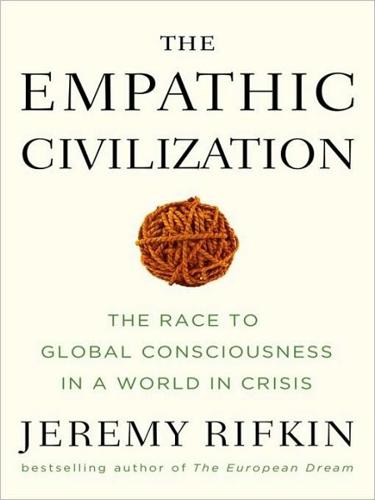
The Empathic Civilization: The Race to Global Consciousness in a World in Crisis
by
Jeremy Rifkin
Published 31 Dec 2009
The human population is expected to increase to nine billion by 2042, most living in dense urban areas.20 The year 2007 marked a great tipping point in the history of human settlement, similar in magnitude to the agricultural era. For the first time in history, a majority of human beings live in vast urban areas, according to the United Nations—many in mega-cities with suburban extensions—some with populations of ten million people or more. We have become “Homo urbanus.” The urbanization of the world has been made possible by a tremendous increase in entropic flow. Urban societal structures maintain human life far away from equilibrium by pumping more and more of the Earth’s available energy and material through their arteries, to support ever more sumptuous lifestyles at the core of the infrastructure, while dumping ever more entropic waste at the margins and in the external environment.
…
Macpherson, Crawford Maddux, William Madonna Making and Breaking of Affectional Bonds, The (Bowlby) Making of a Counter Culture, The (Roszak) Making of the Modern Mind, The (Randall) male sensitivity Man of Feeling, The (Mackenzie) Managed Heart, The (Hochschild) Mandela, Nelson Manifesto of the Communist Party, The (Engels and Marx) Margulis, Lynn market model market sector marriage companionate intermarriage Romantic movement and same-sex Martin, Gerry Marx, Karl Mask (film) Maslow, Abraham mass audiences mass collaboration mass extinction mass literacy Masson, Jeffrey materialism Matteucci, Carlo Max Planck Institute for Evolutionary Anthropology May, Rollo Mayans MBA curriculum McDermott, Michael McEwen, Robert McGregor, Holly McKee, Annie McKenna, Katelyn McLuhan, Marshall McNeill, David McNeill, William Mead, George Herbert meaning beyond survival mechanistic approach media mediated association Meeks, Wayne A. mega-bands mega-cities Meltzoff, Andrew, Dr. Mencius mercantilism merchant capitalists Mercier, Louis-Sébastien Mesopotamia meta narrative metaphors dramaturgical electricity psychological methane method acting. See deep acting Mexico Michelangelo Middle Ages agriculture in birth of humanism in childhood in consciousness in energy revolution in entropy crisis in family life in guilds in print revolution in Middle East migration Milgram, Stanley Mill, John Stuart Millennial Generation Millennial Makeover (Winograd and Hais) Miller, G.
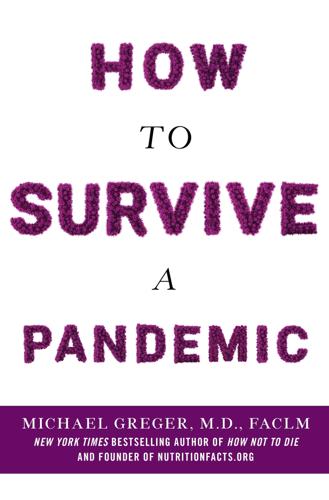
How to Survive a Pandemic
by
Michael Greger, M.D., FACLM
A short one hundred thousand years ago, all members of the human race lived in eastern Africa.717 The 7.8 billion people alive today represent roughly one out of every fourteen people who have ever inhabited the Earth.718 In 1918, cities like London were smaller, with just over one million residents. Today there are twenty-six megacities in the world, each with more than ten million people.719 With this kind of tinder, experts like the WHO’s Klaus Stöhr have predicted a pandemic will “explosively” hit world populations “like a flash flood.”720 “The rapidity of the spread of influenza throughout a country is only limited by the rapidity of the means of transportation,” explained the 1918 New York State Health Commissioner.721 Back then, the fastest way to cross the world was by steamship.722 In the past, a trip around the world took a year; today we and our viruses can circle the globe in twenty-four hours.723 The number of human globe-trotters now exceeds one billion people a year.724 HIV left Africa on an aircraft, and the fear was that H5N1 may leave Asia the same way COVID-19 escaped, only a plane ride away.
…
The only animal industry with greater stocking density than poultry production is fish farming, where tanks routinely squeeze up to a ton of animals into a dozen cubic yards of water (9 m3).1163 Floating cages have been known to hold up to four times more.1164 The water can become so saturated with feed and feces that these fish-in-a-barrel operations may be more aptly dubbed fish-in-a-toilet. As the chief of the CDC’s Special Pathogens branch once pointed out, whether in a human megacity, a broiler chicken shed, or an aquaculture tank, any time one crowds a monoculture of a single species together, one is asking for trouble.1165 Combined with the stress associated with overcrowding and poor water quality, it is not hard to imagine how the factory farming methods associated with the so-called Blue Revolution expansion of fish farming in the 1980s1166 resulted in the emergence of another zoonotic disease.1167 Discovered first in an Amazon dolphin in the 1970s from which it got its name, Streptococcus iniae (inia is the Guarayo Indian word for “dolphin”1168) started wiping out fish stocks on intensive fish farms around the world with epidemics of acute meningitis.1169 By the 1990s, the dolphin wasn’t the only mammal discovered to be infected.
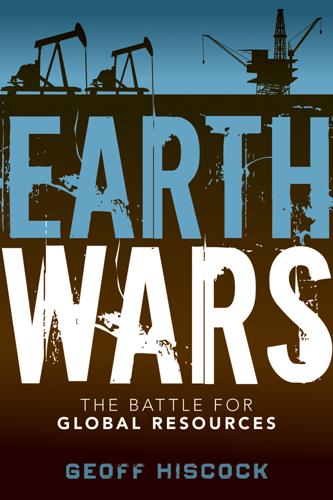
Earth Wars: The Battle for Global Resources
by
Geoff Hiscock
Published 23 Apr 2012
Fan recognises the challenges of running such a system, so he has suggested it be started on an experimental scale with relatively small reserves.8 Unlike China’s Great Famine of 1958–1962, when the burden was borne most acutely by rural peasants, urban food security is the big challenge today. There are now more than 400 cities in the world with a population above 1 million, including 160 in China alone and 45 in India. That compares with less than 20 such cities globally 100 years ago. In the emerging world, megacities such as Shanghai, Beijing, Guangzhou, Mumbai, Kolkata, Delhi, Dhaka, Manila, Sao Paulo, Jakarta, Cairo, Istanbul, Tehran, Mexico City, Lagos, Karachi, Rio de Janeiro, and Buenos Aires all have populations of 10 million or more. By 2050, when the world’s population reaches 9 billion, 6 billion people will live in cities.
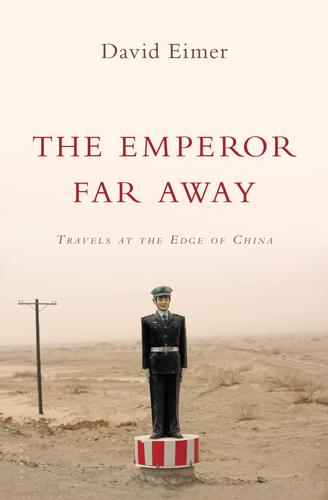
The Emperor Far Away: Travels at the Edge of China
by
David Eimer
Published 13 Aug 2014
In the north-east, south-west and west, China is surrounded by the most isolated countries of South-east Asia, the ’stans of central Asia, Afghanistan, Bhutan, India and Pakistan, Mongolia, Nepal, North Korea and Russia. They are some of the most unpredictable states on the planet, and the conflicts that rage within them inevitably spill across the frontiers. To explore the border regions is to enter a very different China from the glittering mega-cities of Beijing and Shanghai, one that is often lawless and prone to violence. Now they are areas where some of the world’s most pressing problems confront China directly. The war against terrorism and on drugs, people smuggling and the exploitation of the environment all have their own unique Chinese aspect.

Cathedrals of Steam: How London’s Great Stations Were Built – and How They Transformed the City
by
Christian Wolmar
Published 5 Nov 2020
Christian Wolmar July 2020 ONE STARTING SLOWLY THE RAILWAYS CAME late to London, half a dozen years after the opening of the pioneering Liverpool & Manchester in 1830, but they quickly made up for lost time. Railways soon spread all around the capital and were a vital component of the rapid growth that turned London into the world’s first megacity. London not only acquired the world’s first underground railway network, beating all other cities across the globe by almost forty years, but also can boast today of having 598 railway stations and 756 route miles of line,1 and, most notably, more terminus stations than any other city in the world.
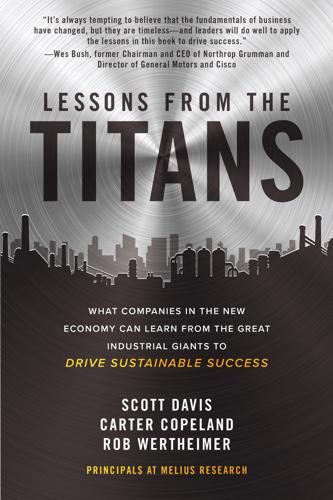
Lessons from the Titans: What Companies in the New Economy Can Learn from the Great Industrial Giants to Drive Sustainable Success
by
Scott Davis
,
Carter Copeland
and
Rob Wertheimer
Published 13 Jul 2020
When Airbus looked across the Boeing product portfolio, Airbus decided that a competitive response at the XL end of the market made the most sense. In 2000 Airbus launched the A380, the largest passenger aircraft ever produced. With two full passenger decks spanning the entire length of the aircraft, the A380 aimed to carry 500+ passengers between the world’s booming megacities. The extra size also allowed for a variety of new amenities like swanky onboard bars and even showers for first-class passengers. The plane was hailed as the ultimate step forward for passenger comfort, but it also offered high-density seating configurations that were capable of ferrying more than 800 passengers at one time.

Falter: Has the Human Game Begun to Play Itself Out?
by
Bill McKibben
Published 15 Apr 2019
In one week at the end of 2017, without making any special effort, I came across stories from Louisiana, where government officials were already finalizing a plan to move thousands of people from rising seas (“Not everybody is going to be able to live where they are now and continue their way of life,” said one state official);17 from Hawaii, where a new study was predicting that, over the next few decades, thirty-eight miles of coastal roads would be chronically flooded and impassable, “jeopardizing critical access to many communities”;18 from Jakarta, Indonesia’s mega-city, where a rising Java Sea earlier that month had briefly turned “streets into rivers and brought this vast area of nearly 30 million residents to a virtual halt”;19 and from Boston, where a simple nor’easter in the first days of 2018 managed to flood some of the city’s priciest neighborhoods, floating Dumpsters and sedans through the Financial District.
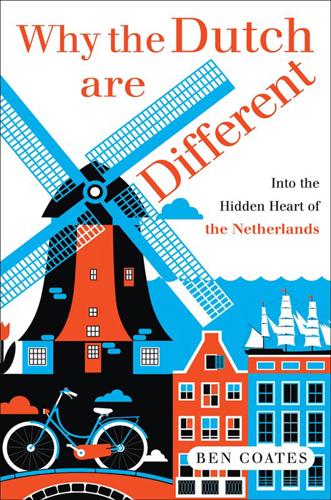
Why the Dutch Are Different: A Journey Into the Hidden Heart of the Netherlands: From Amsterdam to Zwarte Piet, the Acclaimed Guide to Travel in Holland
by
Ben Coates
Published 23 Sep 2015
On top of a nearby sand dune sat four dilapidated satellite dishes, monstrous and skeletal, a relic of US army eavesdropping during the Cold War and a reminder that for all its current bleakness, this had always been one of the crossroads of Europe. A sign pointed with thick blue fingers towards distant megacities – New York: 5824 kilometres, St Petersburg: 1831, Shanghai: 8934. The road ran out at the seafront, disappearing under the sand. Around were the usual distractions of a North Sea holiday resort: ice-cream and hot-dog stands, a children’s fairground ride, shops selling sunglasses and wire baskets of beach toys.

Ghost Road: Beyond the Driverless Car
by
Anthony M. Townsend
Published 15 Jun 2020
There, the twenty-first century’s answer to urban transportation was already on the streets—the minibus. Locals call them matatus, marshrutkas, jeepneys, angkots, or kombis. Carrying 6 to 16 passengers at a time, these nimble people-haulers are the primary means of transportation for many of the megacities of Asia, Africa and Latin America. They thrive where no government-run transit exists—earning them the wonkish label informal transit. Yet their ridership dwarfs that of buses and trains. In Mexico City, for instance, some 30,000 peseros ply 1,500 different routes, carrying more than 14 million people every day—all without any central ownership or formal coordination.
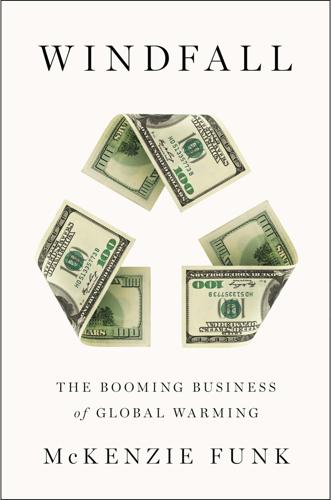
Windfall: The Booming Business of Global Warming
by
Mckenzie Funk
Published 22 Jan 2014
Dhaka’s metropolitan area had an estimated thirteen million people, and it swelled with half a million more char dwellers, cyclone refugees, and other newcomers each year—the highest growth rate on the planet. By 2025, it will be bigger than Mexico City or Beijing. New arrivals camped for days or weeks in rail yards and bus stations before moving into sprawling slums that did not appear on official maps. Men often found work as $2-a-day rickshaw drivers; the megacity was now thought to have as many as 800,000 rickshaws. The lucky ones got jobs in illegal, collapse-prone factories producing clothing for the rest of the world. In Old Dhaka after Atique and I returned from the south, I witnessed a traffic jam near a statue of a Kalashnikov rifle: rickshaw after rickshaw in a dead standstill that stretched for half a mile down a narrow street.

Dead in the Water: A True Story of Hijacking, Murder, and a Global Maritime Conspiracy
by
Matthew Campbell
and
Kit Chellel
Published 2 May 2022
After it came to a stop on the beach, teams of men armed with saws and blowtorches clambered onto its decks, beginning the laborious task of taking the vessel apart from stem to stern by hand. Nothing of value would be allowed to go to waste. Of the materials on board, steel was the most important. Loaded into trucks bound for mills in Karachi, it would be rerolled and combined with other scrap, perhaps destined for new buildings in the ever-sprawling megacity. Though there was far less of it, copper would be another source of revenue, sold into a supply chain essential to meeting the world’s demand for new electronics. Any wood that had somehow survived the fire would also have its use: building more of the shanties to which shipbreakers returned at the end of each day.
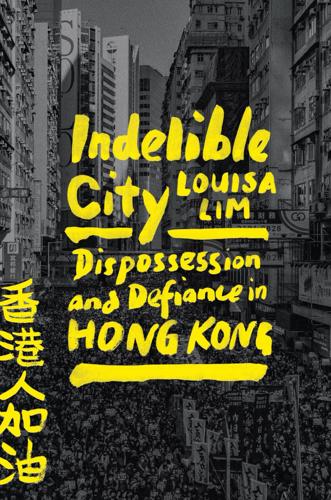
Indelible City: Dispossession and Defiance in Hong Kong
by
Louisa Lim
Published 19 Apr 2022
The name conjures up mental images of a gigantic beachside expanse, even more relaxed, even more sun-kissed than the original Bay Area in San Francisco. Beijing’s vision for Hong Kong is to fold it into a Silicon Valley–style economic entity arcing across the southern Chinese coast and encompassing Macau and nine other southern Chinese cities. This supermetropolis, including the megacities of Shenzhen and Guangzhou, would become an innovation and economic hub, as well as a single market. To Hong Kongers, it is a blueprint for absorption into Greater China. To Beijing, it would be a reversion to the place held for Hong Kong in China’s version of the historical narrative: Hong Kong as just another Chinese city.

The Temporal Void
by
Peter F. Hamilton
Published 1 Jan 2008
Kerensk had been one of the Big15 worlds during the Commonwealth’s first era; the super-capitalist engines which powered the Commonwealth’s expansion right up until the Starflyer War. Founded by Sergi Nikolayev, a Russian billionaire, to whom the human exodus from Earth finally provided a way to free himself and his money from Moscow’s grasp. Like the other Big15, it developed into an industrial world whose megacity produced an abundance of cheap heavy engineering and consumer products. Entire continents were strip-mined for raw materials, while those that weren’t plundered for their minerals were factory farmed. After the war the economic slowdown caused by financing the New47 worlds followed by the emergence of Higher culture saw the Big15 slowly lose their stature.
…
The Nikolayev Dynasty carried too much residual distrust and suspicion of the old central control ideology to knuckle under to Higher influences and ANA’s benign guidance. Following Far Away’s lead, it rejected both Higher and Advancer culture, removing its representative from the Senate and becoming an ‘observer’ nation. Those that stayed on in Kaluga, the old megacity, followed their own techno-economic imperative. The rest of the planet was effectively abandoned. Paula scanned the area around Kingsville curiously as the Alexis Denken descended out of a cloudless sky. The old military base was in the middle of a huge desert on the other side of the planet from Kaluga.

The Inevitable: Understanding the 12 Technological Forces That Will Shape Our Future
by
Kevin Kelly
Published 6 Jun 2016
My aversion to utopias goes even deeper. I have not met a speculative utopia I would want to live in. I’d be bored in utopia. Dystopias, their dark opposites, are a lot more entertaining. They are also much easier to envision. Who can’t imagine an apocalyptic last-person-on-earth finale, or a world run by robot overlords, or a megacity planet slowly disintegrating into slums, or, easiest of all, a simple nuclear Armageddon? There are endless possibilities of how the modern civilization collapses. But just because dystopias are cinematic and dramatic, and much easier to imagine, that does not make them likely. The flaw in most dystopian narratives is that they are not sustainable.

Choked: Life and Breath in the Age of Air Pollution
by
Beth Gardiner
Published 18 Apr 2019
Even in April, one of the cleaner months, I can see pollution shimmering in the streetlights at night, like the wispy smoke that floats from a campfire. By day, it’s a gauzy curtain hiding bridges and buildings. This place—Delhi in particular, India more widely, and South Asia as a whole—is air pollution’s ground zero, the epicenter of a health crisis of stunning proportions. In megacities across the subcontinent—Hyderabad and Kolkata, Karachi and Dhaka—hundreds of millions of people are assaulted with each breath by toxins from a mind-boggling multitude of barely regulated sources. India is home to 9 of the top 10 cities on the World Health Organization’s list of the most polluted.
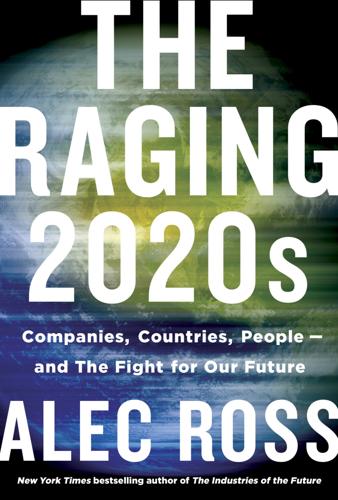
The Raging 2020s: Companies, Countries, People - and the Fight for Our Future
by
Alec Ross
Published 13 Sep 2021
The logic of market forces holds that as severe droughts and storms destroy the habitability of certain regions, both people and capital will flock to places that are more livable and safe. Simply stated, there may be another billion people on earth, but there will be fewer places for them to live, creating more megacities and slums. The countermeasure to this possibility is an international push to address the climate crisis over the next decade. This is an all-hands-on-deck issue that requires public and private investment, so that the world can resoundingly move away from carbon combustion as a means to power our world.
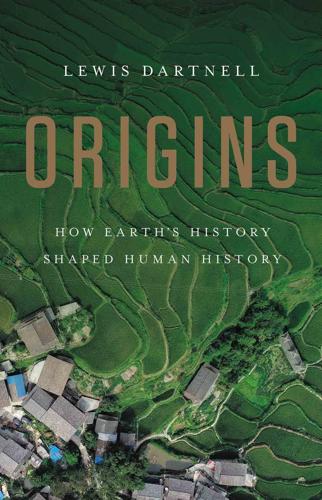
Origins: How Earth's History Shaped Human History
by
Lewis Dartnell
Published 13 May 2019
‘A European population in Minoan Bronze Age Crete’, Nature Communications 4. Humphreys, D. (2014). ‘The mining industry and the supply of critical minerals’, Critical Metals Handbook, ed. G. Gunn, AGU/Wiley: 20–40. Jackson, J. (2006). ‘Fatal attraction: living with earthquakes, the growth of villages into megacities, and earthquake vulnerability in the modern world’, Philosophical Transactions of the Royal Society A–Mathematical Physical and Engineering Sciences 364(1845): 1911–25. Jacobs, J. (2018). ‘Europe’s half a million landfill sites potentially worth a fortune’, Financial Times, https://www.ft.com/content/0bf645dc-d8f1-11e7-9504-59efdb70e12f.

The Power
by
Naomi Alderman
Published 9 Oct 2017
Kali, intoxicated by the blood of the slain. Kali, who puts out the stars with her thumb and forefinger. Terror is her name and death is her breathing in and out. Her arrival in this world has been long expected. Any adjustment in understanding had come easily to the women under the motorway bridges of the megacity. The government sent in the army. The women of Delhi discovered a new trick. A jet of water, directed at the attacking forces, could be electrified. The women put their hands into the spouts and sent death from their fingers, like the Goddess walking the earth. The government cut off the water supply to the slum neighbourhoods, in the highest heat of the summer, when the streets stink of rot and the pregnant dogs wander, panting, in search of shelter from the sun.

The Telomere Effect: A Revolutionary Approach to Living Younger, Healthier, Longer
by
Dr. Elizabeth Blackburn
and
Dr. Elissa Epel
Published 3 Jan 2017
Buy more house plants: two per one hundred square feet is ideal for keeping your air filtered. Good choices include philodendrons, Boston ferns, peace lilies, and English ivy. Support urban forestry with your money or your labor. Green spaces offer so many benefits to mind and body, as well as to healthy communities. One newer idea can be considered in dense urban megacities, where one cannot plant enough trees to rid the air of toxins. If you live in a city, consider lobbying your municipal government to install air-purifying billboards. These billboards do the work of 1,200 trees, cleaning a space of up to 100,000 cubic meters by removing pollutants such as dust particles and metals from the air.50 Stay up to date about toxic products by downloading the “Detox Me” app by Silent Spring: http://www.silentspring.org/.

Pure Invention: How Japan's Pop Culture Conquered the World
by
Matt Alt
Published 14 Apr 2020
obsessed with material things: Susan B. Hanley, Everyday Things in Premodern Japan: The Hidden Legacy of Material Culture (Berkeley: University of California Press, 1997), 24–25. With a million residents, Edo, as Tokyo was known: Sumie Jones and Kenji Watanabe, eds., An Edo Anthology: Literature from Japan’s Mega-City, 1750–1850 (Honolulu: University of Hawaii Press, 2013), 4. For many generations, department stores: Penelope Francks and Janet Hunter, eds., The Historical Consumer: Consumption and Everyday Life in Japan, 1850–2000 (New York: Palgrave Macmillan, 2012), 268. Charles Tiffany harnessed Japanese flourishes: Hannah Sigur, The Influence of Japanese Art on Design (Layton, Utah: Gibbs Smith, 2008), 154.
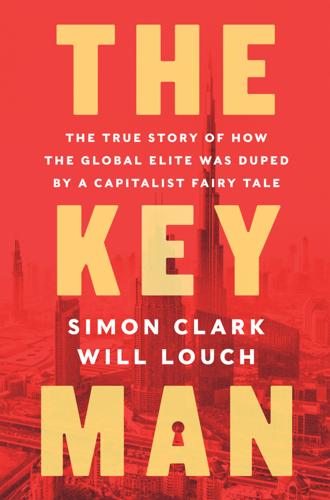
The Key Man: The True Story of How the Global Elite Was Duped by a Capitalist Fairy Tale
by
Simon Clark
and
Will Louch
Published 14 Jul 2021
v=M-rjVaPlZ4o Empress Market: Qaseem Saeed, “Karachi’s Empress Market—a Legacy Built upon the Ashes of Mutiny,” Geo.tv, November 2018, www.geo.tv/latest/220009-faded-glory-of-empress-empress-market-and-stains-on-history-history-of-empress Karachi’s population: World Bank Group, “Transforming Karachi into a Livable and Competitive Megacity,” 2018, openknowledge.worldbank.org/bitstream/handle/10986/29376/211211ov.pdf for a bond: Laura Cooper and Simon Clark, “Egyptian Billionaire Sawiris Backs Bail for Abraaj’s Abdel-Wadood,” Wall Street Journal, May 9, 2019, www.wsj.com/articles/egyptian-billionaire-sawiris-backs-bail-for-abraajs-abdel-wadood-11557427009 the Bhatti Cousins: Staff reporter, “Pakistan: The Golden Boys,” Time, June 15, 1959, content.time.com/time/magazine/article/0,9171,892658,00.html “Good morning, God!”
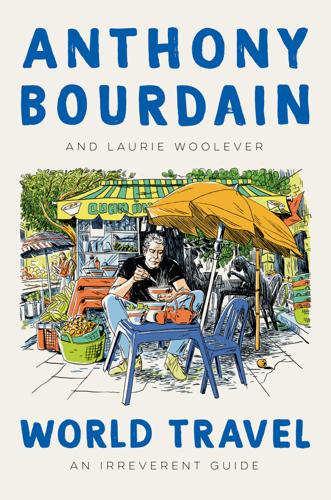
World Travel: An Irreverent Guide
by
Anthony Bourdain
and
Laurie Woolever
Published 19 Apr 2021
Slow-simmered curry, served with a side of sour soup made from roselle leaves. With it, you get fried, ground chilies, pickled bean sprouts—you get the idea.” SARABHA: Taunghi Villae of the Nyaung Oo Township, Tel +95 9968 172009 (entrées 5,500–8,500 kyat/US$3.50–$5.50) Nigeria Lagos * * * “Lagos: Nigeria’s megacity. One of the most dynamic, unrestrained, and energetic expressions of free-market capitalism and do-it-yourself entrepreneurship on the planet. Buy, sell, trade, hustle, and claw. Make your own way, any way you can. They say you have to have three hustles. “With a ridiculously overburdened infrastructure, [and] a history of egregiously bent leadership, they long ago learned, ain’t nobody going to help you in this world.
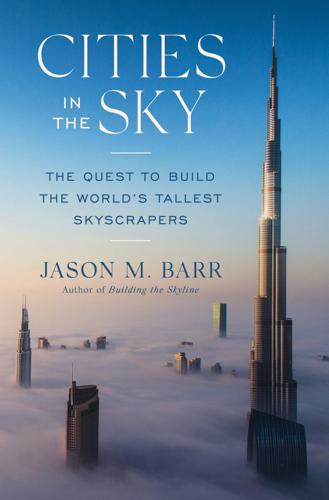
Cities in the Sky: The Quest to Build the World's Tallest Skyscrapers
by
Jason M. Barr
Published 13 May 2024
While the tower remains stalled, there are rumors that it will be restarted. One engineer I spoke with thought the delay was good since it’s better to have the infrastructure in place that can handle the tower. Another urbanization scheme, however, has emerged as a competitor with the JEC. MBS holds a special place for a new megacity called Neom, currently under construction along the Gulf of Aqaba. Neom is being designed as a model conurbation for Saudi’s future. Parts seem reasonable while others seem the product of an unchecked oil prince with too much money. All told, Neom will also have seven cities, each with its own focus.

The Hidden Globe: How Wealth Hacks the World
by
Atossa Araxia Abrahamian
Published 7 Oct 2024
“We are not in the eighteenth century, where the Western powers are carving up the world. This is a post–World War II, human rights universe,” she says. I have written at length in support of open borders. More than anything, I believe people should be allowed to live where they want to live, whether it’s in their ancestral village or in a megacity halfway across the world. I think national and international policies should make either option economically feasible. Few people, and fewer policymakers, share my views. In fact, most politicians would prefer people stay where they are. But they can’t, and won’t—and to keep people safe, fed, clothed, and healthy, to house people in the event of environmental disasters, and to insulate families from the cruel calculus of nationalistic electoral campaigns, we’re going to need more creative, accommodating, and generous rules than those on offer by the 192 nation-states of the world.
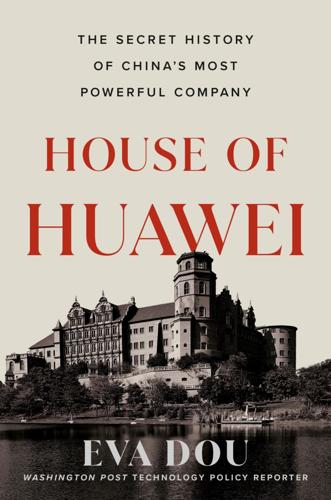
House of Huawei: The Secret History of China's Most Powerful Company
by
Eva Dou
Published 14 Jan 2025
They were all invited to come to China and meet Ren Zhengfei himself. It was the first time in his life that Huawei’s secretive founder had thrown open his doors to the foreign press. So it was with a great deal of intrigue, and a little trepidation, that the journalists arrived, one after another, in the megacity of Shenzhen on China’s southern coast. As they drove through the smoggy outskirts of Shenzhen, the sea of factories must have seemed to go on forever. There was one assembly line after another, churning out yo-yos, ziplock bags, scuba wet suits, electric toothbrushes, ultrasonic plastic welders, arch-support insoles, and everything in between.
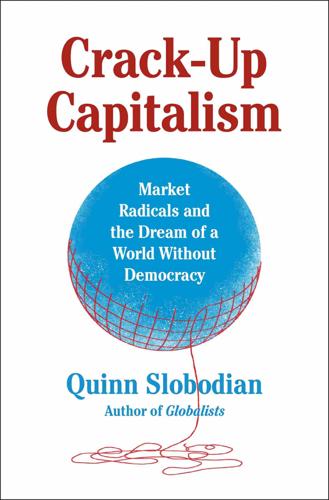
Crack-Up Capitalism: Market Radicals and the Dream of a World Without Democracy
by
Quinn Slobodian
Published 4 Apr 2023
Ian Palmer, “Is Saudi Arabia’s New Climate City ‘Neom’ Future or Fantasy?,” Forbes, February 28, 2022, https://www.forbes.com/sites/ianpalmer/2022/02/28/a-new-climate-city-in-a-big-oil-state—saudi-arabia—is-it-future-or-fantasy. 31. Simon Robinson, Samia Nakhoul, and Stephen Kalin, “Exclusive: New Saudi Mega-City Will Be Listed Publicly, Crown Prince Says,” Reuters, October 26, 2017, https://www.reuters.com/article/us-saudi-economy-mbs-interview-exclusive-idUSKBN1CV0ZM. 32. Merlyn Thomas and Vibeke Venema, “Neom: What’s the Green Truth Behind a Planned Eco-City in the Saudi Desert?,” BBC News, February 22, 2022, https://www.bbc.com/news/blogs-trending-59601335. 33.
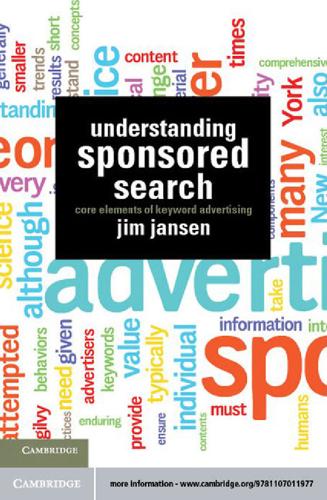
Understanding Sponsored Search: Core Elements of Keyword Advertising
by
Jim Jansen
Published 25 Jul 2011
However, with sponsored search, advertisers can specifically target individual consumers. What does the power law tell us? The power law describes phenomena where large events are rare, but small events are quite common. For example, there are a few very large earthquakes, but there are many small earthquakes. There are a few megacities, but there are many small towns. Within the English language, there are a few words (e.g., a, as, and, the) that occur very frequently, but there are many words that rarely occur (e.g. obdormition, tanquam). A power law is much different than the normal distribution, which many people are used to dealing with in statistics.
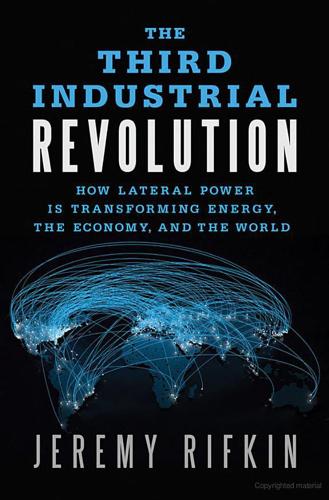
The Third Industrial Revolution: How Lateral Power Is Transforming Energy, the Economy, and the World
by
Jeremy Rifkin
Published 27 Sep 2011
In the United States, approximately 50.1 percent of total energy and 74.5 percent of electricity is consumed by buildings, which constitutes 49.1 percent of all US carbon-dioxide emissions.2 The extent of the habitat problem came home to us in 2007. The year marked a great milestone in the human journey. According to the UN State of the World’s Cities Report 2008/2009, for the first time in history, a majority of human beings were living in urban areas, many in megacities and suburban extensions with populations of 10 million or more.3 We have become Homo urbanus. Millions of people huddled together, stacked on top of each other in gigantic urban/suburban centers is a new phenomenon. Five hundred years ago, the average person on Earth might have met a thousand people in an entire lifetime.
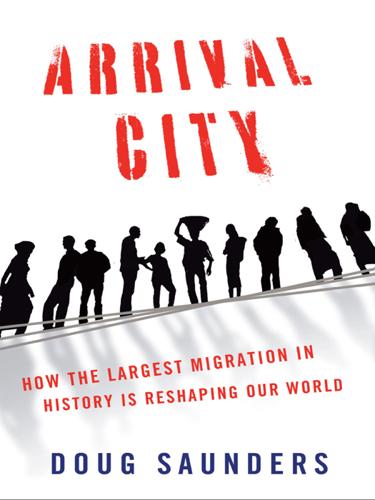
Arrival City
by
Doug Saunders
Published 22 Mar 2011
There is another, even more damaging popular myth about the arrival city, which holds its cluttered streets responsible for spiraling urban growth, overcrowding, and sprawl. People look at the new shantytowns covering the hillsides, the migrant neighborhoods being ploughed into forest, and they imagine that the tide of people from the countryside is creating unmanageable megacities. In fact, rural-to-urban migration, in spite of its huge scope, is not the major cause of urban growth. For each 60 million new city-dwellers in the developing world, 36 million are born to established city-dwellers. Only 24 million come from villages, and only half of these have actually migrated; the rest become urbanites because their village, like Liu Gong Li, has been incorporated into the city.8 Arrival cities are not causing population growth; in fact, they are ending it.
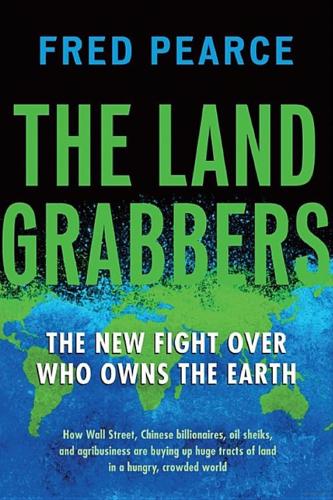
The Land Grabbers: The New Fight Over Who Owns the Earth
by
Fred Pearce
Published 28 May 2012
He returned with a promise of a billion dollars from Perigon Advisory, an investment fund based in Bahrain. For a while in 2009, Gulf investors showed signs of getting cold feet, as the credit crunch created the debt crisis that almost engulfed the region’s most visible totem of wealth, the desert megacity of Dubai. Some deals were quietly put on hold or dropped. Abu Dhabi’s Al Qudra Holding had promised in 2008 to acquire 1 million acres in a host of countries from Australia to Eritrea, Croatia to Thailand, and Ukraine to Pakistan. The first harvests, said CEO Mahmood Ebrahim Al Mahmood, would be shipped during 2011.
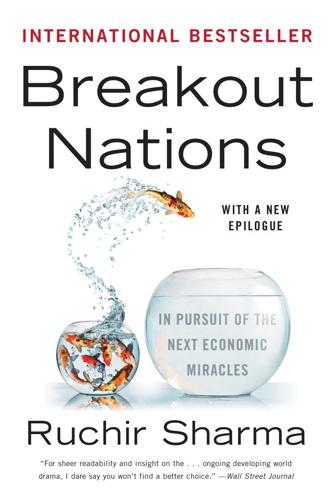
Breakout Nations: In Pursuit of the Next Economic Miracles
by
Ruchir Sharma
Published 8 Apr 2012
In fact Nigeria generates just 162 kilowatt hours per year per person, ranking 175th in the world; by comparison Mexico generates fourteen times more power per person, and Kazakhstan generates thirty times more. Economists who look at these factors call Nigeria “underinvested,” but visitors encounter it as just plain chaos; Lagos, one of the fastest-growing megacities in the world, has ten million people and counting. Visitors are jostled everywhere and constantly have to work around the power failures, which are likely to shut out the lights in the middle of meetings or trap the unprepared in elevators. Those in the know always take the stairs. The luxurious Federal Palace Hotel in Lagos has multiple backup generators, but the lights still go out for five to ten minutes a couple of times a day while the generators crank into operation.
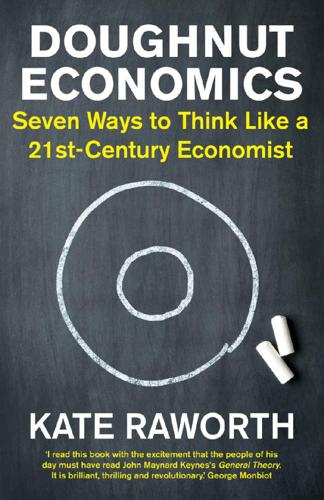
Doughnut Economics: Seven Ways to Think Like a 21st-Century Economist
by
Kate Raworth
Published 22 Mar 2017
Others like the Happy Planet Index, the Inclusive Wealth Index, and the Social Progress Index are now also aiming to create an alternative international family picture in which the biggest-GDP nations do not automatically appear centre frame. Other strategic initiatives have sought to bypass national rivalry by championing city-to-city collaboration instead. The C40 network, for instance, now connects more than 80 of the world’s megacities in a shared commitment to tackle climate change. Home to over 550 million people and 25% of World GDP, these cities – and their economic vision – will be profoundly influential far beyond their city limits.66 New games help, but the compulsion of the old GDP game holds its grip because GDP brings both global market power and global military power.
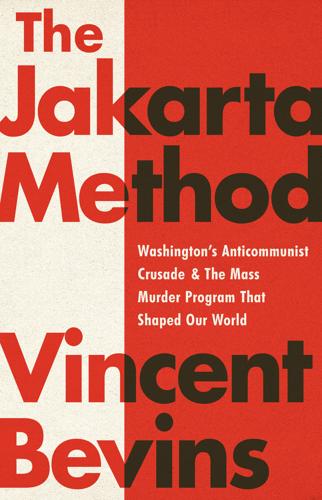
The Jakarta Method: Washington's Anticommunist Crusade and the Mass Murder Program That Shaped Our World
by
Vincent Bevins
Published 18 May 2020
The larger island of Java is one of the world’s most densely populated pieces of land, with a dazzling constellation of cities, many of which are thousands of years old, but Batavia was never an important city for any of its local kingdoms. It was an outpost of the major pepper port of Banten when the Dutch East India Company, one of the most important organizations in the development of both global capitalism and colonialism, took over in 1619.2 The mega-city that exists now was largely a Dutch construction, and it still feels different from the rest of Java. Francisca’s father thrived as an architect, and was able to afford a nice home in the city. He did so well, in fact, that Francisca was able to attend colonial school with Dutch children. At home, she loved to spend time in her father’s library, reading the children’s books he had bought for her.

Mbs: The Rise to Power of Mohammed Bin Salman
by
Ben Hubbard
Published 10 Mar 2020
The three-day event unfolded in a sprawling conference center next to the Riyadh Ritz-Carlton, and its 3,500 attendees included big-name money managers, corporate CEOs, investment bankers, and government officials from dozens of countries, making it a veritable Who’s Who of the global business elite. The center was filled with virtual rollercoasters, spherical holograms featuring roaring lions, and interactive robots. The kingdom used the event to announce three new megacities meant to represent its new direction. The first was a sprawling entertainment complex called Qiddiya to be built near Riyadh that would bring together movie theaters, concert venues, theme parks, and perhaps a space tourism site. The second was a sprawling eco-tourism project on the very islands that Branson had visited a few weeks before.
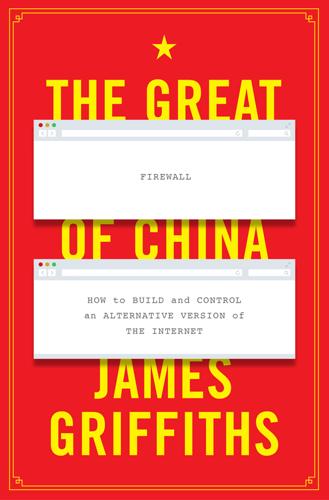
The Great Firewall of China
by
James Griffiths;
Published 15 Jan 2018
Dating back to the early years of the Tang Dynasty, the city is surrounded by some of the most stunning landscapes in China: sprawling red sandstone hills, lush greenery and giant outcrops carved by centuries of erosion. With just over a million people living within the city’s three main districts,1 Shaoguan was tiny by the standards of Guangdong province, less than a tenth the size of Shenzhen, the sprawling megacity to the south. Like its much larger neighbours, however, the city had been transformed by an influx of migrant workers from all over China, who moved from the provinces to seek employment in the hundreds of factories that sprang up in Guangdong as its GDP grew almost fivefold between the start of the millennium and 2010.2 In 2009, the Xuri Toy Factory in Shaoguan’s central Wujiang district employed around 16,000 migrant workers.3 Mostly in their teens or early twenties, they lived in cramped dorms, working long hours and sending much of their meagre paycheques home.
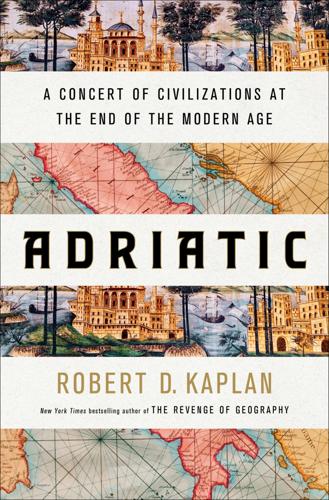
Adriatic: A Concert of Civilizations at the End of the Modern Age
by
Robert D. Kaplan
Published 11 Apr 2022
At a more profound and perhaps less obvious level, there is, as the French philosopher Pierre Manent intimates, a growing emphasis on city-states and the half-hidden traditions of empire, even while the problems of modern states increase.[17] I mean that powers such as the United States, China, Iran, and the European Union, while not officially empires, have many of the frustrations and challenges of former imperiums. Meanwhile, on almost all continents, cities grow into both megacities and region-states of their own. Isn’t this all, then, to a much more amplified and enlarged, high-tech extent, a version of early modernism? Just as the young Henry Kissinger saw an answer to the possibility of nuclear armageddon in the 1950s in concentrating on the post-Napoleonic court diplomacy of Metternich and Castlereagh, Noel Malcolm’s answer to where so-called postmodernism is heading is to concentrate on the early modern exploits of an extended, multinational family amid a world more multicultural and purely geopolitical than we realize.

Stuck: How the Privileged and the Propertied Broke the Engine of American Opportunity
by
Yoni Appelbaum
Published 17 Feb 2025
By the time McLean was looking at college, Rochester was, itself, a declining industrial city, and his father pushed him to move elsewhere. The geography of American opportunity had changed by then, and he headed back to North Carolina, landing a job in Charlotte. A book on the concentration of economic success into a handful of megacities seized his imagination. He moved to Washington, where he’s built a profitable development firm by tackling contentious projects—working to update the zoning of sites, changing plans to incorporate feedback from the community, and folding large numbers of affordable units into new developments. The fact that even EYA—a firm skilled at threading the needle of approval processes—has taken this long to move the Takoma project toward completion is not an encouraging sign.

Off the Rails: 10,000 Km by Bicycle Across Russia, Siberia and Mongolia to China
by
Chris Hatherly
and
Tim Cope
Published 31 Aug 2013
Shelves were overflowing with all sorts of tacky electronics. There were windows full of stationery, cookware and bedding. I came across one little shop that sold bikes and spare parts and ducked inside for a look. Packed onto the shelves between the narrow walls were all the things that we had simply not been able to find in the mega-cities of Siberia. There were thousands of patches and gallons of glue. There were chains and cogs – I even saw a gear-changer! I bought a few patches and some spare tubes, then headed back to Tim. We feasted on a delicious but indescribable snack from a nearby café and then, with the dreamed-of bitumen highway in clear view, we rode triumphantly out of town.

Radical Technologies: The Design of Everyday Life
by
Adam Greenfield
Published 29 May 2017
And in a neatly Borgesian maneuver, the touchscreen controller and the onboard RAM let us fold a map that would otherwise span some 30 miles from side to side, if the entire world were rendered at the highest level of detail, into an envelope small and light enough to be gripped in a single hand and carried everywhere. The maps we see on the screen of a smartphone help us rebalance the terms of our engagement with complex, potentially confounding spatial networks, allowing newcomers and tourists alike to negotiate the megacity with all the canniness and aplomb of a lifelong resident. By furnishing us with imagery of places we’ve never yet been, they can help to banish the fear that prevents so many of us from exploring unfamiliar paths or districts. They are the most generous sort of gift to the professional lover of cities, and still more so to everyone whose livelihood and wellbeing depends on their ability to master the urban terrain.
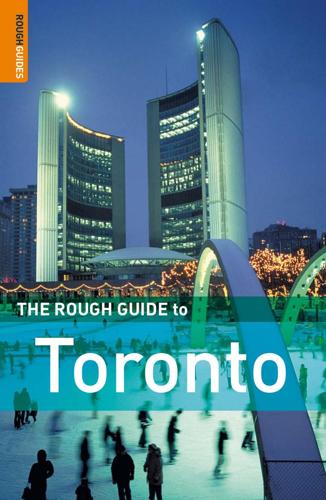
The Rough Guide to Toronto
by
Helen Lovekin
and
Phil Lee
Published 29 Apr 2006
The bicameral federal government meets at the nation’s capital, Ottawa, on the Ontario/Québec border. The city achieved its present geographical dimensions in 1998 when, much to the chagrin of many locals, the six semi-independent boroughs of what had been Metropolitan Toronto were merged into one megacity. Its combined population is around 2.3 million, making it the largest city in Canada by a long chalk – its nearest rival being Montréal, with some 1,800,000 inhabitants. reminder of the nineteenth-century city, its handsome neo-Romanesque stonework overlooking Roy Thompson Hall, the home of the Toronto Symphony Orchestra.

The Looting Machine: Warlords, Oligarchs, Corporations, Smugglers, and the Theft of Africa's Wealth
by
Tom Burgis
Published 24 Mar 2015
Source ISBN: 9780007523085 Ebook Edition © February 2015 ISBN: 9780007523115 Version: 2015-01-22 Dedication FOR MY MOTHER AND FATHER, FAND THEIR KITCHEN TABLE Author’s Note IN LATE 2010 I started to feel sick. At first I put the constant nausea down to a bout of malaria and a stomach bug I’d picked up during a trip a few months earlier to cover an election in Guinea, but the sickness persisted. I went back to the UK for what was meant to be a week’s break before wrapping up in Lagos, the Nigerian megacity where I was based as the Financial Times’s west Africa correspondent. A doctor put a camera down my throat and found nothing. I stopped sleeping. I jumped at noises and found myself bursting into tears. At the end of the week I was walking to a shop to buy a newspaper for the train ride to the airport when my legs gave way.
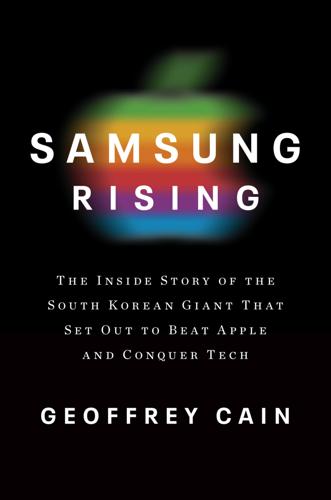
Samsung Rising: The Inside Story of the South Korean Giant That Set Out to Beat Apple and Conquer Tech
by
Geoffrey Cain
Published 15 Mar 2020
* * * — “I AM ASHAMED TO be Korean,” a shop owner named Mr. Park told me as he bagged my goods at a store around the corner from my apartment. Mr. Park’s convenience store—up the hill from the nearby U.S. military base—was the regular start of my hour-long morning walk through Seoul, a helter-skelter neon-lit megacity of brick homes, hills, and mountains. I would pass the military base and stroll through the rowdy drinking district of Itaewon, walking by the transgender prostitutes finishing assignations from the previous night, approaching the modern glass headquarters of Samsung’s in-house advertising agency, Cheil.

Fortune's Bazaar: the Making of Hong Kong: The Making of Hong Kong
by
Vaudine England
Published 16 May 2023
The Hidden Years: Hong Kong 1941–1945 (Hong Kong: South China Morning Post, 1967). ———. Hong Kong Cavalcade (Hong Kong: South China Morning Post, 1968). Lui Tai-Lok with Stephen Chiu. “Becoming a Chinese Global City: Hong Kong (and Shanghai) Beyond the Global-Local Duality,” in Xiangming Chen, ed., Shanghai Rising: State Power and Local Transformations in a Global Megacity (Minneapolis: University of Minnesota Press, 2009). Luk, Bernard Hung-kay. “Chinese Culture in the Hong Kong Curriculum: Heritage and Colonialism,” Comparative Education Review 35, no. 4 (November 1991): 650–68. Mak, Geert. De levens van Jan Six (Amsterdam: Atlas Contact, 2016). English translation by Liz Waters, The Many Lives of Jan Six: A Portrait of an Amsterdam Dynasty (Amsterdam: Atlas Contact, 2017).

What Technology Wants
by
Kevin Kelly
Published 14 Jul 2010
In a relatively small footprint, a city not only provides living quarters and occupations in a minimum of space, but it also generates a maximum of ideas and inventions. Stewart Brand notes in the “City Planet” chapter of his book Whole Earth Discipline, “Cities are wealth creators; they have always been.” He quotes urban theorist Richard Florida, who claims that forty of the largest megacities in the world, home to 18 percent of the world’s population, “produce two-thirds of global economic output and nearly 9 in 10 new patented innovations.” A Canadian demographer calculated that “80 to 90 percent of GNP growth occurs in cities.” The raggedy new part of each city, its squats and encampments, often house the most productive citizens.
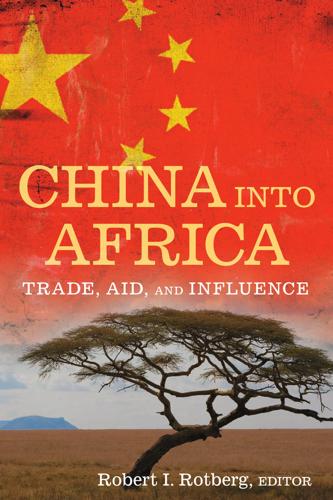
China into Africa: trade, aid, and influence
by
Robert I. Rotberg
Published 15 Nov 2008
Chinese Businesspeople: What Sort of Difficulties Have You Had in Doing Business in Lagos? Number responding 6 5 4 3 2 1 Power failure Insecurity Transport infrastructure Source: See note to figure 13-1. and poor transportation modes. Three respondents worried about “insecurity” and the “security problem” in Lagos, referring to the growing criminality in the megacity as well as to occasional political unrest. Another important clue toward a fuller understanding of the Chinese community in Lagos came in response to a question about how and why Chinese businesspeople decided to come to Nigeria. Personal ties seem to be the dominant link through which the Chinese are coming to work in Lagos: four of the eight indicated that family members had brought them to Nigeria, while an additional two said that friends had persuaded them to come.
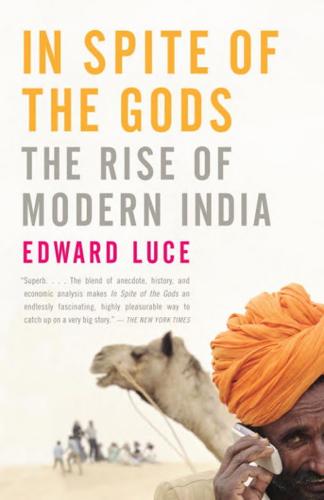
In Spite of the Gods: The Rise of Modern India
by
Edward Luce
Published 23 Aug 2006
As Sanjay Gandhi showed during the state of emergency in the 1970s, not only does simply throwing slum dwellers out of the city violate human rights, but it does not work either. People find a way of coming back in larger numbers. It is estimated that by 2026,26 New Delhi will be one of a handful of global megacities with a population of thirty million or more. “This is a vast, impossible city,” says Dikshit. “In my job you have to run and run in the hope you might stand still.” She concedes that the more infrastructure is improved, and the more jobs New Delhi can generate (in addition to the many it has created in recent years), the more people will want to move there.
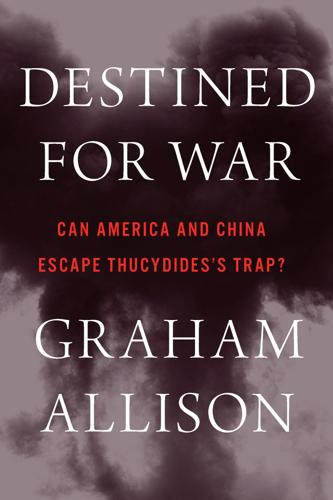
Destined for War: America, China, and Thucydides's Trap
by
Graham Allison
Published 29 May 2017
Looking back on his secret diplomatic mission to China in the early 1970s, Henry Kissinger—the secretary of state who played a key role in reopening China to the West—said, “Remembering China in 1971, if anyone had shown me a picture of what Beijing looks like and said in 25 years Beijing will look like this, I would have said that’s absolutely impossible.”27 The village of Shenzhen is today a mega-city of more than ten million people, with real estate prices that rival Silicon Valley’s. Former Australian prime minister Kevin Rudd, an astute China watcher, has described the country’s explosion as “the English Industrial Revolution and the global information revolution combusting simultaneously and compressed into not 300 years, but 30.”28 When Americans complain about how long it takes to build a building or repair a road, authorities often reply that “Rome was not built in a day.”

Ukraine
by
Lonely Planet
Designed as a kind of mini–St Petersburg, this grand city contrasts with the surrounding bucolic scenery and is well worth half a day’s exploration. The final stop of the express is Kharkiv, a huge student city of 1.5 million. Essential viewing here is the world’s second-largest city square, which is dominated by the mammoth, Stalinist-era Derzhprom building. From Kharkiv it’s a smooth roll south to another of Ukraine’s eastern megacities – Dnipropetrovsk – still a major centre for Ukraine’s rocket and aviation industries (so be careful what you aim your camera at!). Take a stroll by the Dnipro River before continuing south to Zaporizhzhya, an ugly industrial city but also the location of Khortytsya Island, where the Ukrainian Cossacks once gathered at the sich (fort).
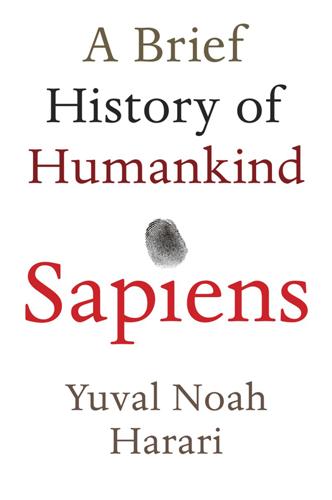
Sapiens: A Brief History of Humankind
by
Yuval Noah Harari
Published 1 Jan 2011
The flourishing field of evolutionary psychology argues that many of our present-day social and psychological characteristics were shaped during this long pre-agricultural era. Even today, scholars in this field claim, our brains and minds are adapted to a life of hunting and gathering. Our eating habits, our conflicts and our sexuality are all the result of the way our hunter-gatherer minds interact with our current post-industrial environment, with its mega-cities, aeroplanes, telephones and computers. This environment gives us more material resources and longer lives than those enjoyed by any previous generation, but it often makes us feel alienated, depressed and pressured. To understand why, evolutionary psychologists argue, we need to delve into the hunter-gatherer world that shaped us, the world that we subconsciously still inhabit.
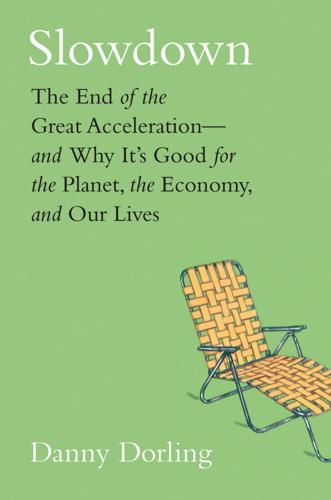
Slowdown: The End of the Great Acceleration―and Why It’s Good for the Planet, the Economy, and Our Lives
by
Danny Dorling
and
Kirsten McClure
Published 18 May 2020
It may appear at first an odd timeline to end on, but it is one of the clearest demonstrations of what a complete slowdown looks like—what the future will hold elsewhere as slowdown continues. It is not one of the originals drawn by Kawashima; it was made later by another academic, Ushijima Chihiro, and redrawn here in the style of all the other timelines in this book. It is the ROXY timeline of Tokyo—now the world’s most stable mega-city. The method does not always show convergence: for instance, Finland, when tested two decades ago, was still seeing a continued spatial concentration of population toward the center of Helsinki, and a continued spiraling around between suburbanization and concentration similar to Tokyo in earlier decades.23 However, in Japan, where the method was invented, it now appears to be showing convergence and a settling down.

Whole Earth: The Many Lives of Stewart Brand
by
John Markoff
Published 22 Mar 2022
“Stewart Brand has become a heretic to environmentalism, a movement he helped found, but he doesn’t plan to be isolated for long,” Tierney wrote. “He expects that environmentalists will soon share his affection for nuclear power. They’ll lose their fear of population growth and start appreciating sprawling megacities. They’ll stop worrying about ‘Frankenfoods’ and embrace genetic engineering.”[11] Despite the fact that Tierney had neatly summarized an obvious book idea, Brand was still focused on writing about how to be wealthy and socially responsible. The next day Brockman circulated a two-page proposal written by Brand for How to Be Rich Well.

Underland: A Deep Time Journey
by
Robert Macfarlane
Published 1 May 2019
The distant passage of trains vibrates the walls. Sleep takes time to arrive. Lying there with bedrock in all directions, I wonder at what will remain of our cities as the Anthropocene unfolds over deep time – the stratigraphic markers that will endure in the rock record. Over millions of years, the inland megacities of Delhi and Moscow will largely erode into sands and gravels, to be spread by wind and water into unreadable expanses of desert. The coastal cities of New York and Amsterdam, those claimed soonest by the rising sea levels, will be packed more carefully into soft-settling sediments. It is the invisible cities – the undercities – that will be preserved most cleanly, embedded as they already are within bedrock.

Red Moon
by
Kim Stanley Robinson
Published 22 Oct 2018
Now he was also seeing evidence that those people whose household registration was located in rural areas nearest to the growing cities were staying at home, even when formal jobs would have allowed them to change their registration into the cities. Presumably this was because they hoped to get paid to leave their land, to make room for urban development. So now rings of population stability surrounded all the fastest-growing cities, especially the Jing-Jin-Ji megacity, formerly a great source of migrant labor, now stabilized by anticipation. Both inside and outside these rings the movement was as turbulent as ever, violent crosscurrents of exploitation and suffering, the ultimate result of sannong weiji, the three rural crises, which were behind all the migration out of the rural areas: that people’s lives were bitter, that the countryside was really poor, that agriculture was in crisis.
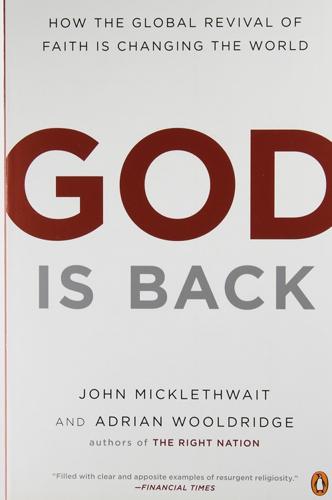
God Is Back: How the Global Revival of Faith Is Changing the World
by
John Micklethwait
and
Adrian Wooldridge
Published 31 Mar 2009
Today they are competing for converts in areas of the world, like the road from Kano to Jos, that are already explosive. Across the global south, their main theater of conflict, populations are growing faster than the resources to support them and the average age is getting younger. People are abandoning their traditional villages for ramshackle megacities (the home of half the people of the Middle East, for instance). Large numbers of young men have few traditional structures to keep them under control. Governments in many places are incapable of providing security and welfare services, leaving their unstable and rootless populations ripe for recruitment by religious entrepreneurs.

Rule Britannia: Brexit and the End of Empire
by
Danny Dorling
and
Sally Tomlinson
Published 15 Jan 2019
In the late 1980s, that is what happened to the USSR, with Russia left as a weakened country, dominated by Moscow. The Ottoman Empire disintegrated after the First World War, with a little help from Western imperialists splitting its dominions up between them. Istanbul is today one of the three mega-cities on the edge of Europe because of that legacy, the other two being Moscow and London. There is no oversized city within Europe in between these three. They are the three most populous cities of Europe because they are each the former heart of a bygone empire. Britain has the opportunity to buck the trend if it accepts that its empire status and pretensions are truly over, but the portents are not good.
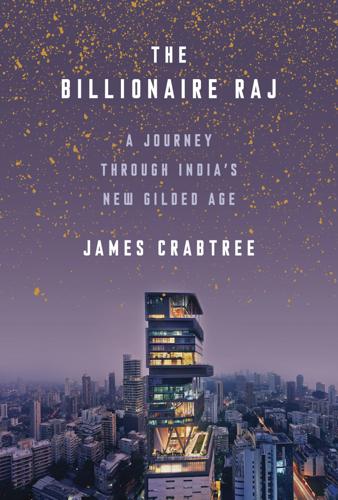
The Billionaire Raj: A Journey Through India's New Gilded Age
by
James Crabtree
Published 2 Jul 2018
But his image was dwarfed by the party’s modern icon: Jayaram Jayalalithaa, a diminutive but powerful woman, whose unsmiling face stared down from four giant billboards, one of which stood almost as tall as the building itself. The commercial capital of the south, Chennai had a different vibe from the rest of urban India. It was still a megacity, with seven million people and steamy, fetid weather, but the pace was slower than in Mumbai or New Delhi, with a downtown of hushed streets and low-rise buildings, rather than half-finished glass towers. The local elite viewed themselves differently too: a people who rose early, spent frugally, and venerated pursuits of the mind, from calculus to “Carnatic” classical music.

The Lonely Century: How Isolation Imperils Our Future
by
Noreena Hertz
Published 13 May 2020
See photo by Jonathan Bachman, Reuters, at https://www.nytimes.com/slideshow/2017/02/13/blogs/the-worlds-best-photo/s/13-lens-WPress-slide-JSQ0.html. 45 Keiko Morris and Elliot Brown, ‘WeWork Surpasses JPMorgan as Biggest Occupier of Manhattan Office Space,’ Wall Street Journal, September 18 2018, https://www.wsj.com/articles/wework-surpasses-jpmorgan-as-biggest-occupier-of-manhattan-office-space-1537268401; ‘WeWork Locations,’ archived November 2017, https://www.wework.com/locations. 46 ‘The We Company’, United States Securities and Exchange Commission, 14 August 2019, https://www.sec.gov/Archives/edgar/data/1533523/000119312519220499/d781982ds1.htm. 47 Rani Molla, ‘“Co-living” is the new “having roommates” – with an app’, Vox, 29 May 2019, https://www.vox.com/recode/2019/5/29/18637898/coliving-shared-housing-welive-roommates-common-quarters. 48 Henny Sender, ‘Investors embrace millennial co-living in Asia’s megacities’, Financial Times, 28 January 2020, https://www.ft.com/content/c57129f8-40d9-11ea-a047-eae9bd51ceba. 49 ‘Coliving is city living made better’, Common, https://www.common.com; Society, http://oursociety.com; ‘Join the global living movement’, The Collective, https://thecollective.com; Winnie Agbonlahor, ‘Co-living in London: Friendship, fines and frustration,’ BBC, April 24, 2018, https://www.bbc.com/news/uk-england-london-43090849. 50 Common, https://www.common.com/why-common/; ‘The 4 Co’s of Coliving’, Ollie, https://www.ollie.co/coliving. 51 Jessica Burdon, ‘Norn: the offline social network reviving the art of conversation’, The Week, 30 April 2018, https://www.theweek.co.uk/93266/norn-the-offline-social-network-reviving-the-art-of-conversation; Annabel Herrick, ‘Norn rethinks co-living for a new generation of nomads’, The Spaces, https://thespaces.com/introducing-norn-the-startup-taking-co-living-to-new-heights/. 52 See comment at: https://news.ycombinator.com/threads?

Southeast Asia on a Shoestring Travel Guide
by
Lonely Planet
Published 30 May 2012
Indonesia Highlights Surfing by day, partying at night and absorbing amazing culture in Bali (Click here) Ascending the ancient Buddhist stupa of Borobudur (Click here) before trawling the batik markets of bustling Yogyakarta (Click here) Peeking at komodo dragons at Komodo (Click here) in Nusa Tenggara Paying primate-to-primate respects to the ‘man of the jungle’, the orang-utans (Click here) native to Sumatra and Kalimantan Diving the pristine walls and coral canyons beneath seas of dimpled glass at Pulau Bunaken (Click here) in Sulawesi Exploring the lovely time capsule that is Maluku’s Banda Islands (Click here) Hiking along raging rivers and scaling exposed ridges to reach interior Papua’s remote tribal villages in the Baliem Valley (Click here) JAVA The heart of the nation, Java is an island of megacities and mesmerising natural beauty. It’s the economic powerhouse of Indonesia, as well as the political epicentre, an island with complex, profound cultural traditions in art, dance, spiritualism and learning. Many of the cities are pretty uninspiring; pollution levels are high and they’re plagued by environmental issues.
…
There are buses to Bogor from Cianjur (without/with air-con 14,000/20,000Rp, two hours) and the highway by Cipanas every 20 minutes; angkot ply the route on Sundays. * * * BANDUNG Big, burly Bandung is like a bat to the back of the head after the verdant mountains around Cibodas. Once dubbed the ‘Paris of Java’, this is one of Indonesia’s megacities (the Bandung conurbation has over seven million inhabitants), with a city centre that’s prone to Jakarta-style congestion. Few travellers make a concerted effort to come here, but rummage through the concrete sprawl and odd pockets of interest remain, including some Dutch art-deco monuments, the quirky fibreglass statues of Jeans St, and some cool cafes popular with the thousands of students who call this city home.
…
Philippines Highlights Drift among the limestone cathedrals and azure lagoons of the Bacuit Archipelago around El Nido (Click here) Trek through the skyscraping rice terraces around Banaue (Click here)and Bontoc (Click here) in North Luzon’s Cordillera Mountains Have a night out in Manila (Click here), a city that never sleeps Explore sunken WWII wrecks and kayak amid the myriad islands around Coron (Click here) Sun, sea sports and dancing till dawn on the stunning beaches of Boracay (Click here) Hop from natural spring to coral reef, to volcano, to waterfall around lush Camiguin Island (Click here) Discover unheralded Dumaguete (Click here), in range of an enviable mix of adventures and getaways Take Cebu (Click here) by storm: partying in Cebu City, then detoxing on idyllic Malapascua Island MANILA 02 / POP 11.5 MILLION Manila’s moniker, the ‘Pearl of the Orient’, couldn’t be more apt – its cantankerous shell reveals its jewel only to those resolute enough to pry. No stranger to hardship, the city has endured every disaster both man and nature could throw at it, and yet today the chaotic 600-sq-km metropolis thrives as a true Asian megacity. Skyscrapers pierce the hazy sky, mushrooming from the grinding poverty of expansive shantytowns, while gleaming malls foreshadow Manila’s brave new air-conditioned world. The congested roads snarl with traffic, but like the overworked arteries of a sweating giant, they are what keep this modern metropolis alive.

Lonely Planet Turkey (Travel Guide)
by
Lonely Planet
,
James Bainbridge
,
Brett Atkinson
,
Steve Fallon
,
Jessica Lee
,
Virginia Maxwell
,
Hugh McNaughtan
and
John Noble
Published 31 Jan 2017
Hatay Archaeology Museum Reopened in new premises that do justice to Antakya’s great collection of classical mosaics. Cities Turks are a regionalist bunch; they will invariably tell you their town is en çok güzel (the most beautiful) – but these are the best places to experience urban Turkey. İstanbul The world’s only city on two continents, the megacity was once the capital of empires. Antalya The classically beautiful and stylishly modern gateway to the Turkish Riviera. İzmir Turkey’s third-largest city is right on the Aegean; its kordon (seafront promenade) is a joy. Antakya (Hatay) The site of the biblical Antioch has a distinctively Arabic feel.
…
While there are many constants throughout Turkey and the food is certainly excellent everywhere, this is an incredibly diverse country offering varied experiences. Each region has its own charms, so choose wisely and you could find yourself hiking across snowy mountains in wild northeastern Anatolia, sauntering through cosmopolitan İstanbul or sunbathing on a Mediterranean beach. Regions at a Glance İstanbul Imperial Grandeur The megacity formerly known as Constantinople and Byzantium was the capital of a series of empires. The Aya Sofya, a church-turned-mosque-turned-museum, is the grandest remnant of the Byzantine Empire; Ottoman landmarks include the Blue Mosque and Topkapı Palace. Beyoğlu Bars Beyoğlu is an exhilarating melting pot between the dusk and dawn calls to prayer, when up-for-it crowds swirl through its hole-in-the-wall cocktail bars, rooftop watering holes, pedestrian precincts and bohemian nightclubs.

Spin
by
Robert Charles Wilson
Published 2 Jan 2005
* * * * * It was a nuanced courtship, slow, old-fashioned (or semi-Martian, perhaps), during which Diane and I discovered each other in wholly new ways. We were no longer straitjacketed by the Spin nor were we children blindly seeking solace. We fell in love, finally, as adults. These were the years when the global population topped out at eight billion. Most of that growth had been funneled into the expanding megacities: Shanghai, Jakarta, Manila, coastal China; Lagos, Kinshasa, Nairobi, Maputo; Caracas, La Paz, Tegucigalpa—all the firelit, smog-shrouded warrens of the world. It would have taken a dozen Archways to dent that population growth, but crowding drove a steady wave of emigrants, refugees, and "pioneers," many of them packed into the cargo compartments of illegal vessels and more than a few of them delivered to the shores of Port Magellan already dead or dying.
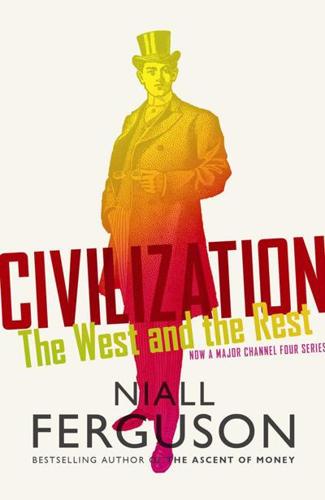
Civilization: The West and the Rest
by
Niall Ferguson
Published 28 Feb 2011
If present rates persist, China’s economy could surpass America’s in 2014 in terms of domestic purchasing power and by 2020 in current dollar terms.22 Indeed, in some ways the Asian century has already arrived. China is on the brink of surpassing the American share of global manufacturing, having overtaken Germany and Japan since the new century began. China’s biggest city, Shanghai, is already far larger than any American city and sits atop a new league table of non-Western megacities. In sheer numbers, of course, Asia has long been the world’s most populous region. But the rapid growth of Africa’s population makes the decline of the West a near certainty. In 1950 the West as defined by Samuel Huntington – Western Europe, North America and Australasia – accounted for 20 per cent of the world’s population.
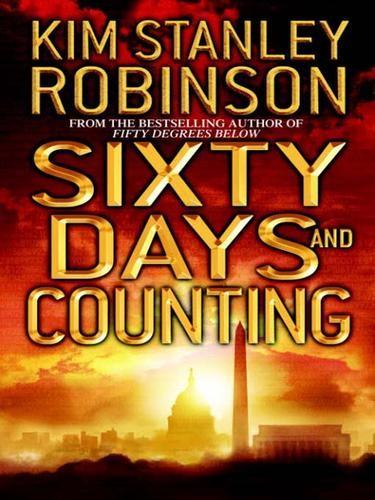
Sixty Days and Counting
by
Kim Stanley Robinson
Published 27 Feb 2007
It was the impact of all the other economic activity that was the danger, including strip-mining, coal power generation, deforestation, urbanization of river valleys, cement production and steel manufacturing, and use of dangerous pesticides banned elsewhere. All these factors were combining downstream, in the eastern half of the country, impacting the big river valleys and the coasts, and the many megacities that were covering what farmland they had. Fengzhen said many were seeing signs of a disaster unfolding. Cumulative impacts, Anna thought with a sigh. That was one of the most complex and vexing subjects in her own world of biostatistics. And the Chinese problem was an exercise in macrobiostatistics.
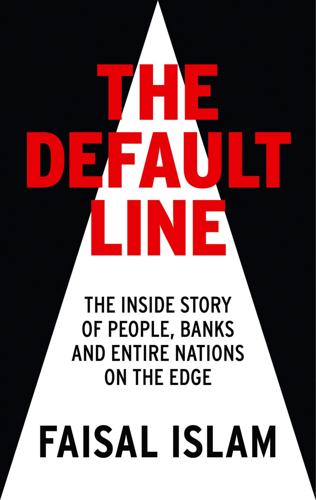
The Default Line: The Inside Story of People, Banks and Entire Nations on the Edge
by
Faisal Islam
Published 28 Aug 2013
If this project goes to plan and overcomes local planning concerns in Liverpool, there is a remarkable prize. The developers happen to own the Manchester Ship Canal, and are tilting the marketing of their project to meet the appetite for Chinese-style mega-investments of tens of billions of pounds. Think Chinese funding for a mega-city connecting Liverpool and Manchester, and you might begin to understand the ambition and the spoils that are up for grabs. This is the sort of scale of project that is required by Chinese financiers used to funding ports built on artificial islands, 30-kilometre bridges, and entire new cities. When I asked Jin Liqun of the China Investment Corporation if China was going to pay for Britain’s infrastructure, he giggled like one of the more avuncular Bond villains.

Seapower States: Maritime Culture, Continental Empires and the Conflict That Made the Modern World
by
Andrew Lambert
Published 1 Oct 2018
The success of Crete and Ugarit demonstrated that, although the great land powers could control territory, they could not control the sea or the maritime cities that delivered key resources.19 Sea states bartered trade and tribute for relative independence. However, everything depended on benign trading conditions. Cretan trade with the Hyksos kingdom of Egypt, based in the Nile Delta at Avaris, the commercial mega-city of the era, proved short-lived. Nilotic Egyptian elites at Thebes destroyed the Hyksos, their capital and the connection with Mediterranean trade, shifting power back to the centre of the country, and restoring old inward-looking cultural models. The economic impact of these changes may explain why Cretan society ceased to be sea-based around 1500 BC, when mainland agendas from Mycenean Greece became dominant.
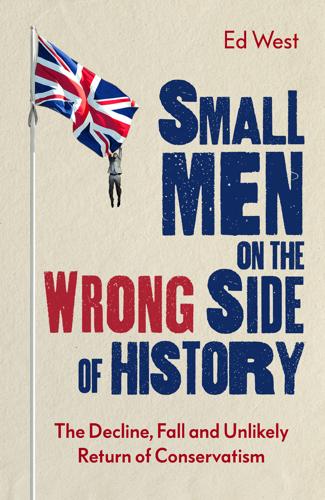
Small Men on the Wrong Side of History: The Decline, Fall and Unlikely Return of Conservatism
by
Ed West
Published 19 Mar 2020
A 2019 study of the most and least politically intolerant counties in America found almost all to be Democrat, with Boston, Massachusetts, the most prejudiced and unforgiving to people with different views;15 and so unfortunately William Buckley’s famous quip that he’d rather be ruled by the first five hundred people in the Boston phonebook than the faculty of Harvard is rather out of date. Perhaps the growth of cities and megacities, while initially leading to the rise of liberal tolerance, eventually creates a less forgiving environment. Conservatism is rural, and liberalism is urban, yet people in cities are less open-minded in some ways, because they can find their clique or niche. If you live in a small town you’re basically stuck with a group of people with whom you’ve got little in common and so you just learn to accept people’s differences.
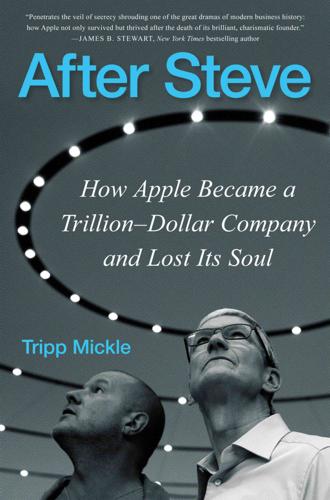
After Steve: How Apple Became a Trillion-Dollar Company and Lost Its Soul
by
Tripp Mickle
Published 2 May 2022
Chapter 10 Deals The United Airlines jumbo jet hurtled westward over the Pacific Ocean, carrying Tim Cook and other prospectors hungry to do business in Beijing. By 2014, China had solidified its place as the world’s preeminent growth market. Farmers across the country had uprooted from their tiny rural outposts and migrated to megacities that were exploding with higher-paying jobs and frenzied construction. A half dozen of them were as big as or bigger than New York. Brand-conscious consumers were spending more on Huggies diapers and Penfolds Cabernet Sauvignon than were people in the United States. Every day, planes ferried executives from California and beyond to the threshold of Tiananmen Square, where they eagerly worked the halls of power to extract a sliver of the country’s commercial boom.
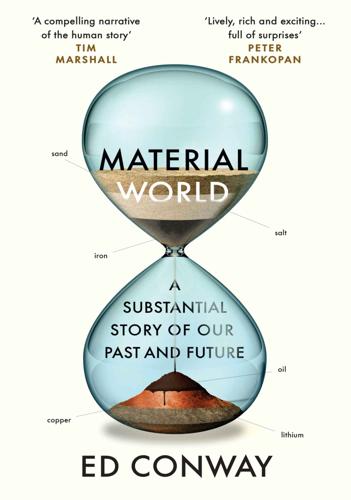
Material World: A Substantial Story of Our Past and Future
by
Ed Conway
Published 15 Jun 2023
To put that slightly meaningless number into perspective, it is considerably more than the combined weight of every single living thing on the planet: every cow, every tree, every human, plant, animal, bacterium and single-celled organism. Each year we produce enough concrete around the world to cover the entire landmass of England.20 For a sense of what this means in practice, consider Tianjin, a megacity of 15 million people that sprawls all the way from the coastline to within touching distance of Beijing. This place used to be famed for the salt produced in the ponds on the coast and traded far and wide, but these days it is renowned for having covered its urban area with an almost imponderable amount of concrete.

Lonely Planet Mongolia (Travel Guide)
by
Lonely Planet
,
Trent Holden
,
Adam Karlin
,
Michael Kohn
,
Adam Skolnick
and
Thomas O'Malley
Published 1 Jul 2018
We share Tony’s belief that ‘a great guidebook should do three things: inform, educate and amuse’. Our Writers Trent Holden Curator; Ulaanbaatar & Central Mongolia A Geelong-based writer, located just outside Melbourne, Trent has worked for Lonely Planet since 2005. He’s covered 30 plus guidebooks across Asia, Africa and Australia. With a penchant for megacities, Trent’s in his element when assigned to cover a nation’s capital – the more chaotic the better – to unearth cool bars, art, street food and underground subculture. On the flipside he also writes books to idyllic tropical islands across Asia, in between going on safari to national parks in Africa and the subcontinent.

Hope Dies Last: Visionary People Across the World, Fighting to Find Us a Future
by
Alan Weisman
Published 21 Apr 2025
Interested in technologies they might develop, Chen invited them to Tahiti, but their “aquapreneur” manifestos—to “leave behind archaic governments which assert control over their citizens”—wasn’t what he felt was realistically needed. Buckminster Fuller’s ideas, he believed, were ready for the 21st century. “Around the world,” he told the UN’s Itai Madamombe when they met, “3 million people a week move into cities. Nine of the world’s 10 megacities, where they mainly go, are coastal. That means in the next 30 years we’ll need to double the amount of real estate: two-and-a-half-trillion square feet of built environment. With shorelines being swallowed, there’s only one way to do that.” The occasion was the 2017 United Nations Ocean Conference in Fiji, which Madamombe, who specialized in multinational water partnerships, had helped organize.

Eastern USA
by
Lonely Planet
Or, visit http://media.lonelyplanet.com/ebookmaps and grab a PDF download or print out all the maps in this guide. Plan Your Trip Welcome to Eastern USA Top Experiences Need to Know If You Like... Month by Month Itineraries Road Trips & Scenic Drives Travel with Children Regions at a Glance Top of section welcome to Eastern USA Flanked by mega-cities New York City and Chicago; landscaped with dune-backed beaches, smoky mountains and gator swamps; and steeped in musical roots, the East rolls out a sweet trip. Times Square (Click here), New York City RICHARD I’ANSON/LONELY PLANET IMAGES © Mighty Metropolises New York, New York is top of the heap, as Frank Sinatra famously crooned.
…
Eating »Get messy eating scrumptious Maryland blue crabs at open-air restaurants along Chesapeake Bay. »Turn the clock back a few generations at the retro 1950s Ellen’s Stardust Diner in NYC. »Heft a slice of deep-dish pizza (and scrawl your name on the wall) at Gino’s East in Chicago. Top of section regions at a glance New York City is the East’s hub. More than eight million inhabitants pile into the megacity, a world center for fashion, food, arts and finance. The crowd thins out in neighboring New Jersey and Pennsylvania, where beaches, mountains and literal horse-and-buggy hamlets join the landscape. New England arches north to rocky shores, clapboard fishing villages and Ivy League universities. The Capital Region begins the march south through voluptuous valleys and a slew of historic sites.
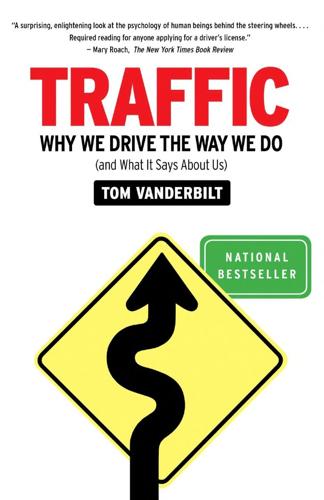
Traffic: Why We Drive the Way We Do (And What It Says About Us)
by
Tom Vanderbilt
Published 28 Jul 2008
While riding on the streets of Lagos, Packer’s driver was stopped by an agbero, who demanded money to help the driver negotiate another bribe, with the official traffic police. The traffic cop intervened, if only to collect the bribe—not doing so, it seemed, would actually make the police officer look as if he were derelict in his duty. See George Packer, “The Megacity: Decoding the Chaos of Lagos,” New Yorker, November 26, 2006. See also Adewale Ajayi, Nigerian Tribune, March 2, 2007; and Osise Dibosa, “Olubunmi Peters and Ferma,” This Day, June 12, 2007. take their place: Benjamin A. Olken and Patrick Barron, “The Simple Economics of Extortion: Evidence from Trucking in Aceh,” NBER Working Paper No. 13145, National Bureau of Economic Research, June 2007.

MacroWikinomics: Rebooting Business and the World
by
Don Tapscott
and
Anthony D. Williams
Published 28 Sep 2010
There are exciting developments in the arts today, such as how arts organizations are embracing collaboration through the invention of new art forms. Our faith and religion are moving into a period of change and smart leaders know this. Sunlight has exposed Catholic priests and bishops around the world and churches everywhere are coming to grips with concepts of transparency and integrity. The world’s cities are also under stress, with megacities such as São Paulo and Johannesburg paralyzed by population influx, lack of infrastructure, traffic congestion, pollution, and crime. In the United States and elsewhere, many cities built up since the Second World War are dysfunctional and getting worse as the industrial economy collapses. Detroit has lost more than half its population from its heyday, with large swaths of the city now wasteland, populated by wild animals.20 Yet everywhere there are bold new collaborative initiatives for reinvention.

Likewar: The Weaponization of Social Media
by
Peter Warren Singer
and
Emerson T. Brooking
Published 15 Mar 2018
Just as the internet has changed the volume, source, and availability of content, it also has wrought dramatic changes in how this information is used. THE ELECTRIC BRAIN AWAKENS The ten killers snuck into Mumbai’s port aboard inflatable boats on November 26, 2008. Once ashore, they split up, fading into the megacity of some 18 million people. The attacks started soon after: a staccato of massacres at a railway station, a tourist café, a luxury hotel, and a synagogue. Over the next three days, 164 civilians and police officers would be killed. Another 300 would be injured. The tragedy would mark the deadliest Indian terror attack in a generation.
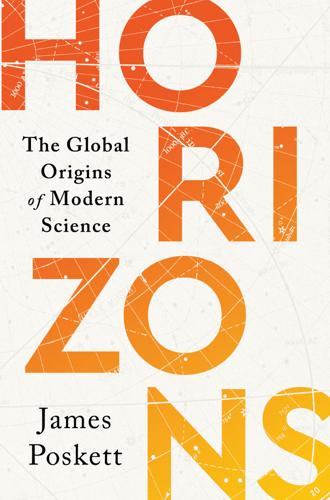
Horizons: The Global Origins of Modern Science
by
James Poskett
Published 22 Mar 2022
Aztec architects had designed the temple to align perfectly with the rising and setting of the Sun on key feast days. Moctezuma himself would attend ceremonies, praising the gods and offering tribute in the form of flowers, animal skins, and sometimes human sacrifice. By the middle of the fifteenth century, Tenochtitlan had grown to an unprecedented size. With a population of over 200,000, this Aztec megacity was much larger than most European capitals, including London and Rome. Over the following decades, the Aztec Empire continued to expand, stretching right across the Mexican plateau and incorporating over three million people.3 All this was made possible thanks to the advanced state of Aztec science and technology.
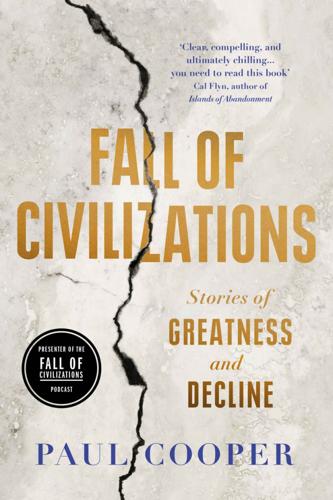
Fall of Civilizations: Stories of Greatness and Decline
by
Paul Cooper
Published 31 Mar 2024
And beyond all that, at the center of the immense horizontal line of galleries on the first foundations, above motionless palms and rising shadows, the staggering mass and its five conical towers bathed in sunlight.3 Of all the ruined sites of the world, few have captured the imaginations of travellers as completely as the remains of the Khmer Empire, a power that ruled a large part of South East Asia from the ninth to the fifteenth century, and covered much of Cambodia and Thailand, and parts of Vietnam and Laos. At the heart of this empire was the megacity of Angkor. Satellite imaging has revealed that during its peak in the eleventh to thirteenth centuries, this city covered an area of over 1,000 square kilometres, larger than New York City today, and its wider agricultural area is thought to have supported at least 1 million people, or 0.25 per cent of the world’s population at that time.

Aftershocks: Pandemic Politics and the End of the Old International Order
by
Colin Kahl
and
Thomas Wright
Published 23 Aug 2021
As a consequence of overcrowding, measures such as social distancing are nearly impossible to execute. Consider Dhaka: the city itself has more than 10 million residents, and 21.5 million people live in the greater Dhaka area, making it one of the most densely populated cities on the planet. Around 4 million people inhabit more than 5,000 slums scattered around the megacity, with around 75 percent of those households constrained to a single room. In these sprawling shantytowns, sanitation is abysmal and the spread of communicable diseases commonplace—perfect conditions for the rapid spread of a deadly virus.3 The country’s health care system was also in no position to handle a major outbreak.

Never Bet Against Occam: Mast Cell Activation Disease and the Modern Epidemics of Chronic Illness and Medical Complexity
by
Lawrence B. Afrin M. D.
,
Kendra Neilsen Myles
and
Kristi Posival
Published 15 Jan 2016
Tellingly, in megaloblastic anemia the red blood cells become very large and thus the average size of the red blood cells (i.e., the mean corpuscular volume, or MCV) rises greatly compared to normal, and many of the neutrophils take on an odd appearance with five or more lobes to their nuclei instead of the usual three or four. The blood cell precursors in the megaloblastic bone marrow can look so weird that doctors sometimes can be fooled into thinking that a leukemia is present. Megestrol acetate “Meh´-ges-trol as´-eh-tāt.” Probably more widely known by its most popular U.S. trade name Megace (“Meg´-ās”), megestrol acetate is a drug that has some chemical similarity, and thus some similarity in biological action, to the natural hormone progesterone. Megestrol acetate is commonly used to help stimulate appetite in patients who suffer from poor appetite for various reasons, but it’s not entirely clear that this effect on appetite is reliable, and megestrol acetate has other disadvantages including increasing the risk for abnormal clotting.

The Ministry for the Future: A Novel
by
Kim Stanley Robinson
Published 5 Oct 2020
He thought about that for a while. He walked a lot, it was easy in Zurich, a form of entertainment. That was true in many cities, as far as he knew. There were a few that were unwalkable, like Los Angeles, for which planners had struggled to invent new names, like conurbation or agglomeration or megacity; but in most cities walking still worked, at least in their central districts and their various nodes. Anyway it was no great deprivation to get back on foot, if you lived in a city like Zurich. Of course it was good to get out of town sometimes, see something different. That meant trains and trams, but the watts used could be calculated there too; the 2,000 Watt Society had provided its members with lots of graphs to estimate individual use.

Power and Progress: Our Thousand-Year Struggle Over Technology and Prosperity
by
Daron Acemoglu
and
Simon Johnson
Published 15 May 2023
At the end of four weeks, traffic flow had improved significantly at the intersection, with no increase in accidents or injuries. Portishead is no outlier. Several other experiments with such “naked streets” show similar results. There is a debate on the practicality of naked streets in large cities, and a complete lack of traffic lights is unlikely to be workable at the busiest intersections in megacities. Nevertheless, it is hard not to conclude from these experiments that technology, by taking away initiative and judgment from humans, sometimes makes things worse, not better. The same is true when it comes to production tasks. Human intelligence derives its strength from being situational and social: The ability to understand and successfully respond to one’s environment, enabling individuals to fluidly adapt to changing conditions.

Slouching Towards Utopia: An Economic History of the Twentieth Century
by
J. Bradford Delong
Published 6 Apr 2020
Although I have said that this “second unbundling” process transferred manufacturing to the global south, that is not quite right. High-tech global manufacturing went to Korea, so much so that Korea is now a full member of the global north, alongside Japan, as well as Taiwan. It went, above all, to parts of China—but specifically to the growth-pole megacities of the Pearl River Delta, Shanghai, and Beijing, and secondarily to the coasts, but not to the interior. It also went to India—but overwhelmingly to Maharashtra and Karnataka, not to Uttar Pradesh. It went to Indonesia, Thailand, and Malaysia, and is now going to Vietnam. It went to Poland, next door to the manufacturing powerhouse of Germany, whose firms found enormous benefits in spreading out their value chains to make use of the low-wage labor found next door.

The Bill Gates Problem: Reckoning With the Myth of the Good Billionaire
by
Tim Schwab
Published 13 Nov 2023
“part of any grant agreement”: David Bank, who runs the media site ImpactAlpha, reports having signed a nondisclosure agreement (NDA) when he worked with the foundation on a reporting project. David Bank, “What Went Wrong in Gates Foundation Investment in $1 Billion Healthcare Fund for 21st-Century Megacities?,” Medium (blog), June 16, 2018, https://medium.com/@davidmbank/abraaj-group-liquidation-tests-champions-of-sustainable-development-goal-3-73ea53728669. confidentiality agreements: Gabriel Sherman, Nick Bilton, and Emily Jane Fox, “Bill and Melinda Gates’s Epic Divorce Saga Enters Its Next Phase,” Vanity Fair, June 7, 2021, https://www.vanityfair.com/news/2021/06/bill-and-melinda-gates-divorce-saga-next-phase.

Drink: A Cultural History of Alcohol
by
Iain Gately
Published 30 Jun 2008
This blizzard of print was directed at white Protestant men and women in the old western and northeastern states. These people were believed to resent the changes that were occurring in America and to be ready to accept that drunkenness might be behind such phenomena as industrialization, the rise of megacities, and their population with hordes of Roman Catholic immigrants. In consequence, ASL periodicals, pamphlets, and its touring speakers made eugenics a central theme in their case against drink. The speakers peppered their discourses with racism and images of the decline of the breed. According, for example, to Richmond Pearson Hobson, the ASL’s star orator, “In America we are making the last stand of the great white race, and substantially of the human race.
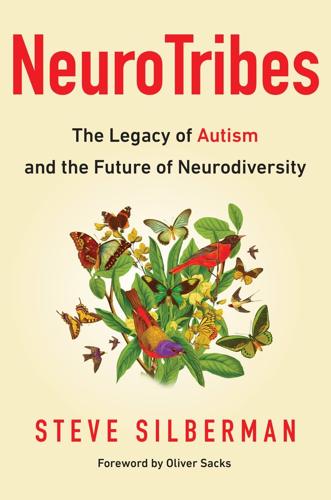
NeuroTribes: The Legacy of Autism and the Future of Neurodiversity
by
Steve Silberman
Published 24 Aug 2015
This race of elegant mutants was the creation of a twenty-first-century biologist named Samuel Lann, who began his project by experimenting on his own children. The conceptual breakthrough of Slan was portraying “normal” human beings not as saviors but as the enemy. As the story opens, the book’s genetically modified protagonist, Jommy Cross, and his kind are being hunted to extinction in the decaying streets of a sprawling megacity called Centropolis. Jommy’s mother is forced to sacrifice her own life so that Jommy may live; with the help of a crafty old homeless woman, the boy takes shelter in an underground society surviving in the nooks and crannies of the urban landscape. Reprinted as a stand-alone novel after World War II, Slan caused a sensation.
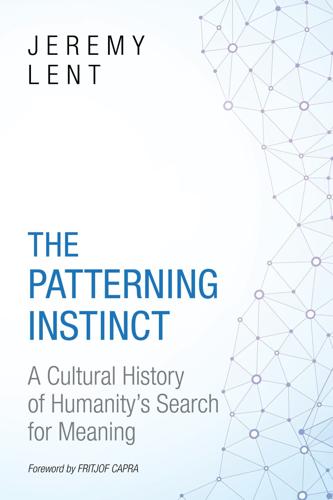
The Patterning Instinct: A Cultural History of Humanity's Search for Meaning
by
Jeremy Lent
Published 22 May 2017
Randers's book forecasts that Pakistan will run out of resources “well before 2052,” leading to increased internal conflicts, which could be especially perilous given the country's nuclear arsenal.70 Along with the human catastrophe of failed states and the misery of billions in overwhelmed coastal megacities, the nonhuman world will be suffering its own form of collapse. Natural ecosystems will be reduced to islands of conservation habitats surrounded by vast agribusiness plantations and urban sprawl. Tropical rain forests will only survive as degraded, shrinking remnants in national parks. Cameron and Jude might not, however, consider this situation as gravely as we do, given their reduced expectation of the natural world from shifting baseline syndrome, as well as their ability to experience vastly enhanced virtual-reality immersions in wildlife reservations, enabling them to feel closer to nature in some ways than do many urban residents in today's world.71 On the other hand, might Cameron and Jude be more profoundly disturbed by the convulsions of their world than an equivalent couple in today's society would be?
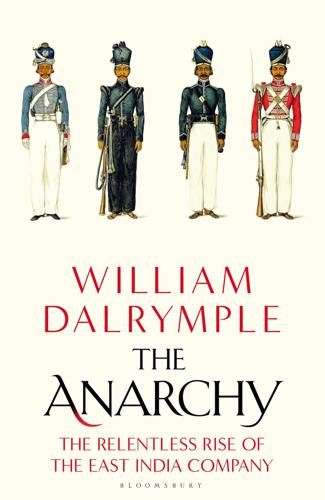
The Anarchy: The Relentless Rise of the East India Company
by
William Dalrymple
Published 9 Sep 2019
Not for nothing are so many English words connected with weaving – chintz, calico, shawl, pyjamas, khaki, dungarees, cummerbund, taffetas – of Indian origin.44 It was certainly responsible for a much larger share of world trade than any comparable zone and the weight of its economic power even reached Mexico, whose textile manufacture suffered a crisis of ‘de-industrialisation’ due to Indian cloth imports.45 In comparison, England then had just 5 per cent of India’s population and was producing just under 3 per cent of the world’s manufactured goods.46 A good proportion of the profits on this found its way to the Mughal exchequer in Agra, making the Mughal Emperor, with an income of around £100 million,* by far the richest monarch in the world. The Mughal capitals were the megacities of their day: ‘They are second to none either in Asia or in Europe,’ thought the Jesuit Fr Antonio Monserrate, ‘with regards either to size, population, or wealth. Their cities are crowded with merchants, who gather from all over Asia. There is no art or craft which is not practised there.’ Between 1586 and 1605, European silver flowed into the Mughal heartland at the astonishing rate of 18 metric tons a year, for as William Hawkins observed, ‘all nations bring coyne and carry away commodities for the same’.47 For their grubby contemporaries in the West, stumbling around in their codpieces, the silk-clad Mughals, dripping in jewels, were the living embodiment of wealth and power – a meaning that has remained impregnated in the word ‘mogul’ ever since.
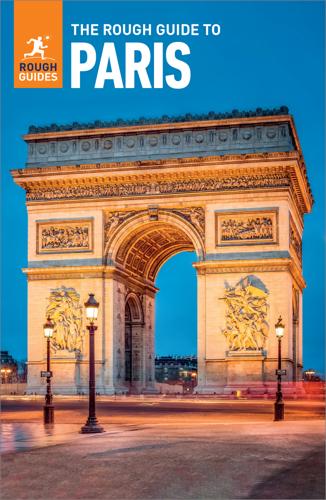
The Rough Guide to Paris
by
Rough Guides
Published 1 May 2023
Right-wing interior minister, Nicolas Sarkozy, declares a state of emergency. 2007 As Nicolas Sarkozy becomes president, Mayor Delanoë continues his greening of Paris: bus and cycle lanes appear everywhere, as do the new Vélib’ rental bikes. Smokers are banished from cafés and restaurants. 2009 Paris contemplates its future with an exhibition of architectural visions for the green mega-city to come, dubbed ‘Le Grand Paris’. 2012 Disenchanted with Sarkozy, French voters elect Socialist François Hollande as president, but rue their choice when Hollande fails to tackle the country’s economic woes. 2015 Paris is rocked by two major terror attacks: in January, jihadist militants kill seventeen people, and in November, Islamic State terrorists kill a hundred and thirty people. 2017 Newcomer Emmanuel Macron of the centrist En Marche!

The Children of the Sky
by
Vernor Vinge
Published 11 Oct 2011
The Tropics had been in the whole disk images only, and there had been only a few breaks in the jungle cloud cover, but, “What we saw back then was not so crowded and somehow—well, it looked simpler.” She watched silently for a moment, wondering. Down Here there was no possibility that the Choir itself was super-intelligent. For that matter, there wasn’t even the communication technology to support wide-area cognition: Mindsounds would take minutes to percolate across the megacity. And yet, there was some form of group activity. The mob seemed to have greater and lesser densities, and not just where Tines gathered around the piles of rotting vegetation that filled many of the smaller plazas. There were places where she could see the ground, where members were separated by meters of empty space.

The Evolutionary Void
by
Peter F. Hamilton
Published 18 Aug 2010
Even after the development of Higher culture and ANA, the wormhole network was maintained, giving it a strategic importance above most Inner worlds. As such, eight River-class and two Capital-class warships were patrolling the star system. Planetary defenses were at condition-one alert, with powerful force fields covering the wormhole generators and transfer stations along with the megacity. After waiting for three minutes to confirm that no sensors had located the ship, the Delivery Man ordered it to fly in to the Leo Twins. They were the companions to Alpha Leonis: Little Leo, an orange dwarf, around which a red dwarf, Micro Leo, orbited. Scanning them with passive sensors, he found something else there.
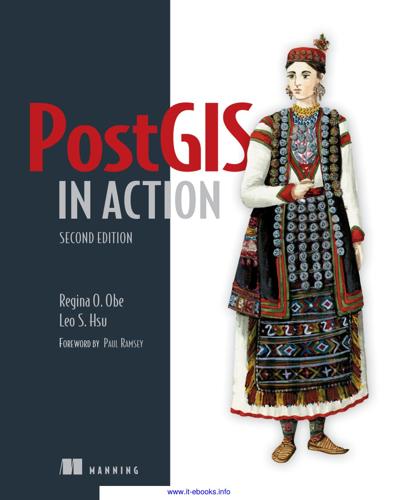
PostGIS in Action, 2nd Edition
by
Regina O. Obe
and
Leo S. Hsu
Published 2 May 2015
When you want to load these in an R session, you run the command load("filepath"). Listing 16.4 Saving PostgreSQL data in an R data format with PL/R CREATE OR REPLACE FUNCTION ch16.save_places_rdata() RETURNS text AS $$ places_mega <<- pg.spi.exec(" SELECT name, latitude, longitude FROM ch16.places WHERE megacity = 1 ") Store results in R variables B nb <<- pg.spi.exec(" SELECT name, latitude, longitude FROM ch16.places WHERE ST_DWithin(geog,ST_GeogFromText('POINT(7.5 9.0)'),1000000) ") save(places_mega, nb, file="C:/Temp/places.RData") Save variables return("done") to R data file $$ LANGUAGE 'plr'; C In listing 16.4 you create two data sets that contain world places, one based on attributes and one based on a spatial data.frame B.

Goliath: Life and Loathing in Greater Israel
by
Max Blumenthal
Published 27 Nov 2012
The skyscrapers rising up around Tel Aviv lent it the feeling of any other thriving center of capital, but there was something about the city that was truly distinct from anywhere else. For all its trappings of cosmopolitanism, Tel Aviv was intentionally planned to be one of the most ethnically exclusive mega-cities in the world. It may have been situated in the heart of the Middle East, yet Tel Aviv had far fewer Arab residents than Chicago, the largest city in the American Midwest. And Huldai was determined to keep it that way, not only in a demographic sense by, for instance, supporting the construction of the separation wall that obstructed Palestinian workers from reaching Tel Aviv from the West Bank, but in a symbolic sense as well.
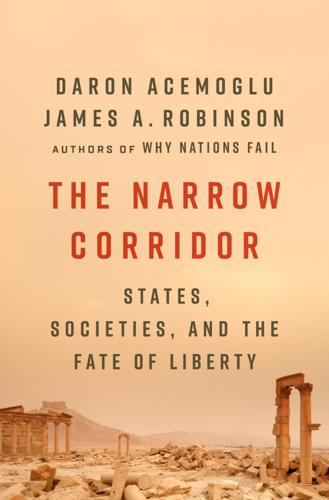
The Narrow Corridor: States, Societies, and the Fate of Liberty
by
Daron Acemoglu
and
James A. Robinson
Published 23 Sep 2019
Davison, Lee, Tim Hitchcock, Tim Keirn, and Robert B. Shoemaker, eds. (1992). Stilling the Grumbling Hive: Response to Social and Economic Problems in England, 1689–1750. New York: Palgrave Macmillan. Dawisha, Adeed (2009). Iraq: A Political History. Princeton, NJ: Princeton University Press. de Gramont, Diane (2014). “Constructing the Megacity—The Dynamics of State-Building in Lagos, Nigeria, 1999–2013.” Unpublished MPhil dissertation in government, University of Oxford. Dean, Trevor (1987). Land and Power: Ferrara Under the Este, 1350–1450. New York: Cambridge University Press. ——— (1999). “The Rise of the Signori.” In The New Cambridge Medieval History, edited by David Abulafia, vol. 5, 1198–1300.

Lonely Planet Turkey
by
Lonely Planet
While there are many constants throughout Turkey and the food is certainly excellent everywhere, this is an incredibly diverse country offering varied experiences. Each region has its own charms, so choose wisely and you could find yourself hiking across snowy mountains in wild northeastern Anatolia, sauntering through cosmopolitan İstanbul or sunbathing on a Mediterranean beach. Regions at a Glance İstanbul Imperial Grandeur The megacity formerly known as Constantinople and Byzantium was the capital of a series of empires. The Aya Sofya, a church-turned-mosque-turned-museum-mosque, is the grandest remnant of the Byzantine Empire; Ottoman landmarks include the Blue Mosque and Topkapı Palace. Beyoğlu Bars Between the dusk and dawn calls to prayer, up-for-it crowds swirl through Beyoğlu’s hole-in-the-wall cocktail bars, rooftop watering holes, pedestrian precincts and bohemian nightclubs.

Reamde
by
Neal Stephenson
Published 19 Sep 2011
Not fast enough to make a difference. “Sorry,” Richard said, as they were making eye contact. Then he pulled the trigger and blew Jabari’s head off. SEAMUS HAD DEVELOPED a set of instincts around timing and schedule that owed a lot to his upbringing in Boston and his postings in teeming Third World megacities such as Manila, which was to say that he always expected it would take hours to get anywhere. Those habits led him comically astray in Coeur d’Alene at six thirty in the morning. They reached the municipal airport in less time than it took the SUV’s windows to defog. The chopper place was just inside the entrance.

The Prize: The Epic Quest for Oil, Money & Power
by
Daniel Yergin
Published 23 Dec 2008
It is oil that makes possible where we live, how we live, how we commute to work, how we travel—even where we conduct our courtships. It is the lifeblood of suburban communities. Oil (and natural gas) are the essential components in the fertilizer on which world agriculture depends; oil makes it possible to transport food to the totally non-self-sufficient megacities of the world. Oil also provides the plastics and chemicals that are the bricks and mortar of contemporary civilization, a civilization that would collapse if the world's oil wells suddenly went dry. For most of this century, growing reliance on petroleum was almost universally celebrated as a good, a symbol of human progress.

The Boundless Sea: A Human History of the Oceans
by
David Abulafia
Published 2 Oct 2019
Lothal possessed a substantial dockyard and several anchors have been found there. It traded in several directions, for there were contacts with the Neolithic peoples living further south along the west coast of India as well as with the Persian Gulf.40 So much attention has concentrated on the mystery of how the two highly organized mega-cities came to be built along the Indus river system that rather little interest has been shown in other places, and even the assumption that these were the twin capitals of a single empire is pleasant speculation. Rigid central control was in place, for, as the archaeologist Stuart Piggott observed, the size of bricks used to build the two great cities, the highly standardized pottery, and the weights and measures show ‘absolute uniformity’: ‘there is a terrible efficiency about the Harappā civilization which recalls all the worst of Rome’, while he also observed ‘an isolation and stagnation hard to parallel in any known civilization of the Old World’.
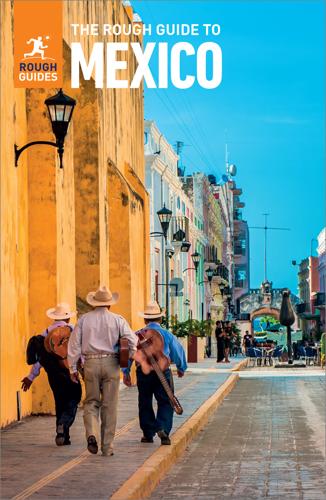
The Rough Guide to Mexico
by
Rough Guides
Published 15 Jan 2022
See page 111 7 Xochimilco Ride the ancient waterways on flower-festooned boats. See page 112 8 Plaza Garibaldi The frenetic site of massed mariachi bands. See page 127 9 La Merced Explore Mexico City’s largest and most vibrant market. See page 128 Mexico City One of the world’s mega-cities, with more than 25 million people occupying a shallow mountain bowl at over 2400m above sea level, Mexico City has to be seen to be believed. Spreading out beyond the federal district (Distrito Federal) which is supposed to contain it, the city has a vibe which is at once both edgy and yet laid-back and cosmopolitan at the same time.